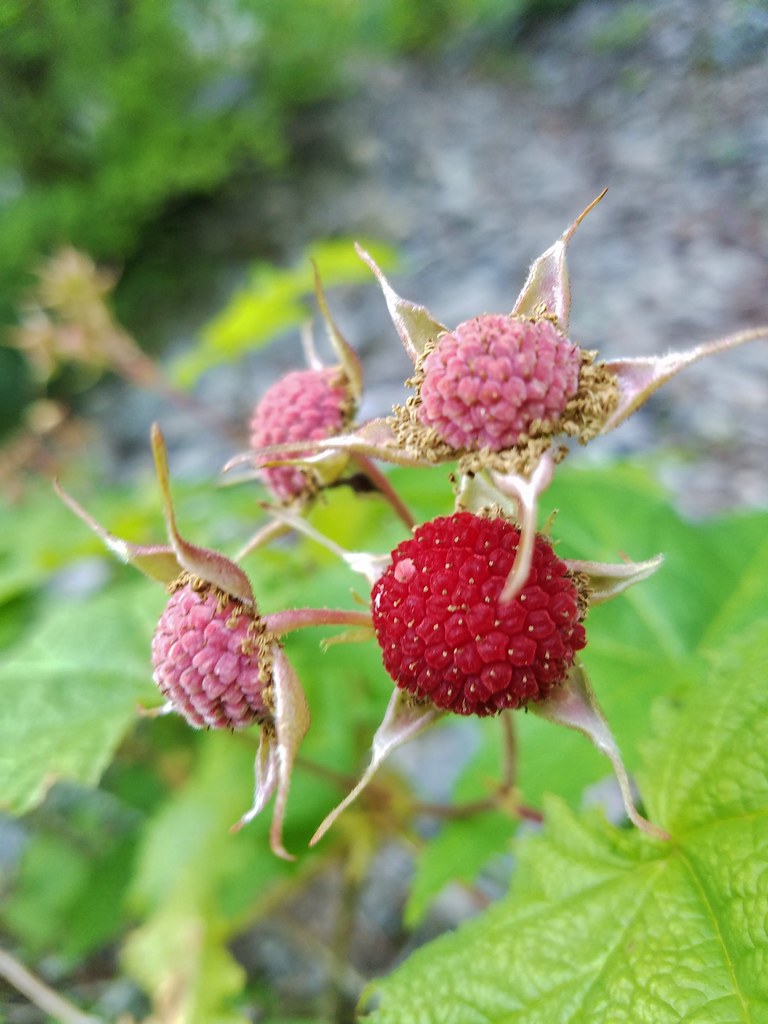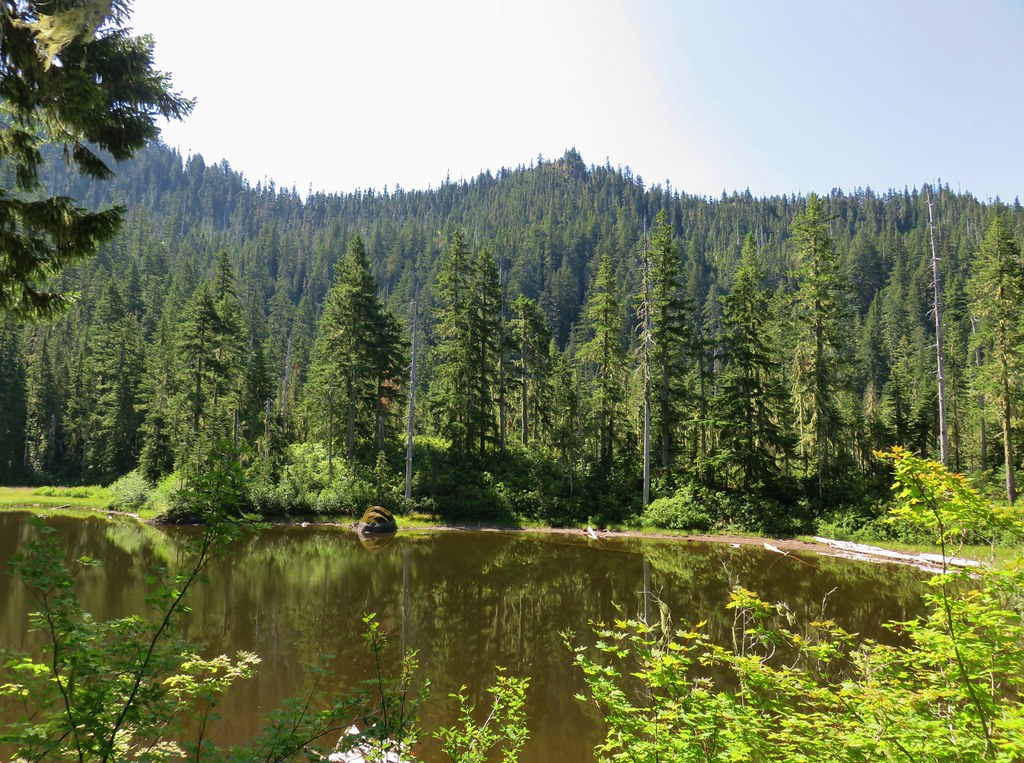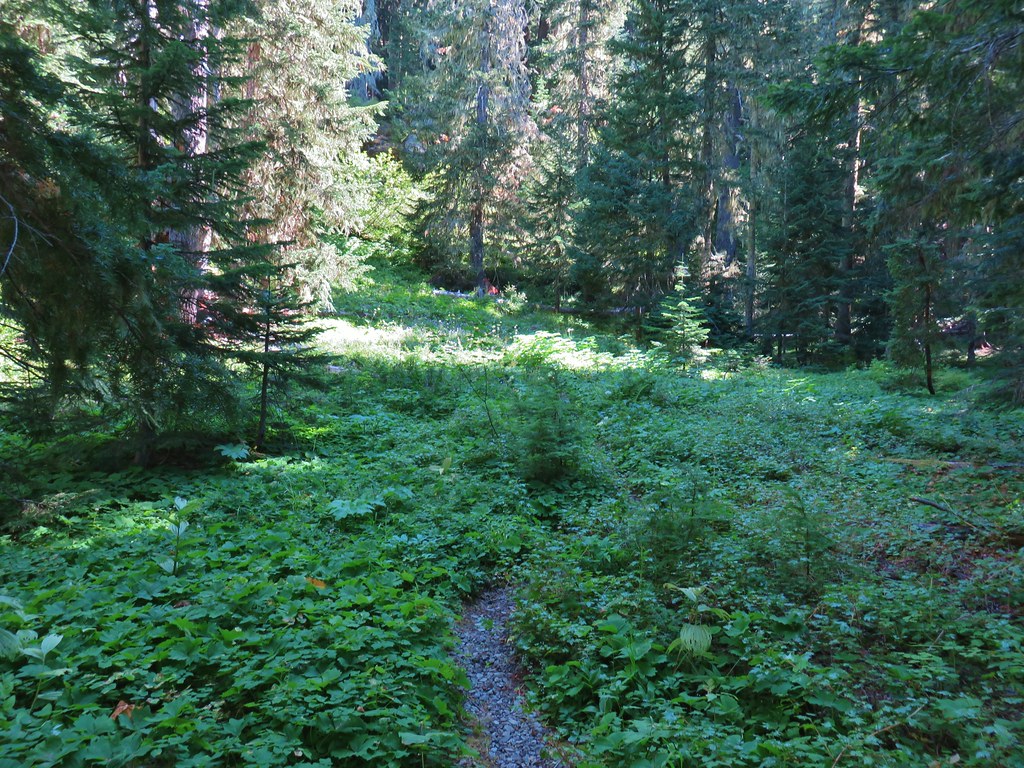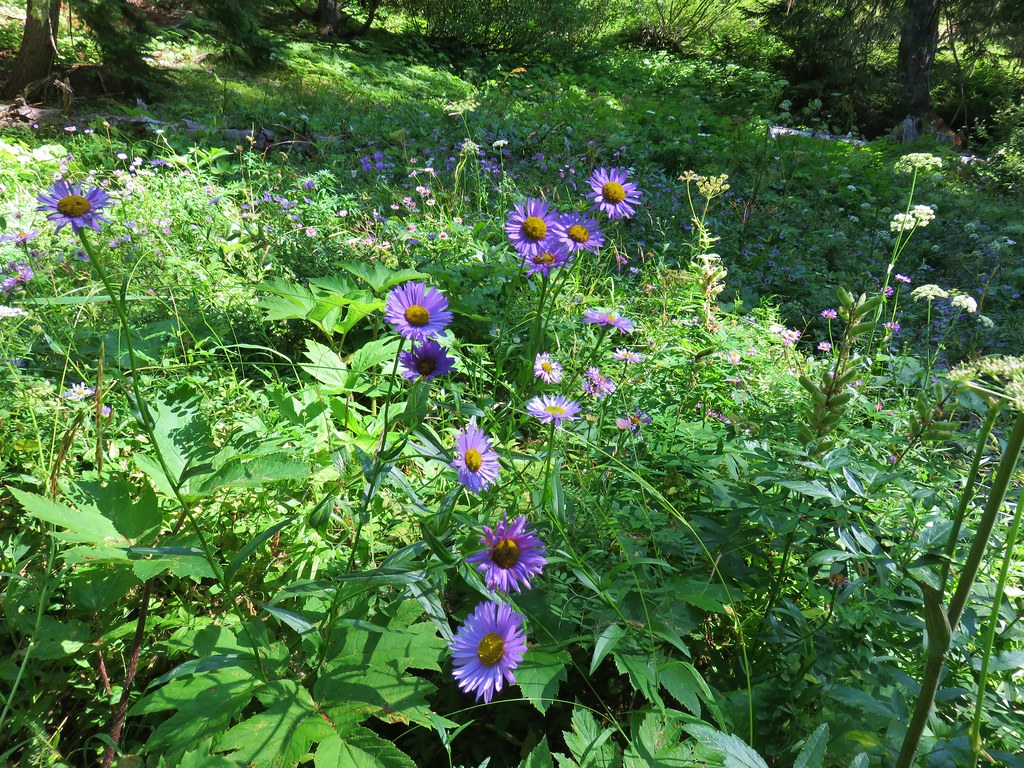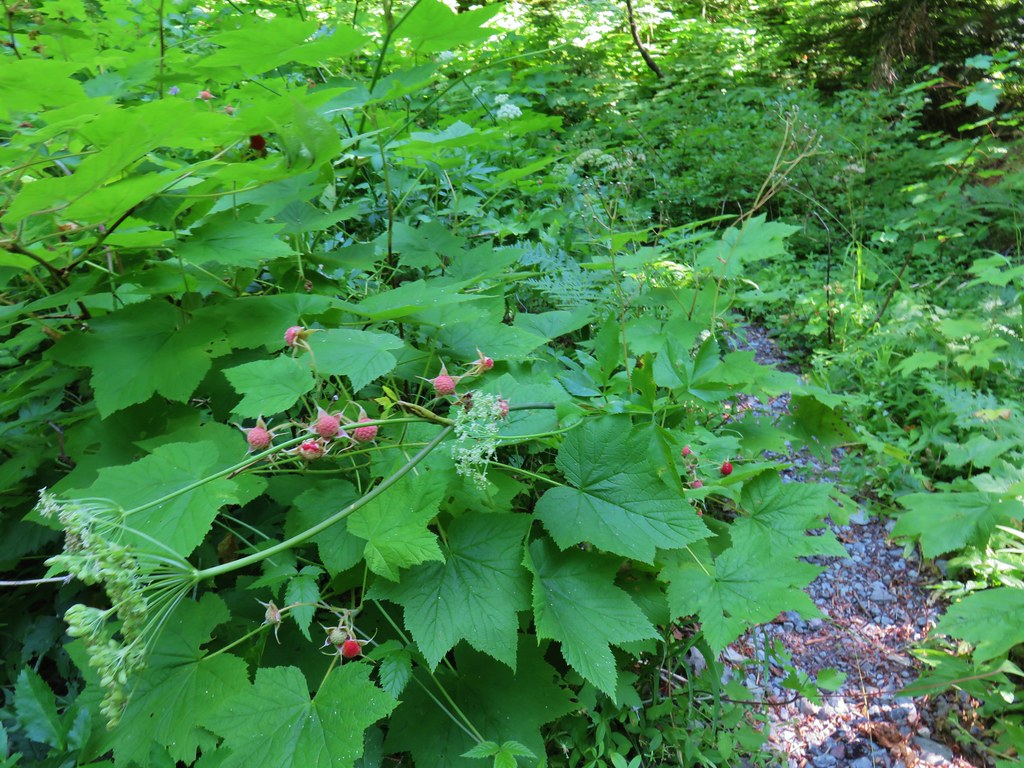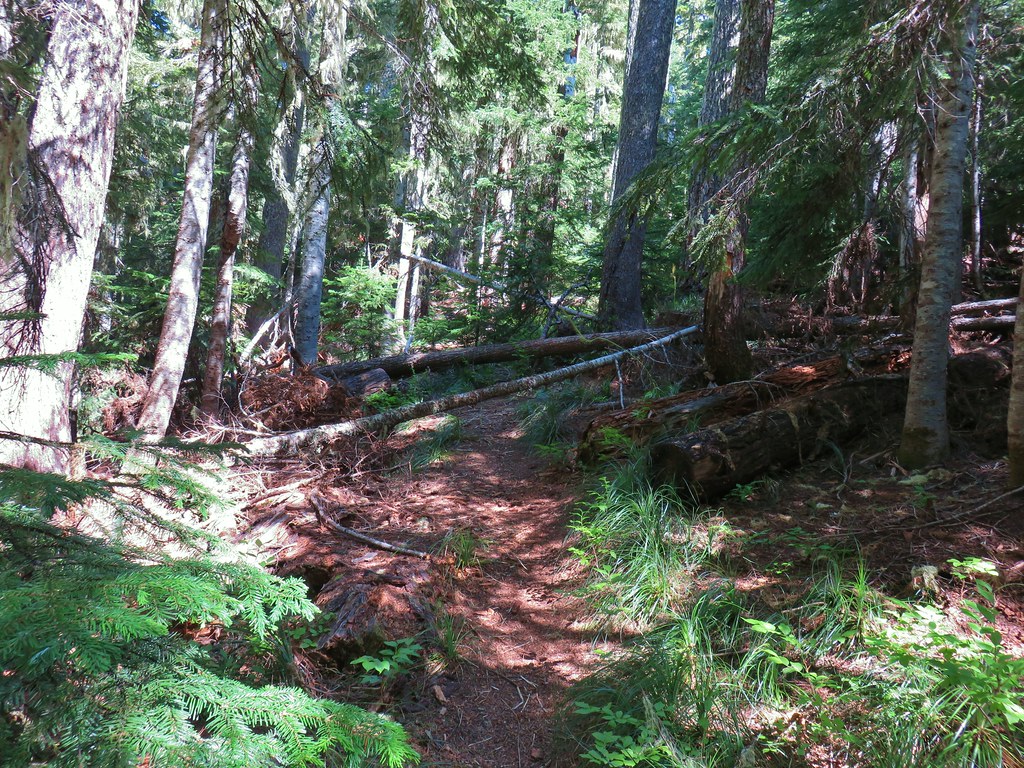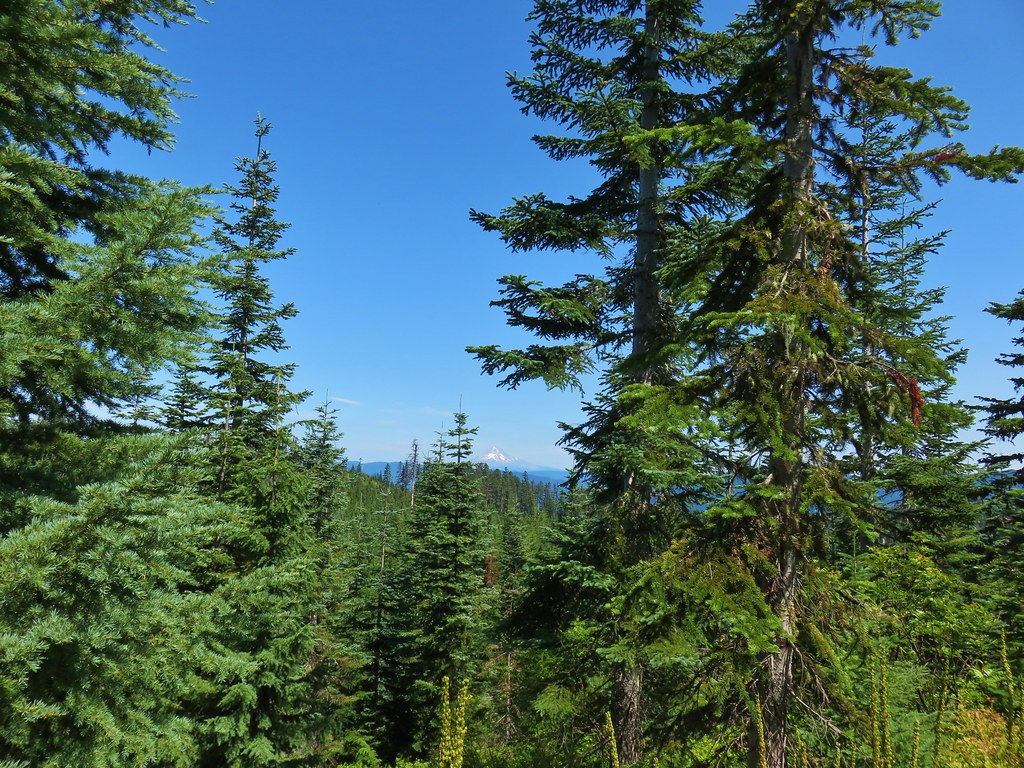Knowing that trails would be busy over the holiday weekend we looked for an option that might provide some solitude and turned to another Matt Reeder hike at BLM managed Criterion Tract (BLM map). Reeder features this hike in his “PDX Hiking 365” guidebook and lists April as the best time to visit. His reasoning is that April to early May is the usually the peak wildflower blooms. With this years blooms running a couple of weeks late we hoped that Memorial Day weekend wouldn’t be too late. I couldn’t find any information other than the map linked above on the BLM website but in addition to Reeder’s entry there is a route featured in the Oregonhikers.org field guide and Sullivan features a route starting along the Deschutes River in his 2022 “100 Hikes Eastern Oregon” guidebook (not the edition we are using for our quest of his featured hikes).
While there are several possible access points we started at the Criterion North Trailhead.

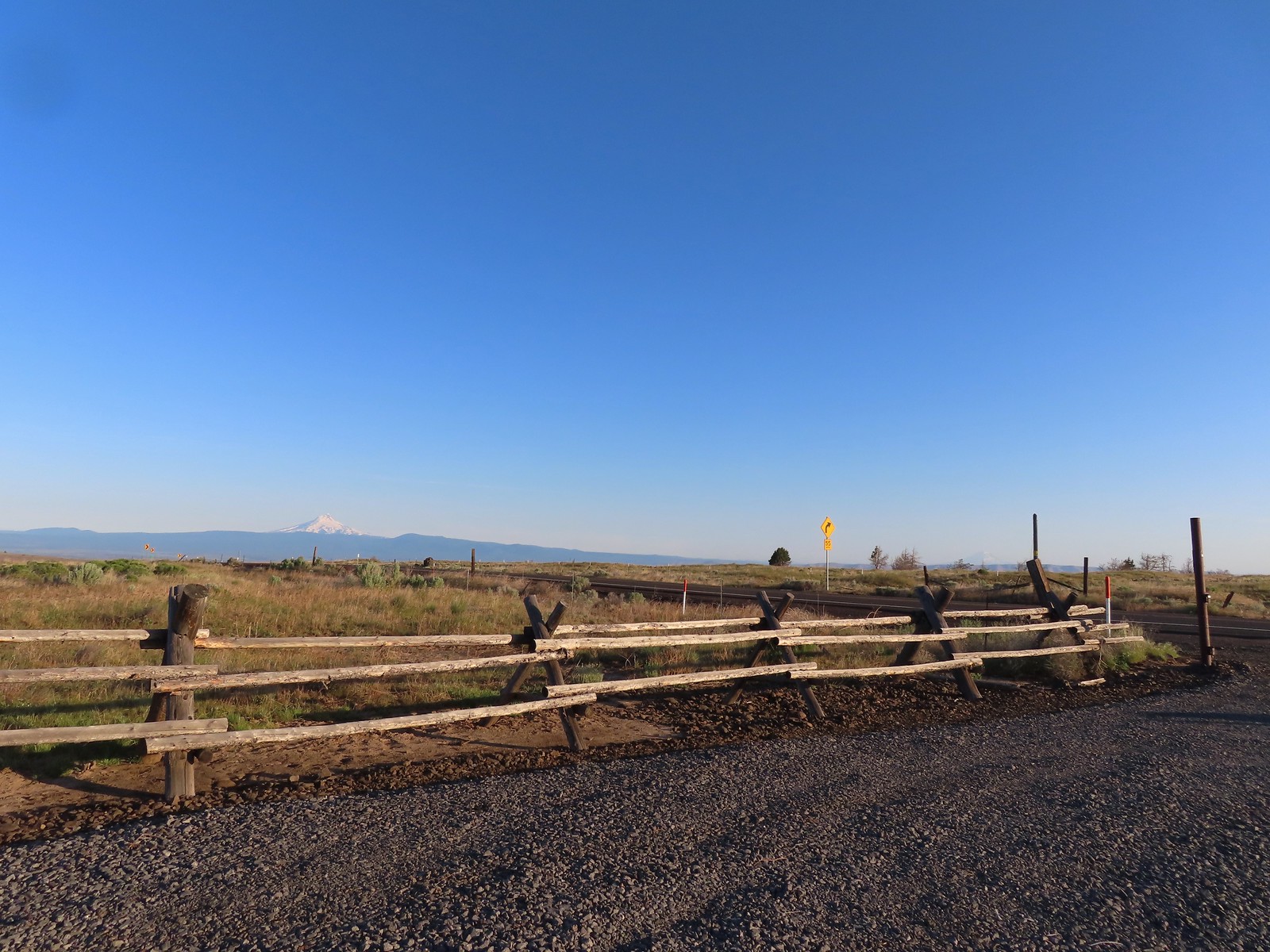 Mt. Hood and Mt. Adams from the trailhead which is the high point of the hike.
Mt. Hood and Mt. Adams from the trailhead which is the high point of the hike.
 Mt. Hood
Mt. Hood
The “trails” here consist of old jeep tracks that are closed to motorized use (other than BLM administrators) and not maintained so some have become faint. We passed through a green gate and onto what the Oregonhikers.org map shows as Criterion Crest Road.
 Cattle sometimes graze in the area and the combination of their hooves with the unmaintained roads makes for some pretty rough surfaces.
Cattle sometimes graze in the area and the combination of their hooves with the unmaintained roads makes for some pretty rough surfaces.
Reeder has you follow this road for nearly four miles before turning downhill through a gate at a faint 4-way junction. He doesn’t mention any other markers along the way but the road passes under a set of power lines, followed by another gate, then the power lines again, a third gate, and passes an abandoned trailer before reaching the 4-way junction. Mountain views stretched from Mt. Bachelor to the South to Mt. Adams in Washington to the North. We saw plenty of wildflowers and a lot of birds as well as deer and elk sign, but we didn’t see any hooved mammals (including cows thankfully).
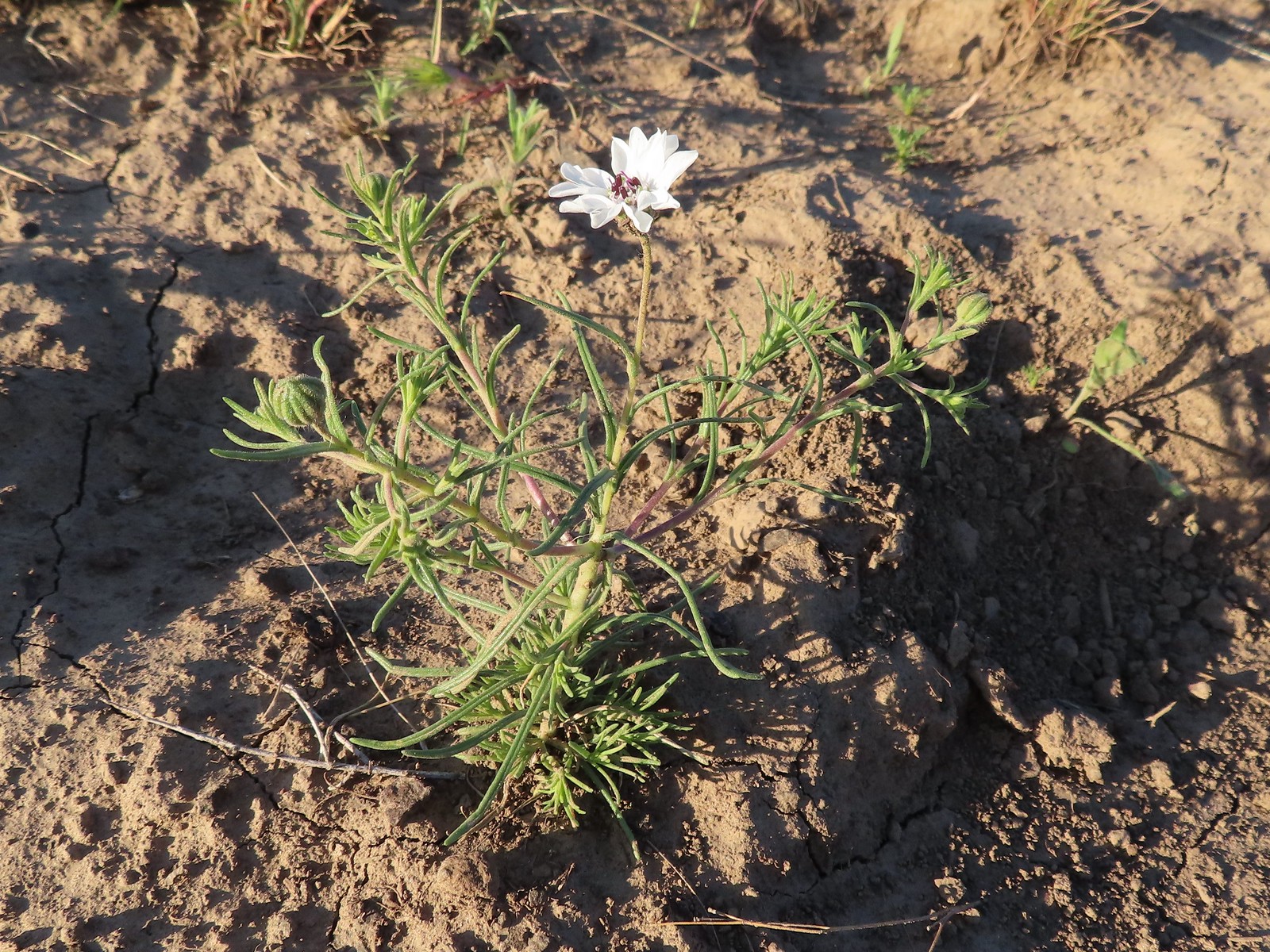 Rough-eyelashweed. There was a lot of this blooming along the road.
Rough-eyelashweed. There was a lot of this blooming along the road.
 A couple of lomatiums.
A couple of lomatiums.
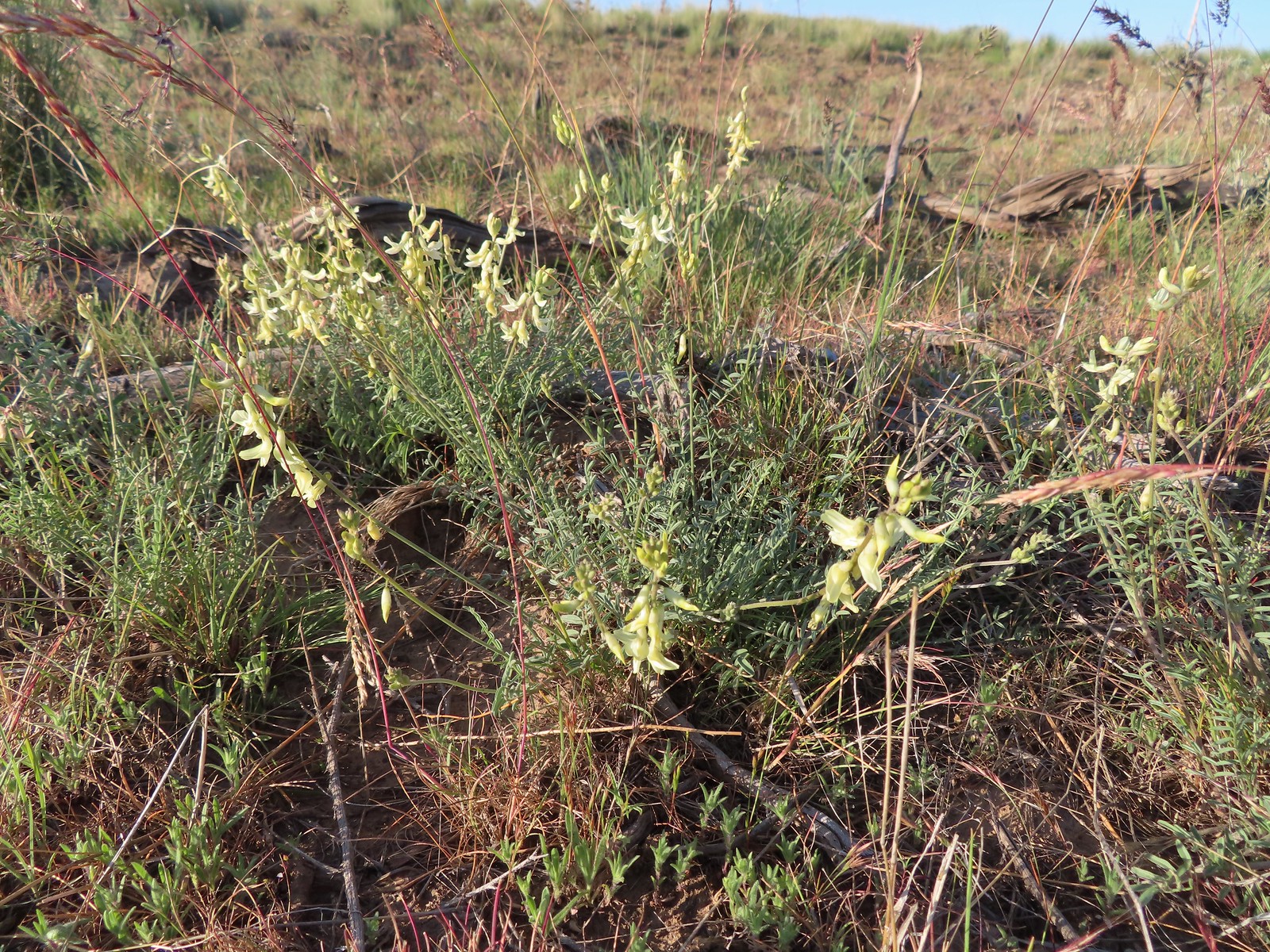 Howell’s milkvetch
Howell’s milkvetch
 Idaho milkvetch
Idaho milkvetch
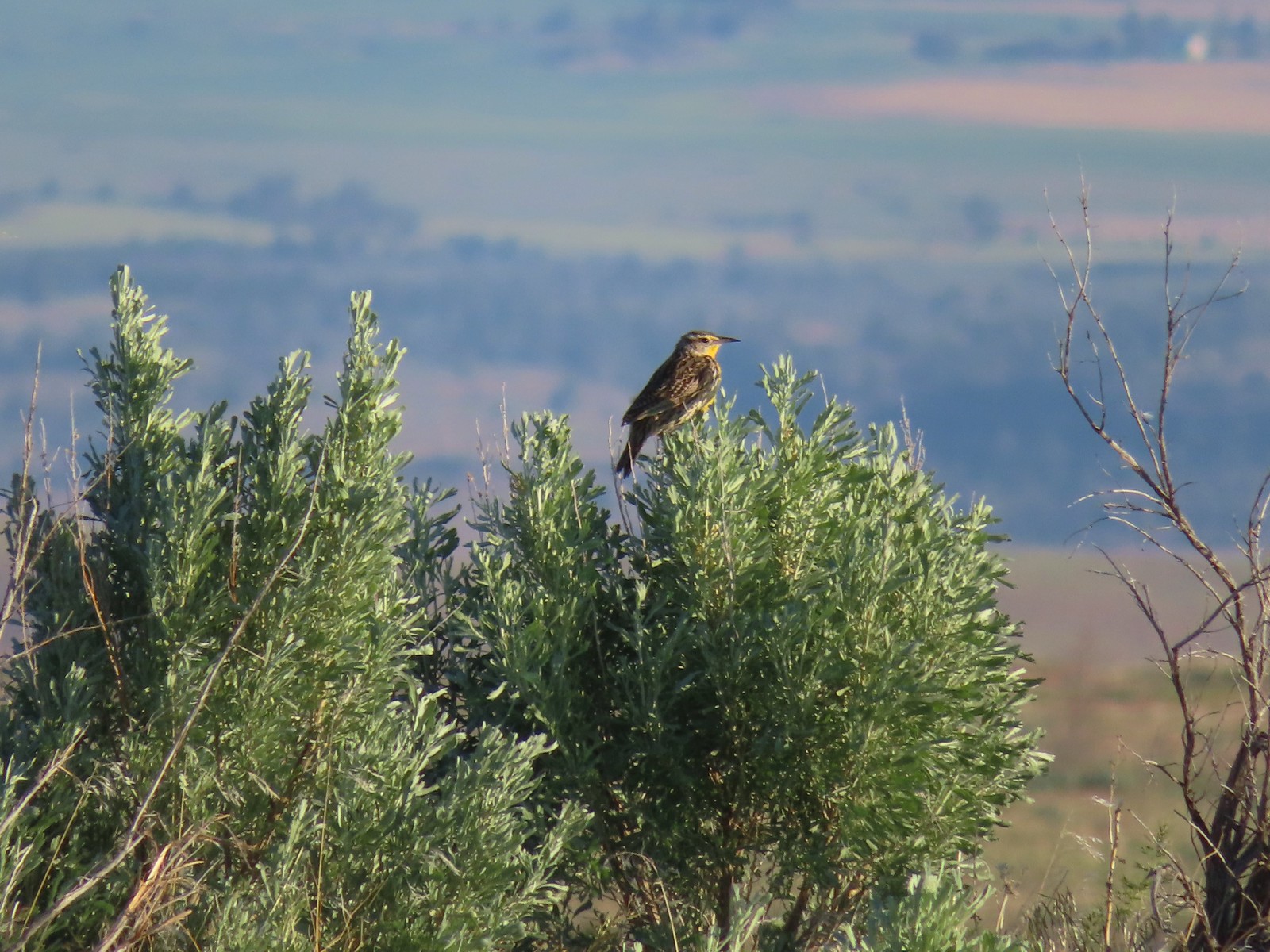 Western meadowlark
Western meadowlark
 A buckwheat
A buckwheat
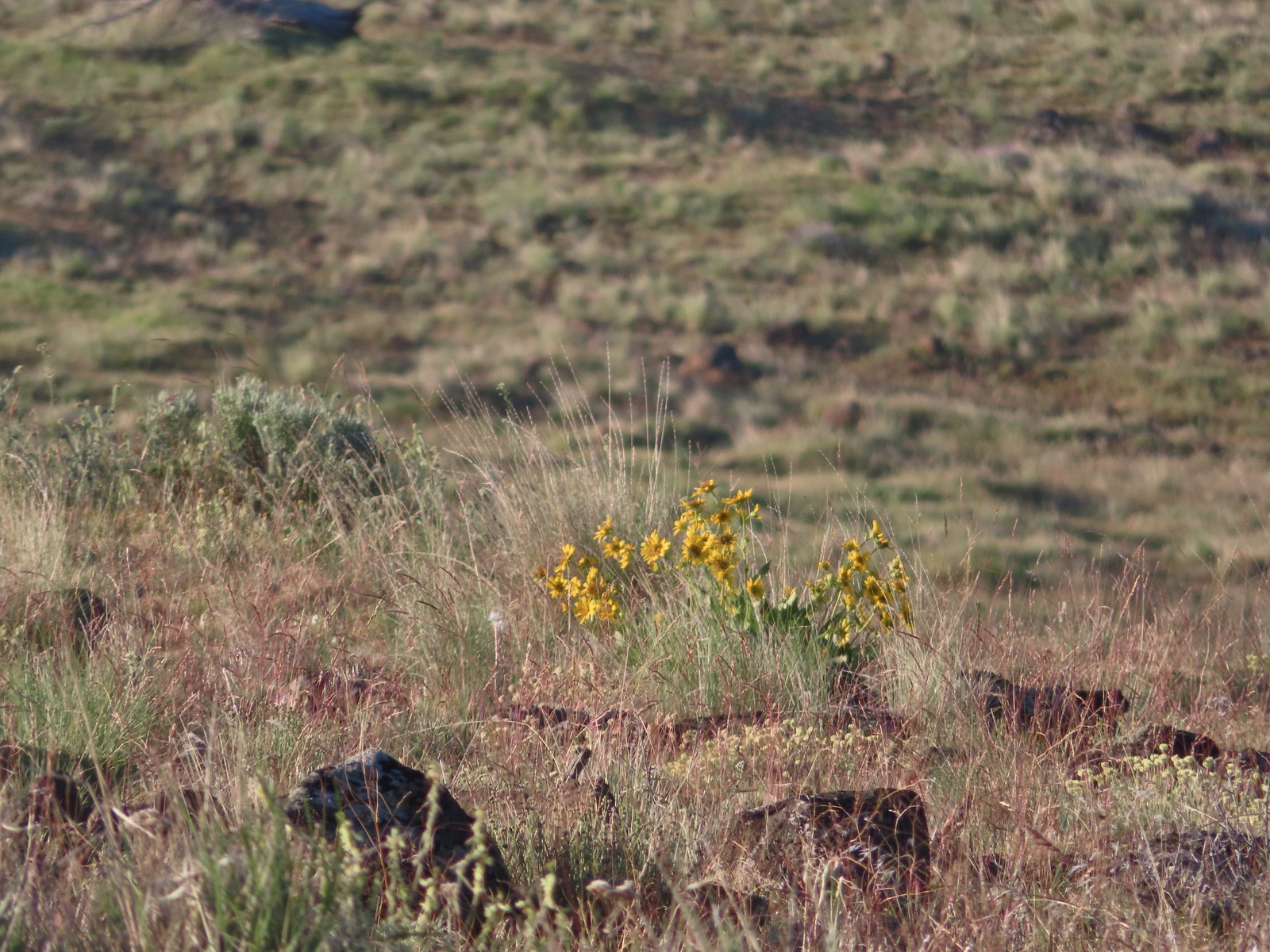 Carey’s balsamroot
Carey’s balsamroot
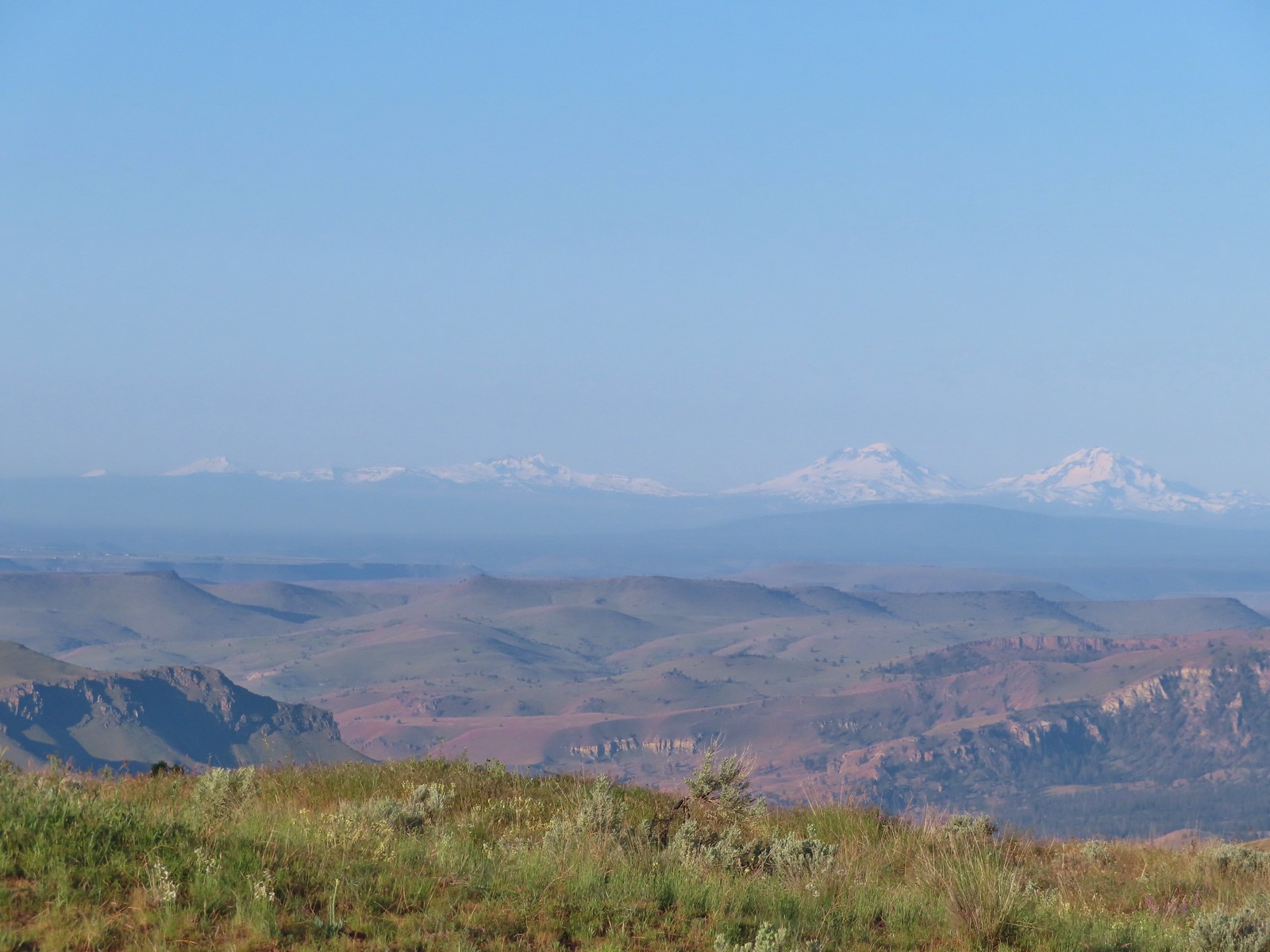 Mt. Bachelor, Broken Top and the Three Sisters
Mt. Bachelor, Broken Top and the Three Sisters
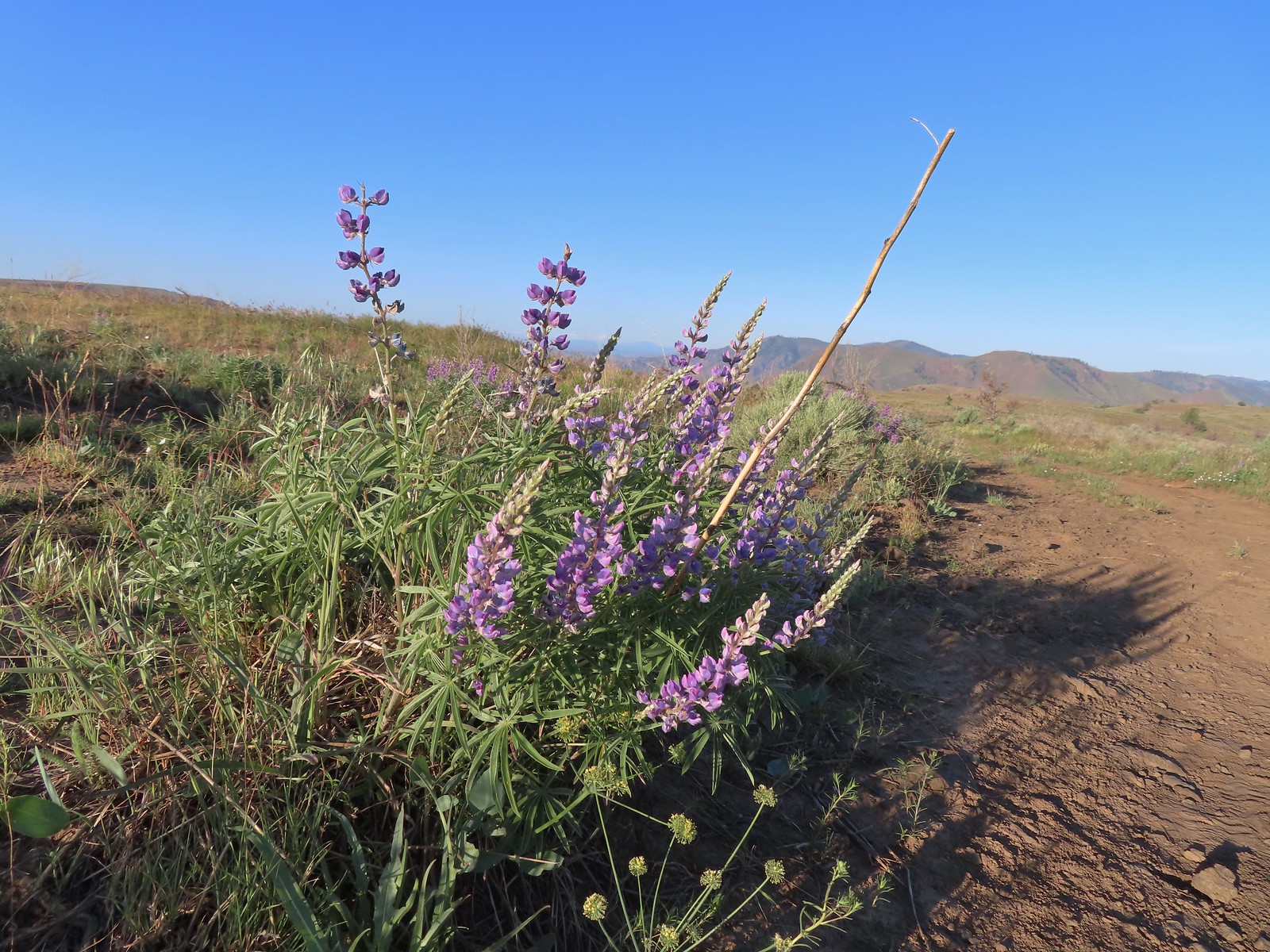 Lupine
Lupine
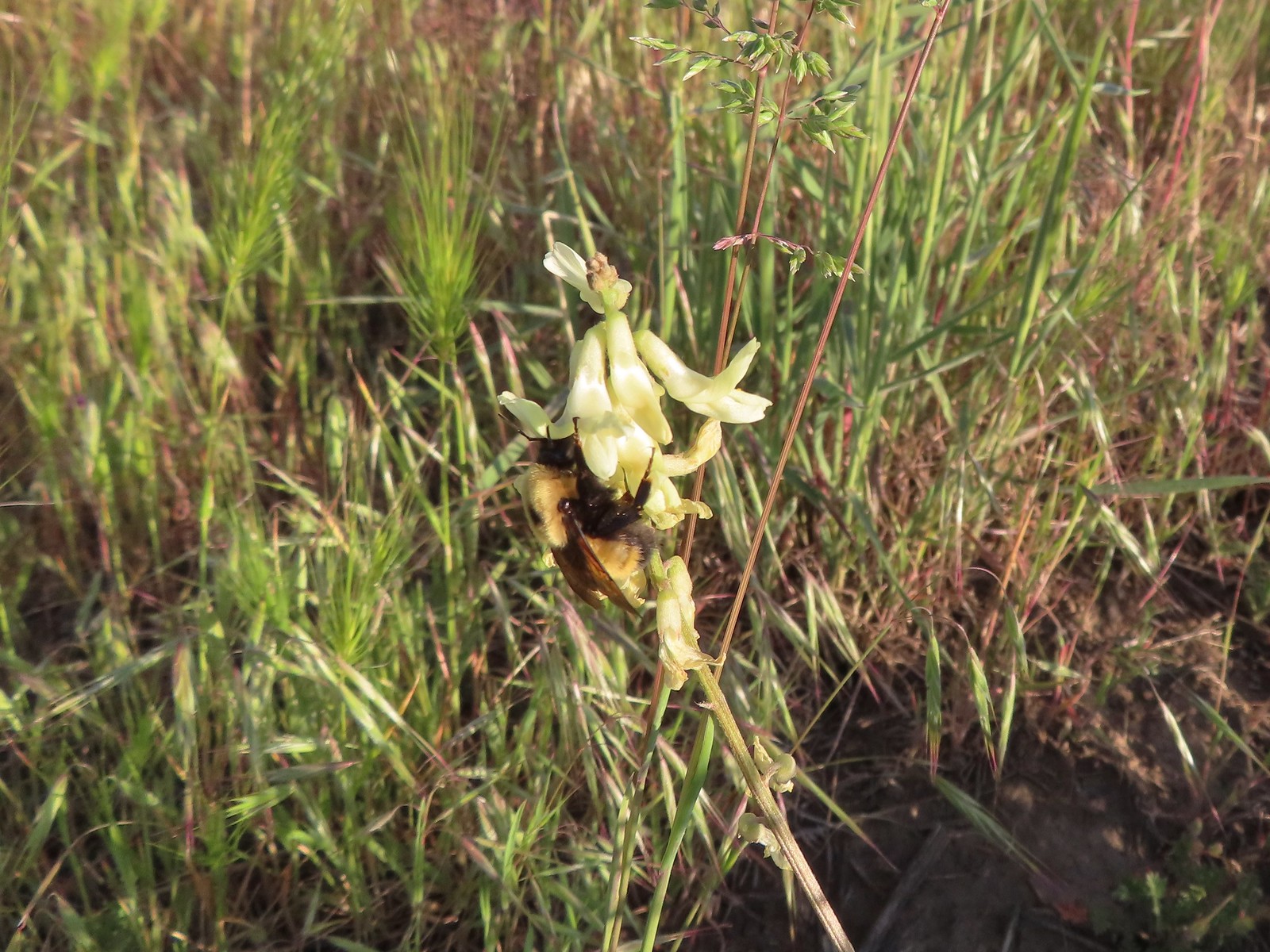 Bumble bee on Howell’s milkvetch
Bumble bee on Howell’s milkvetch
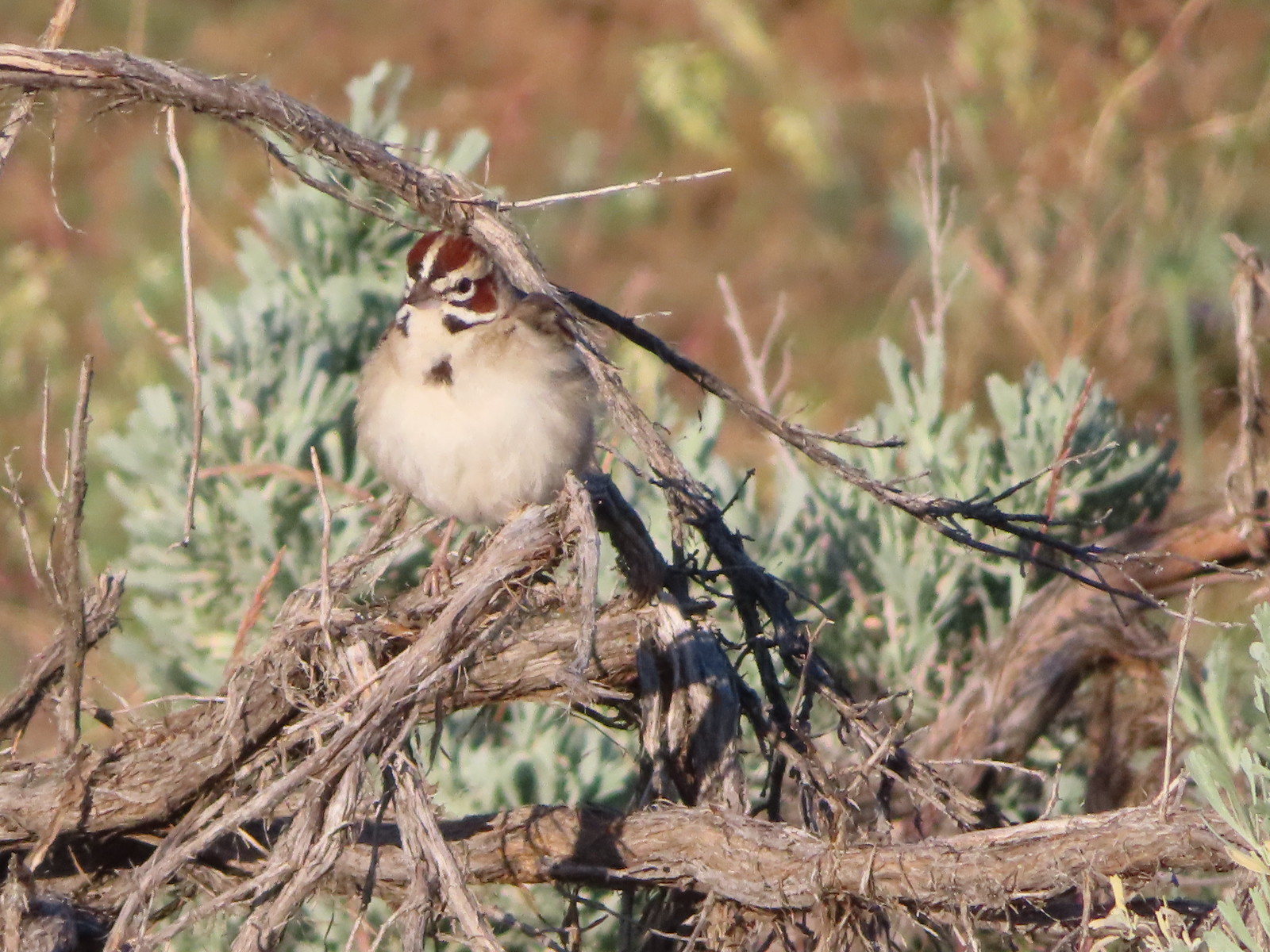 Lark sparrow
Lark sparrow
 We spent a lot of time heading toward Mt. Hood.
We spent a lot of time heading toward Mt. Hood.
 Sparrow?
Sparrow?
 Mt. Adams
Mt. Adams
 Mt. Hood
Mt. Hood
 We were a little too late for the large-head clover.
We were a little too late for the large-head clover.
 Western meadowlark giving a performance.
Western meadowlark giving a performance.
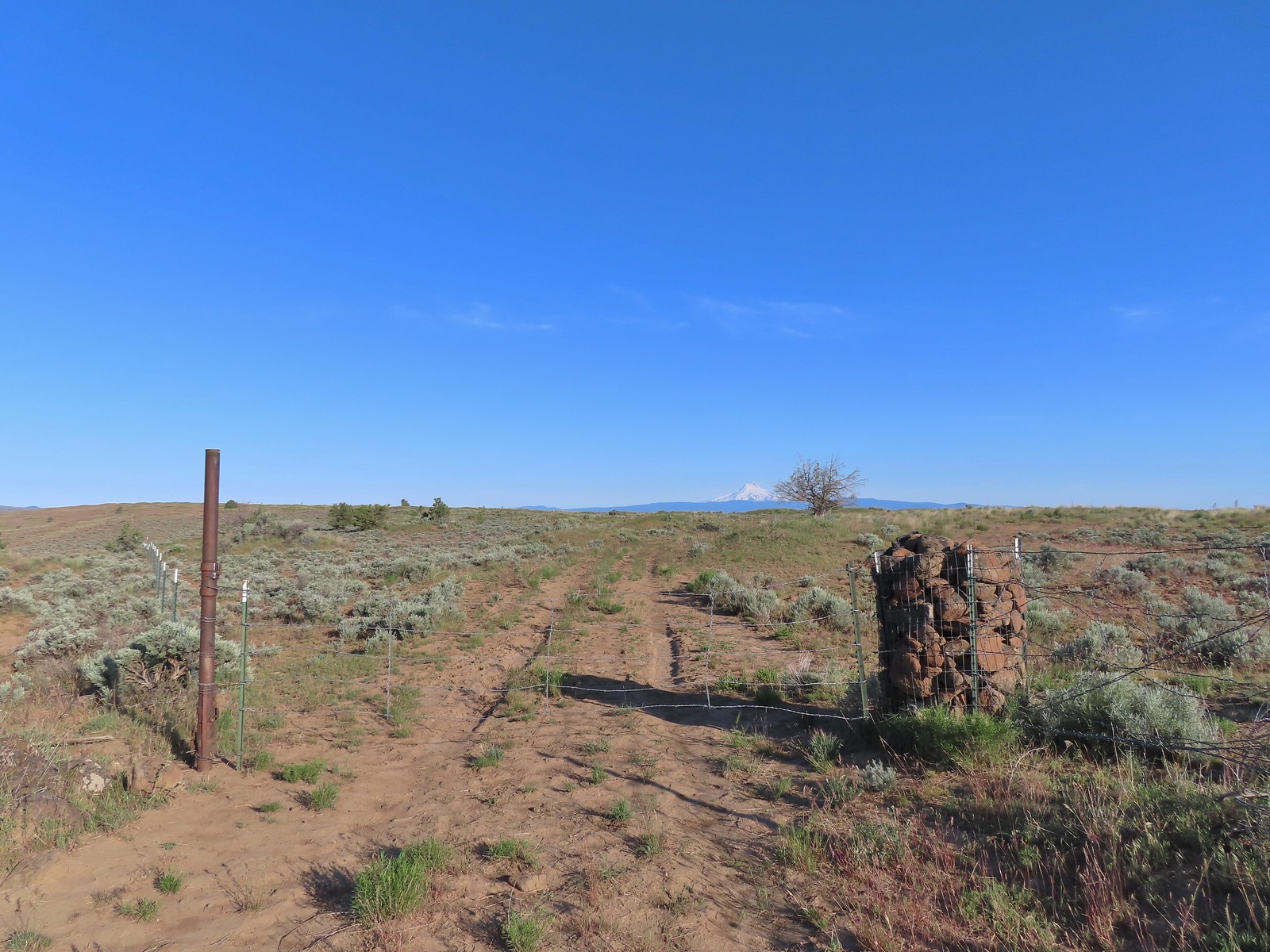 The third gate with Mt. Hood in the distance.
The third gate with Mt. Hood in the distance.
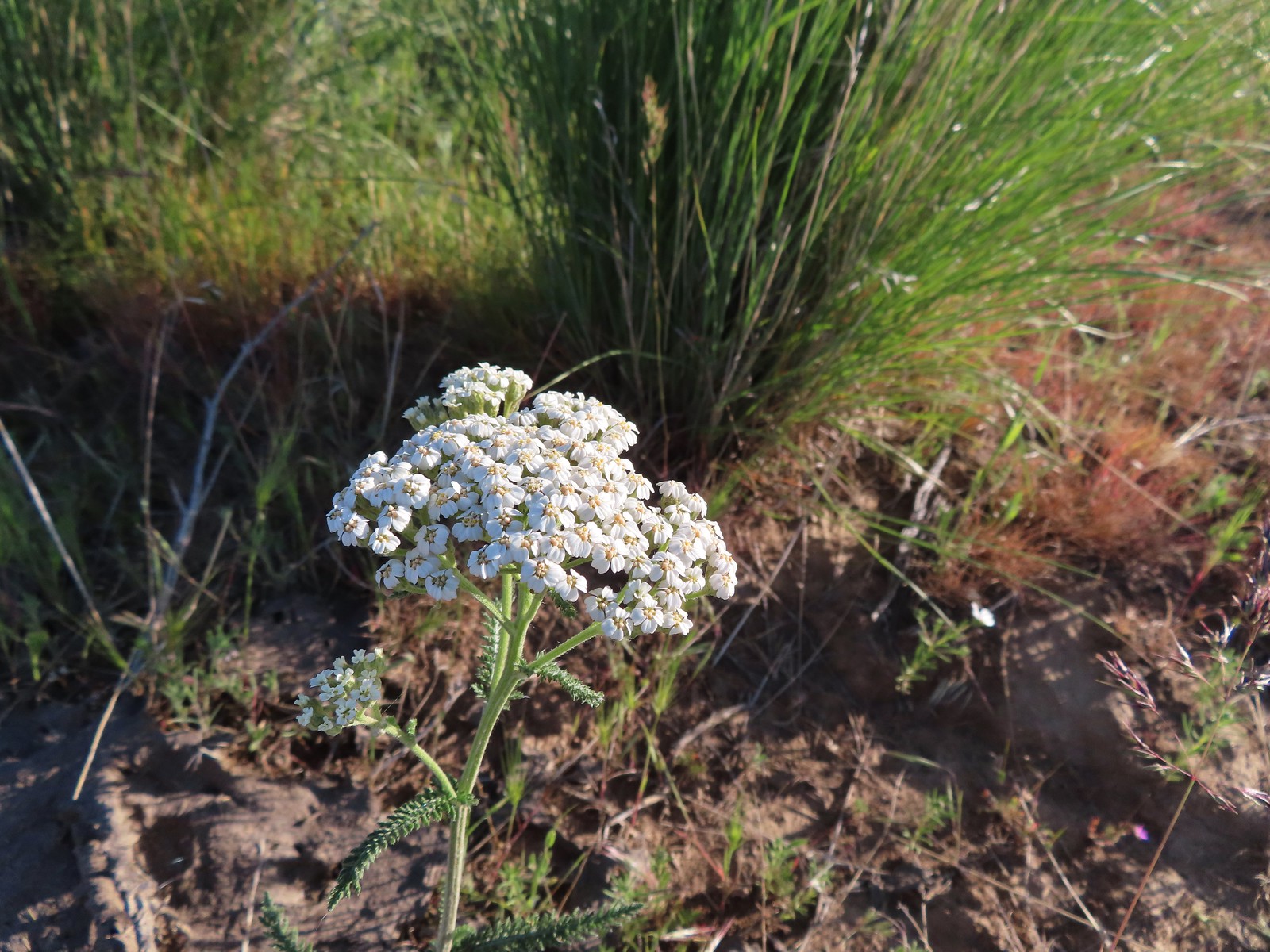 Yarrow
Yarrow
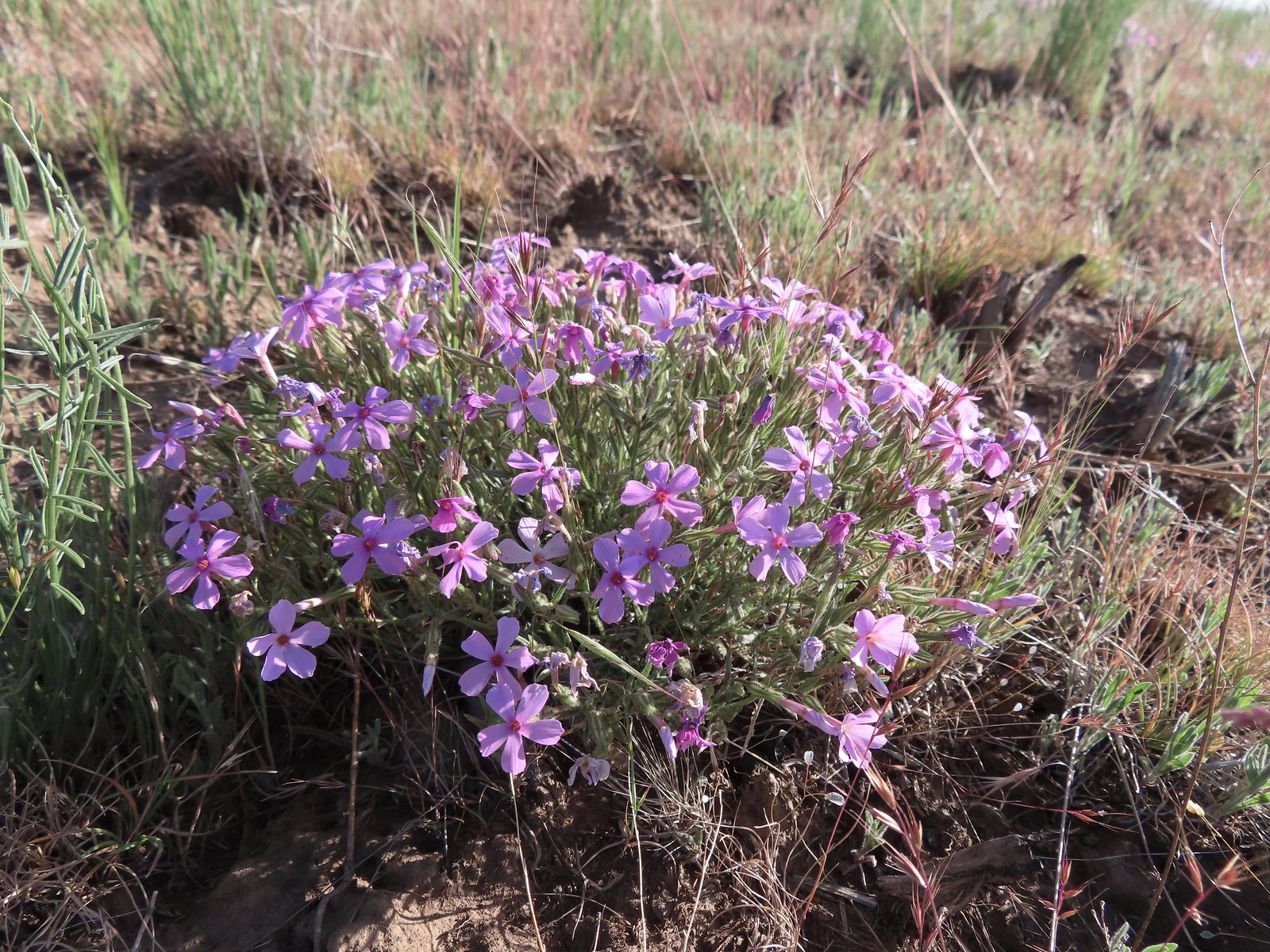 Phlox
Phlox
 The Deschutes River winding through the valley below.
The Deschutes River winding through the valley below.
 Rough eyelashweed and lupine with Mt. Hood behind.
Rough eyelashweed and lupine with Mt. Hood behind.
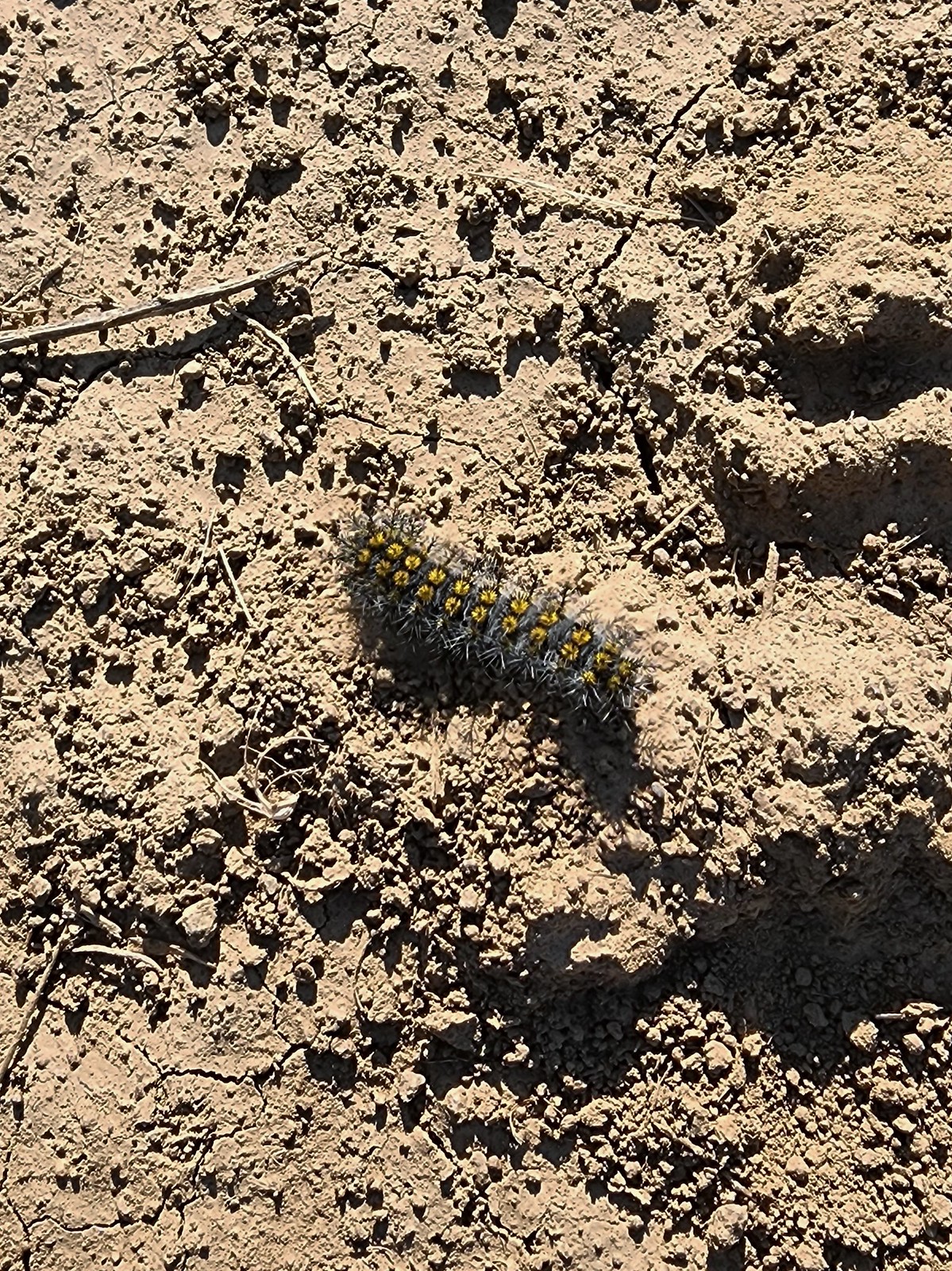 Caterpillar
Caterpillar
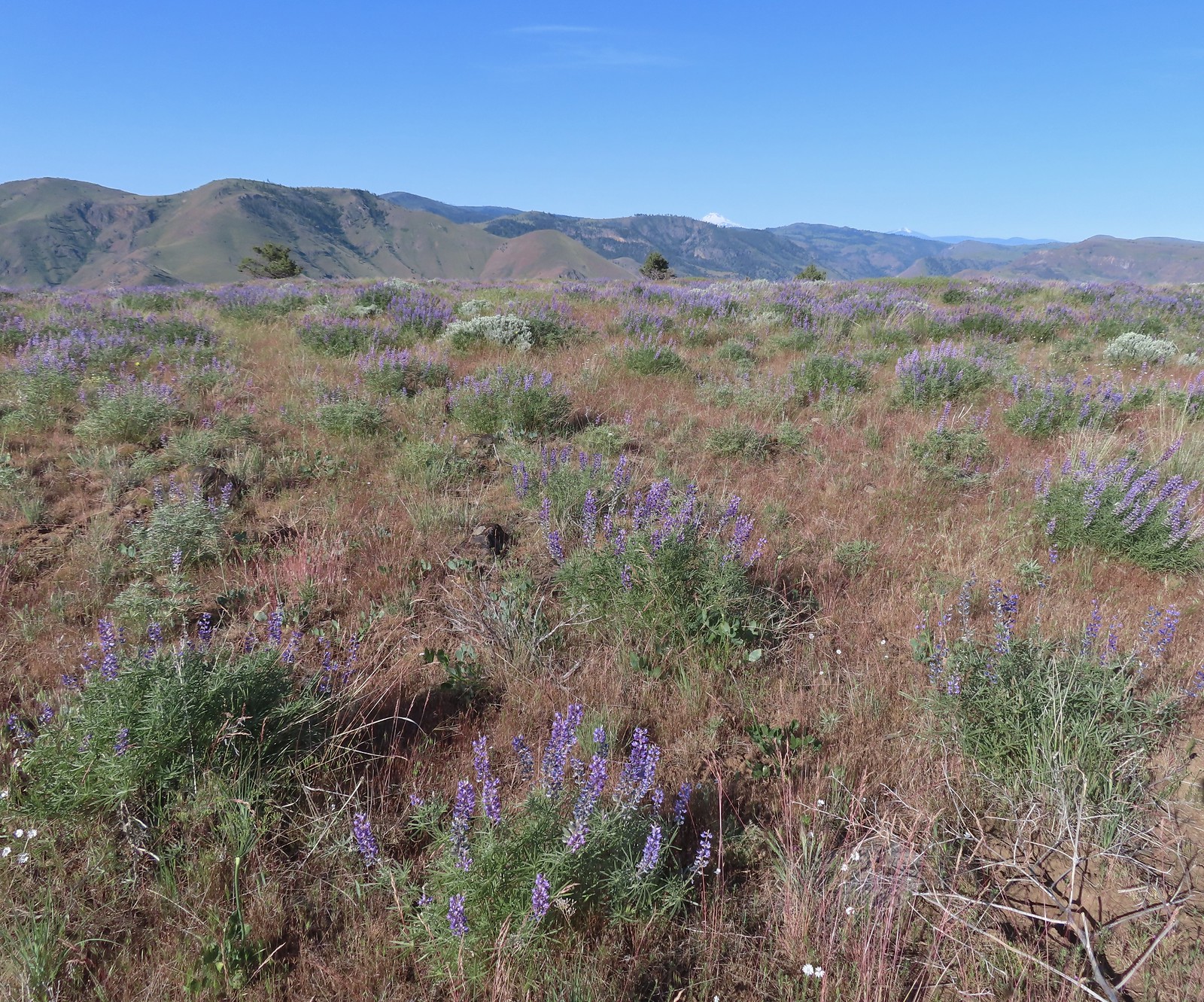 Lupine with Mt. Jefferson in the background.
Lupine with Mt. Jefferson in the background.
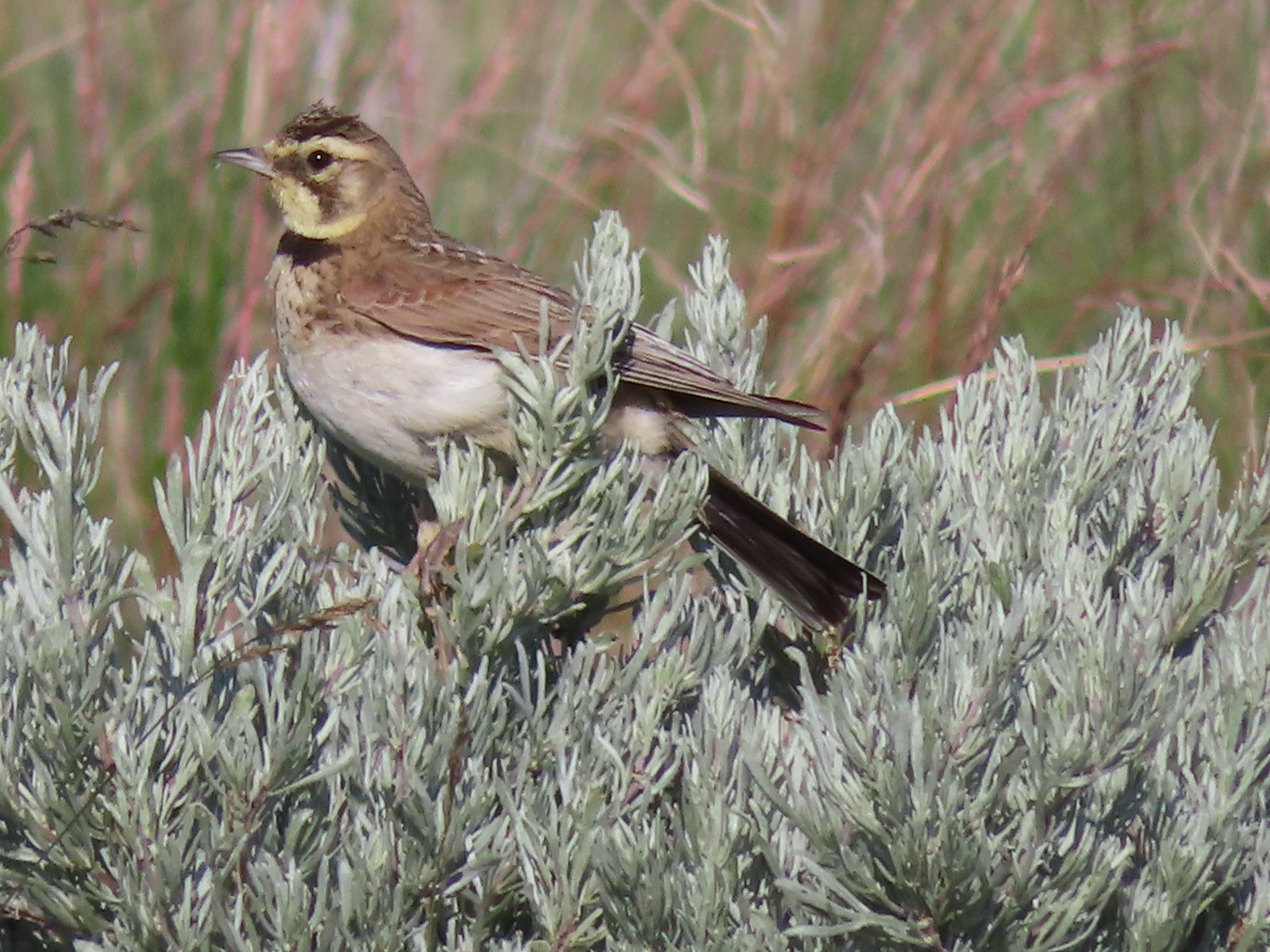 Horned lark
Horned lark
 Mt. Jefferson behind the abandoned trailer.
Mt. Jefferson behind the abandoned trailer.
 Mt. Jefferson was hidden at times but this gap in the hills provided a nice view.
Mt. Jefferson was hidden at times but this gap in the hills provided a nice view.
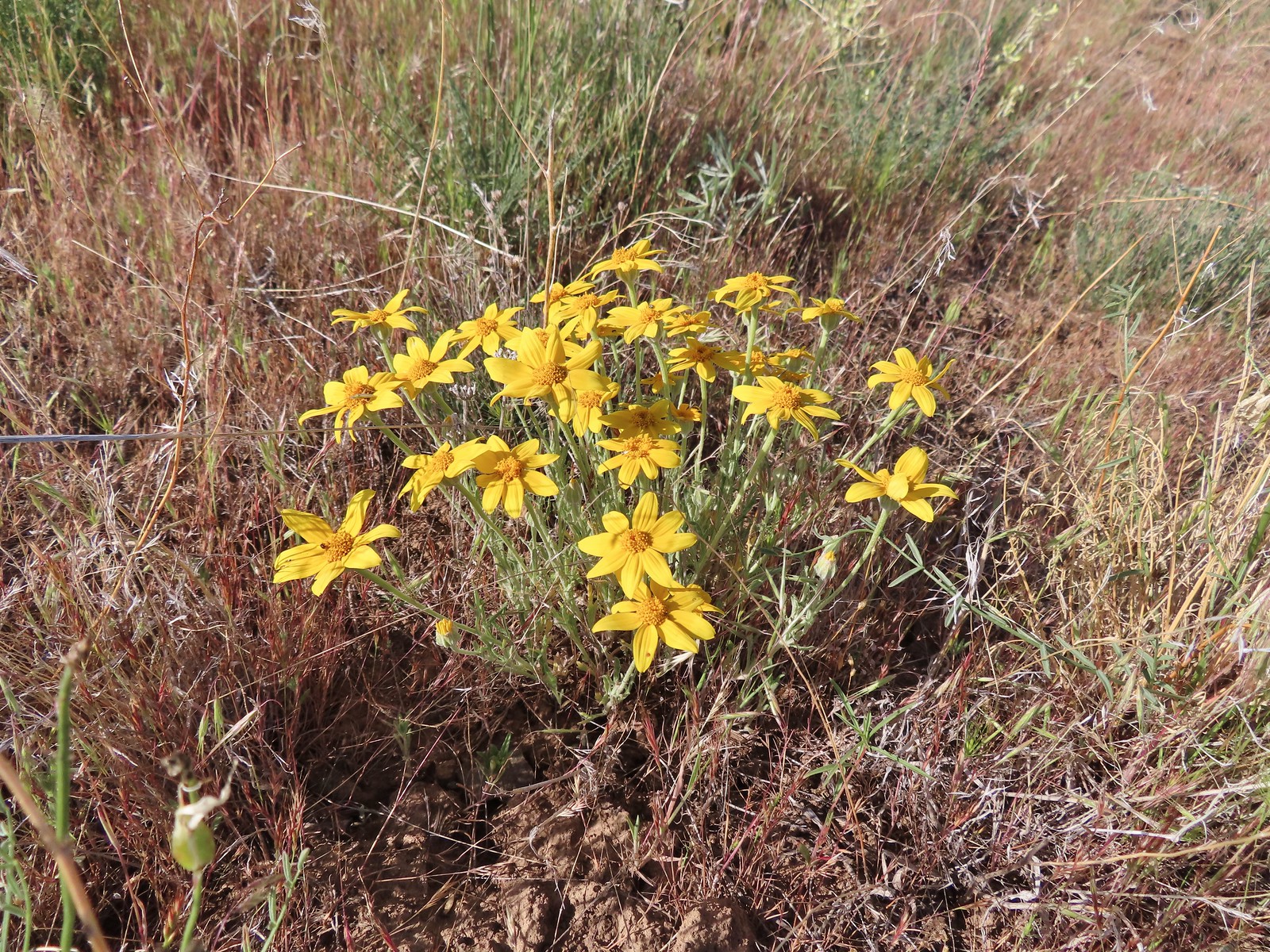 Oregon sunshine
Oregon sunshine
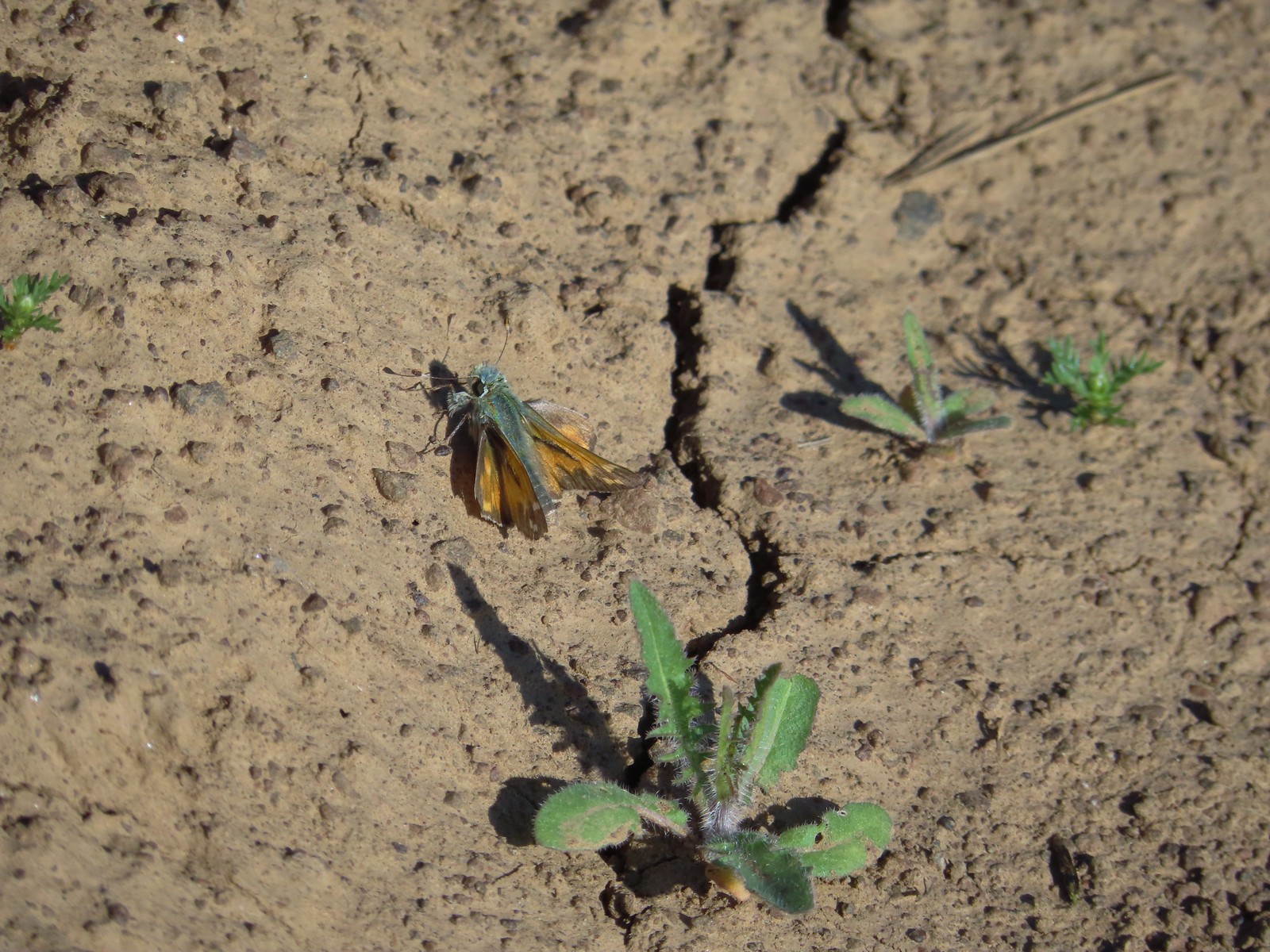 Skipper
Skipper
 Mt. Jefferson and Olallie Butte (post) behind the lupine.
Mt. Jefferson and Olallie Butte (post) behind the lupine.
 A small watering hole.
A small watering hole.
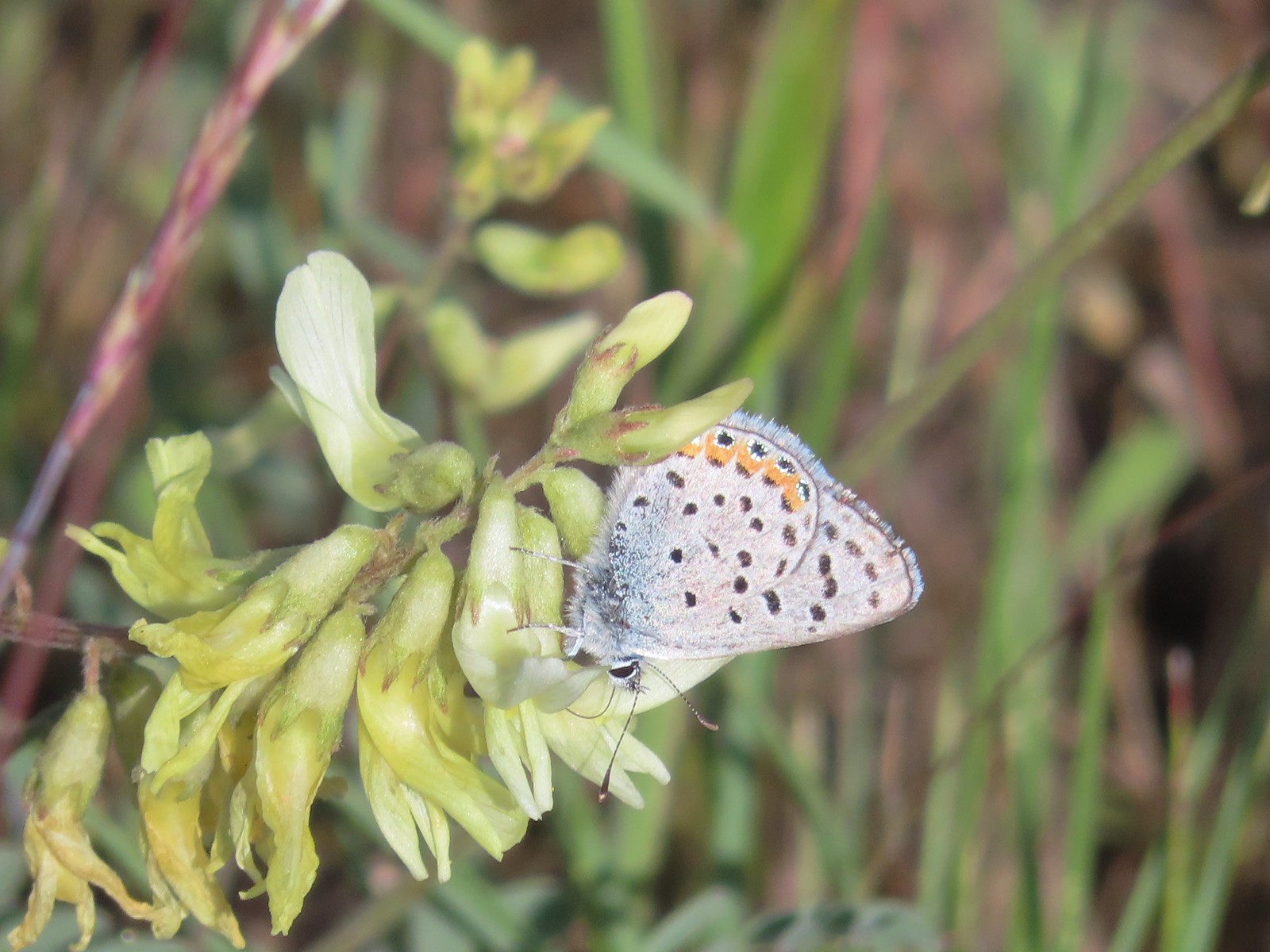 Leaning toward an Acmon blue but not sure.
Leaning toward an Acmon blue but not sure.
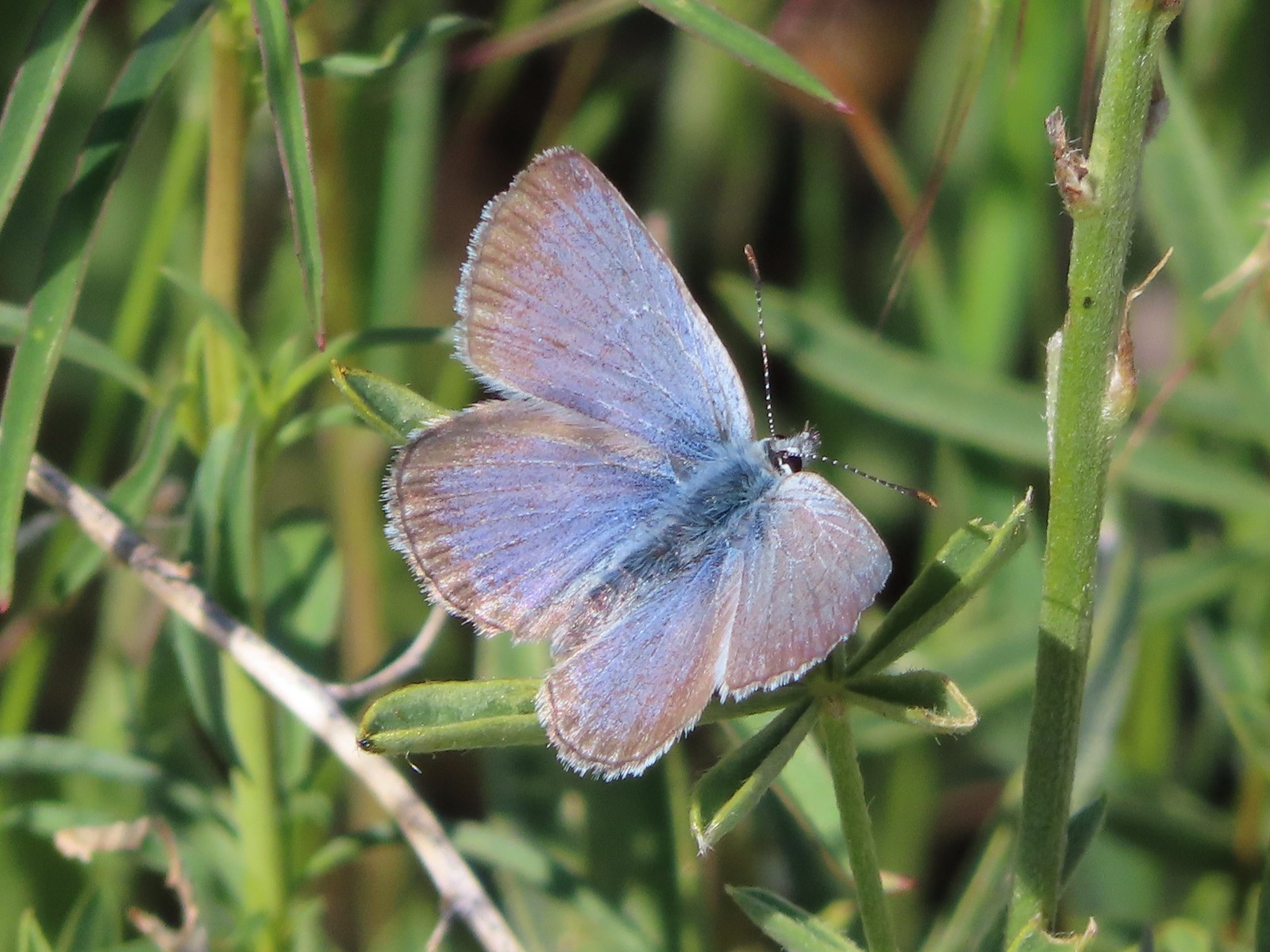 Another in the Lycaenidae family.
Another in the Lycaenidae family.
 Large marble on a fiddleneck.
Large marble on a fiddleneck.
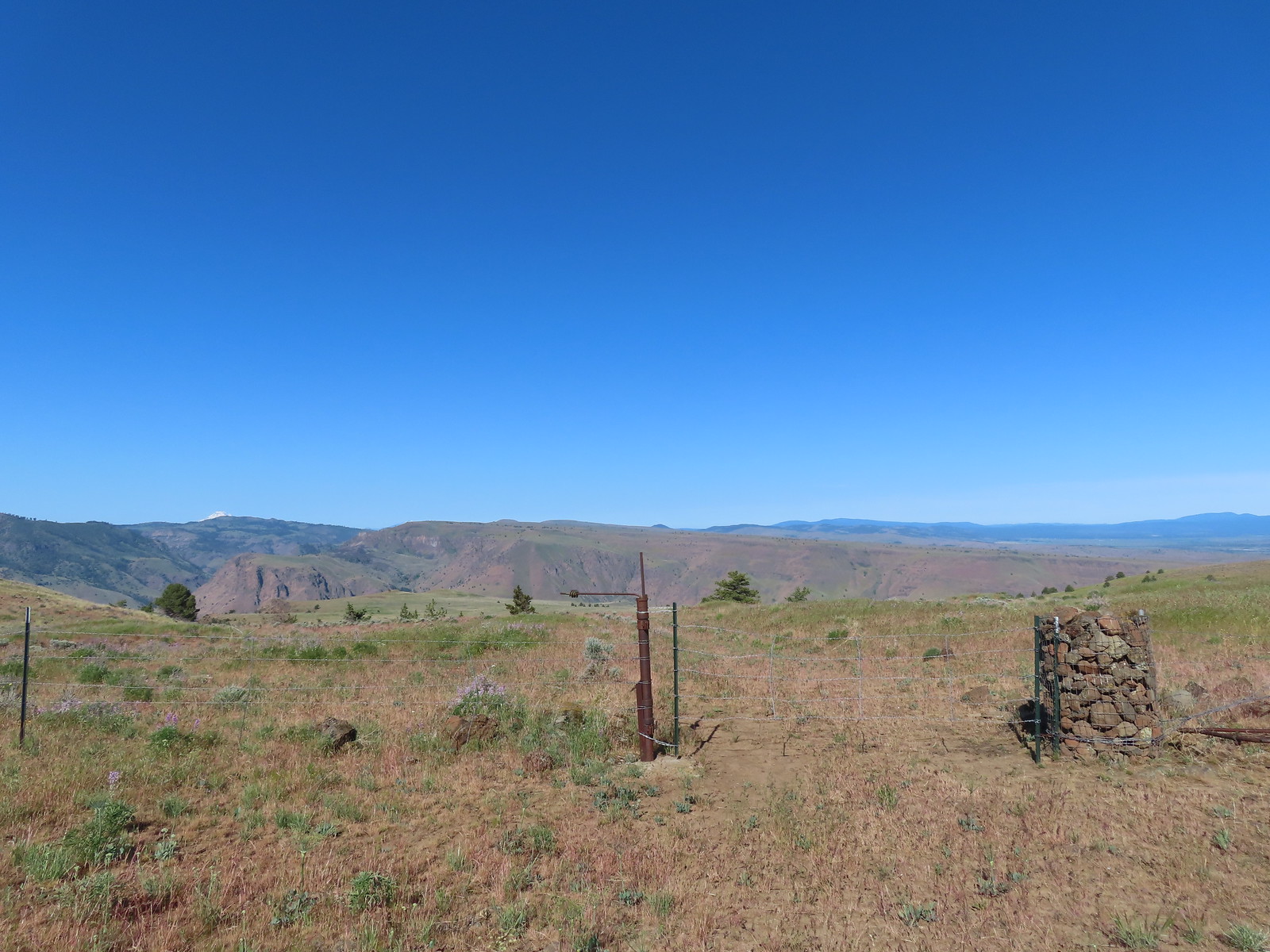 The fourth gate at the 4-way junction.
The fourth gate at the 4-way junction.
 Mourning dove
Mourning dove
We took a short break by the gate before passing through. As we descended on the jeep track we came to a split where the clearer track curved to the left while a faint track headed straight downhill through a field of balsamroot. Reeder’s map showed his route was along the fainter track so we stayed straight.
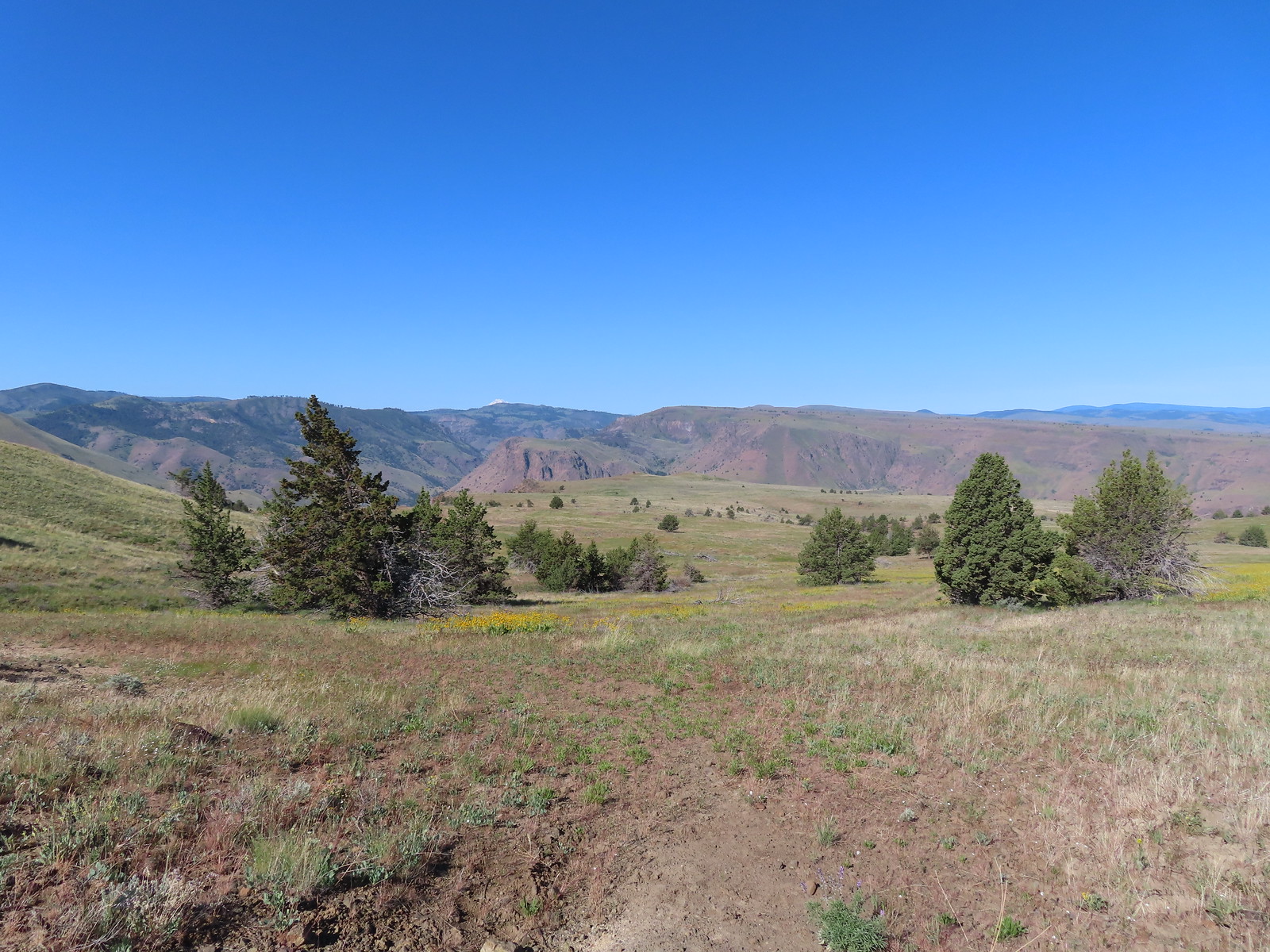 The more “obvious” jeep track curving left.
The more “obvious” jeep track curving left.
 The fainter track angling slightly right.
The fainter track angling slightly right.
We were a couple of weeks late for the peak balsamroot bloom, but there were enough remaining blooms/petals to color the hillside yellow.

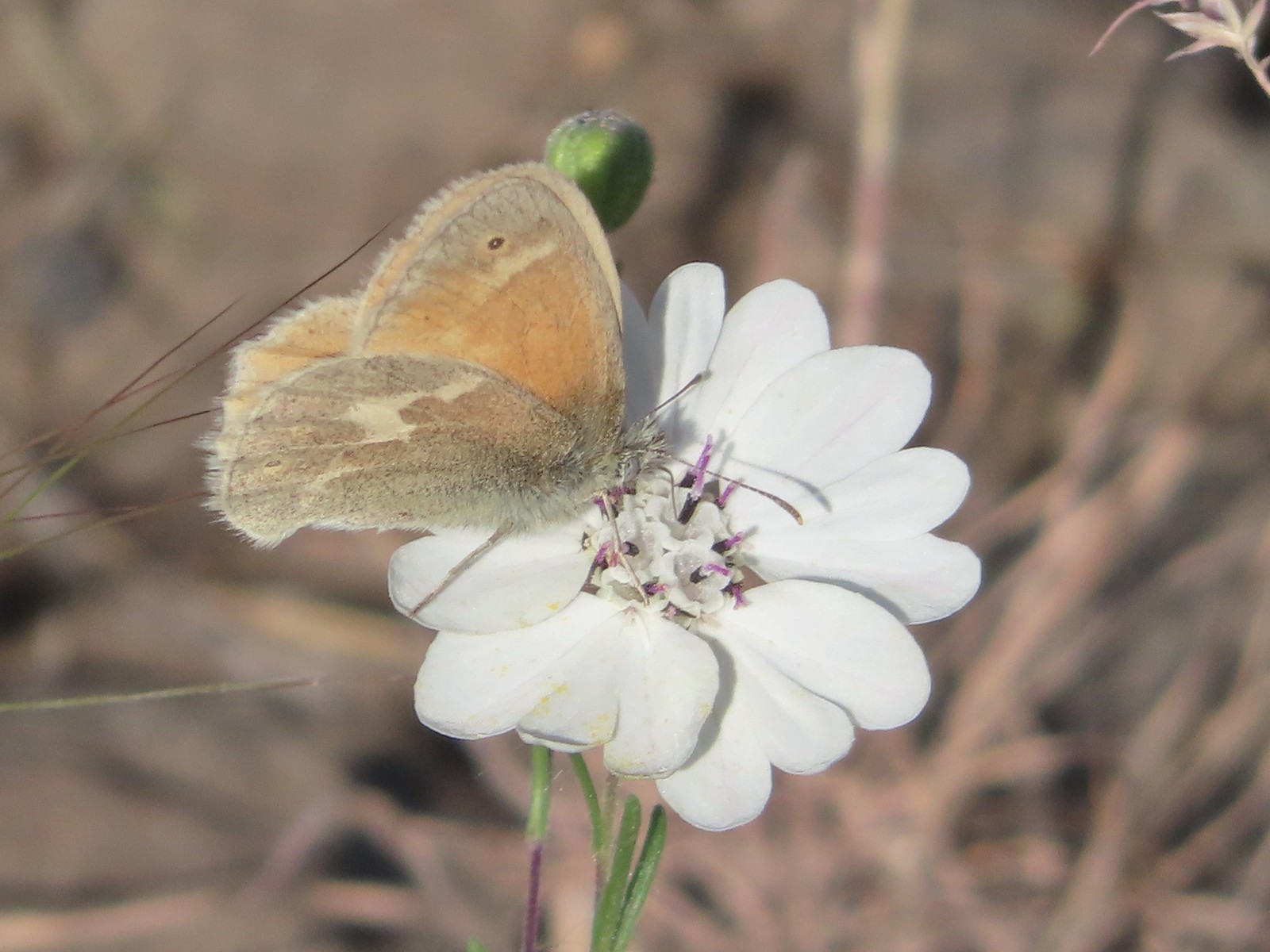 Ochre ringlet on rougheyelashweed.
Ochre ringlet on rougheyelashweed.

We soon rejoined the other jeep track where we turned right.

The terrain had leveled out and we continued on the track watching for Stag Point, a knoll with a post on top, which was Reeder’s turn around point.
 Zerene fritillary
Zerene fritillary
 Zerene fritillary on salsify
Zerene fritillary on salsify
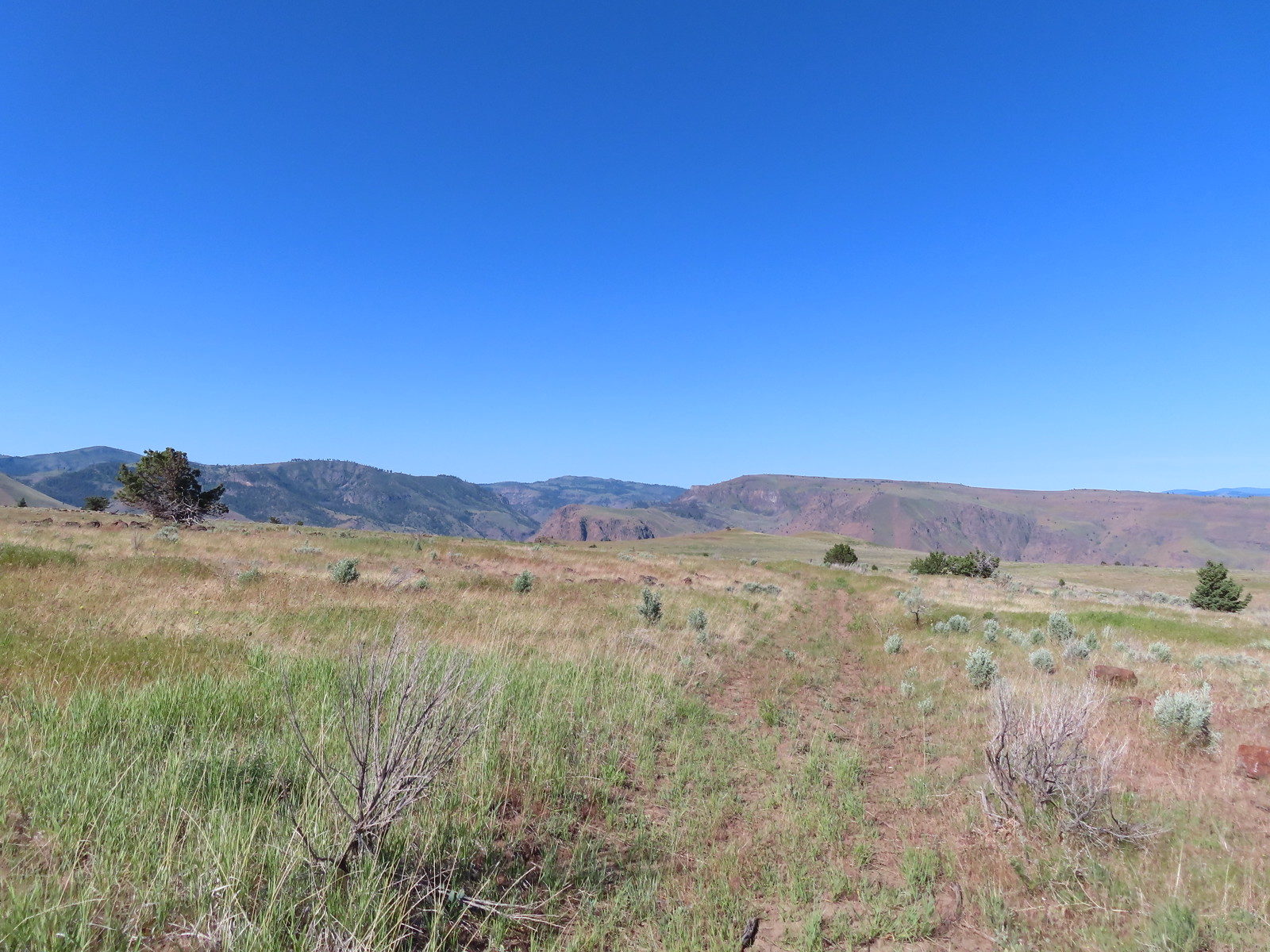 We thought we spied the post and used the camera to zoom in and confirm.
We thought we spied the post and used the camera to zoom in and confirm.
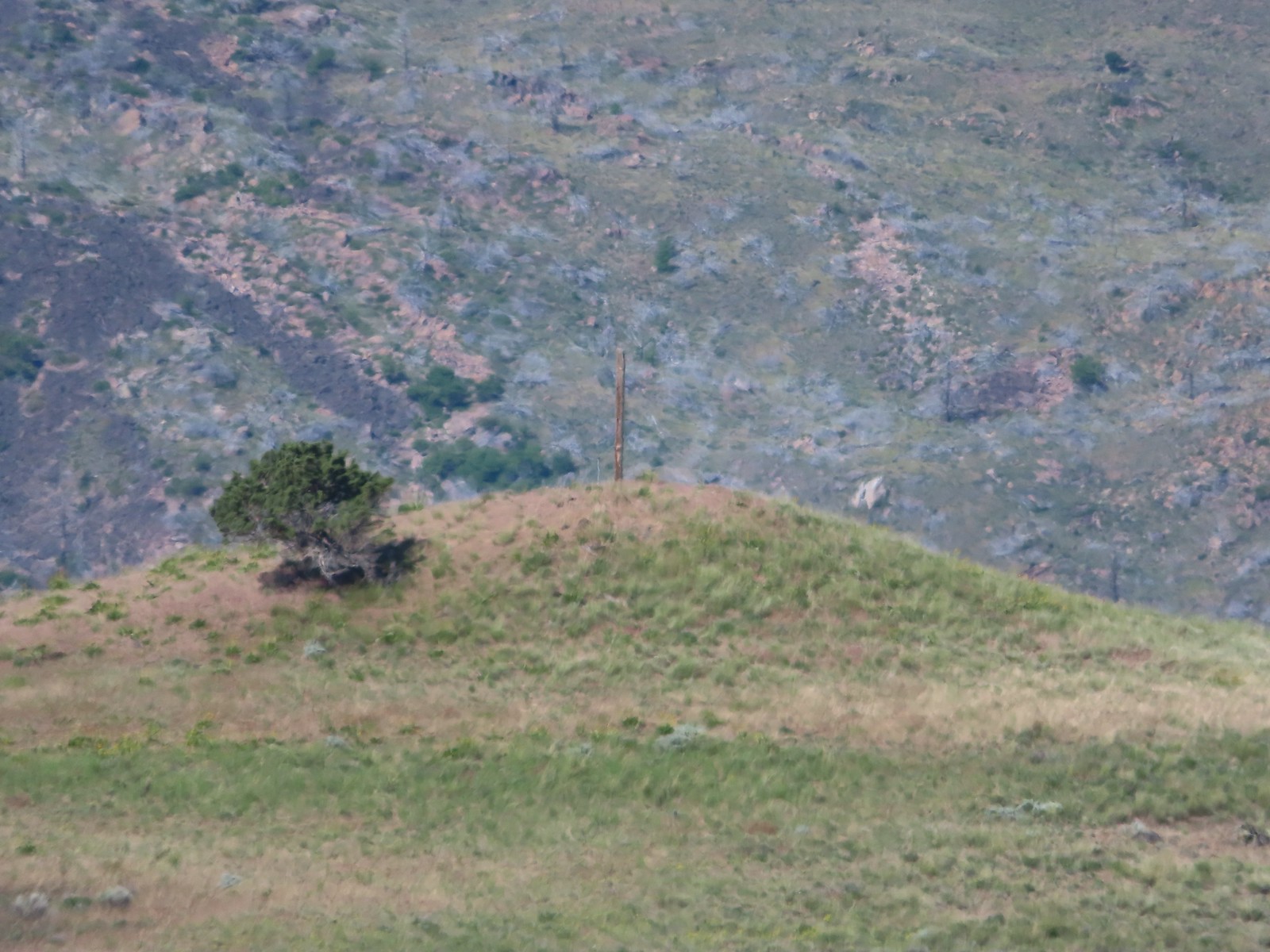 This was the only knoll with a juniper as well as the post.
This was the only knoll with a juniper as well as the post.
 Largeflower hawksbeard
Largeflower hawksbeard
 Paintbrush
Paintbrush
 To reach Stag Point we had to go cross country, so we looked for the most gradual looking climb.
To reach Stag Point we had to go cross country, so we looked for the most gradual looking climb.

 Mt. Hood from Stag Point.
Mt. Hood from Stag Point.
 The Deschutes River from Stag Point.
The Deschutes River from Stag Point.
The view was good from Stag Point, but we were hoping to see more of the river and decided to do a little more cross country exploring by heading SE along the rim from Stag Point to a promising looking rock outcrop.
 Mt. Hood and Mt. Adams from Stag Point.
Mt. Hood and Mt. Adams from Stag Point.
 Looking back over the route we’d come down.
Looking back over the route we’d come down.
 Ladybug and an Oregon swallowtail.
Ladybug and an Oregon swallowtail.
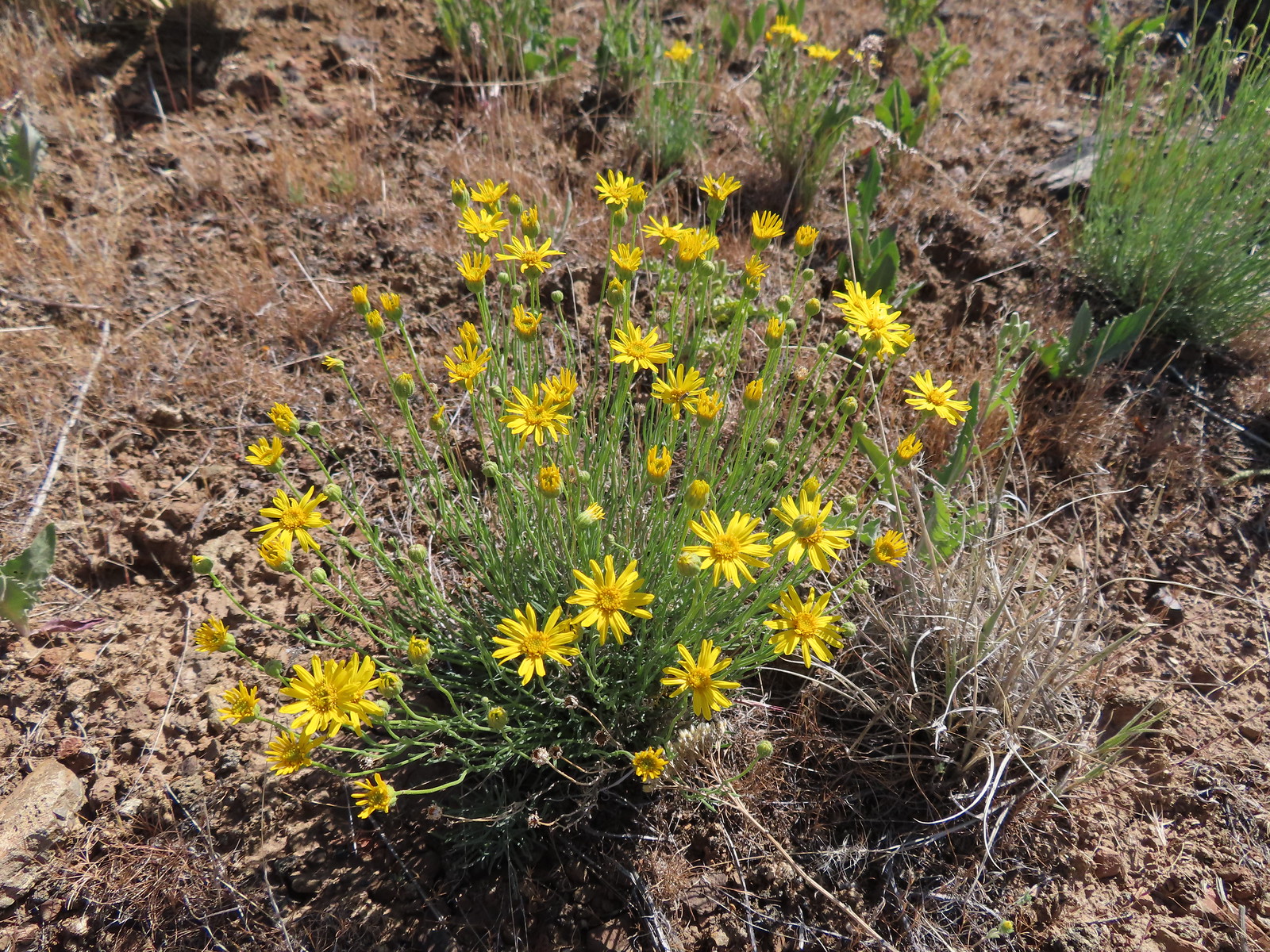 Desert yellow fleabane
Desert yellow fleabane
 Heading out to the rock outcrop.
Heading out to the rock outcrop.
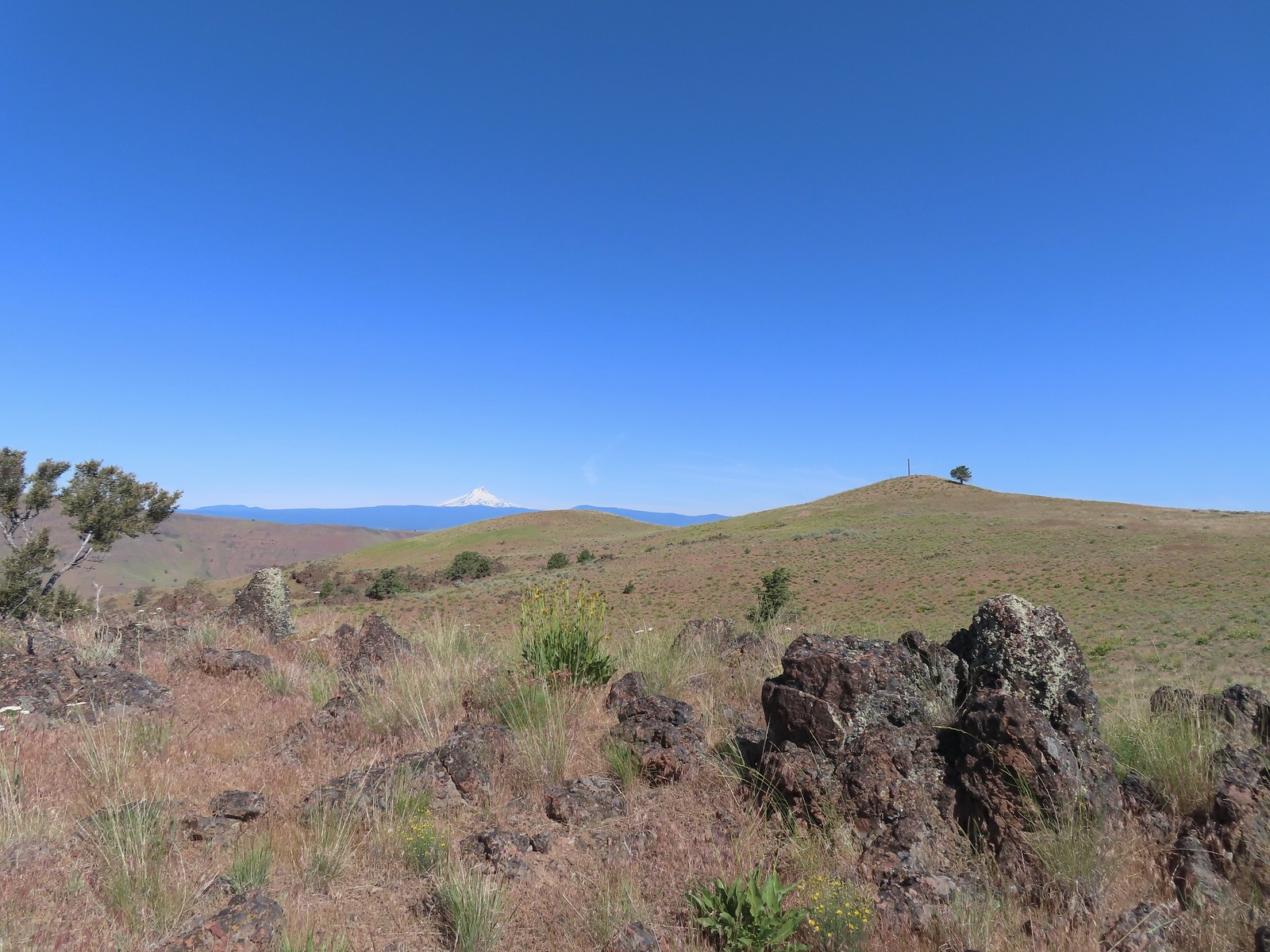 Mt. Hood and Stag Point from the outcrop.
Mt. Hood and Stag Point from the outcrop.
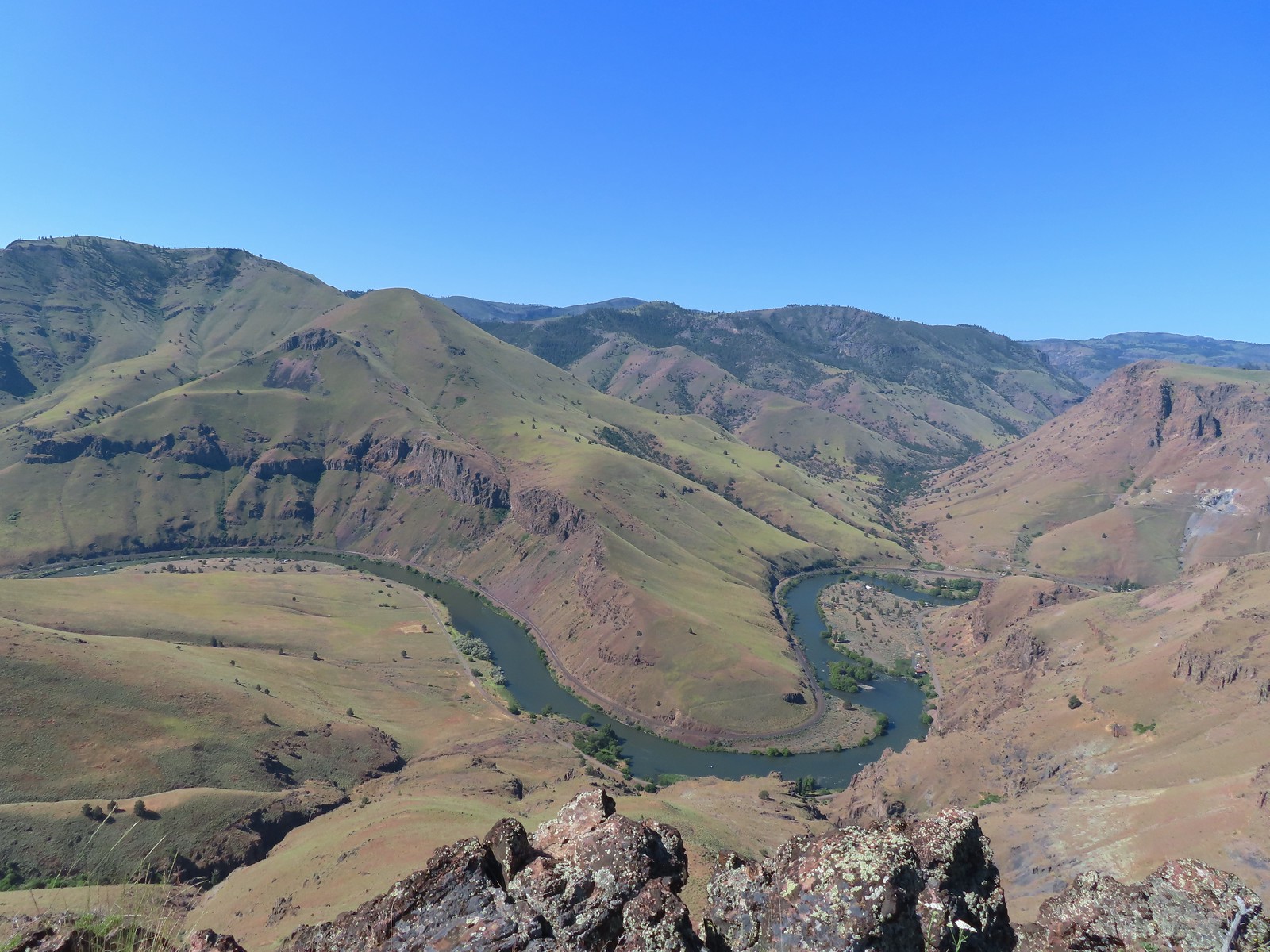 A better view of the Deschutes.
A better view of the Deschutes.
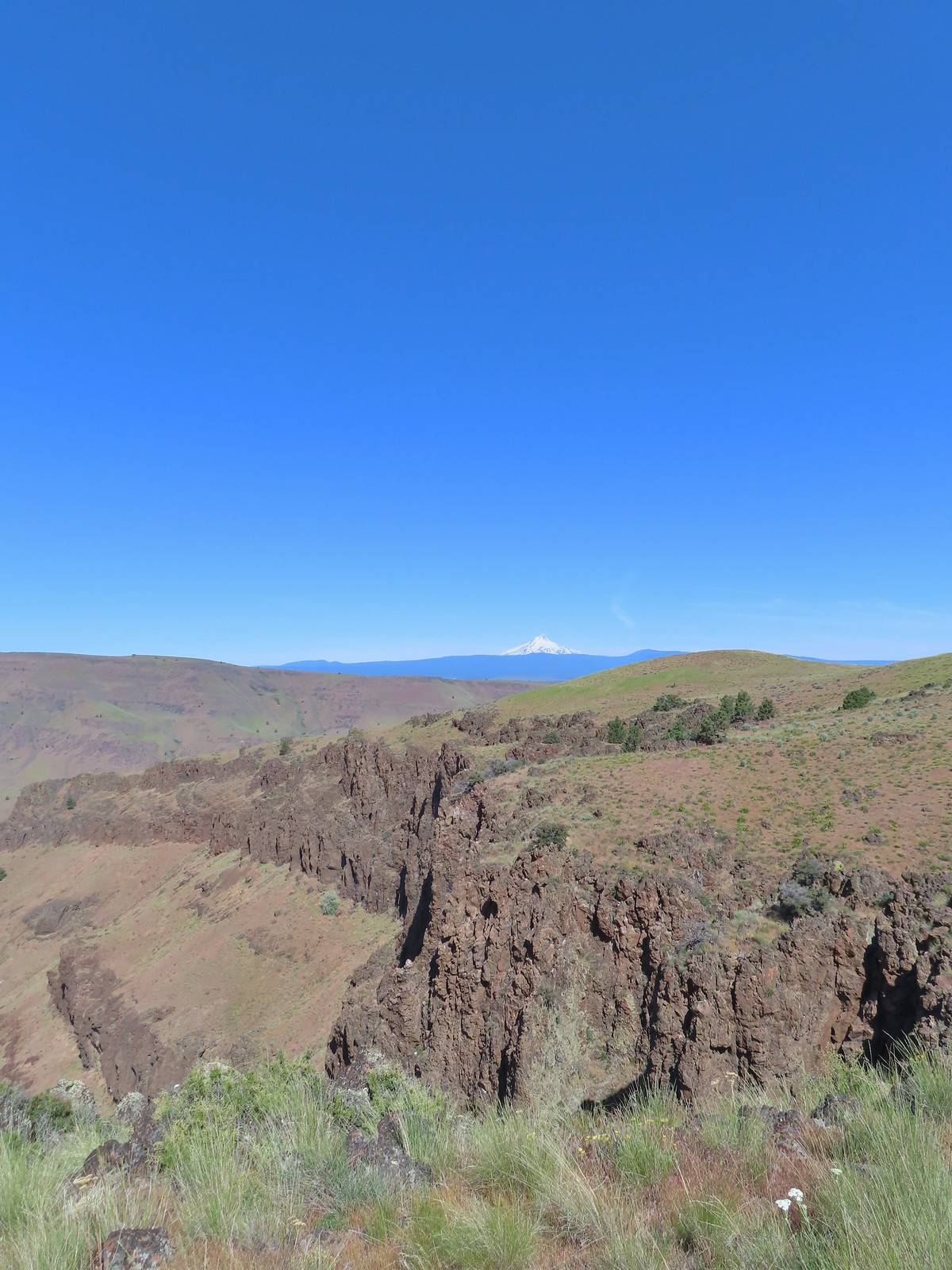 Mt. Hood beyond the cliffs.
Mt. Hood beyond the cliffs.
 A buckwheat
A buckwheat
Satisfied now with the view we took a short break on the outcrop before heading back. We made our way back to the jeep track by angling back toward the rim where we’d descended. Once we’d reached the track we simply followed it back uphill to the gate at the 4-way junction.
 Stink bug
Stink bug
 Silverleaf phacelia
Silverleaf phacelia
 Back on the jeep track.
Back on the jeep track.
 Lupine and balsamroot
Lupine and balsamroot
 The cows had really chewed this section of the jeep track up.
The cows had really chewed this section of the jeep track up.
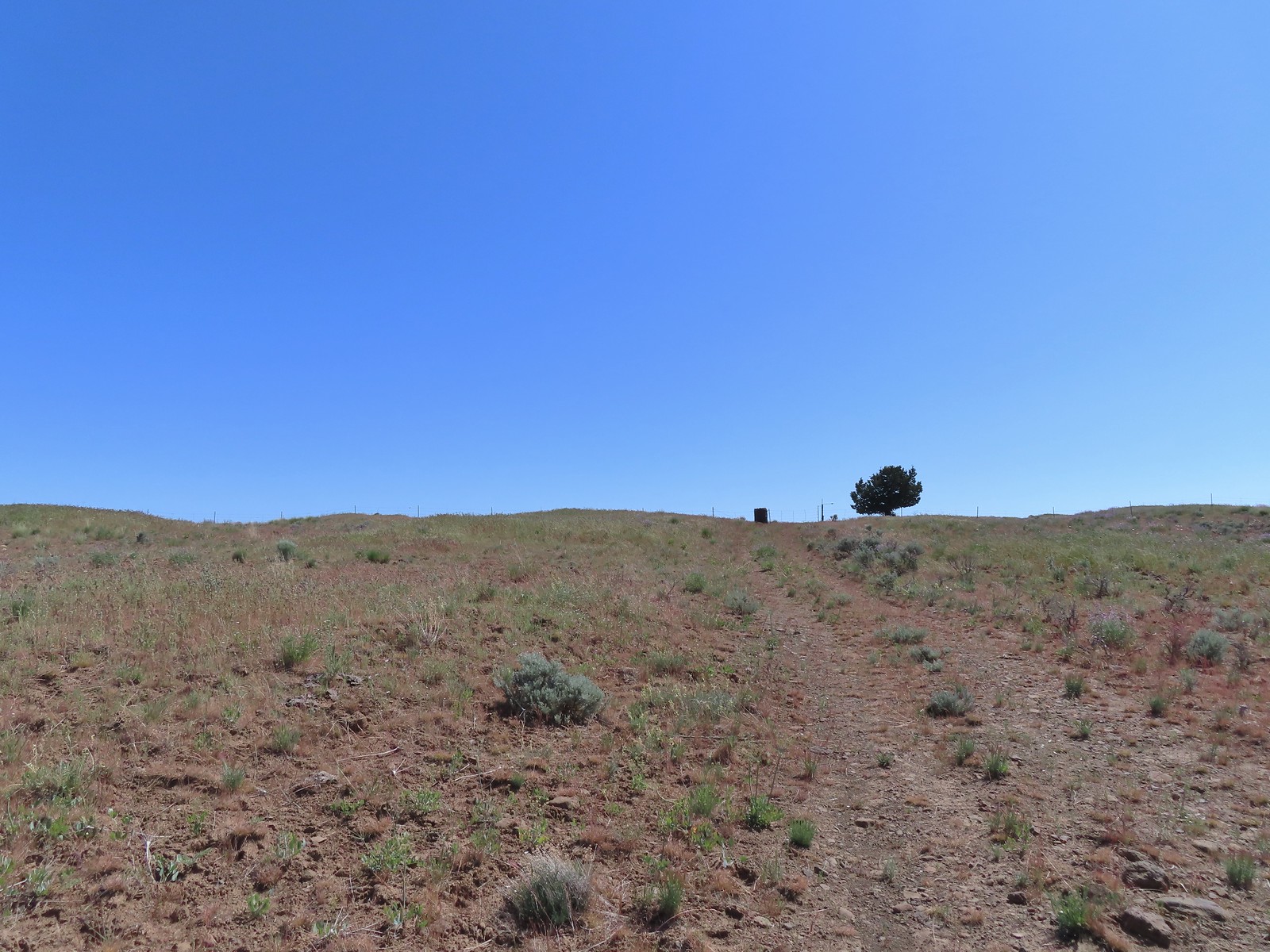 The gate ahead.
The gate ahead.
 Horned lark guarding the gate.
Horned lark guarding the gate.
After passing through the gate we retraced our route back to the trailhead. Butterflies were now out in force and we spotted a couple of lizards.
 Mt. Jefferson and Olallie Butte
Mt. Jefferson and Olallie Butte
 Grand collomia
Grand collomia
 Time for some sun.
Time for some sun.
 A butterfly and fly.
A butterfly and fly.
 Three butterflies and a fly.
Three butterflies and a fly.
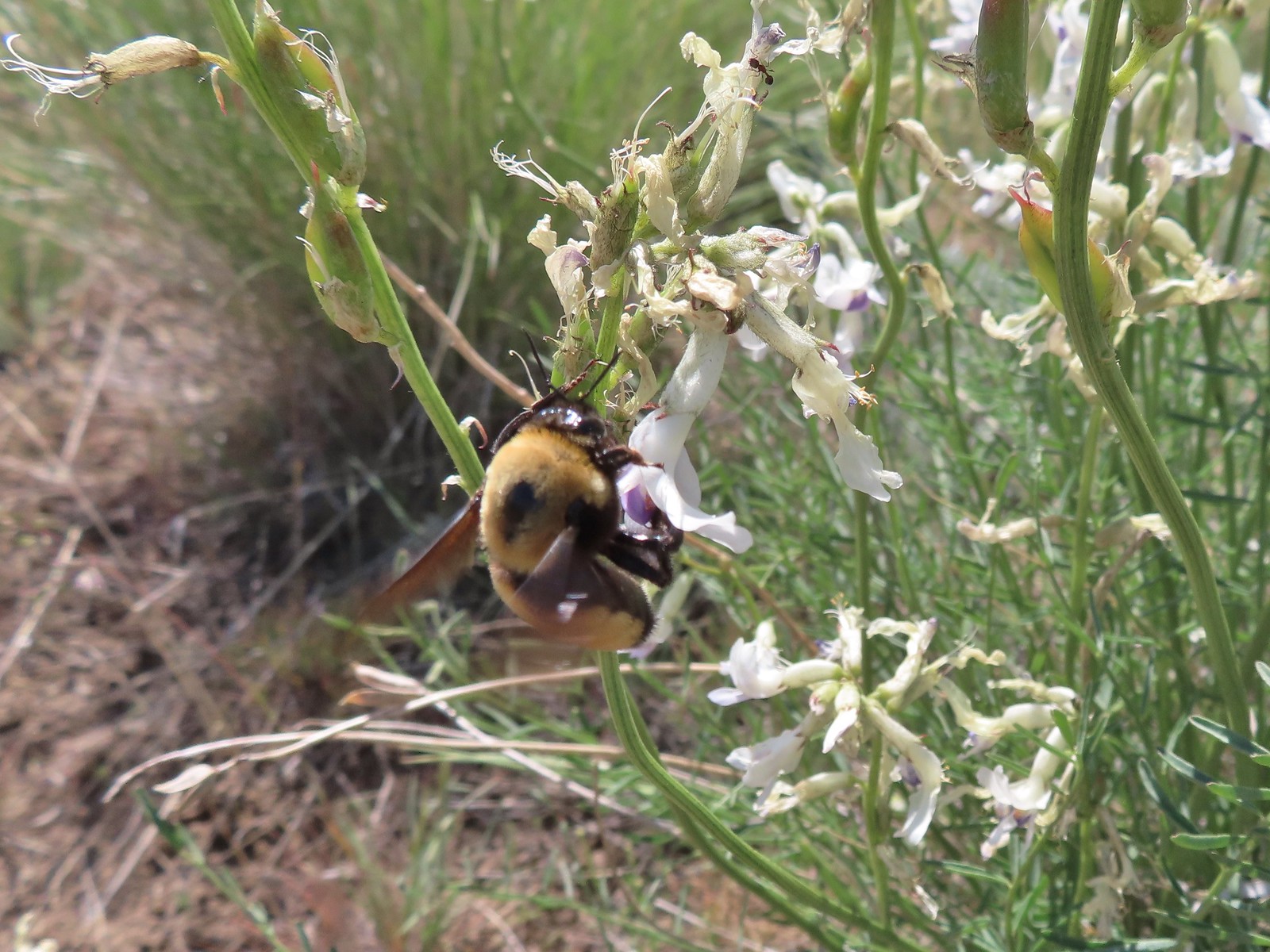 Busy bee
Busy bee
 This swallowtail was a little rough around the edges.
This swallowtail was a little rough around the edges.
 Another horned lark on lookout.
Another horned lark on lookout.
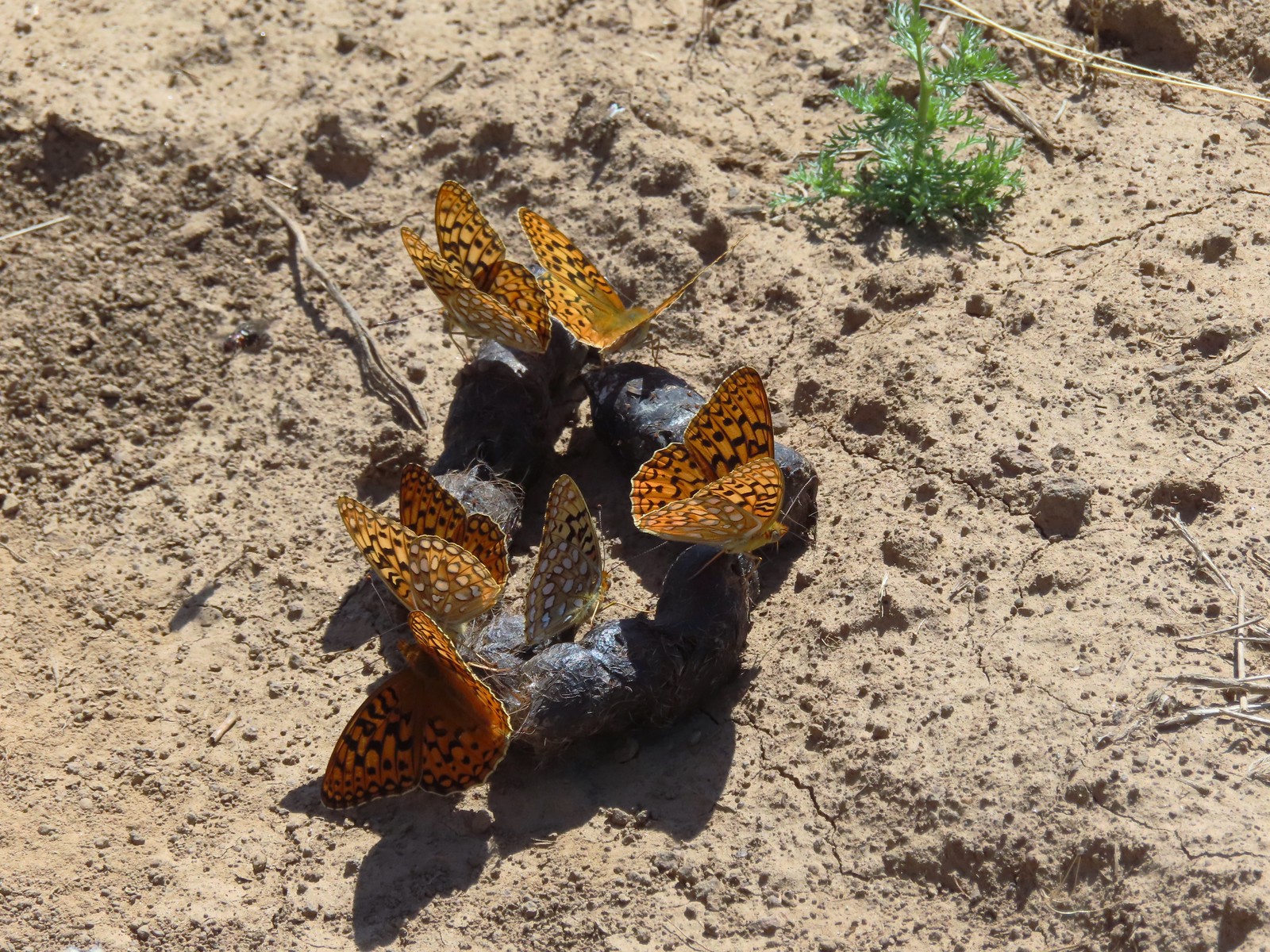 Nothing brings fritillary butterflies together like a good pile of scat.
Nothing brings fritillary butterflies together like a good pile of scat.
We had been trying to figure out where the Oregonhikers loop had veered off Criterion Road and as we were discussing it on the way back it donned on us that it must follow the powerlines for a short distance. Neither of us had noticed another jeep track leading off around the powerlines but it made sense because there is almost always an access road below lines. Sure enough when we arrived at the power lines there was a jeep track clear as day.
 Another option for another time. We were just happy to have solved that mystery.
Another option for another time. We were just happy to have solved that mystery.
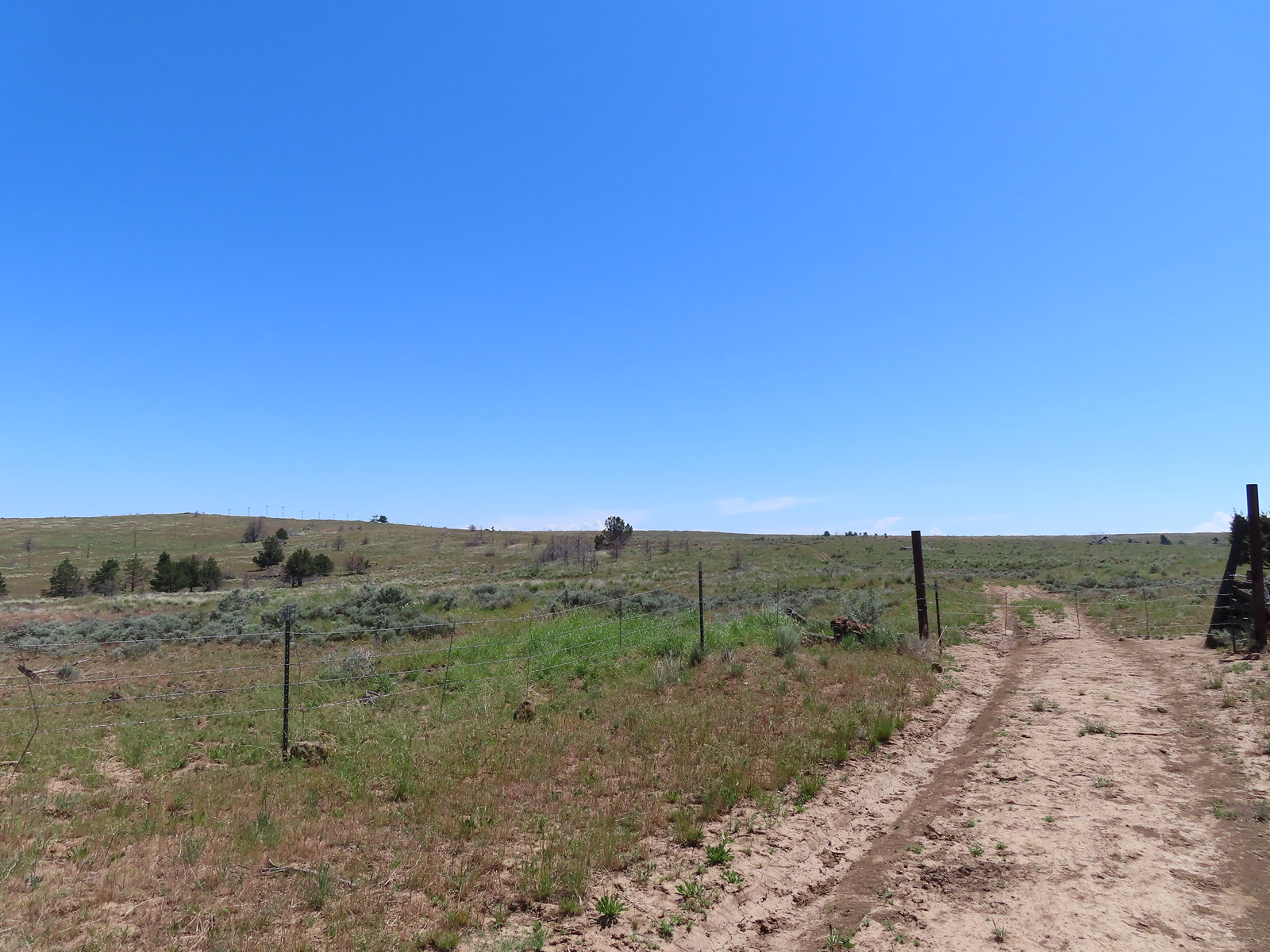 The Radio Towers on the hill were right next to the trailhead.
The Radio Towers on the hill were right next to the trailhead.
 The Three Sisters (from this angle it looks like two)
The Three Sisters (from this angle it looks like two)
 Three butterflies and a beetle on buckwheat.
Three butterflies and a beetle on buckwheat.
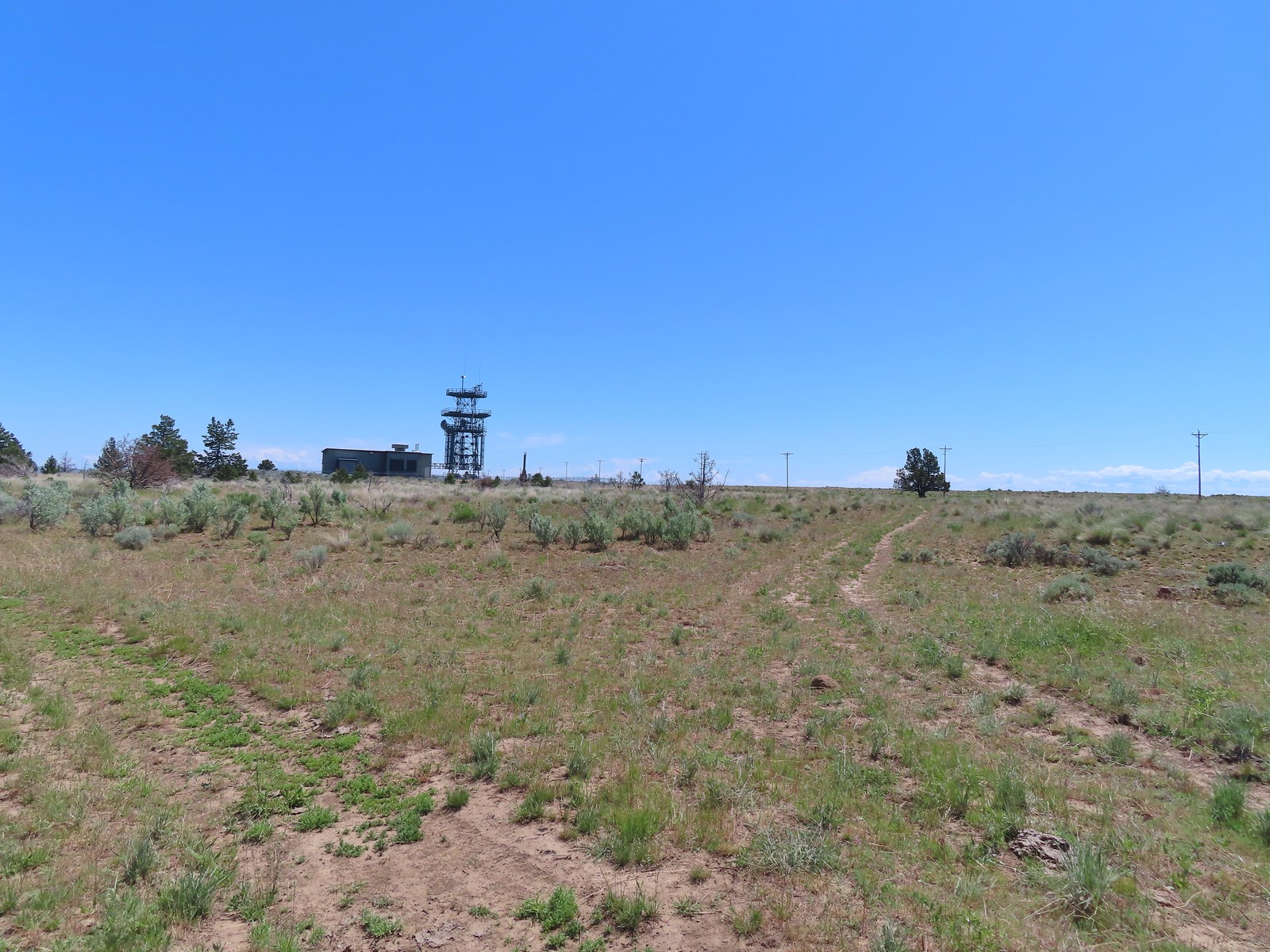 Another mystery was where did the trail from the South Trailhead (just on the other side of the radio towers) connect. We’d missed the track on the right on our first pass, another question answered.
Another mystery was where did the trail from the South Trailhead (just on the other side of the radio towers) connect. We’d missed the track on the right on our first pass, another question answered.
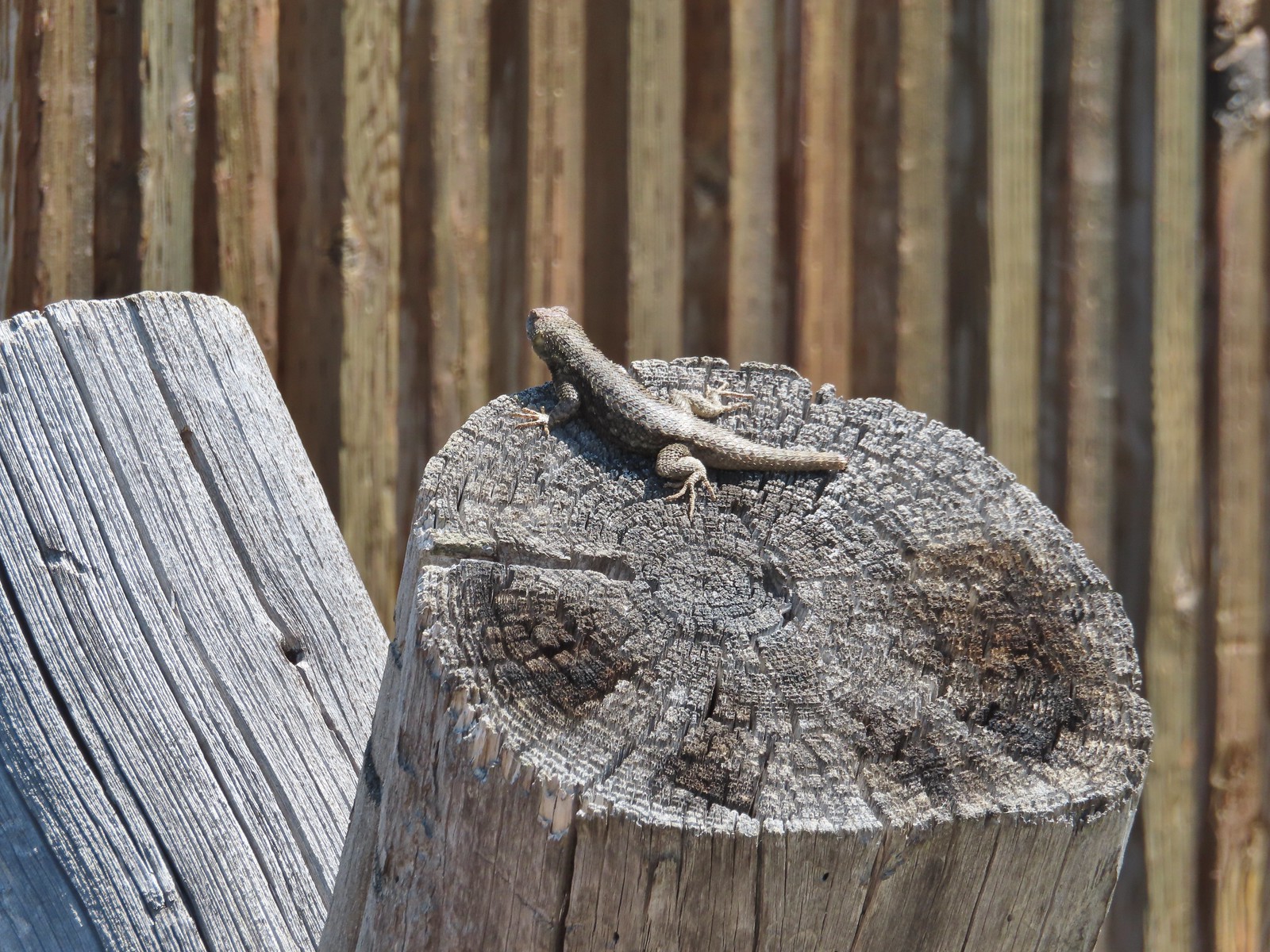 Lizard with half a tail at the trailhead.
Lizard with half a tail at the trailhead.
 This mountain bluebird was acting odd when we arrived at the gate. It was flying back and forth with something in its mouth. (Mt. Adams is in the background.)
This mountain bluebird was acting odd when we arrived at the gate. It was flying back and forth with something in its mouth. (Mt. Adams is in the background.)
It turned out to be a grasshopper that it was waiting to feed its young who were apparently in a nest in some nearby rocks.
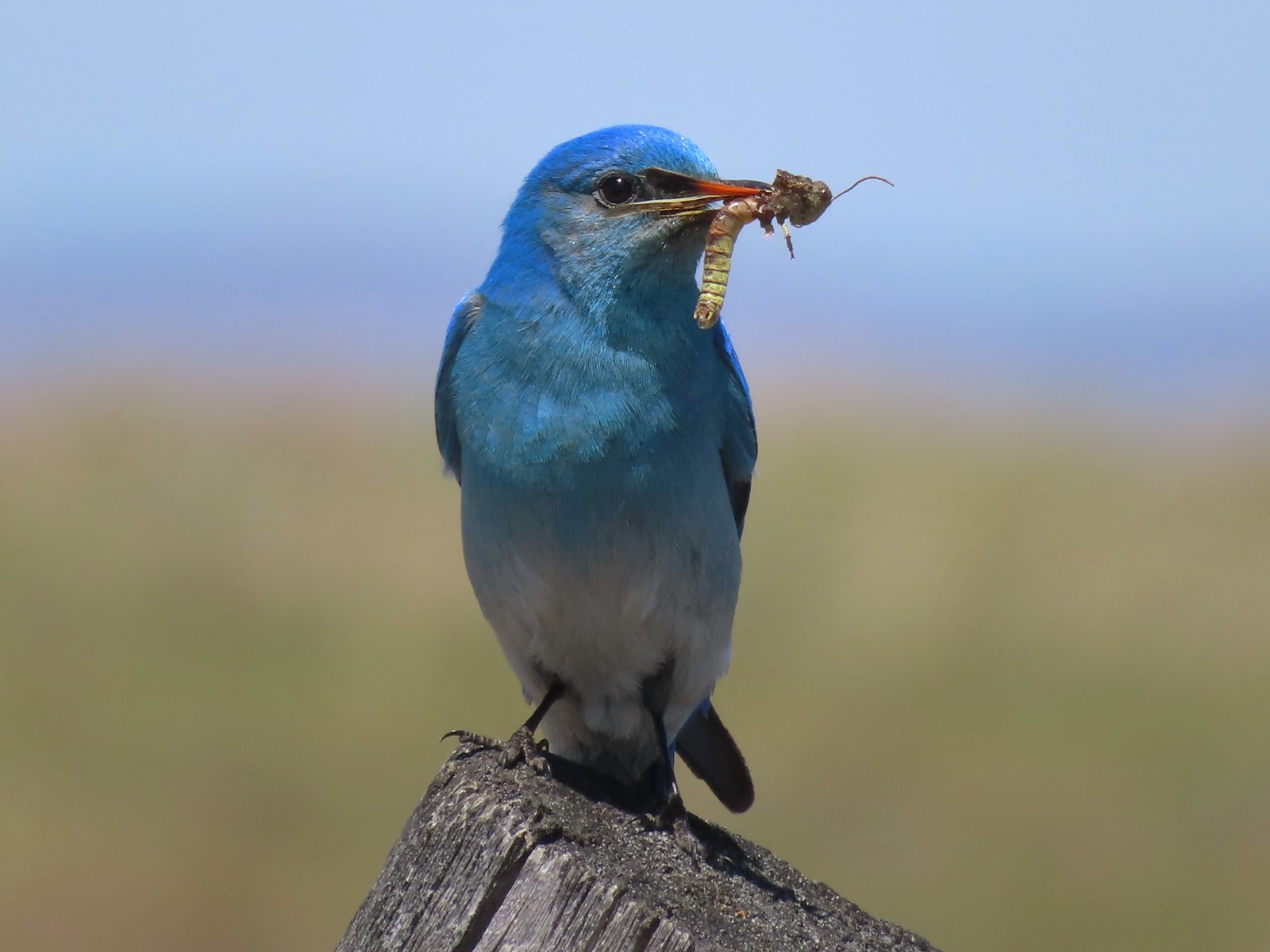
After we passed by we heard the chicks calling and watched it fly into the rocks with their meal.
This turned out to be an excellent choice for the holiday weekend. We only encountered one other person, a trail runner we passed on our way back to the 4-way junction from Stag Point. The late wildflower season played to our advantage and the weather was good. It can get really hot and/or really windy there but on this day a reasonable breeze kept the temperature down without blowing us around. The rough tread was really the only downside to the hike, but that wasn’t too bad overall.
Our hike came in at 10.6 miles with roughly 700′ of elevation gain.

We definitely plan on returning to try Sullivan’s route from below someday and possibly trying to follow the Oregonhikers loop sometime as well. Happy Trails!
Flickr: Criterion Tract



 Banks-Vernonia State Trail in January. (
Banks-Vernonia State Trail in January. (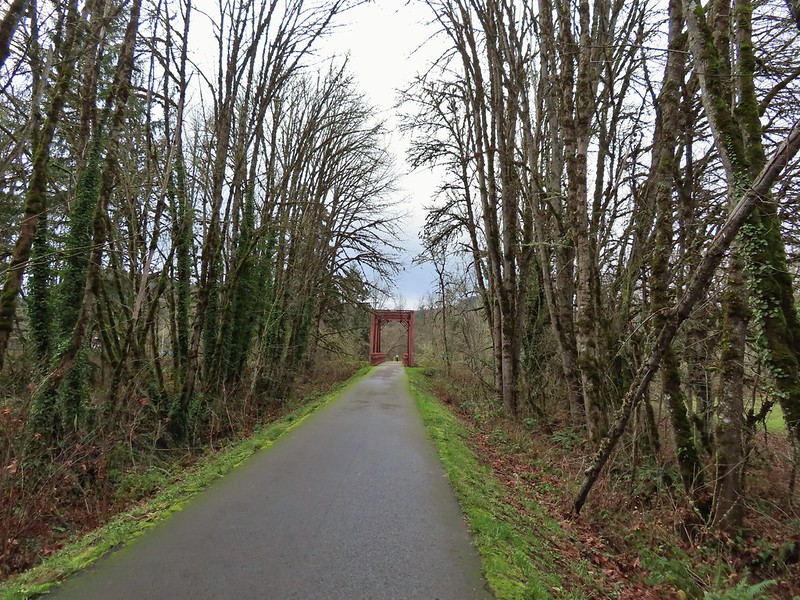 Row River Trail in December. (
Row River Trail in December. ( John Day River from the Lost Corral Trail
John Day River from the Lost Corral Trail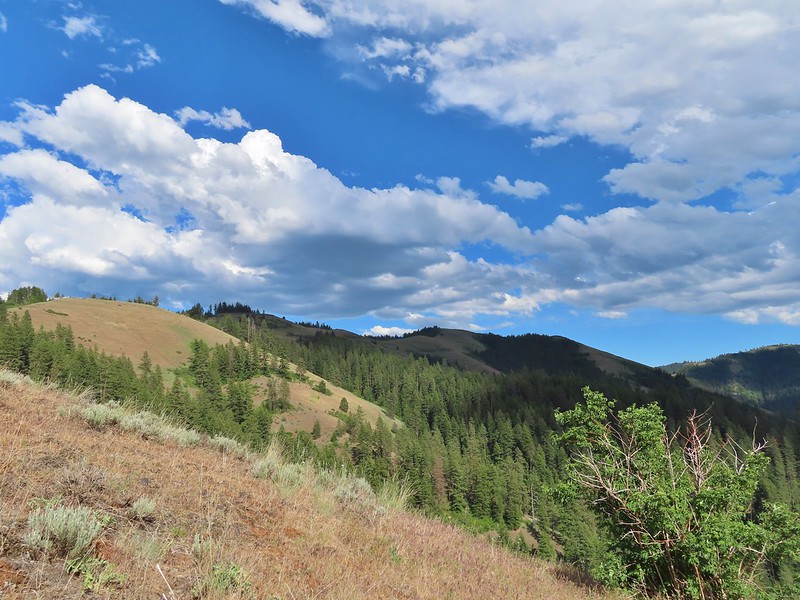 Ninemile Ridge in the North Fork Umatilla Wilderness in June. (
Ninemile Ridge in the North Fork Umatilla Wilderness in June. ( Devil’s Staircase Wilderness in July. (
Devil’s Staircase Wilderness in July. (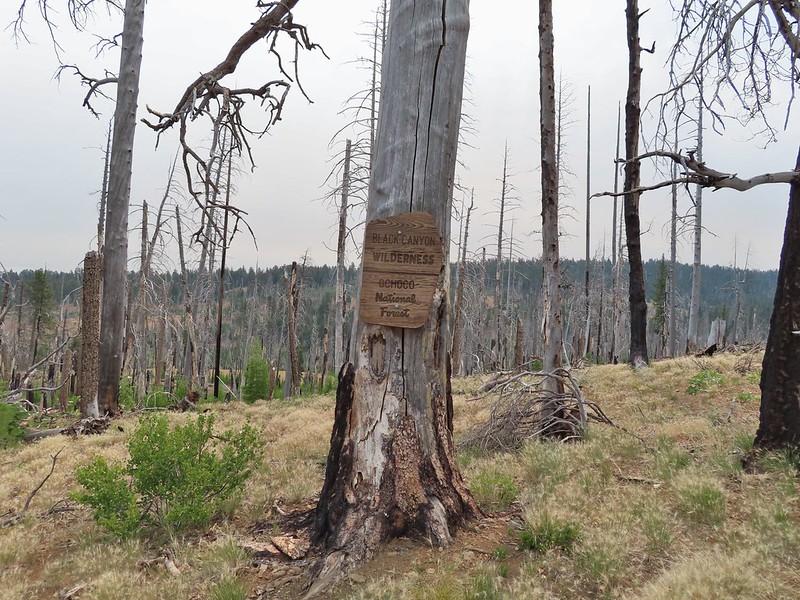 Black Canyon Wilderness in July. (
Black Canyon Wilderness in July. (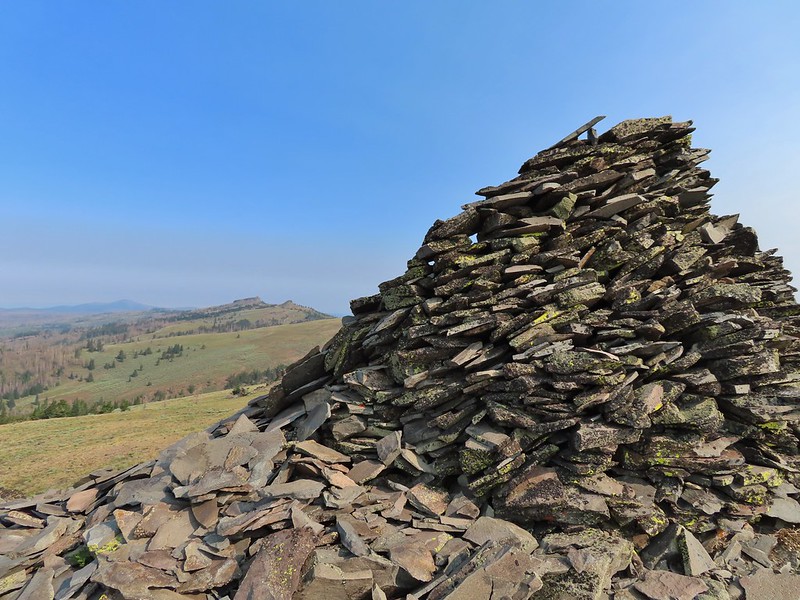 Monument Rock Wilderness in July. (
Monument Rock Wilderness in July. ( Ledbetter Point, the last of the hikes from the coast book. (
Ledbetter Point, the last of the hikes from the coast book. (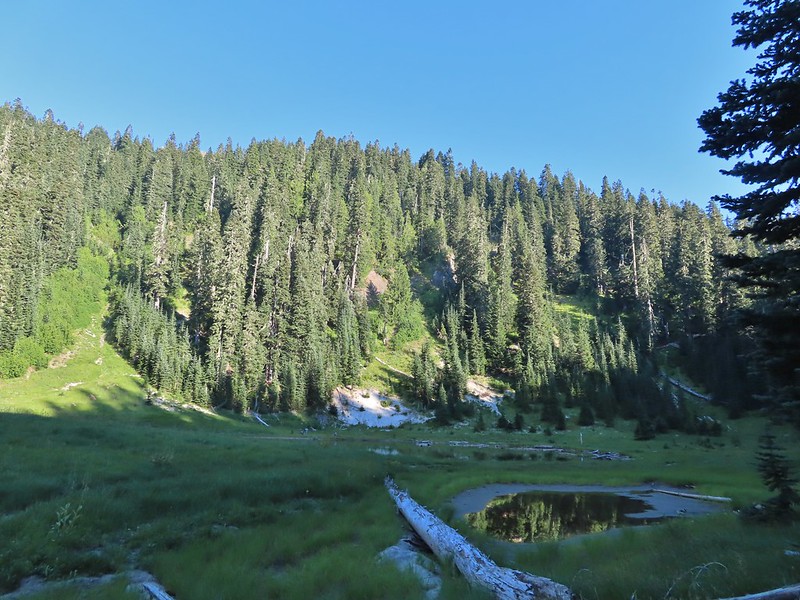 Badger Lake, the last hike from the northwestern book. (
Badger Lake, the last hike from the northwestern book. ( Redwoods
Redwoods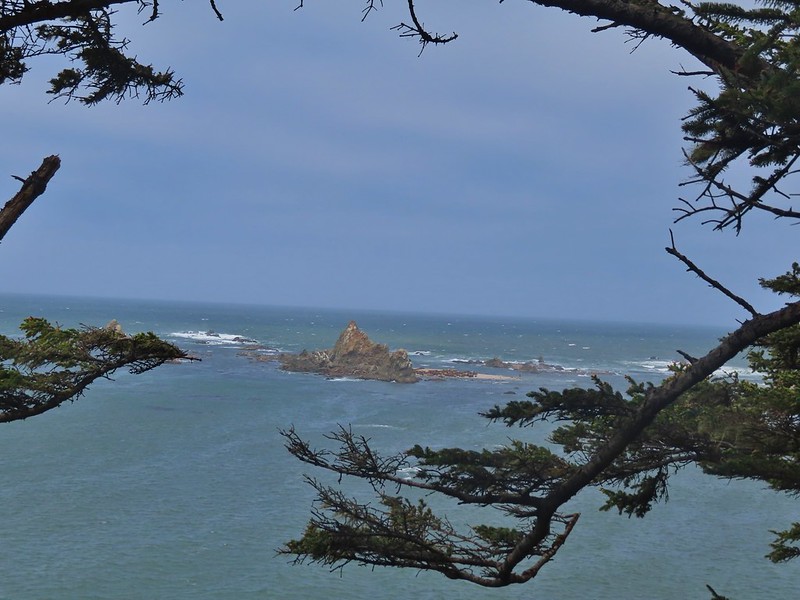
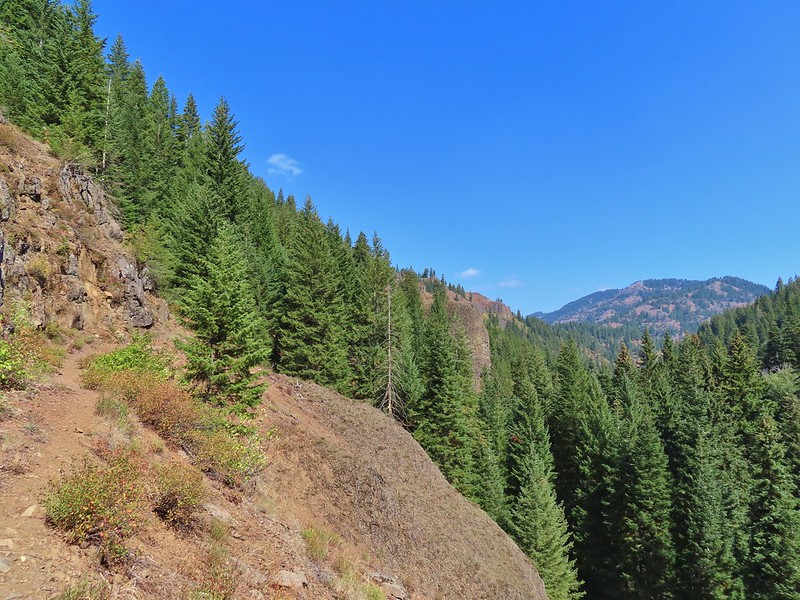
 Falls Creek – February
Falls Creek – February Cascade Head from God’s Thumb – March
Cascade Head from God’s Thumb – March Columbia River from Mitchell Point – March
Columbia River from Mitchell Point – March Mt. Hood from Sevenmile Hill – March
Mt. Hood from Sevenmile Hill – March Dalles Mountain Ranch – April
Dalles Mountain Ranch – April Mt. Adams from Grayback Mountain – May
Mt. Adams from Grayback Mountain – May Navigating a downed tree along the Pawn Old Growth Trail – May
Navigating a downed tree along the Pawn Old Growth Trail – May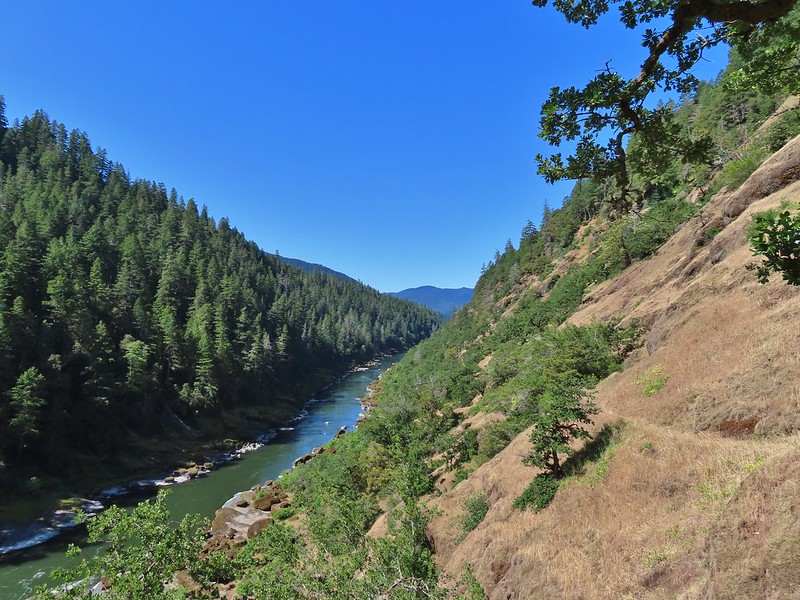 Rogue River Trail – May
Rogue River Trail – May Golden Falls – May
Golden Falls – May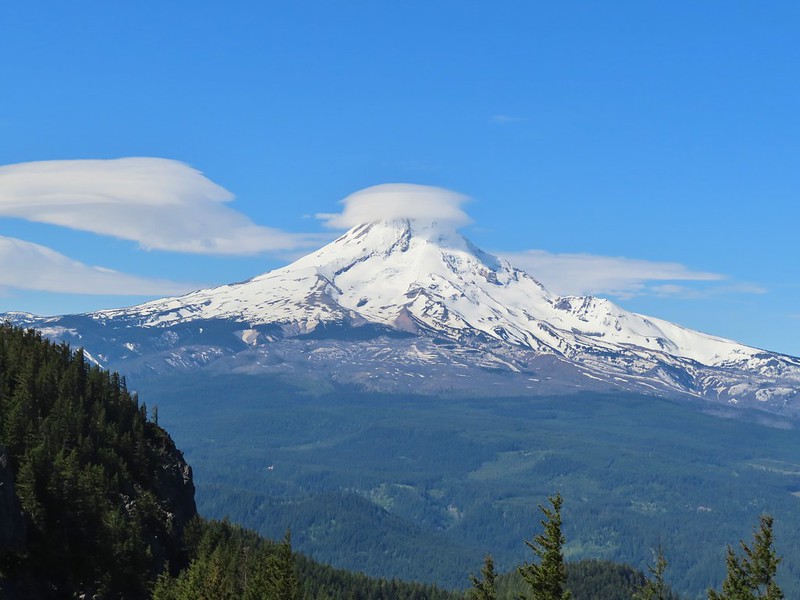 Lenticular cloud over Mt. Hood from Surveyor’s Ridge – May
Lenticular cloud over Mt. Hood from Surveyor’s Ridge – May Whychus Canyon – May
Whychus Canyon – May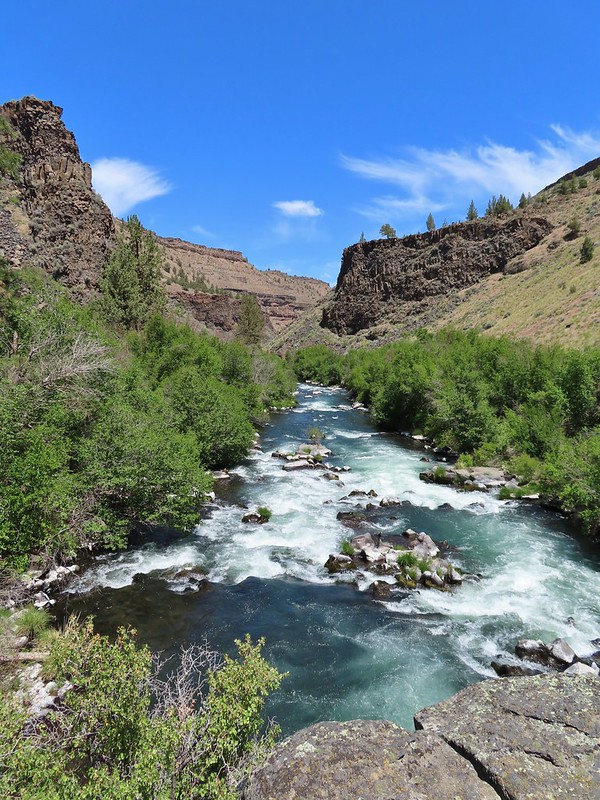 Deschutes River – May
Deschutes River – May Whychus Creek Overlook – May
Whychus Creek Overlook – May Forest on Mary’s Peak – June
Forest on Mary’s Peak – June North Fork Umatilla River – June
North Fork Umatilla River – June Tower Mountain Lookout – June
Tower Mountain Lookout – June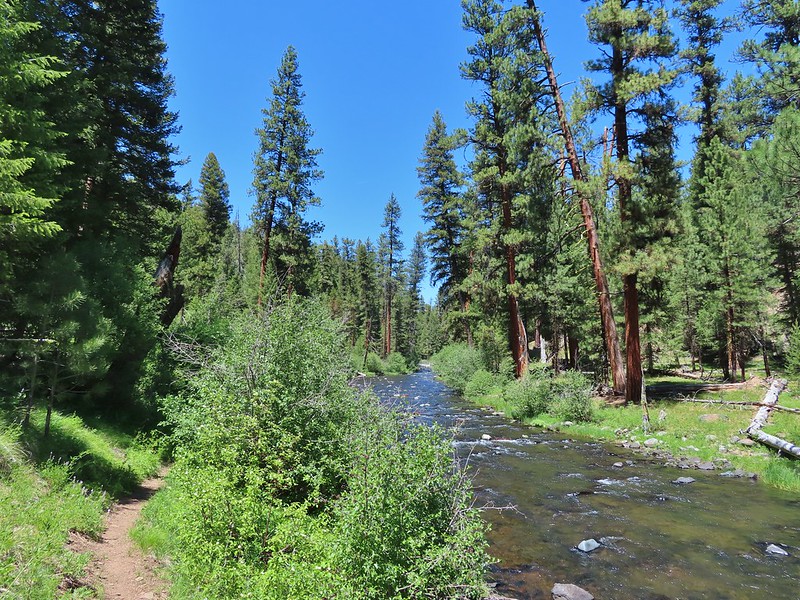 Malheur River – June
Malheur River – June Meadow on Round Mountain – June
Meadow on Round Mountain – June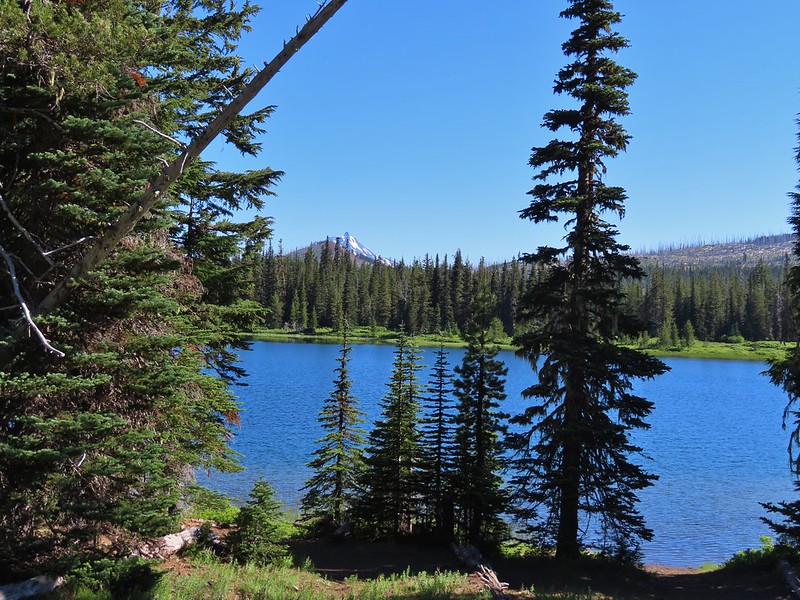 Santiam Lake – July
Santiam Lake – July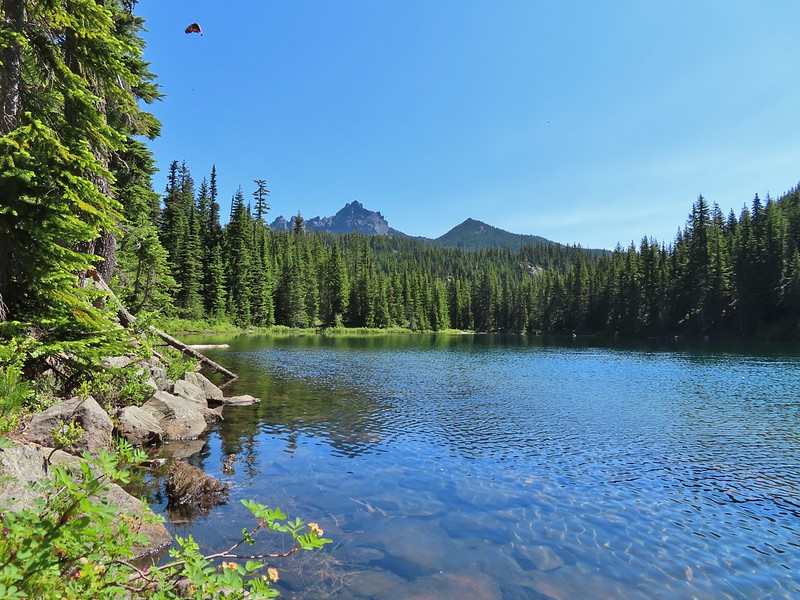 Three Fingered Jack from Lower Berley Lake (and a butterfly photobomb) – July
Three Fingered Jack from Lower Berley Lake (and a butterfly photobomb) – July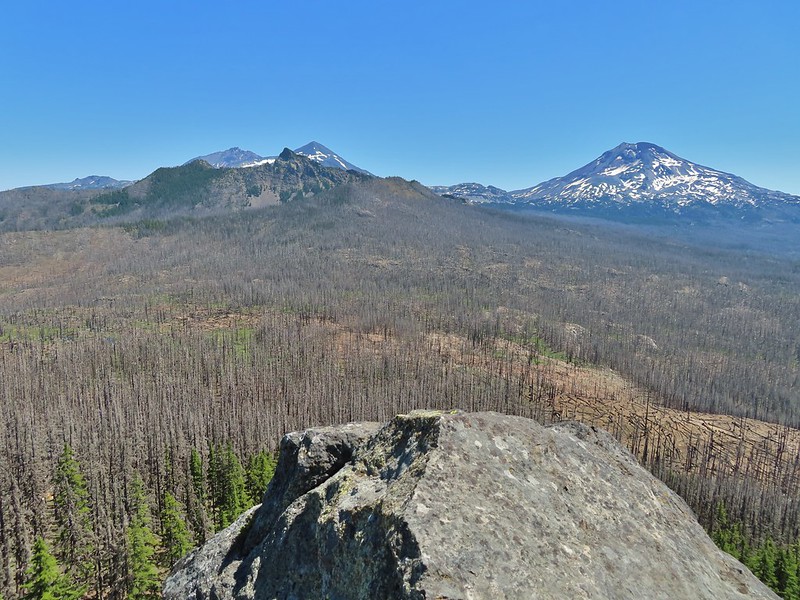 The Husband and Three Sisters from Substitute Point – July
The Husband and Three Sisters from Substitute Point – July Ochoco
Ochoco Red Sun through wildfire smoke from the Monument Rock Wilderness – July
Red Sun through wildfire smoke from the Monument Rock Wilderness – July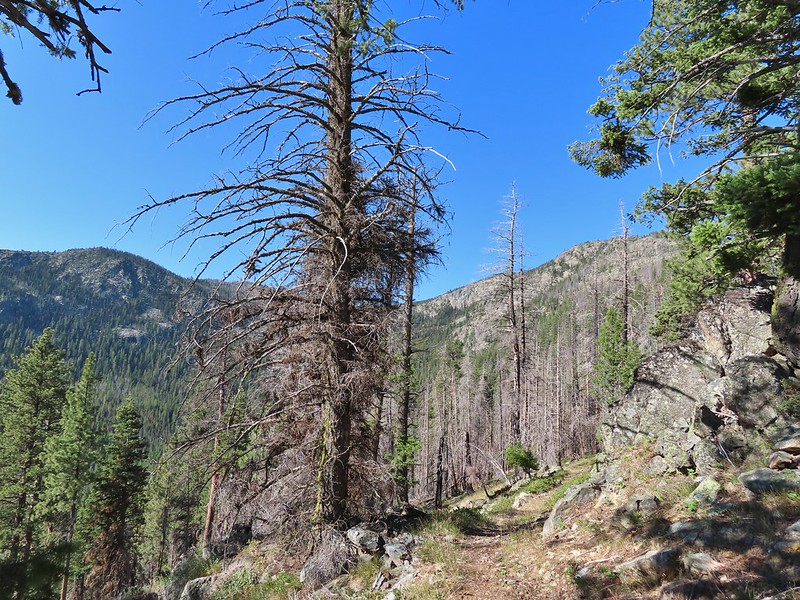 Canyon Mountain Trail, Strawberry Mountain Wilderness – July
Canyon Mountain Trail, Strawberry Mountain Wilderness – July Aldrich Mountains – July
Aldrich Mountains – July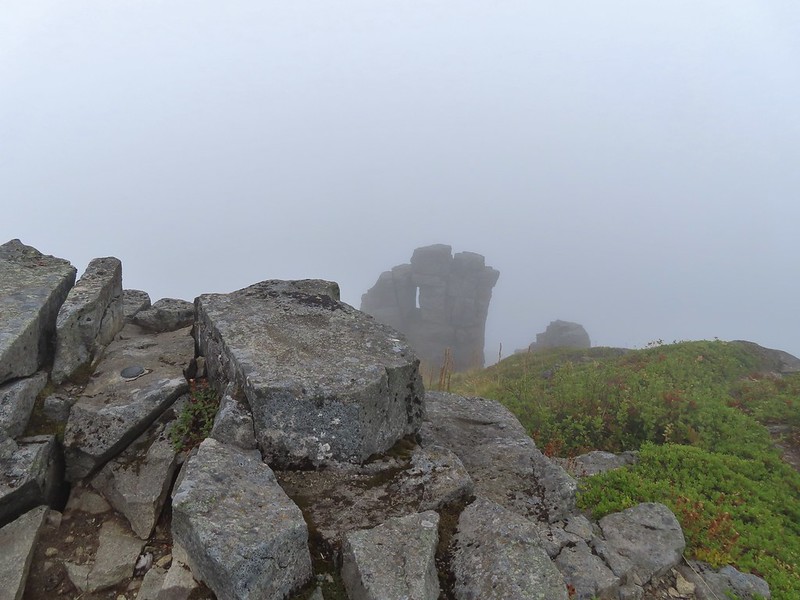 Mt. Mitchell summit on a rare poor weather day – August
Mt. Mitchell summit on a rare poor weather day – August Mt. Bachelor – August
Mt. Bachelor – August Cottonwood Camp, Big Indian Gorge in the Steens Mountain Wilderness – August
Cottonwood Camp, Big Indian Gorge in the Steens Mountain Wilderness – August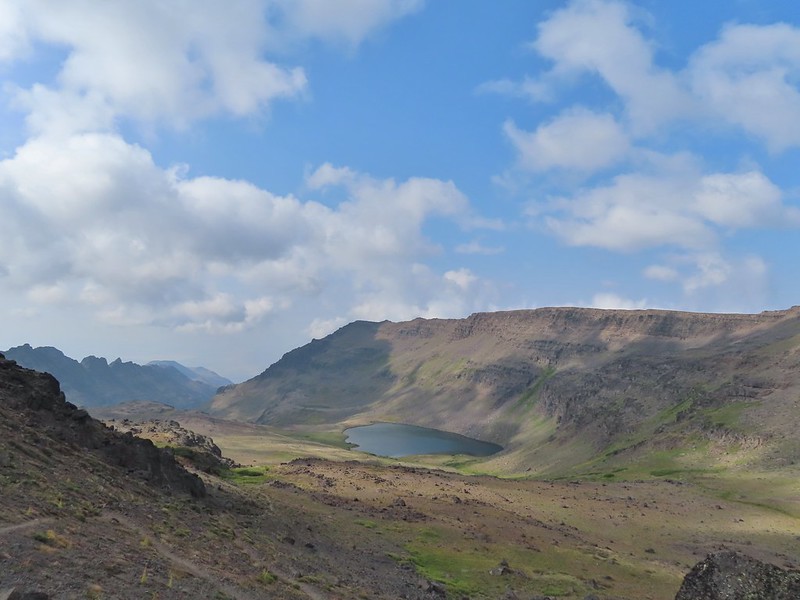 Wildhorse Lake, Steens Mountain Wilderness – August
Wildhorse Lake, Steens Mountain Wilderness – August Evening at the Steens Mountain Resort – August
Evening at the Steens Mountain Resort – August Little Blitzen Gorge – August
Little Blitzen Gorge – August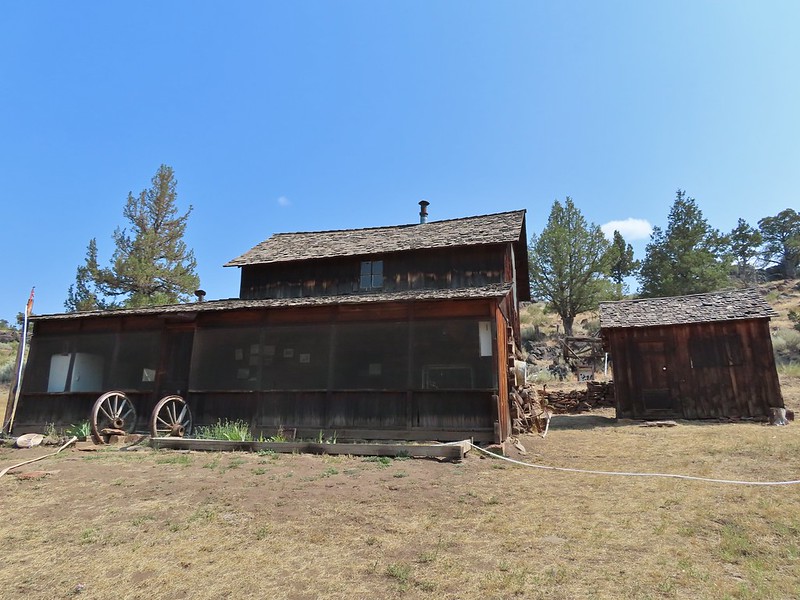 Riddle Ranch – August
Riddle Ranch – August Morning in the Pueblo Mountains – August
Morning in the Pueblo Mountains – August Oregon Desert Trail, Pueblo Mountains – August
Oregon Desert Trail, Pueblo Mountains – August Mt. St. Helens and Spirit Lake – August
Mt. St. Helens and Spirit Lake – August Harmony Falls – August
Harmony Falls – August Loowit Falls – August
Loowit Falls – August Mt. St. Helens from Norway Pass – August
Mt. St. Helens from Norway Pass – August Mt. Hood from the PCT in the Indian Heaven Wilderness – September
Mt. Hood from the PCT in the Indian Heaven Wilderness – September Mt. Adams and Soda Peaks Lake, Trapper Creek Wilderness – September
Mt. Adams and Soda Peaks Lake, Trapper Creek Wilderness – September Jubilee Lake – September
Jubilee Lake – September Rough Fork Trail, Blue Mountains – September
Rough Fork Trail, Blue Mountains – September Heritage Landing Trail, Deschutes River – September
Heritage Landing Trail, Deschutes River – September McDonald-Dunn Forest – October
McDonald-Dunn Forest – October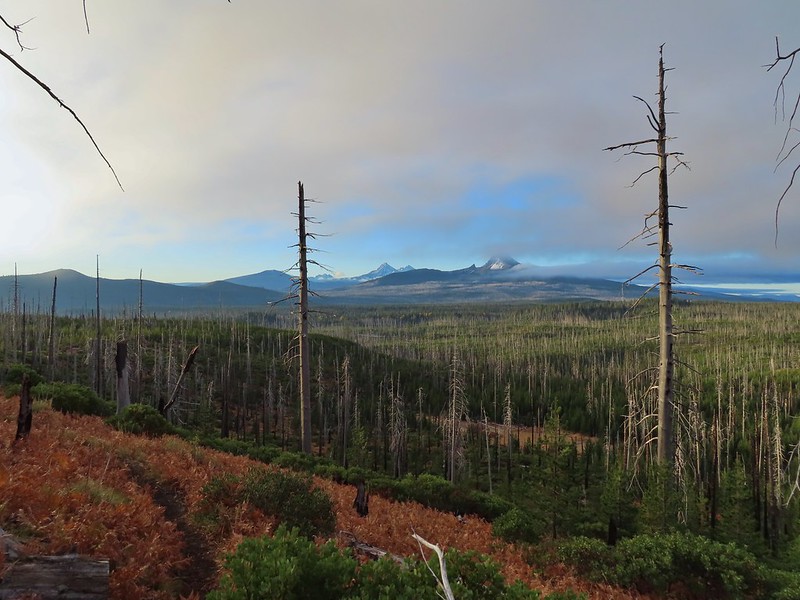 Cascade Mountains from the Mt. Jefferson Wilderness – October
Cascade Mountains from the Mt. Jefferson Wilderness – October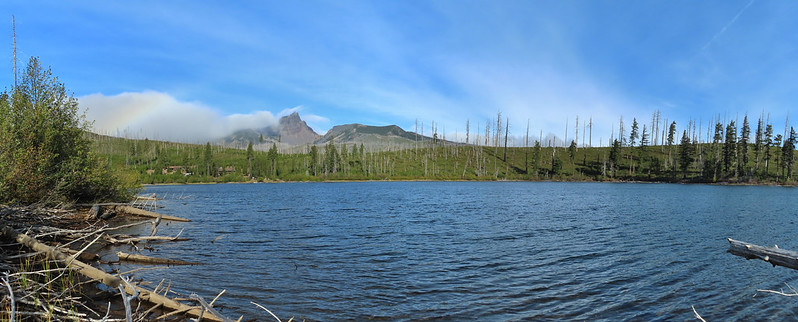 Three Fingered Jack from Round Lake – October
Three Fingered Jack from Round Lake – October Mt. Hood from the Flag Point Lookout
Mt. Hood from the Flag Point Lookout Mt. Hood from Lookout Mountain – October
Mt. Hood from Lookout Mountain – October Silver Falls State Park – October
Silver Falls State Park – October Laurel Hill Wagon Chute – October
Laurel Hill Wagon Chute – October Barlow Ridge, Mt. Hood Wilderness – October
Barlow Ridge, Mt. Hood Wilderness – October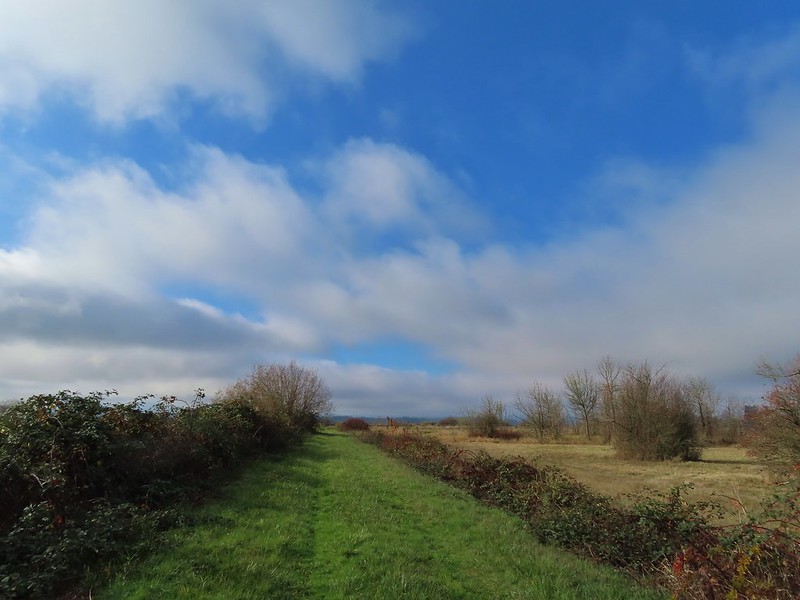 Fern Ridge Wildlife Area – November
Fern Ridge Wildlife Area – November
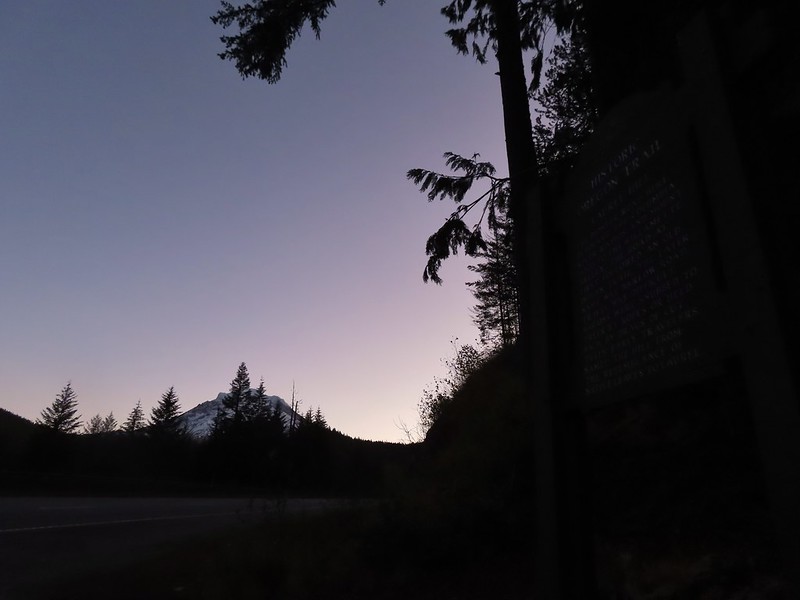 Mt. Hood from the trailhead.
Mt. Hood from the trailhead.




 The left at the 4-way junction.
The left at the 4-way junction.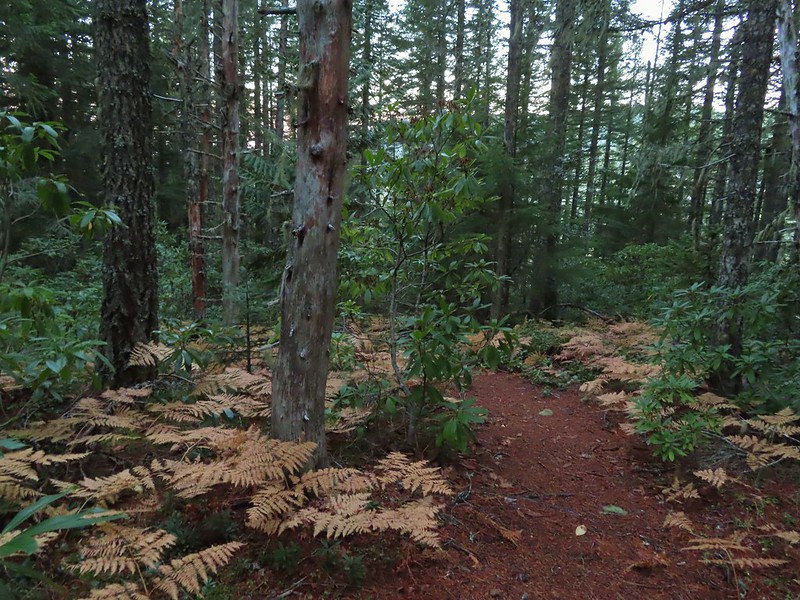
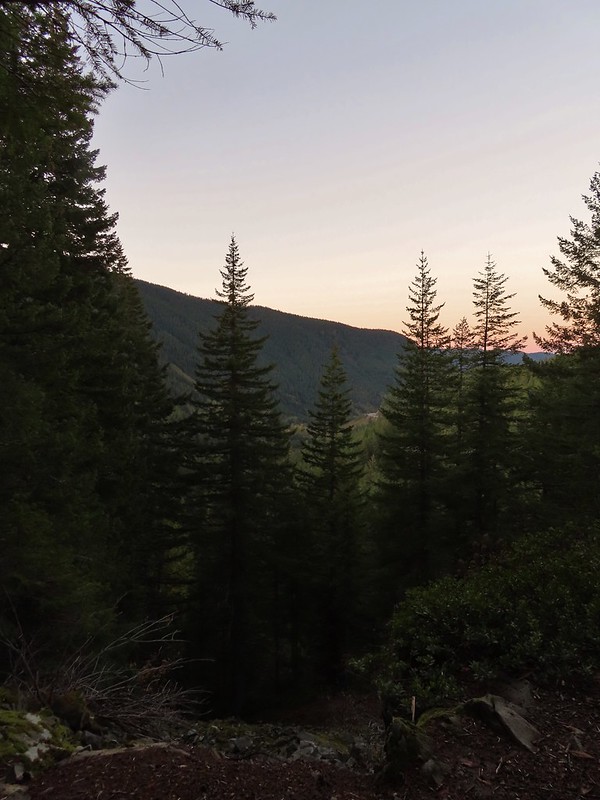
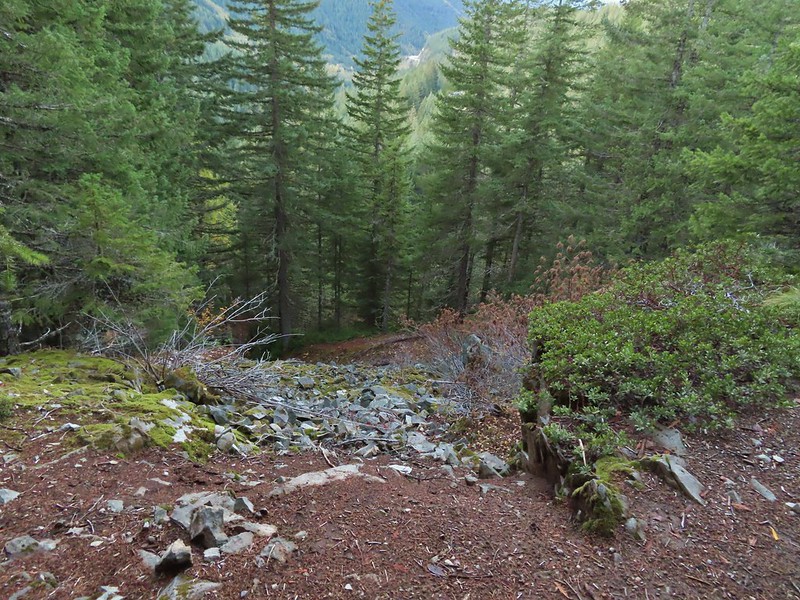 Looking down the chute.
Looking down the chute.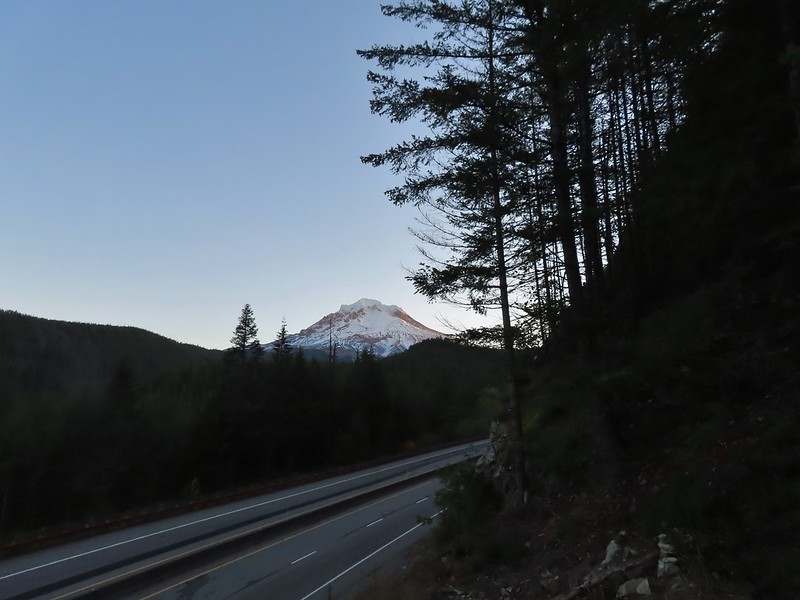
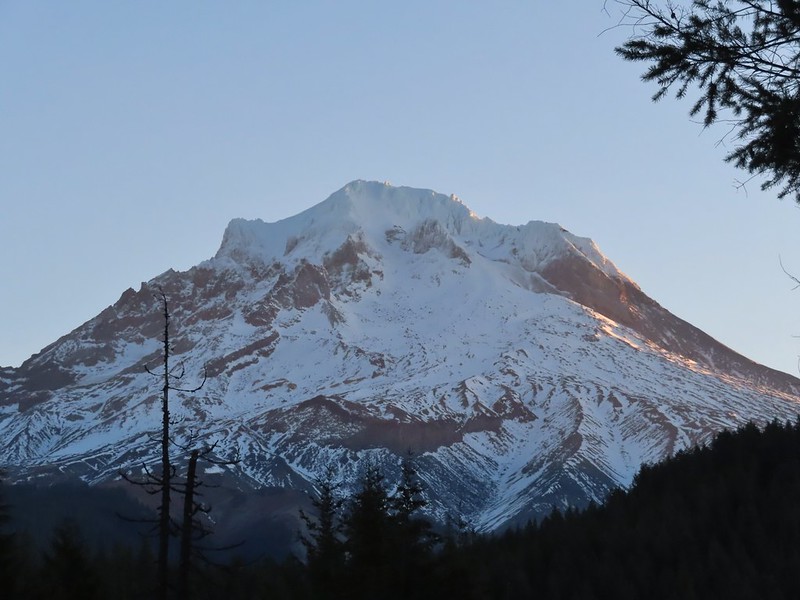 Sunlight starting to hit the SE side of Mt. Hood.
Sunlight starting to hit the SE side of Mt. Hood. Ravens photo bombing a close up of the mountain.
Ravens photo bombing a close up of the mountain.


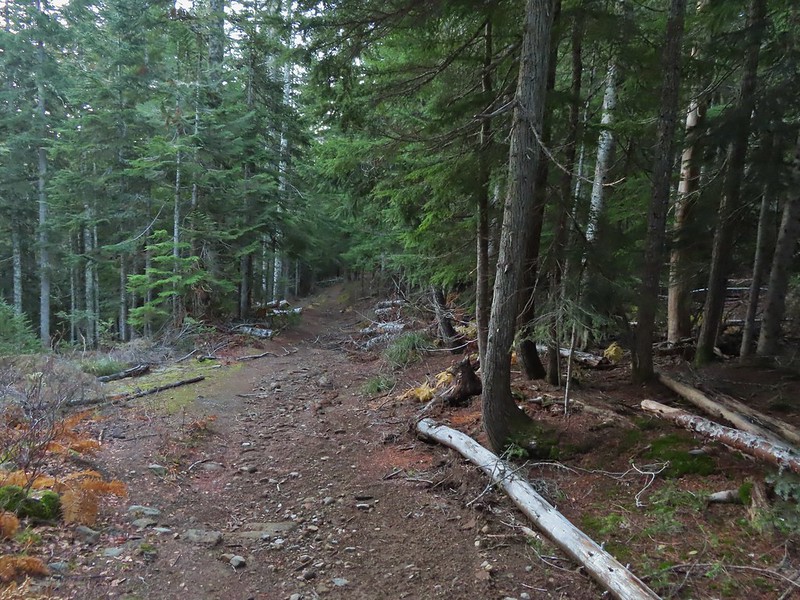 A portion of the original Barlow Wagon Road.
A portion of the original Barlow Wagon Road.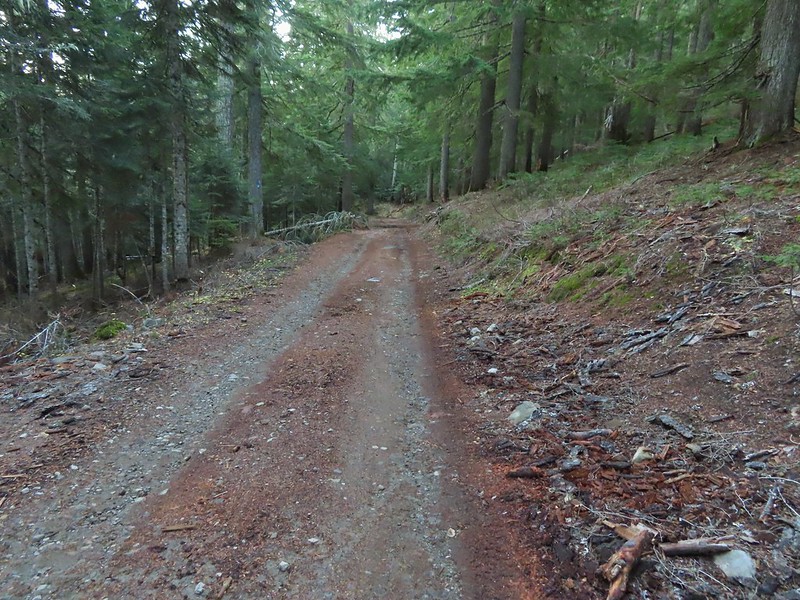 Barlow Road (FR 3530)
Barlow Road (FR 3530)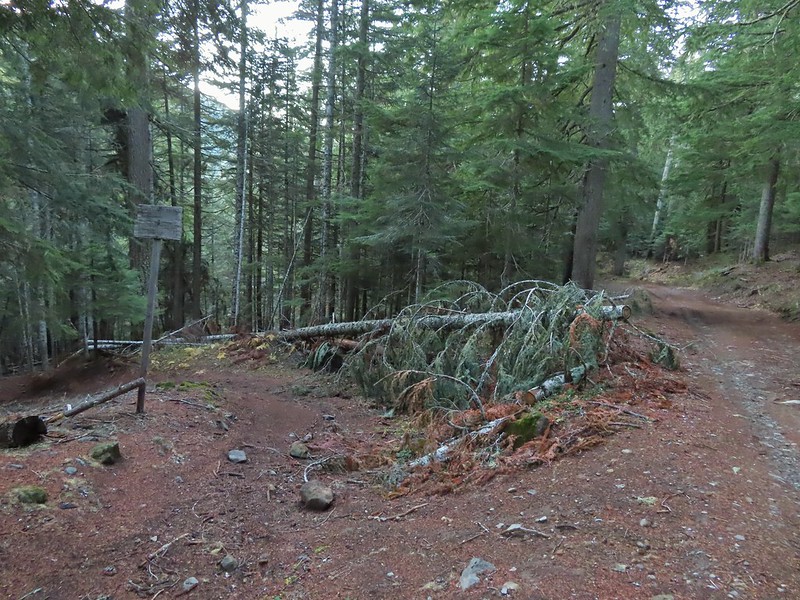

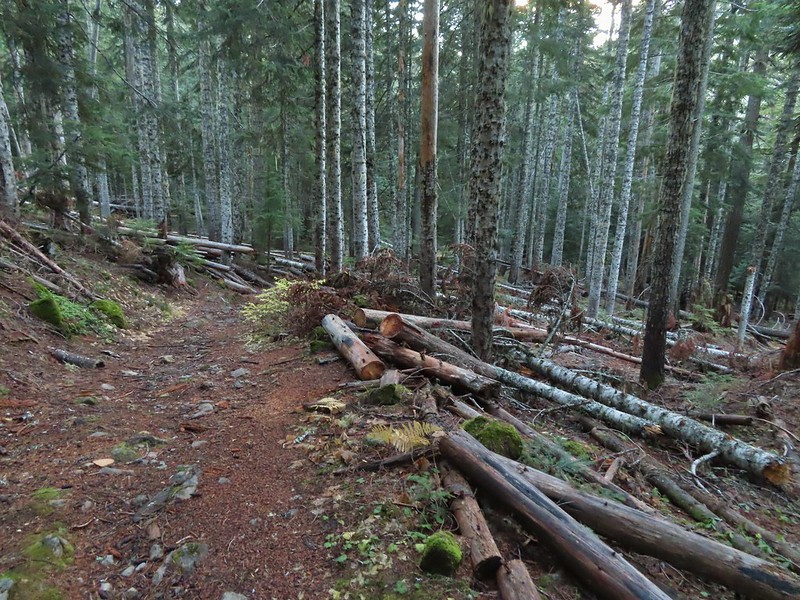


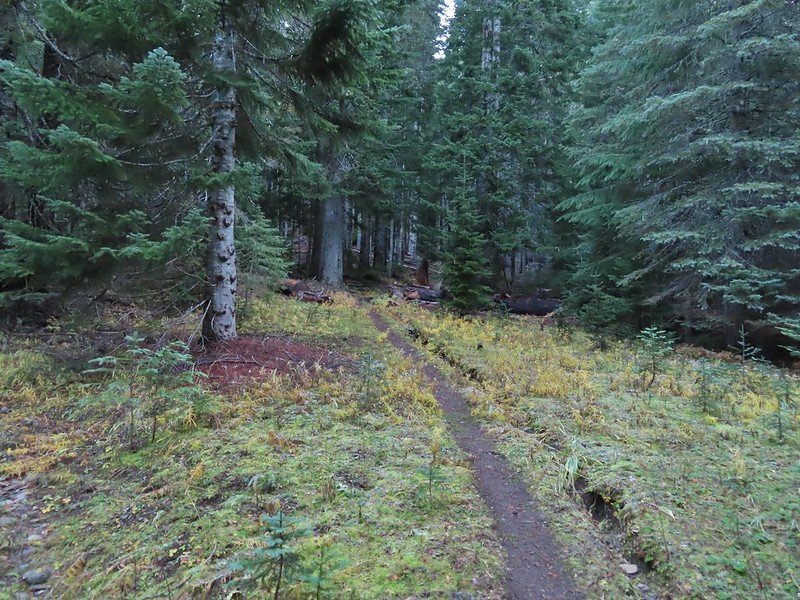



 Wilderness sign along the Barlow Butte Trail.
Wilderness sign along the Barlow Butte Trail.
 Getting steeper.
Getting steeper. This was the worst of the blow down we had to navigate on this section.
This was the worst of the blow down we had to navigate on this section. Nearing the junction.
Nearing the junction.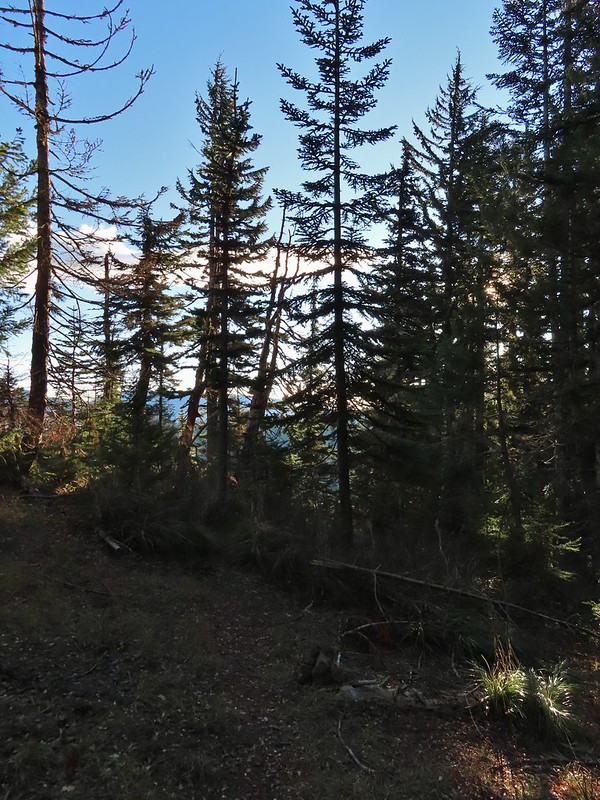
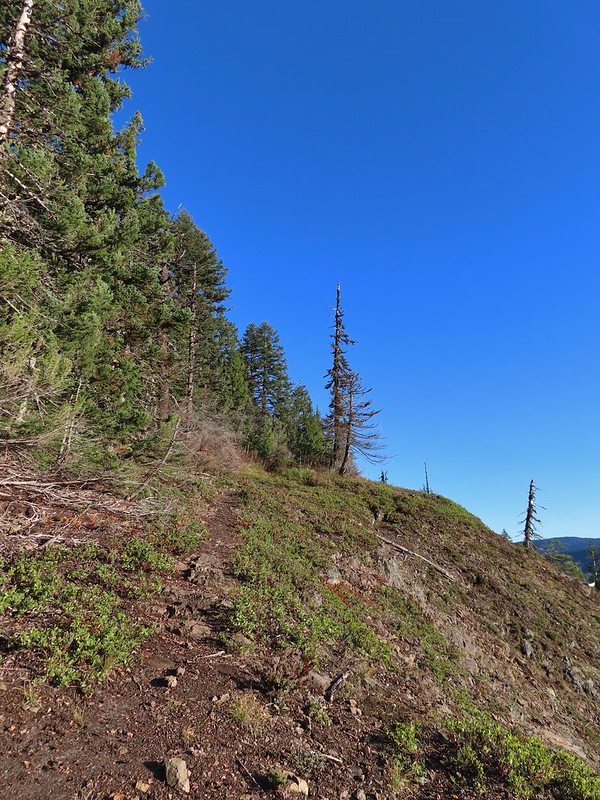
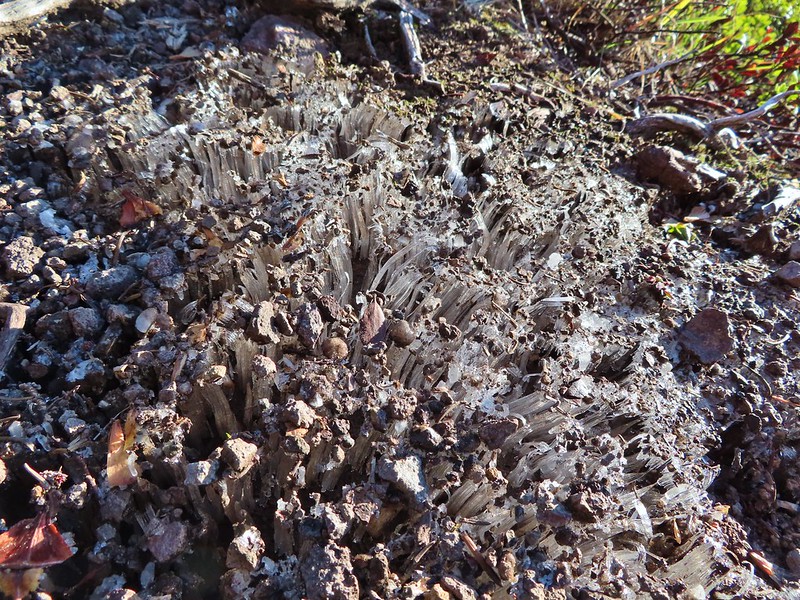 It was a little chilly with temps in the mid 30’s combined with a stiff breeze adding to the wind chill.
It was a little chilly with temps in the mid 30’s combined with a stiff breeze adding to the wind chill. On the right of the far ridge is Bonney Butte (
On the right of the far ridge is Bonney Butte (
 Remains from the lookout.
Remains from the lookout.

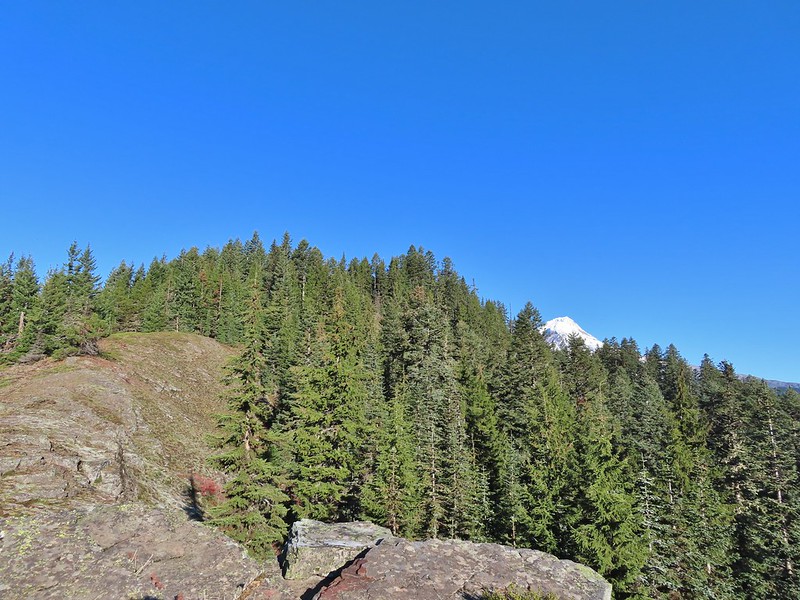 Barlow Butte and the top of Mt. Hood.
Barlow Butte and the top of Mt. Hood. Frog Lake Buttes (
Frog Lake Buttes (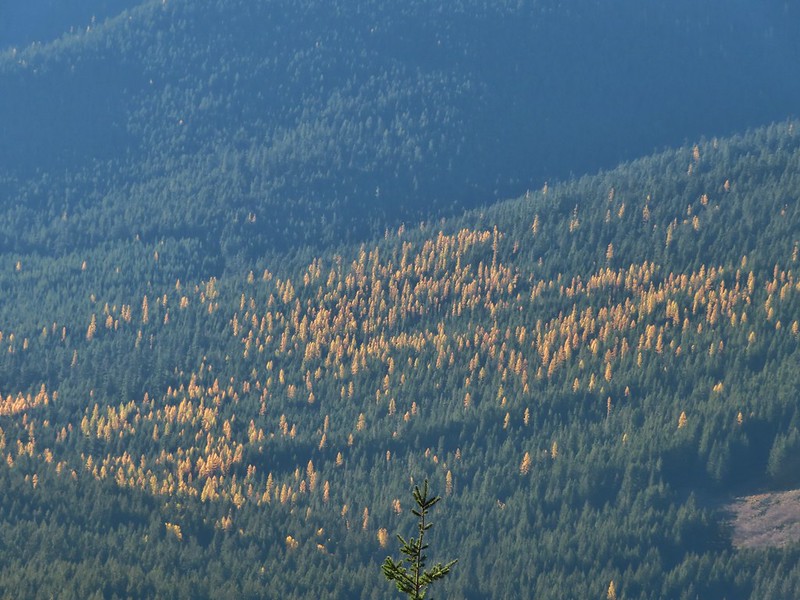 Western larches
Western larches Mt. Jefferson behind some clouds.
Mt. Jefferson behind some clouds. Sisi Butte (double humps) and Bachelor Mountain (
Sisi Butte (double humps) and Bachelor Mountain (
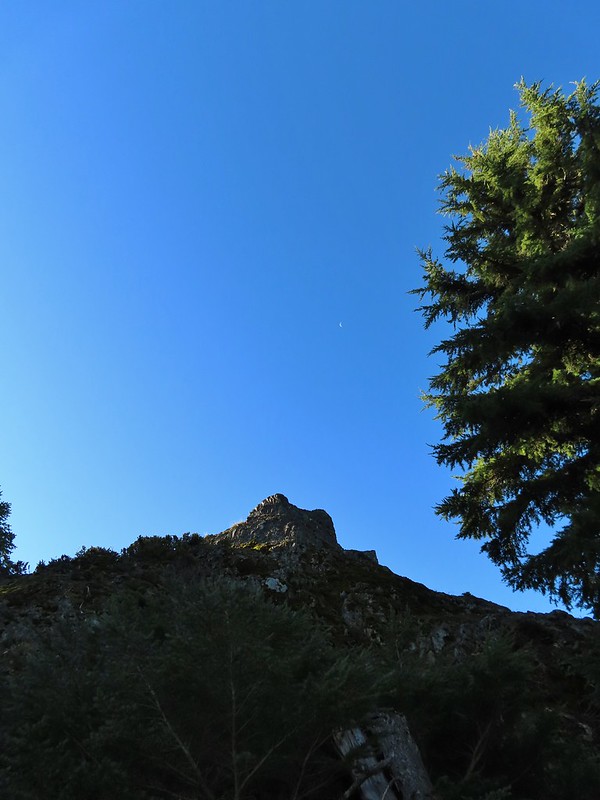


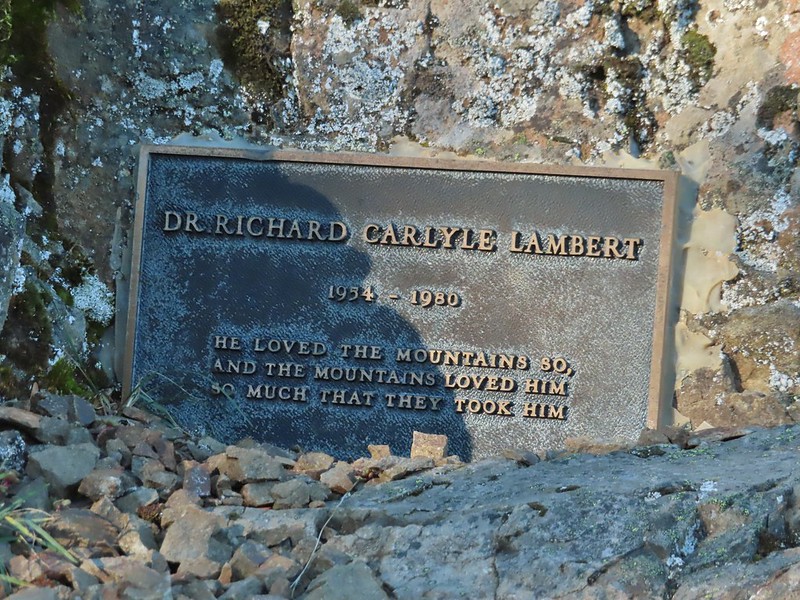
 Barlow Butte to the left of Mt. Hood.
Barlow Butte to the left of Mt. Hood. Mt. Jefferson still behind some clouds.
Mt. Jefferson still behind some clouds.
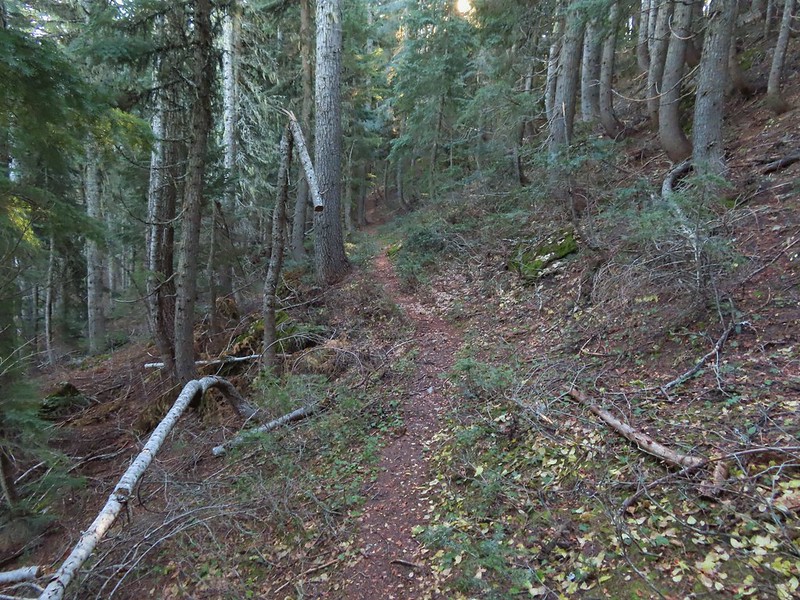
 Parts of Mt. Jefferson peaking through the clouds.
Parts of Mt. Jefferson peaking through the clouds. Tom Dick and Harry Mountain (with the rock fields near the top).
Tom Dick and Harry Mountain (with the rock fields near the top). Small cairns in a meadow.
Small cairns in a meadow. One of the aforementioned diamonds.
One of the aforementioned diamonds. Approaching the high point.
Approaching the high point. Clouds were starting to pass over Lookout Mountain at this point.
Clouds were starting to pass over Lookout Mountain at this point. Mt. Hood from the high point of Barlow Ridge.
Mt. Hood from the high point of Barlow Ridge. Carin in the trees ahead.
Carin in the trees ahead. Elk or deer tracks leading the way.
Elk or deer tracks leading the way. Another section of frost.
Another section of frost.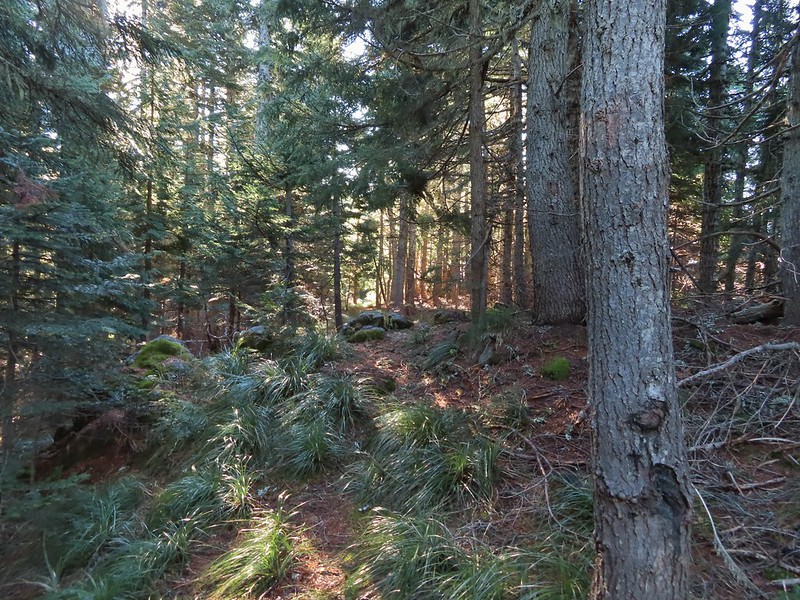 We took this as a blaze.
We took this as a blaze.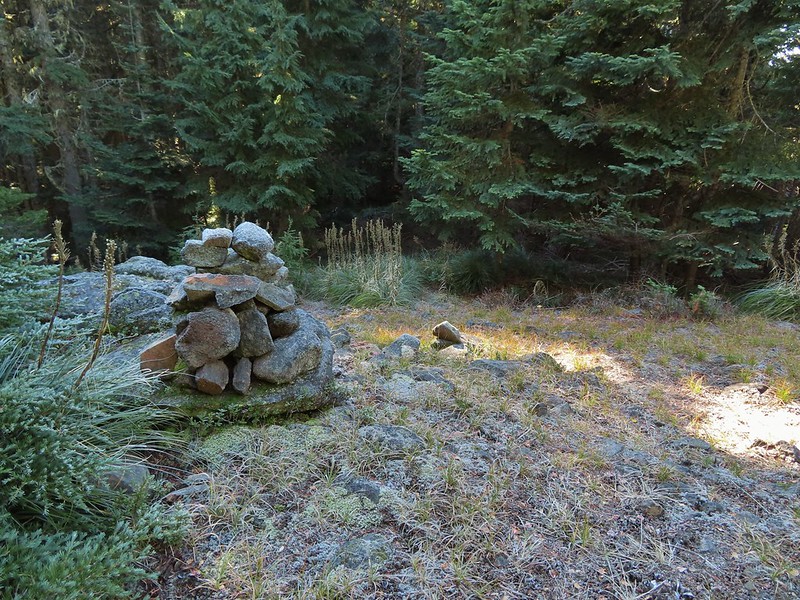 That blaze led to this large cairn.
That blaze led to this large cairn. Things were starting to get interesting here.
Things were starting to get interesting here. Stopped here to listen for pikas, no luck though.
Stopped here to listen for pikas, no luck though. This could be trail.
This could be trail. Still on the right track, note the folded trail sign on the tree at center.
Still on the right track, note the folded trail sign on the tree at center. The small meadow.
The small meadow. Officially off-trail now.
Officially off-trail now. This looked like a place the trail would go.
This looked like a place the trail would go. A final look at Mt. Hood from Barlow Ridge.
A final look at Mt. Hood from Barlow Ridge.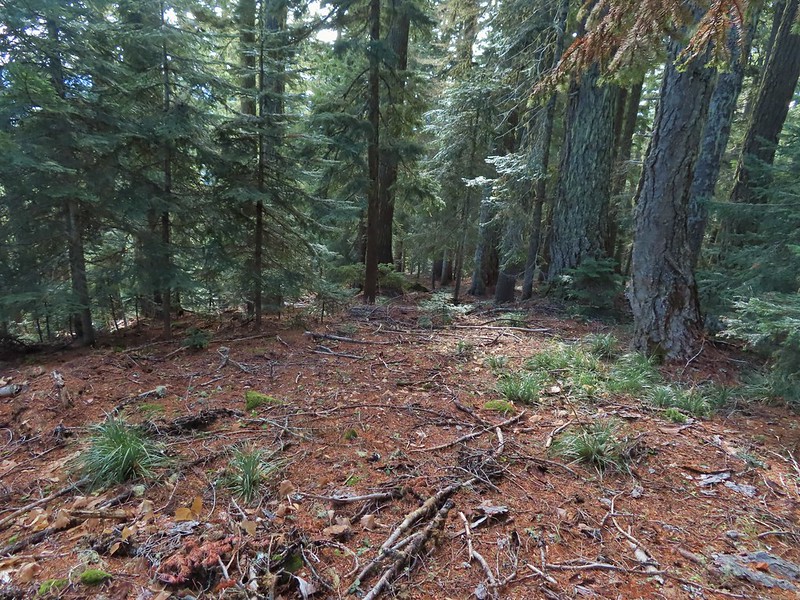 This doesn’t look so bad.
This doesn’t look so bad. One of several big trees we encountered.
One of several big trees we encountered. Little orange mushrooms, how appropriate for Halloween.
Little orange mushrooms, how appropriate for Halloween.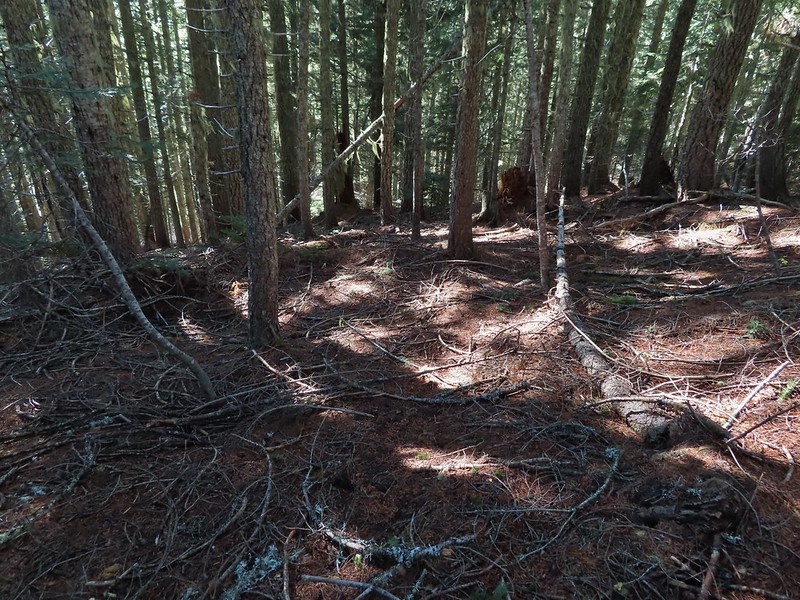 Starting to encounter more debris.
Starting to encounter more debris. If there had been a trail good luck finding it.
If there had been a trail good luck finding it.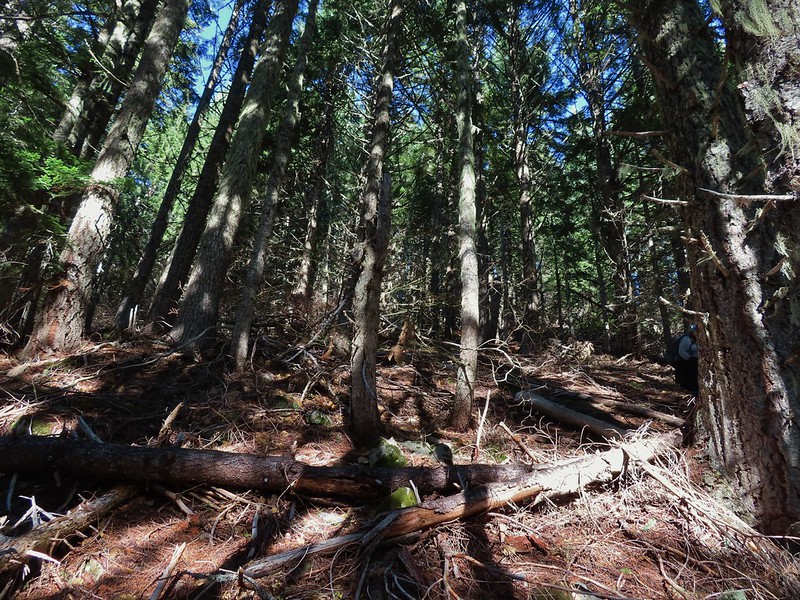 Heather coming down behind me.
Heather coming down behind me. Pretty decent game trail here.
Pretty decent game trail here.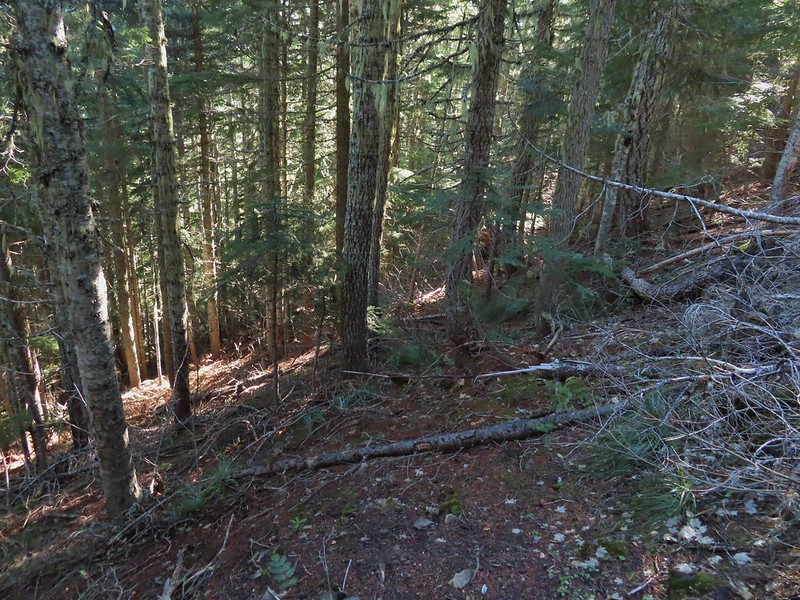 This section was fun.
This section was fun. A bigger orange mushroom.
A bigger orange mushroom.
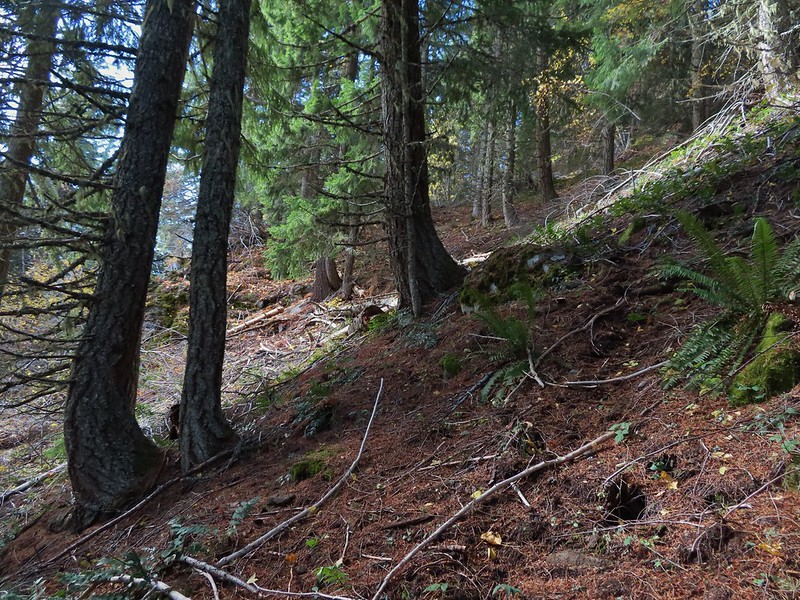 Uphill on this game trail.
Uphill on this game trail. Thickets of brush kept us from getting all the way over to the ridge we needed so we just kept going downhill knowing that we would eventually run into one of the forest roads at the bottom.
Thickets of brush kept us from getting all the way over to the ridge we needed so we just kept going downhill knowing that we would eventually run into one of the forest roads at the bottom.
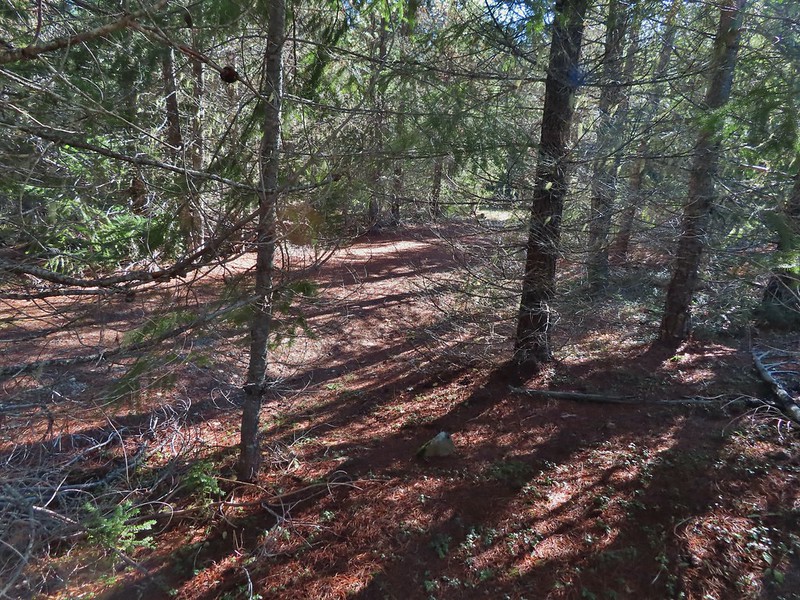 Look Ma a road!
Look Ma a road! It doesn’t look that steep from down here.
It doesn’t look that steep from down here.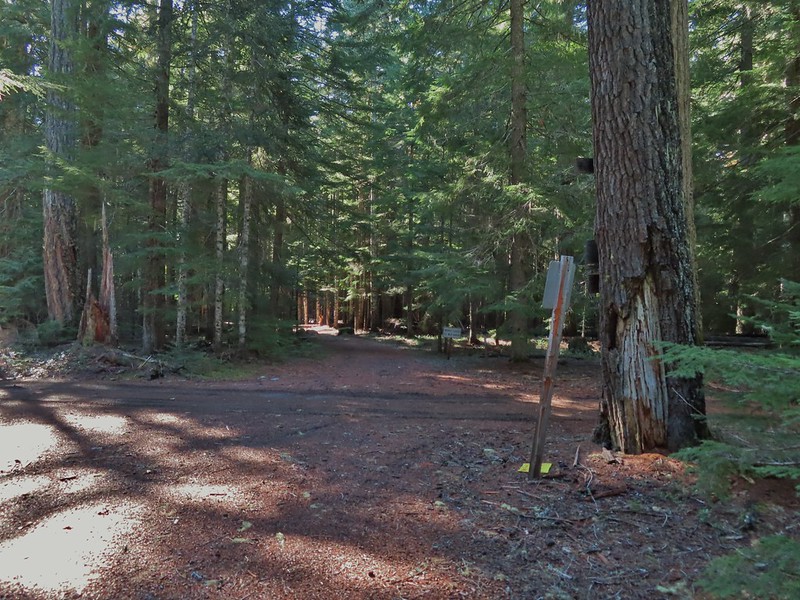 Barlow Road.
Barlow Road.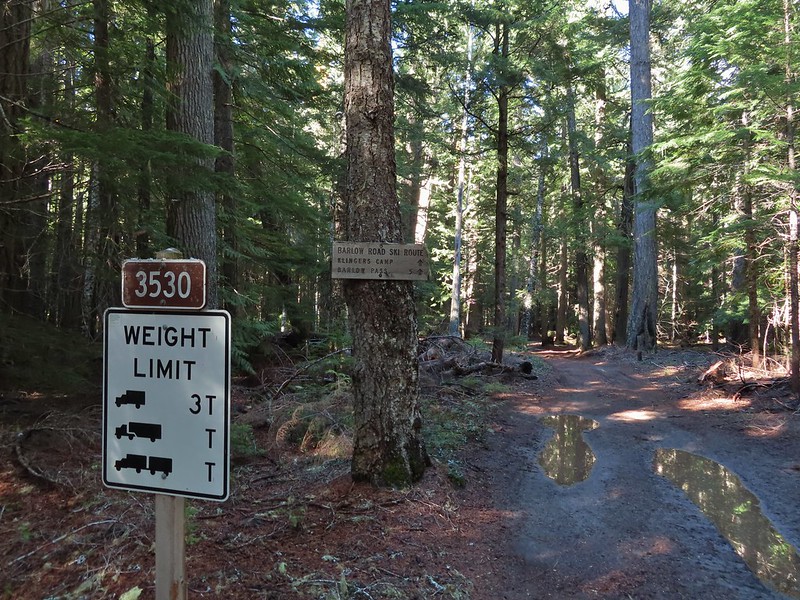



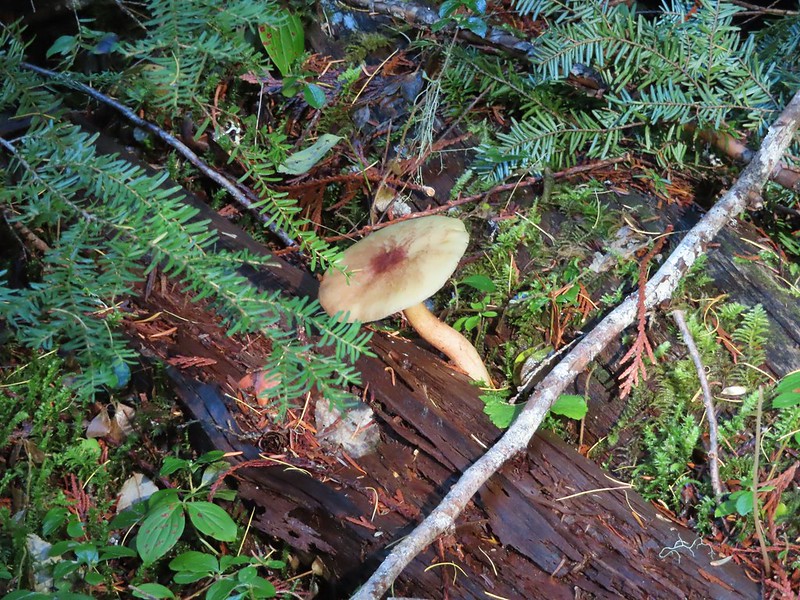

 Western larches above Barlow Road.
Western larches above Barlow Road. Grindstone Campground
Grindstone Campground
 Barlow Creek
Barlow Creek Crossing Barlow Creek near Devil’s Half Acre Meadow.
Crossing Barlow Creek near Devil’s Half Acre Meadow. Clouds on top of Mt. Hood towering over the trees.
Clouds on top of Mt. Hood towering over the trees.
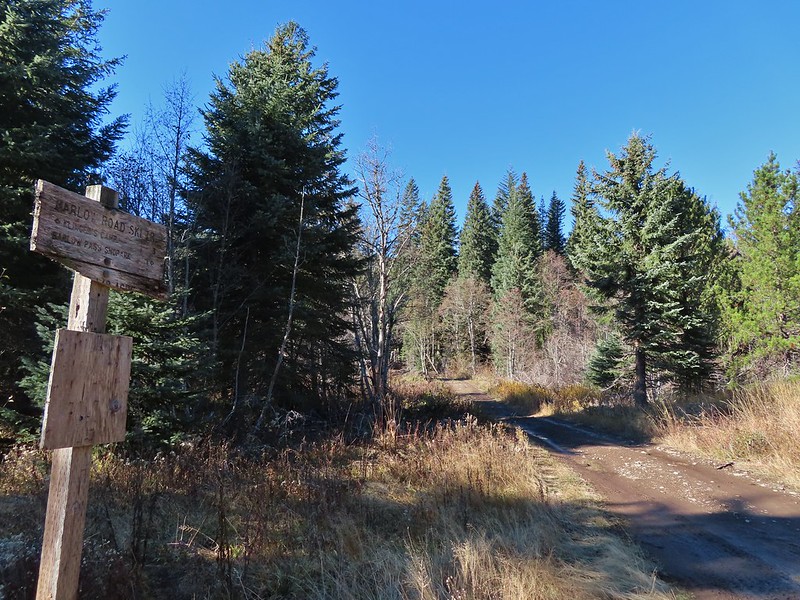 Barlow Road at the campground.
Barlow Road at the campground.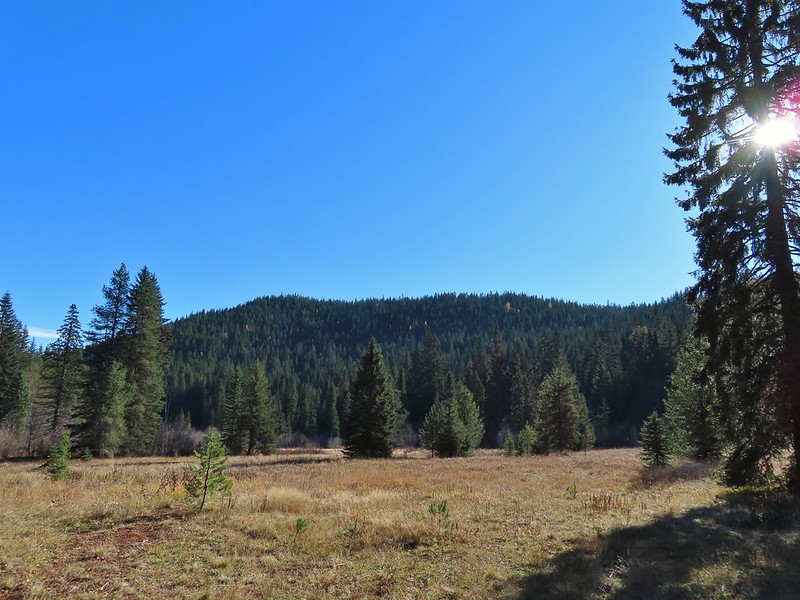 Devil’s Half Acre Meadow.
Devil’s Half Acre Meadow. Finally back to where we’d left the road in the morning.
Finally back to where we’d left the road in the morning. Arriving back at the Barlow Pass Trailhead
Arriving back at the Barlow Pass Trailhead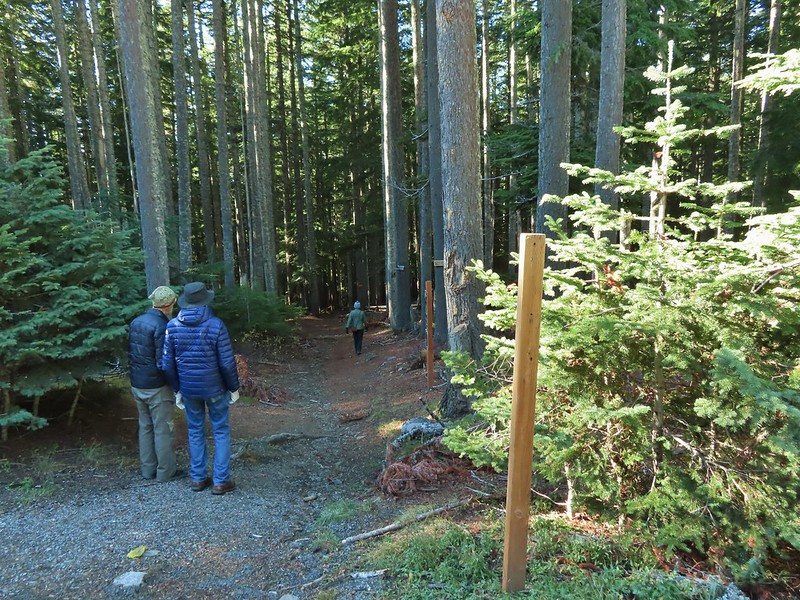 The first other people (not counting the two drivers in the pickups) that we’d seen all day.
The first other people (not counting the two drivers in the pickups) that we’d seen all day.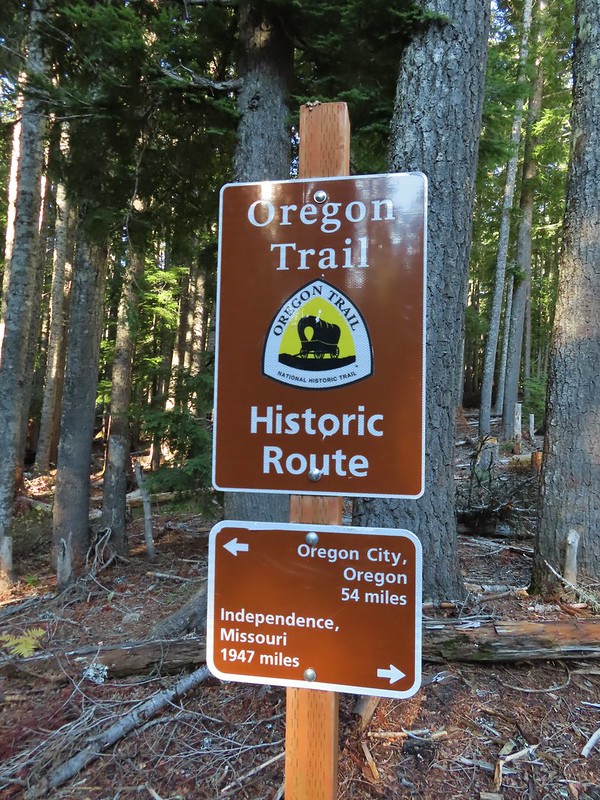
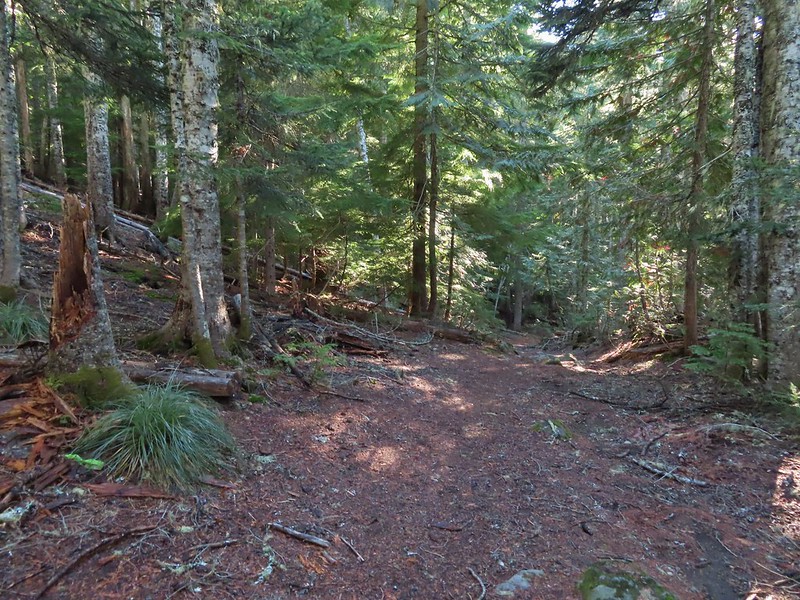




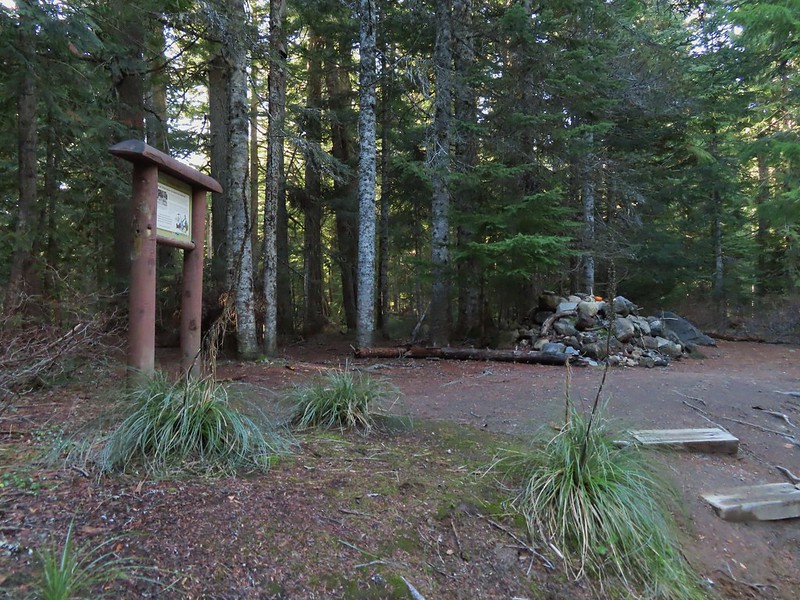
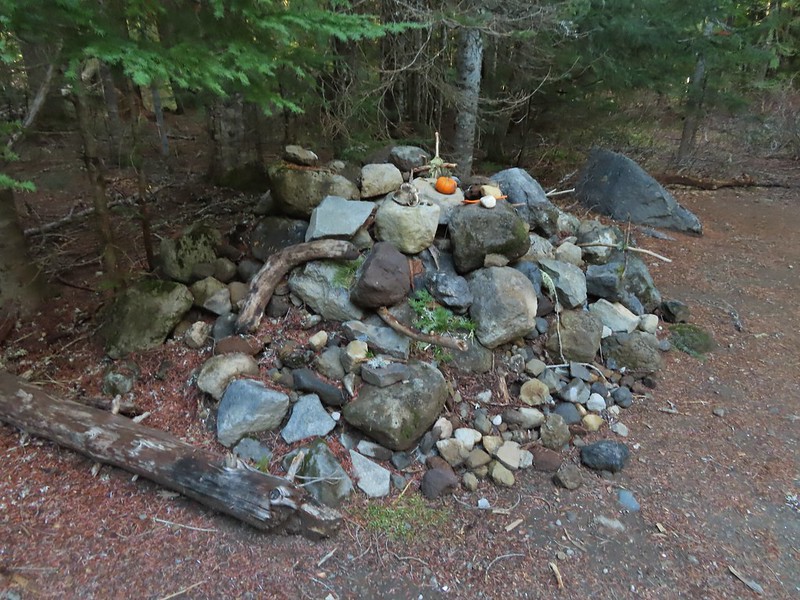

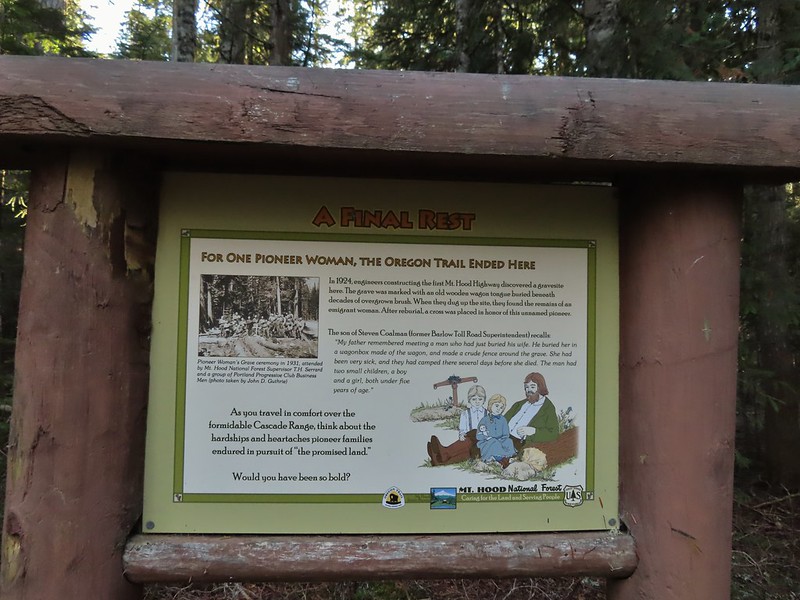
 East Fork Salmon River
East Fork Salmon River
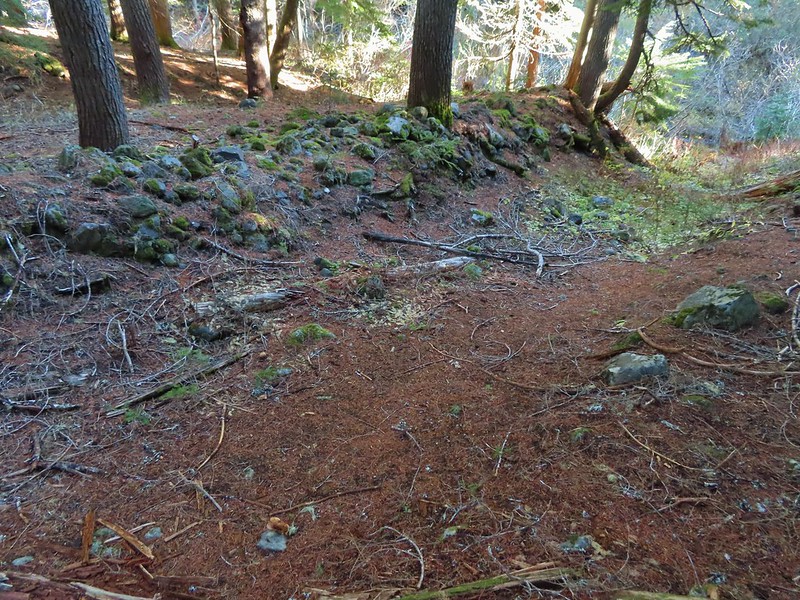

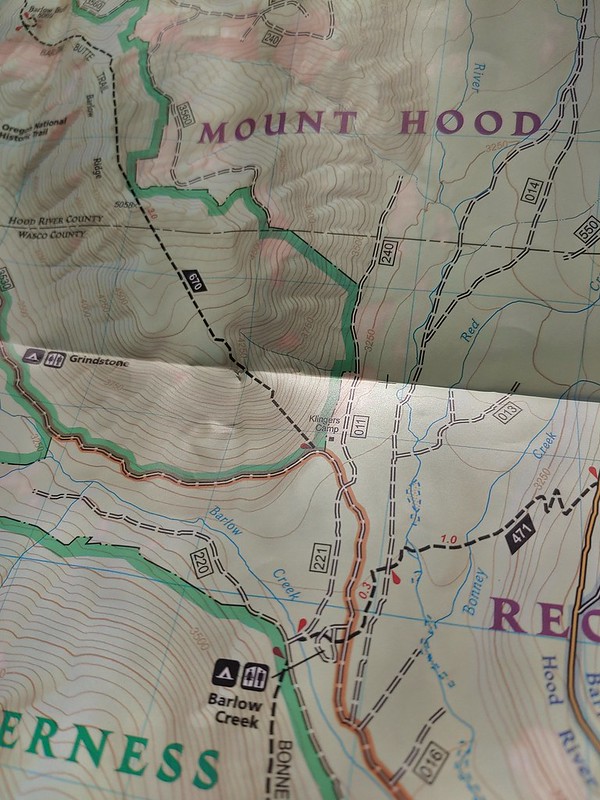
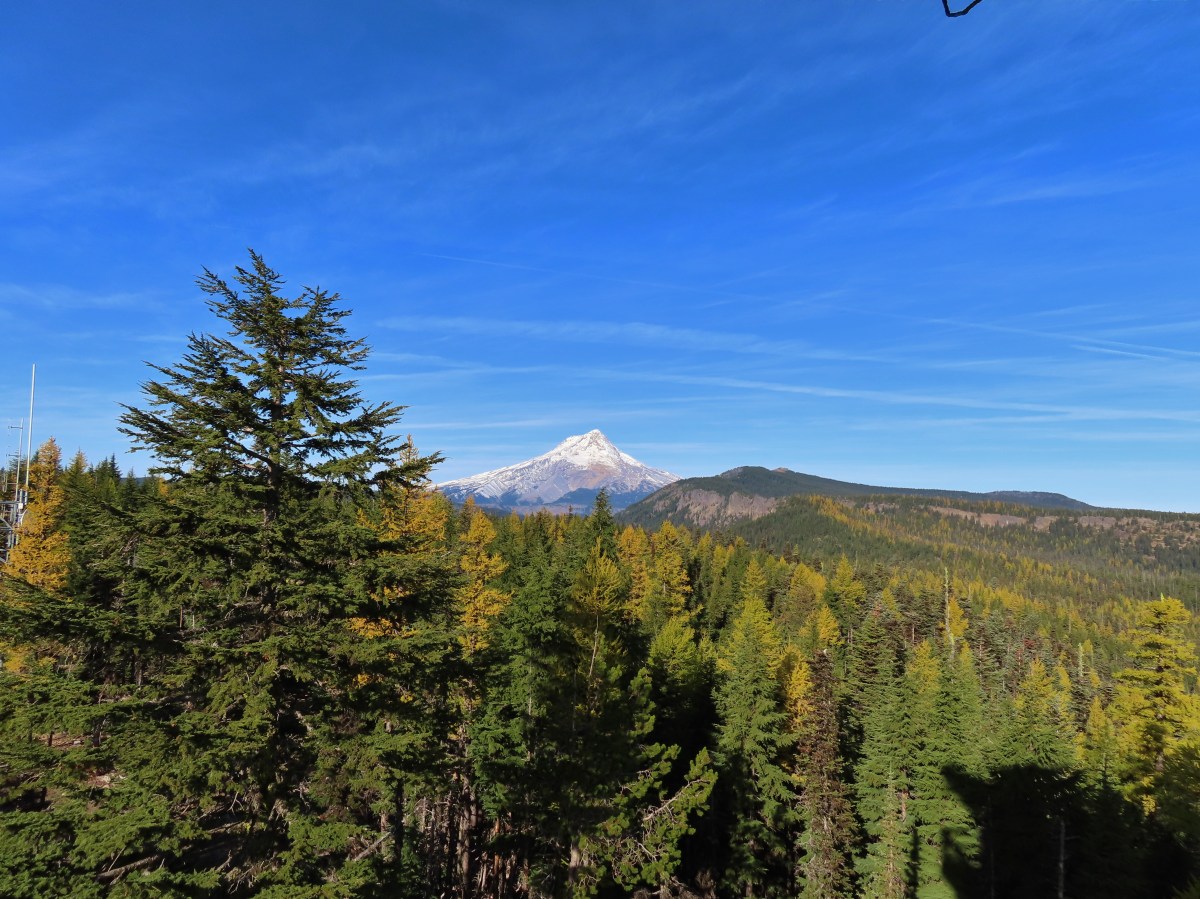

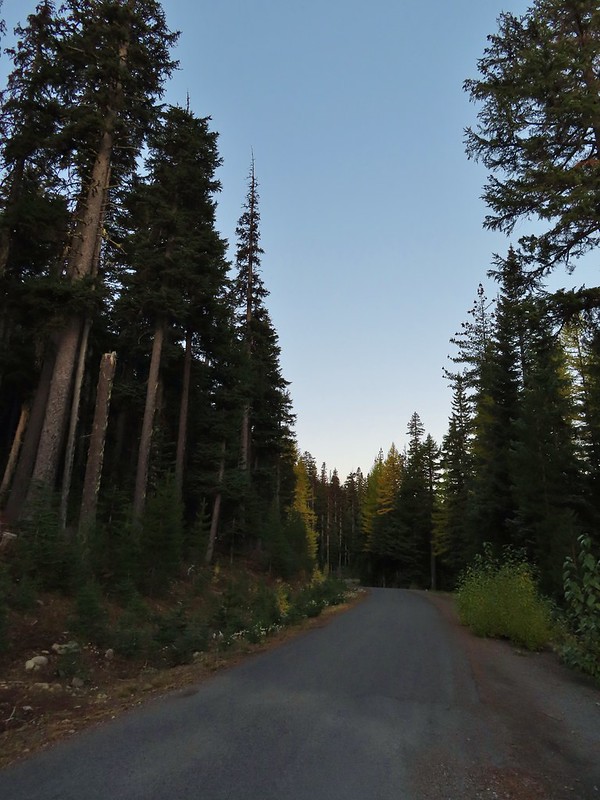 A few larches along Road 2730
A few larches along Road 2730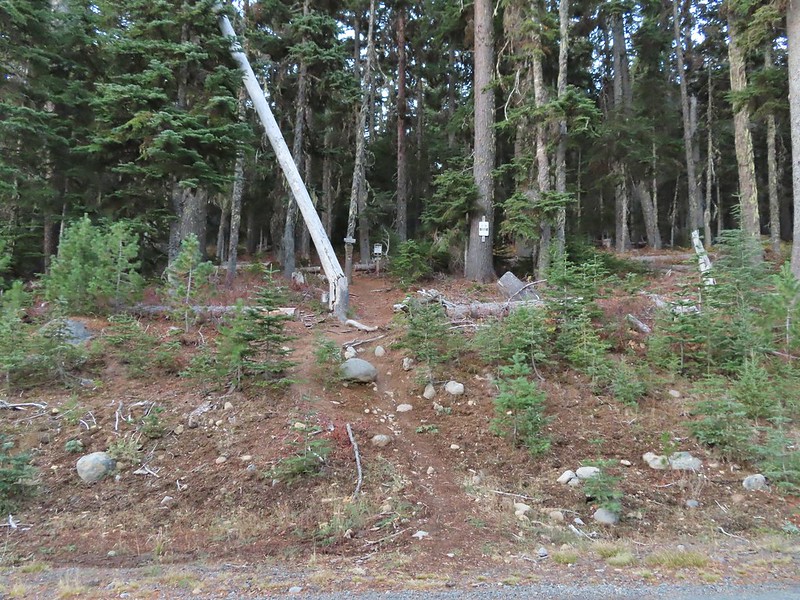 Fret Creek Trail across from the pullout.
Fret Creek Trail across from the pullout. Entering the Badger Creek Wilderness.
Entering the Badger Creek Wilderness.



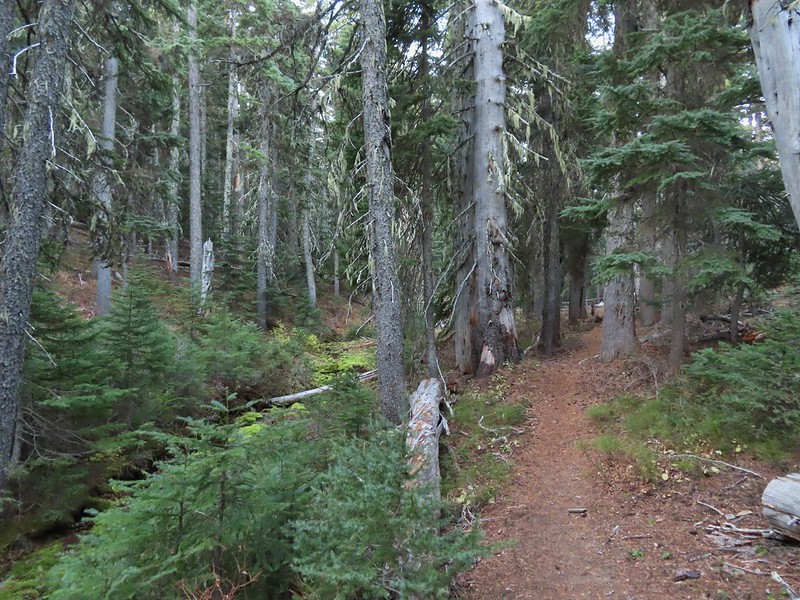
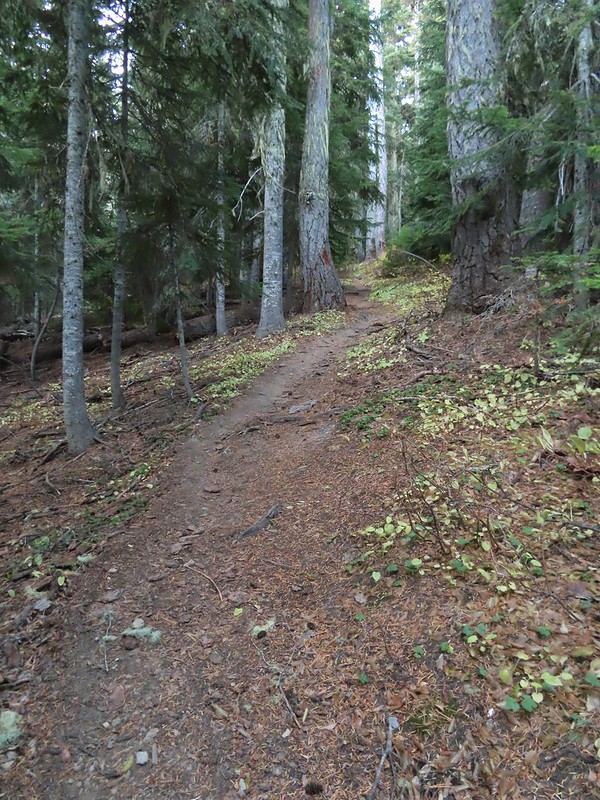 Starting to climb again.
Starting to climb again. Sign for Oval Lake.
Sign for Oval Lake.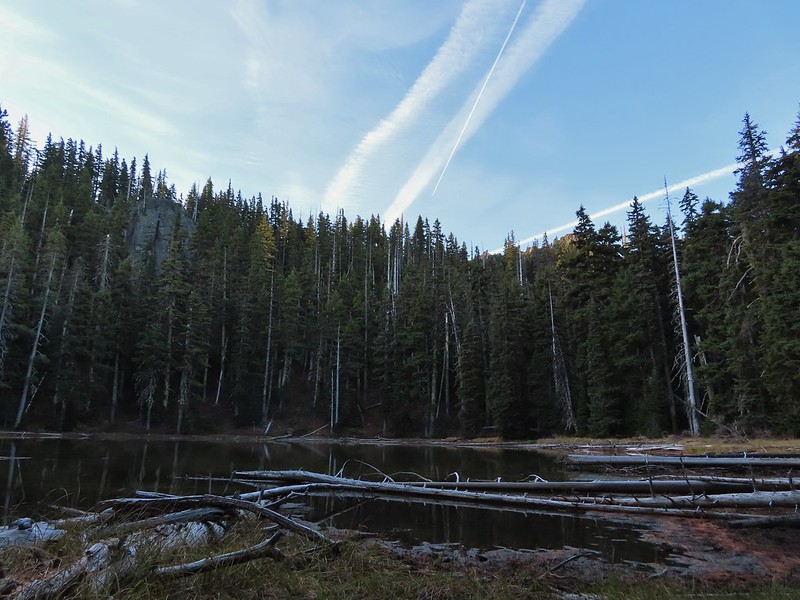
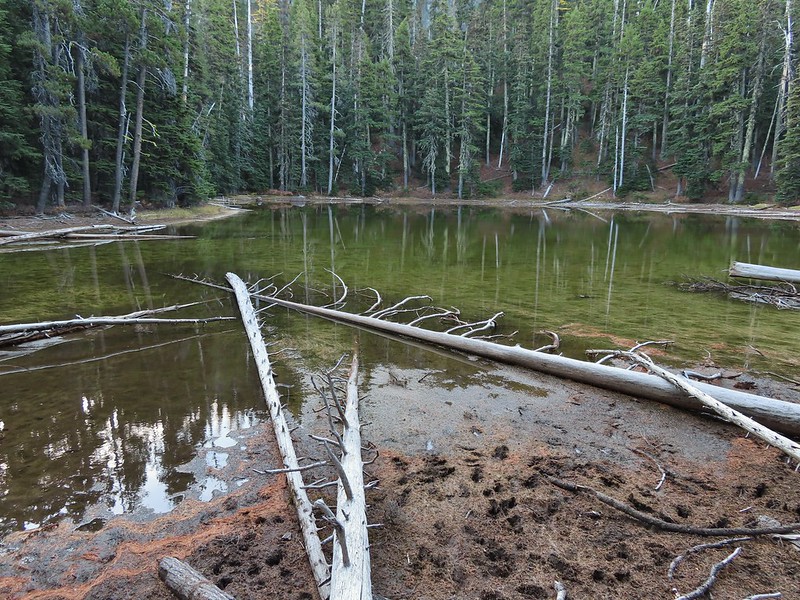
 June 28, 2014
June 28, 2014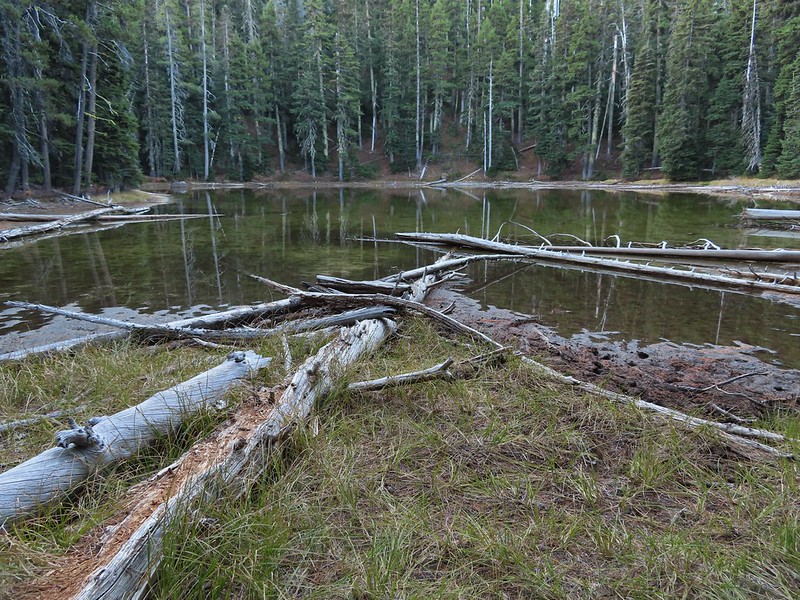
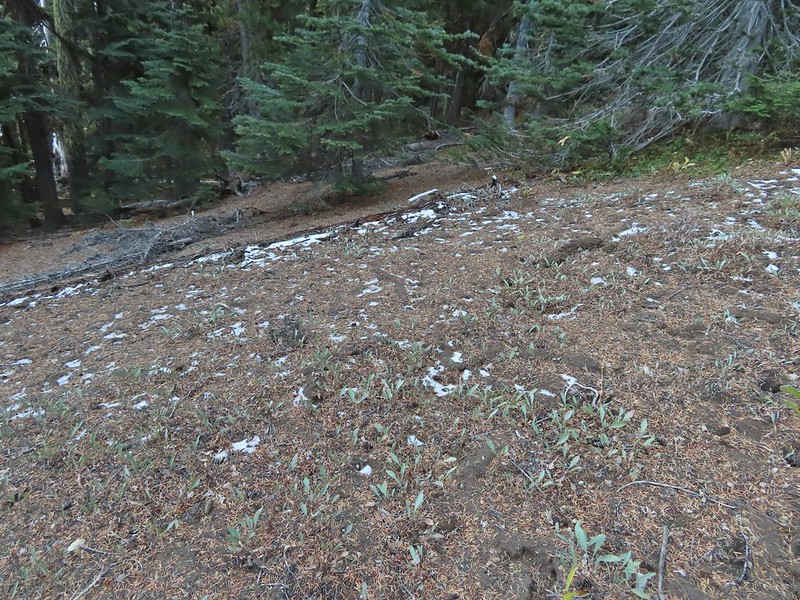 A bit of snow left from the recent snowfall.
A bit of snow left from the recent snowfall. The Divide Trail.
The Divide Trail.
 Some snow near a switchback along the trail.
Some snow near a switchback along the trail.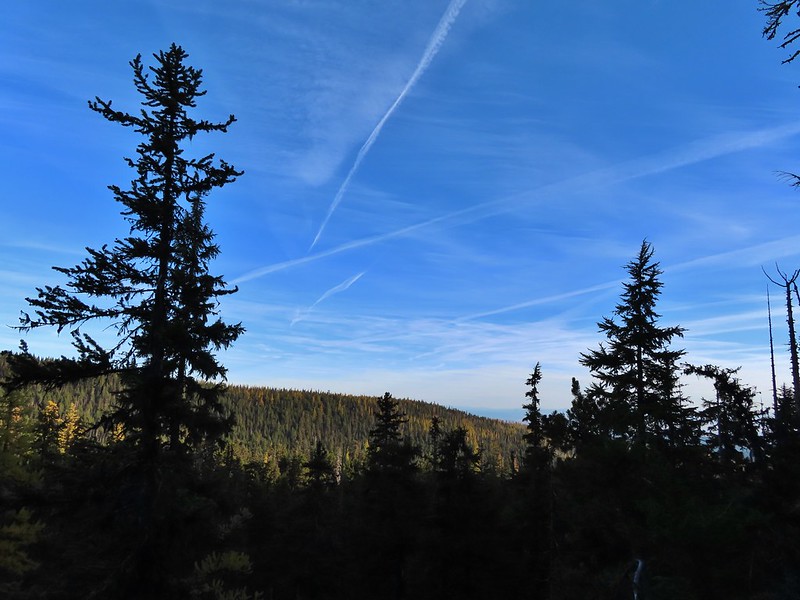 Mt. Adams starting to peak over a ridge to the north.
Mt. Adams starting to peak over a ridge to the north. Mt. Adams with some larch trees in the foreground.
Mt. Adams with some larch trees in the foreground.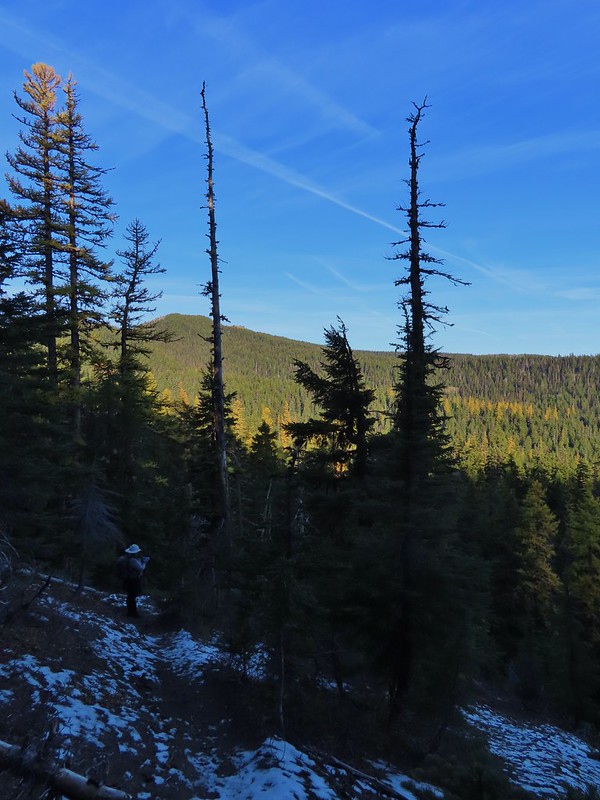 Lookout Mountain from the Divide Trail (The bare peak in between the two bare snags. Just to the right of the left snag.)
Lookout Mountain from the Divide Trail (The bare peak in between the two bare snags. Just to the right of the left snag.)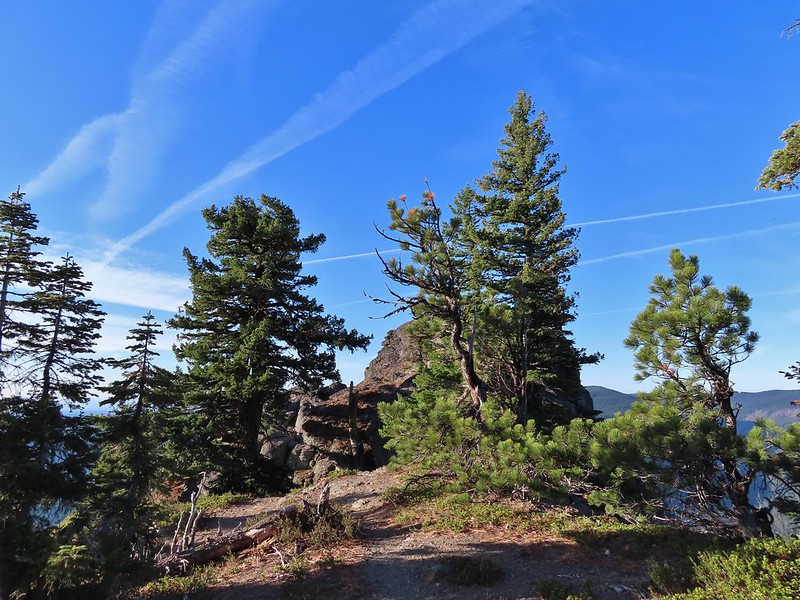 Side trail to Palisade Point.
Side trail to Palisade Point. Broken Top, The Three Sisters, Mt. Washington, Three Fingered Jack (just the very top), Mt. Jefferson, and Olallie Butte (
Broken Top, The Three Sisters, Mt. Washington, Three Fingered Jack (just the very top), Mt. Jefferson, and Olallie Butte ( Mt. Jefferson with the tip of Three Fingered Jack to the left and Olallie Butte to the right.
Mt. Jefferson with the tip of Three Fingered Jack to the left and Olallie Butte to the right. Mt. Hood peaking up over the rocks.
Mt. Hood peaking up over the rocks.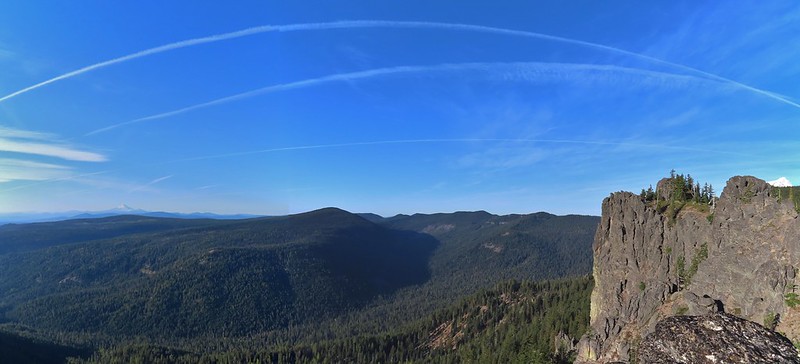 Panoramic view with Badger Creeks valley below.
Panoramic view with Badger Creeks valley below.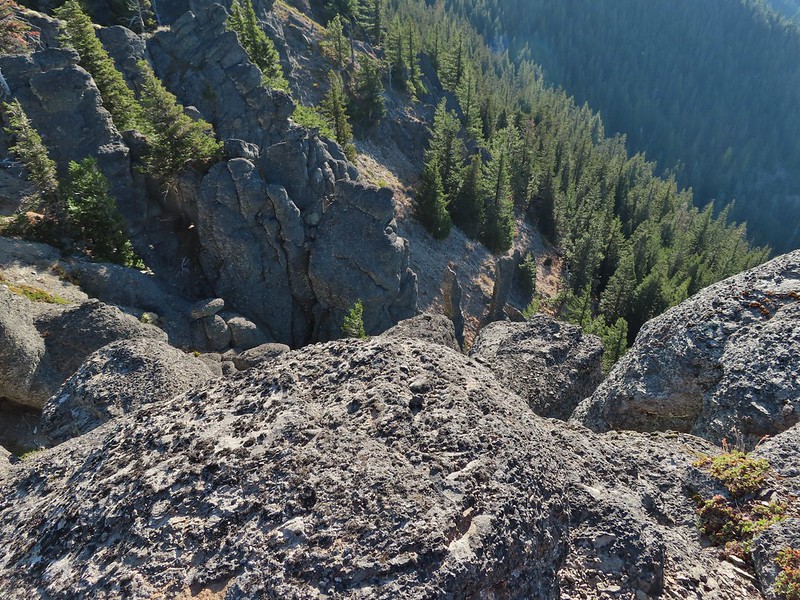 Rocks below Palisade Point.
Rocks below Palisade Point. We ran into this jumble of downed trees shortly after leaving Palisade Point but fortunately it was the worst of the obstacles.
We ran into this jumble of downed trees shortly after leaving Palisade Point but fortunately it was the worst of the obstacles. Flag Point Lookout from the trail.
Flag Point Lookout from the trail. A small meadow that was full of flowers a couple of months ago.
A small meadow that was full of flowers a couple of months ago. A stand of larches.
A stand of larches. A better view of Mt. Hood.
A better view of Mt. Hood. Zoomed in.
Zoomed in.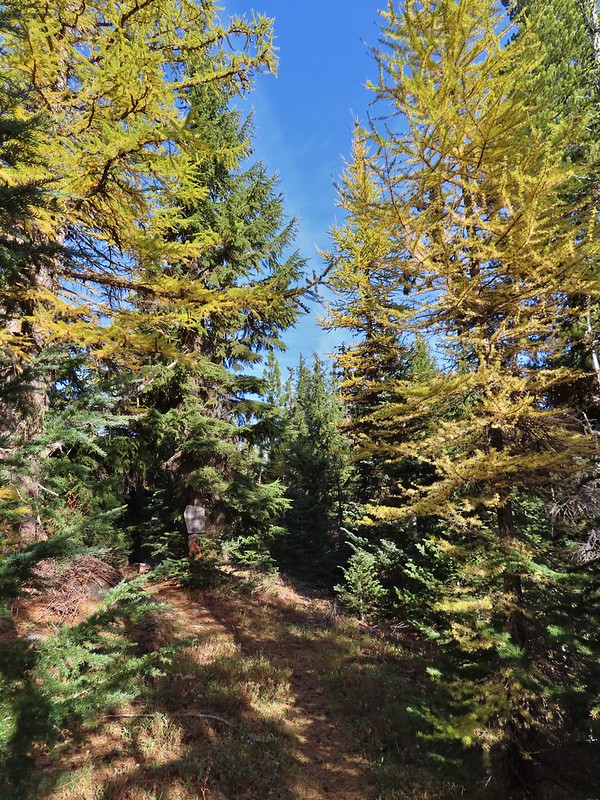 Looking back through larches at a Badger Creek Wilderness sign near Road 200.
Looking back through larches at a Badger Creek Wilderness sign near Road 200.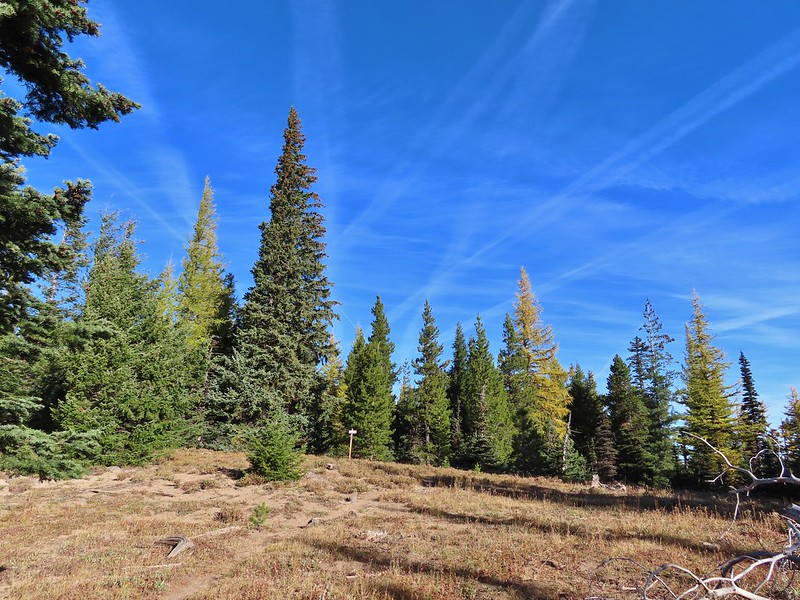 Looking back at the Divide Trail.
Looking back at the Divide Trail.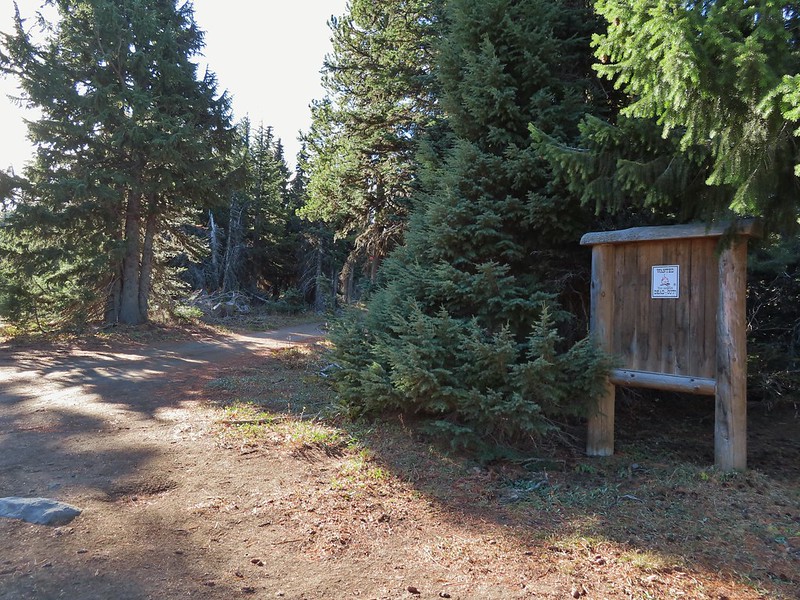 Road 200
Road 200
 Chipmunk
Chipmunk Nearing the lookout.
Nearing the lookout.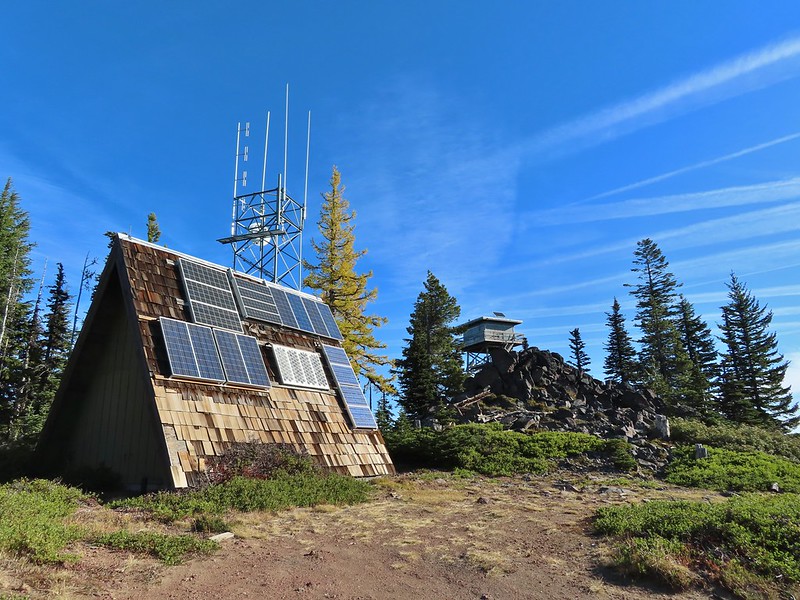

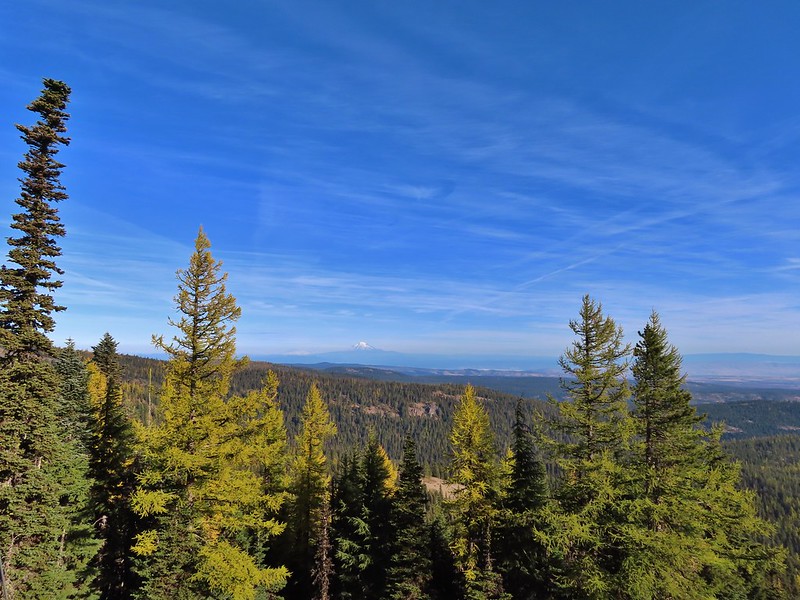 Mt. Rainier and Mt. Adams to the north.
Mt. Rainier and Mt. Adams to the north. Mt. Rainier and Mt. Adams
Mt. Rainier and Mt. Adams

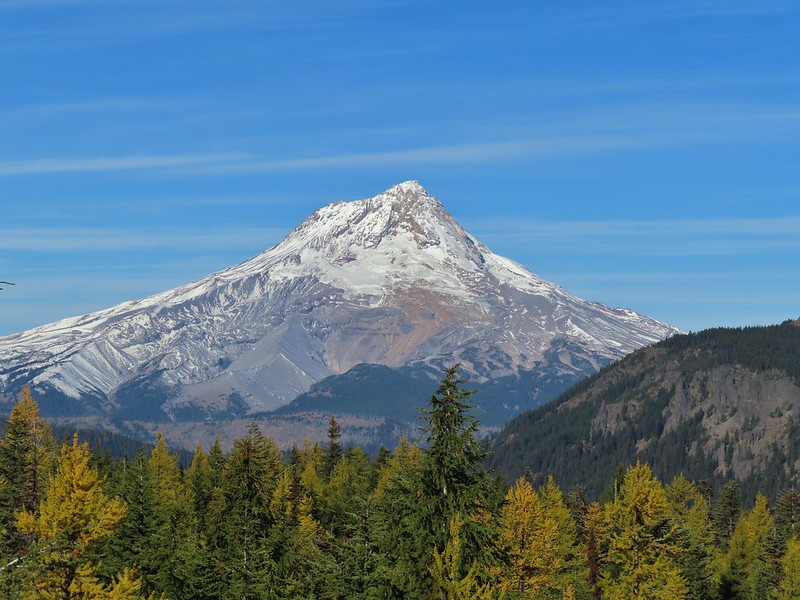
 Three Fingered Jack, Mt. Jefferson, and Olallie Butte
Three Fingered Jack, Mt. Jefferson, and Olallie Butte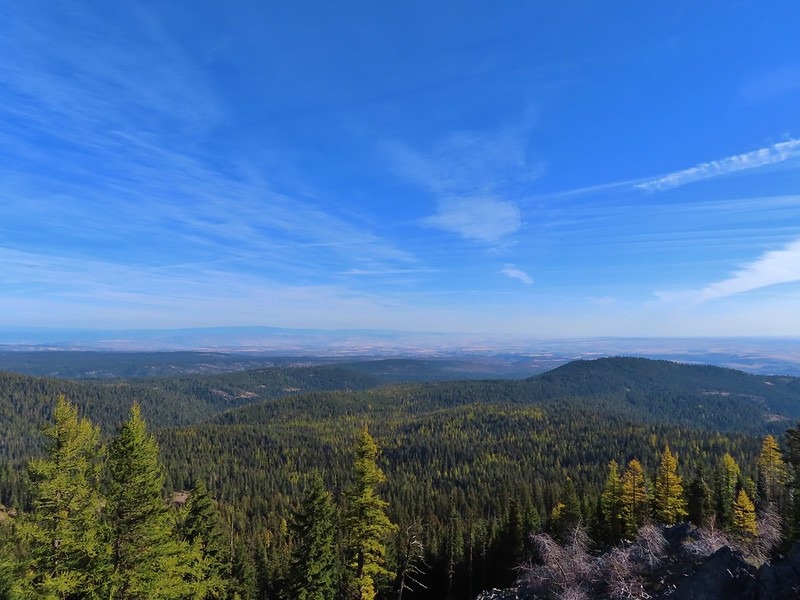 View east to the hills above the Columbia River.
View east to the hills above the Columbia River.
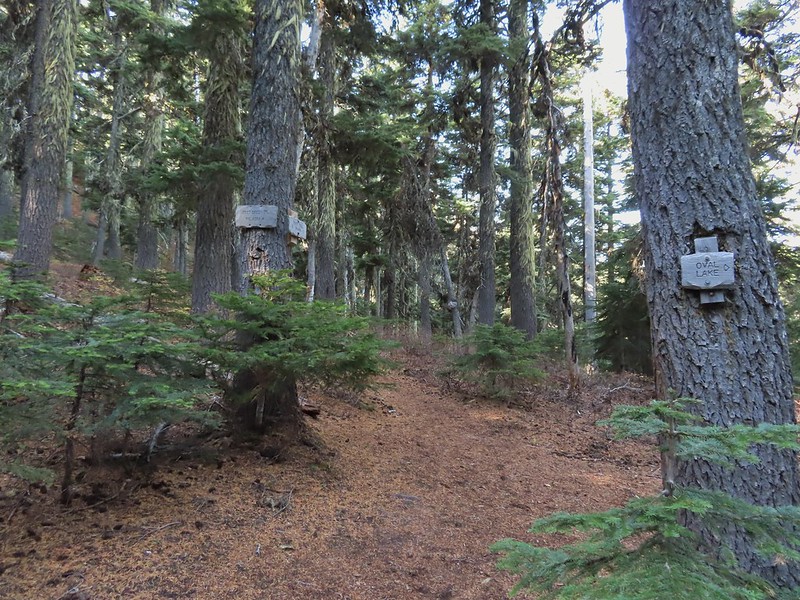 Passing the Fret Creek Trail.
Passing the Fret Creek Trail. We did need to gain almost 800′ of elevation to reach Lookout Mountain which at times was a fairly steep climb.
We did need to gain almost 800′ of elevation to reach Lookout Mountain which at times was a fairly steep climb. Another viewpoint along the way where Badger Lake was visible.
Another viewpoint along the way where Badger Lake was visible. Badger Lake
Badger Lake

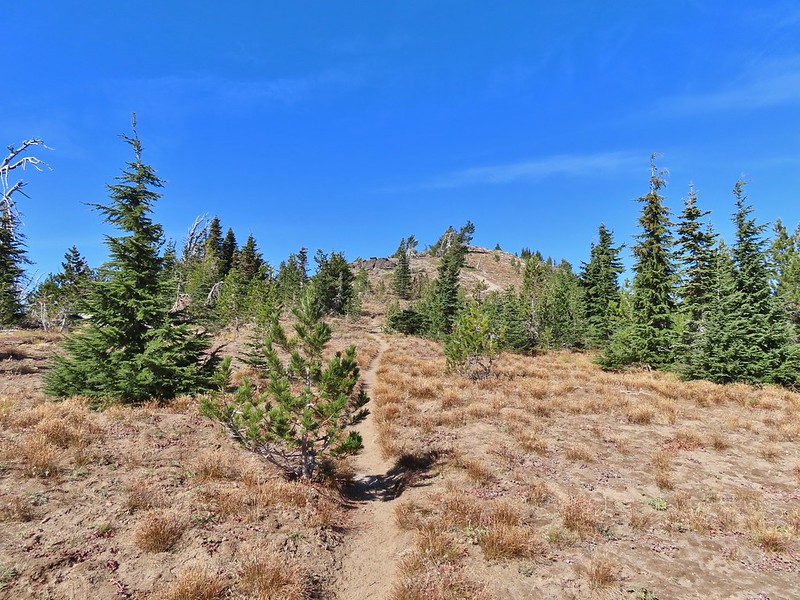 The final pitch to the summit, there is at least one hiker visible up top.
The final pitch to the summit, there is at least one hiker visible up top.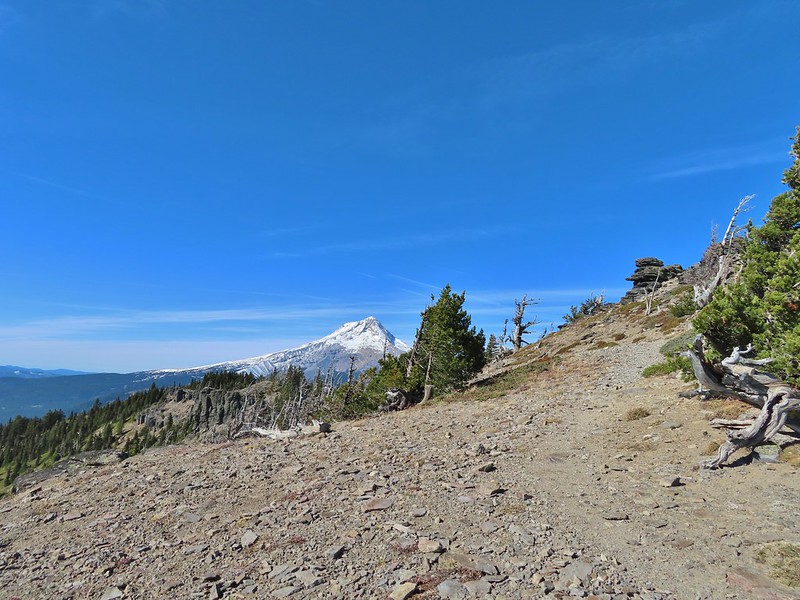

 Looking back to Flag Point.
Looking back to Flag Point.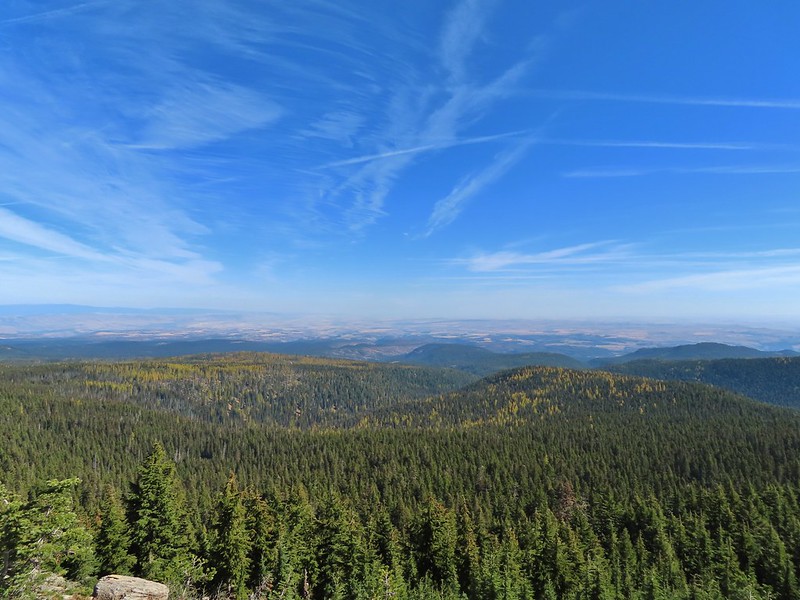 Looking NE toward The Dalles and the Columbia River.
Looking NE toward The Dalles and the Columbia River.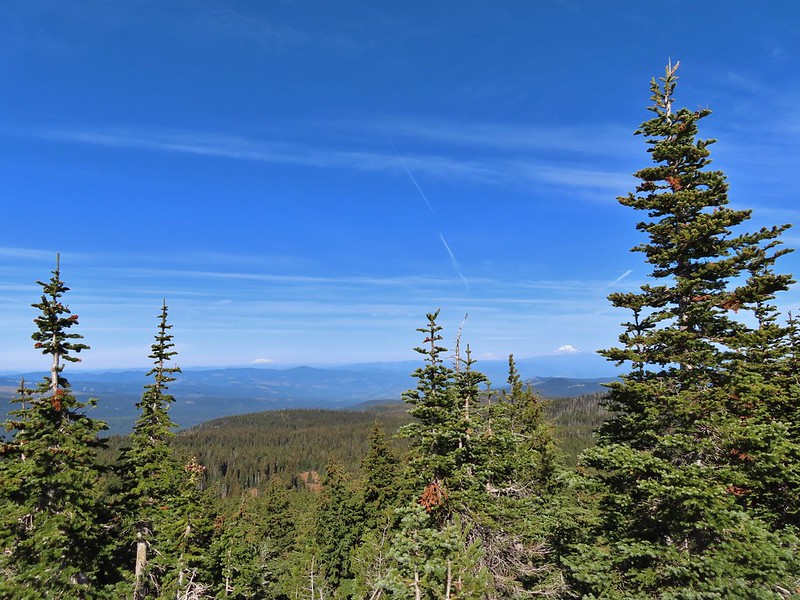 Mt. St. Helens, Mt. Rainier, and Mt. Adams
Mt. St. Helens, Mt. Rainier, and Mt. Adams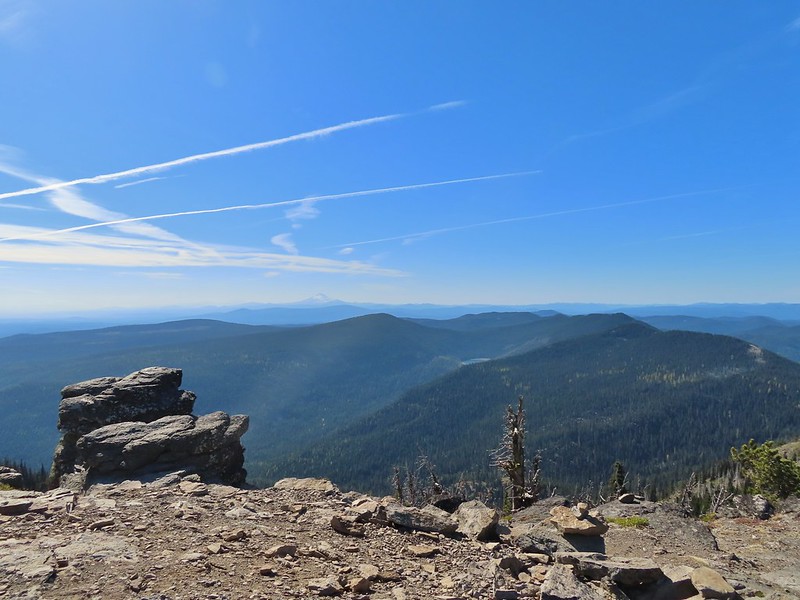 View south past Badger Lake to Mt. Jefferson.
View south past Badger Lake to Mt. Jefferson. Flag Point from the Helispot.
Flag Point from the Helispot.
 And of course Mt. Hood again.
And of course Mt. Hood again.

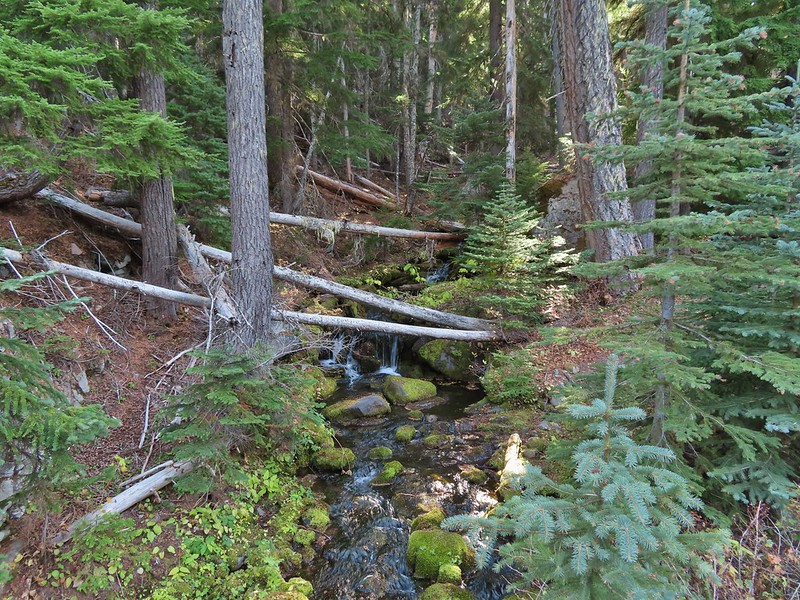 Fret Creek from the road near the trailhead.
Fret Creek from the road near the trailhead.

 Mt. Hood partly obscured by clouds from the parking area.
Mt. Hood partly obscured by clouds from the parking area.


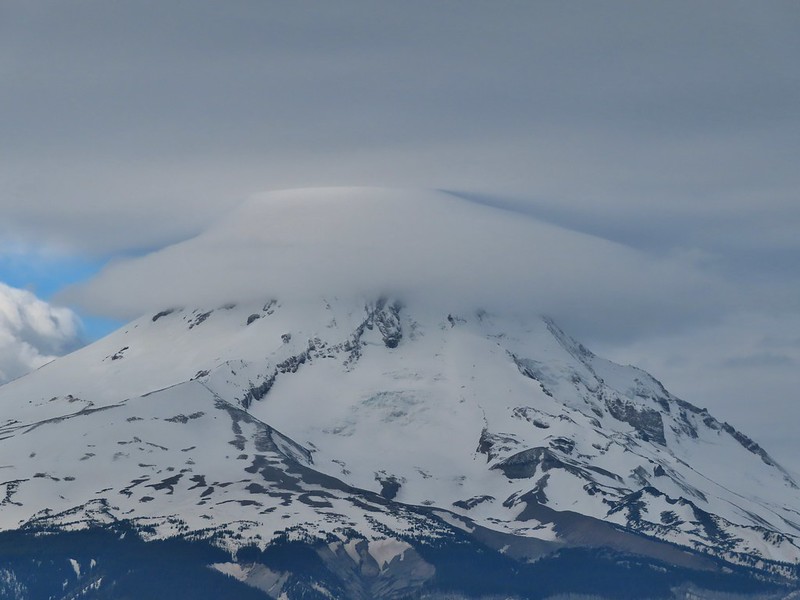
 Manzanita
Manzanita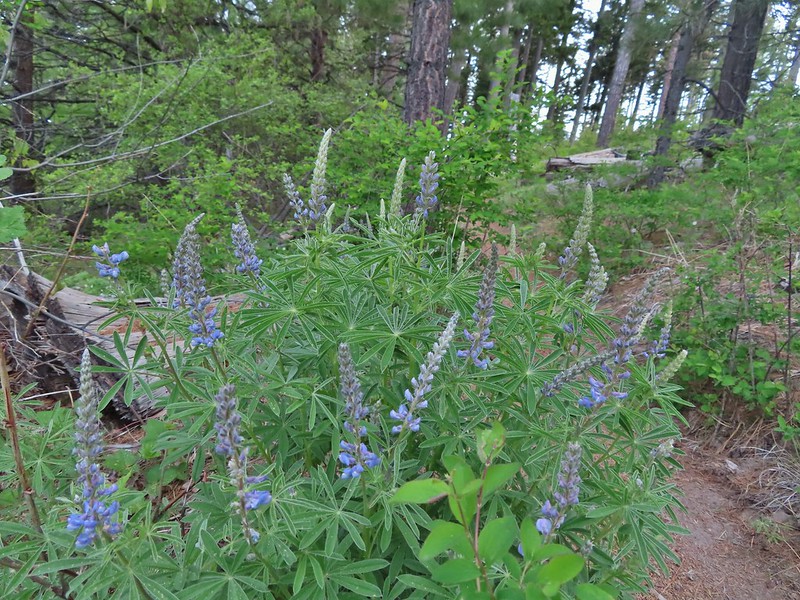 Lupine
Lupine Mt. Hood again.
Mt. Hood again. Jacob’s ladder
Jacob’s ladder Red-flowering currant
Red-flowering currant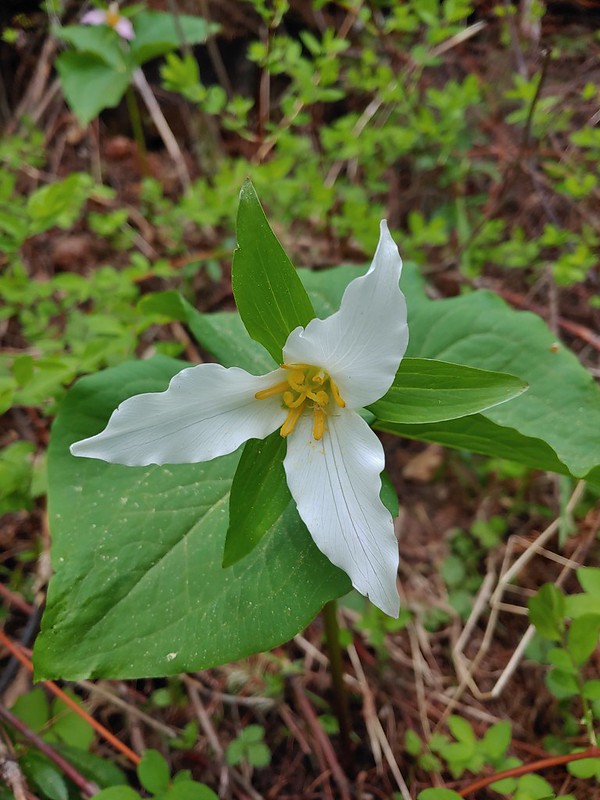 Trillium (can you spot the crab spider?)
Trillium (can you spot the crab spider?) Sticky currant
Sticky currant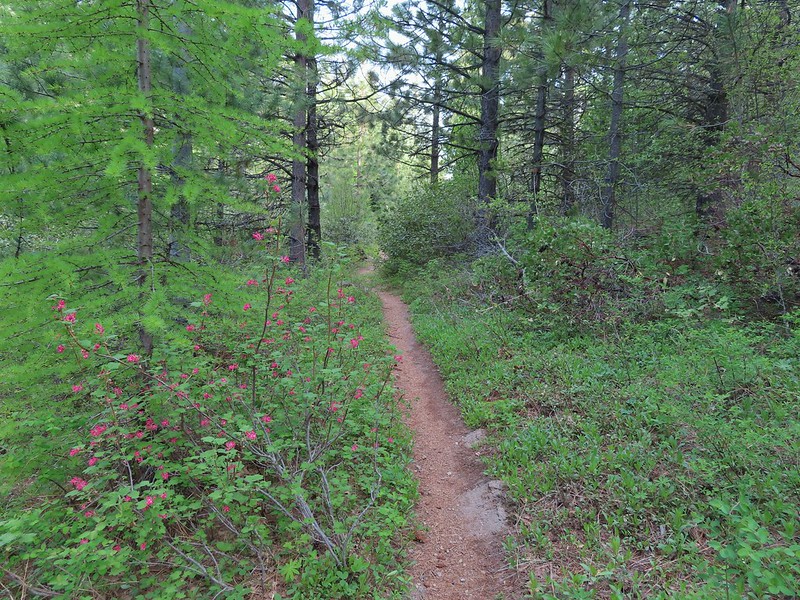 Western larch tree and red-flowering currant on the left.
Western larch tree and red-flowering currant on the left.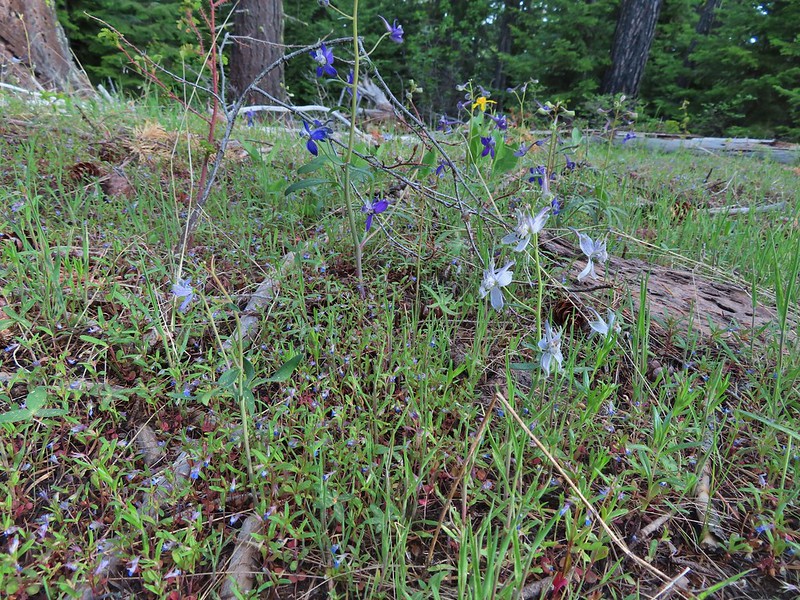 Larks spur and blue-eyed Mary
Larks spur and blue-eyed Mary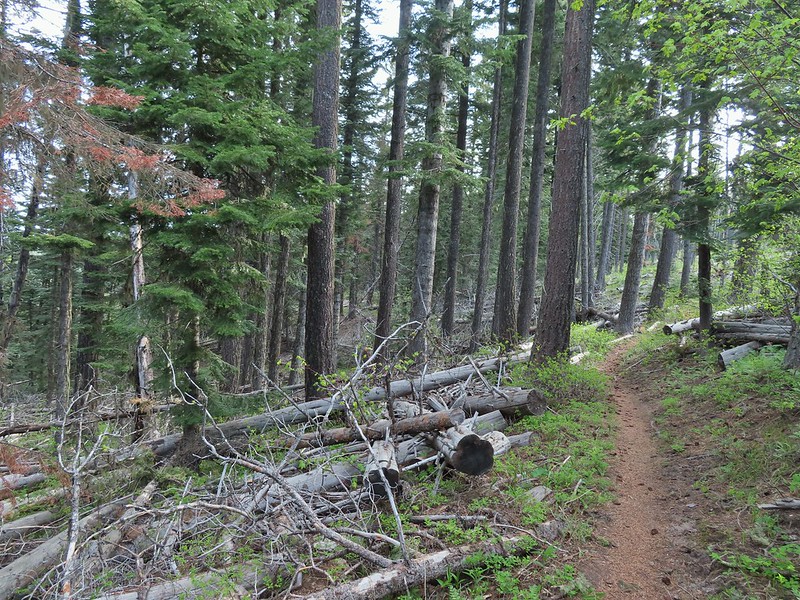
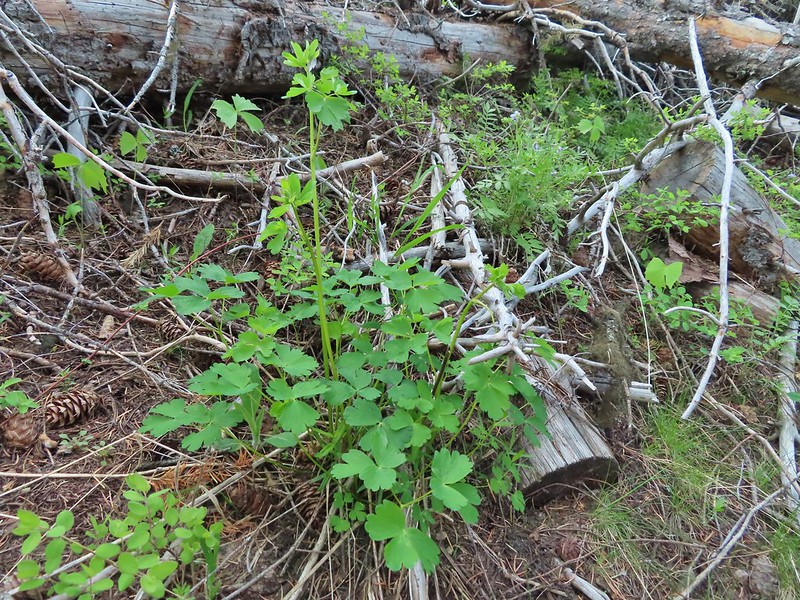 Columbine well before blooming.
Columbine well before blooming.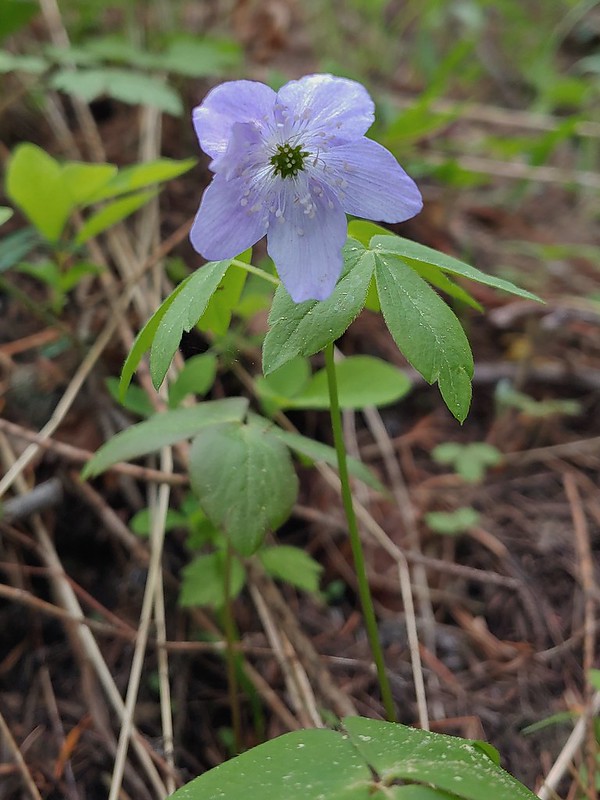 Anemone
Anemone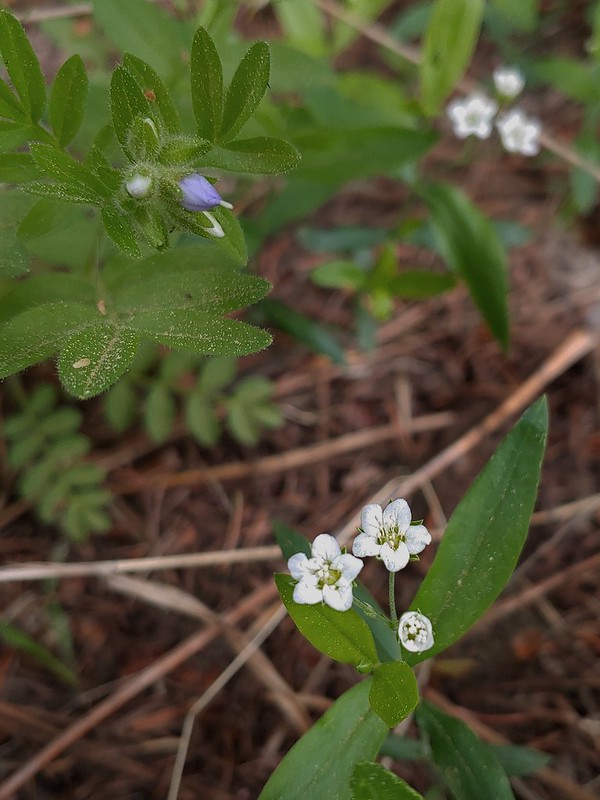 Largeleaf sandwort
Largeleaf sandwort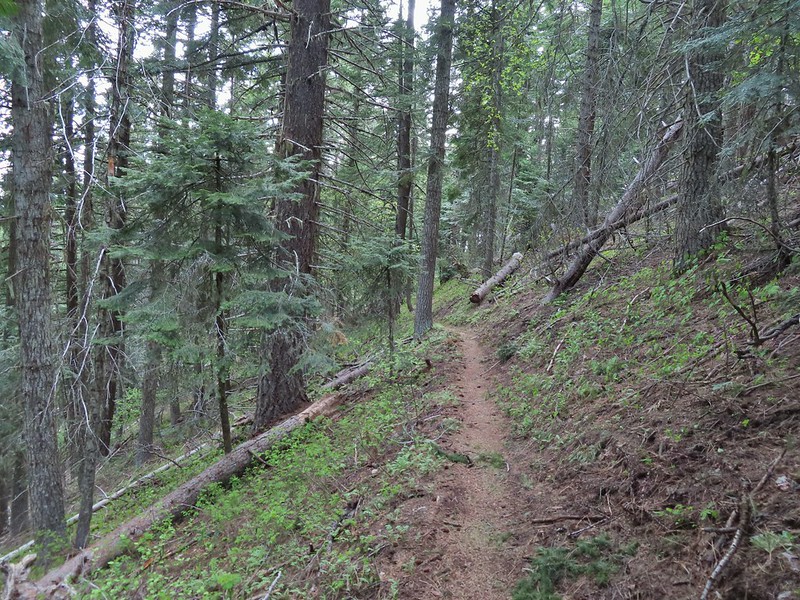
 Vanilla leaf getting ready to bloom.
Vanilla leaf getting ready to bloom. Arnica
Arnica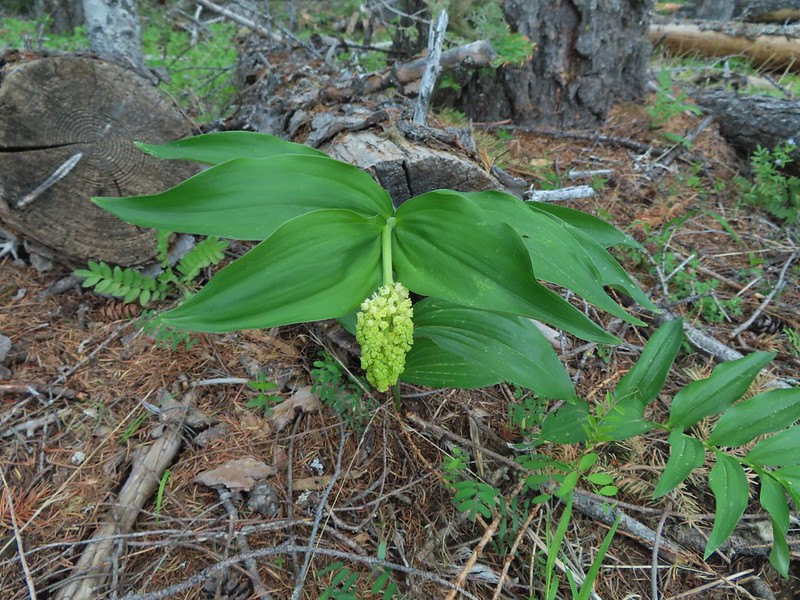 False solomons seal starting to bloom.
False solomons seal starting to bloom. Star-flower false solomons seal prior to blooming.
Star-flower false solomons seal prior to blooming. Ballhead waterleaf
Ballhead waterleaf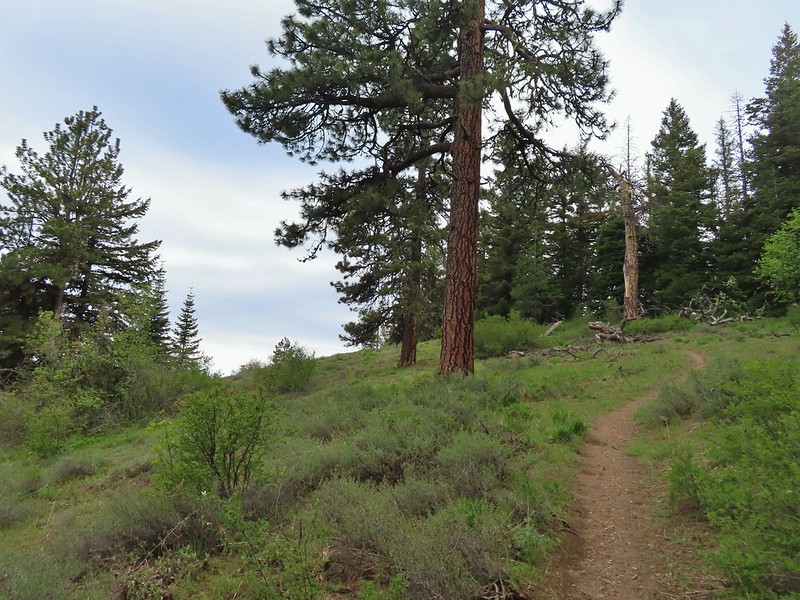 Ponderosa
Ponderosa Scarlet gilia not yet in bloom.
Scarlet gilia not yet in bloom. Balsamroot
Balsamroot Hood River Valley and Mt. St. Helens
Hood River Valley and Mt. St. Helens Mt. St. Helens
Mt. St. Helens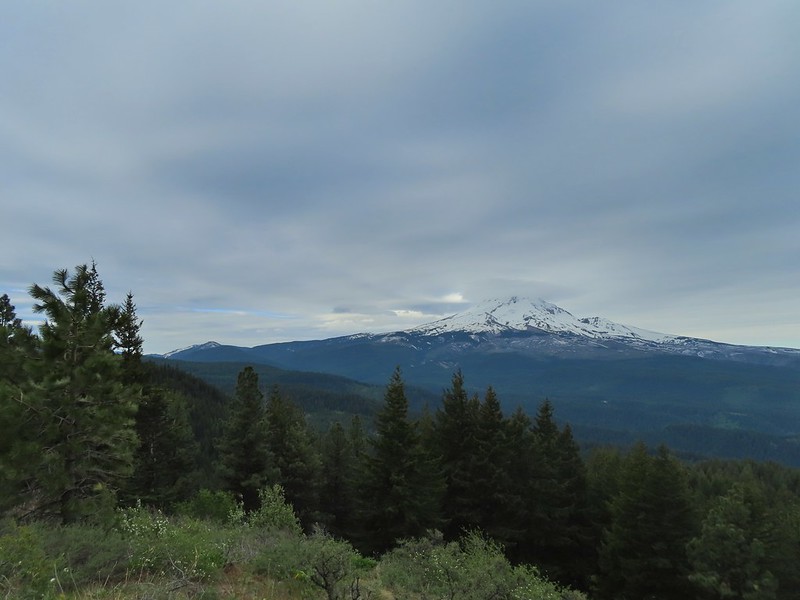 Mt. Hood
Mt. Hood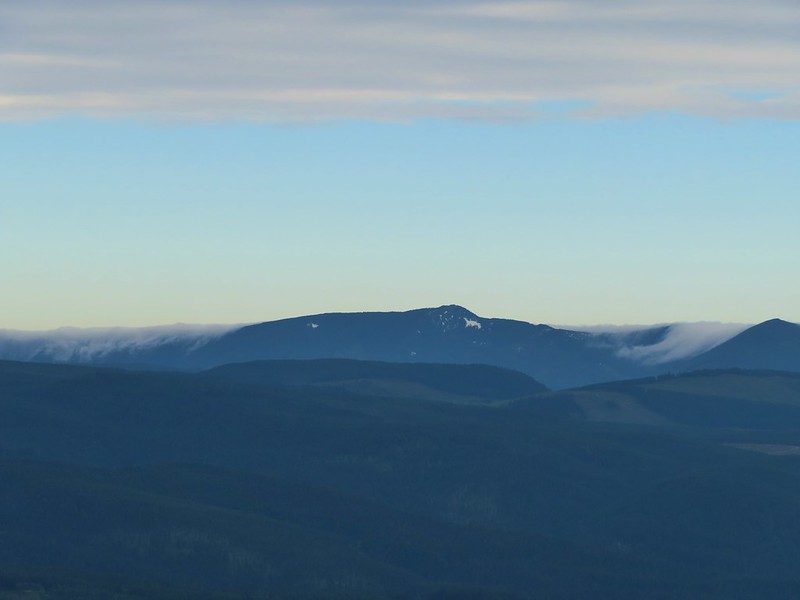 Indian Mountain (
Indian Mountain (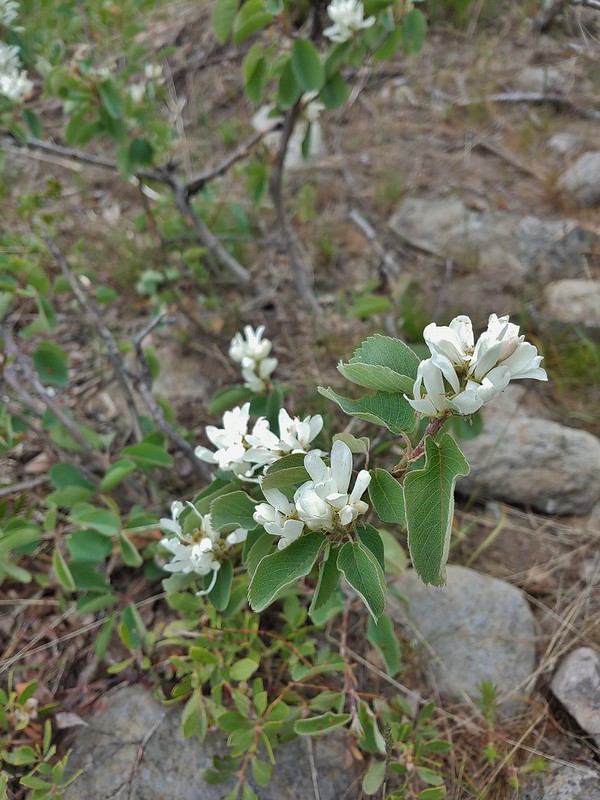 Western serviceberry
Western serviceberry Fairy bells
Fairy bells Glacier lily
Glacier lily Shellrock Mountain from the trail.
Shellrock Mountain from the trail.

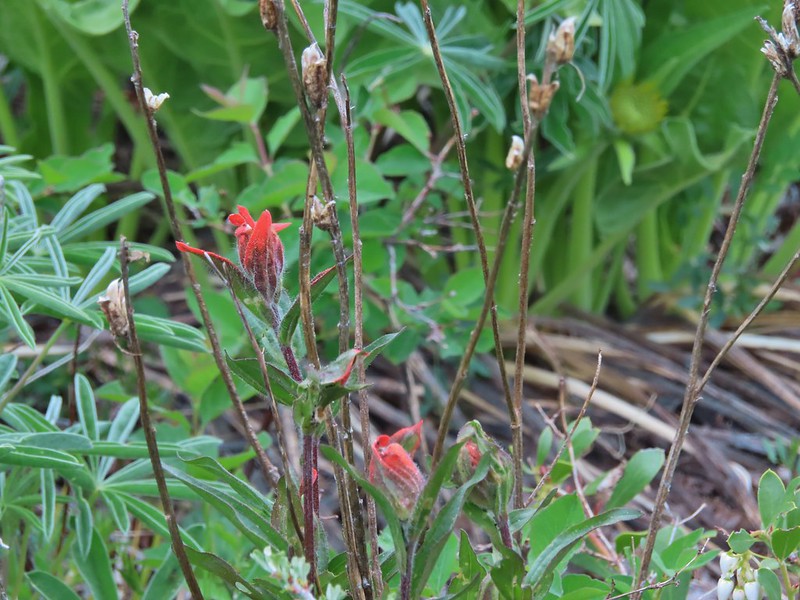 First paintbrush of the day spotted in the little meadow.
First paintbrush of the day spotted in the little meadow. User trail to the left.
User trail to the left.




 Shellrock Badlands Basin, an eroded volcanic formation.
Shellrock Badlands Basin, an eroded volcanic formation.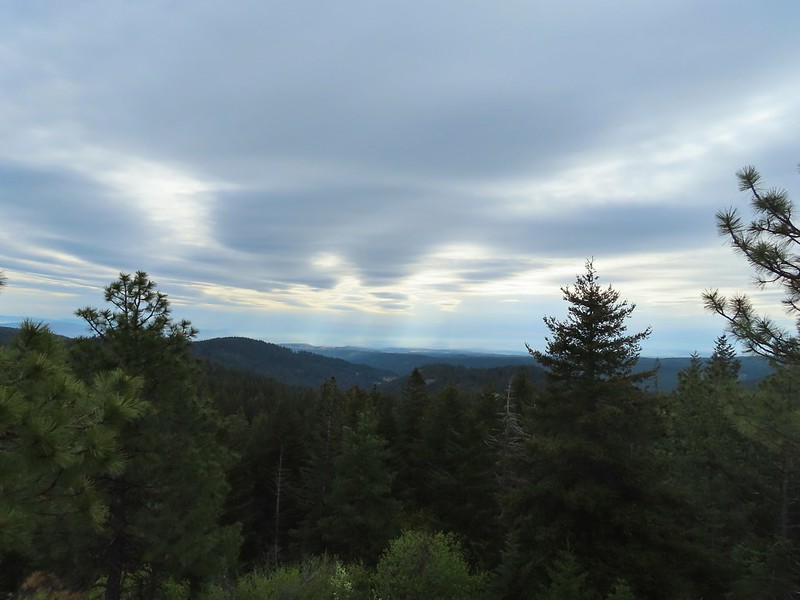 View east into Central Oregon.
View east into Central Oregon.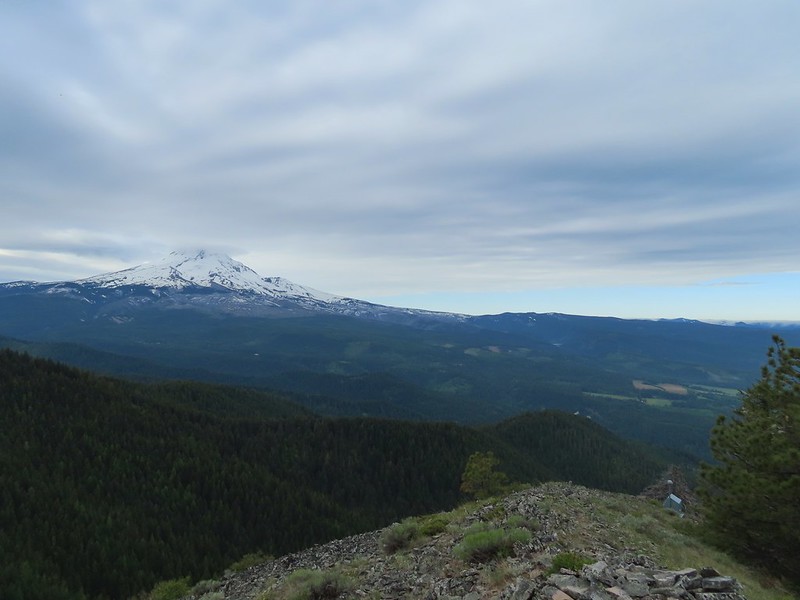 Mt. Hood
Mt. Hood Mill Creek Buttes with Lookout Mountain and Gunsight Butte (
Mill Creek Buttes with Lookout Mountain and Gunsight Butte (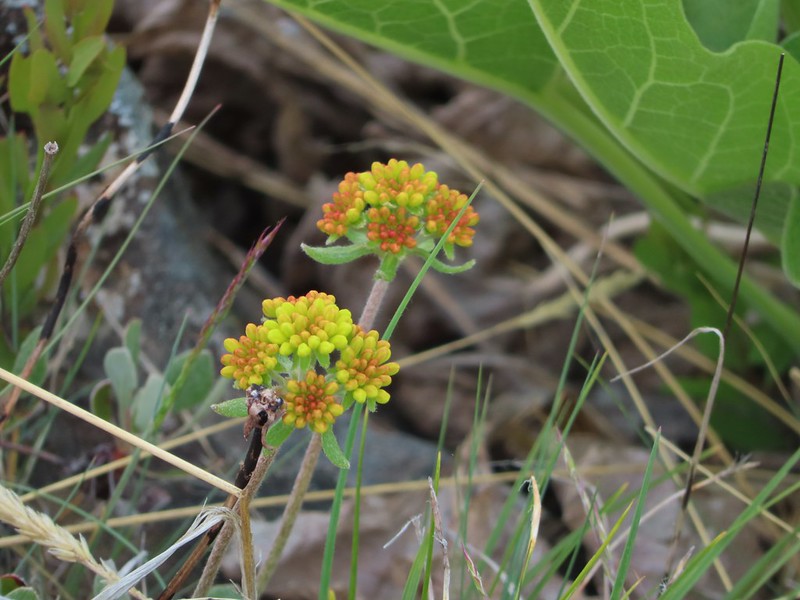 Buckwheat
Buckwheat Bird below Shellrock Mountain.
Bird below Shellrock Mountain.
 A whole lot of trillium.
A whole lot of trillium.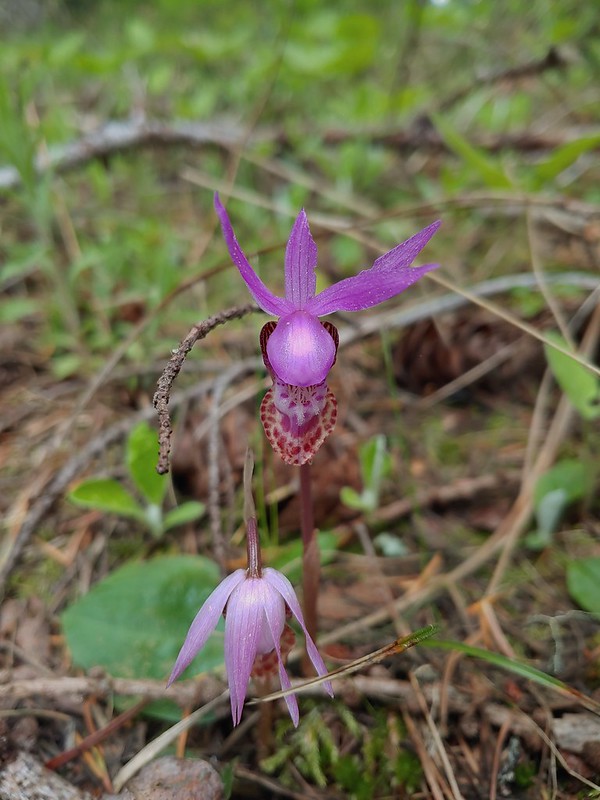 Fairy slippers
Fairy slippers
 Sign at the trailhead.
Sign at the trailhead.


 parsley and popcorn flower.
parsley and popcorn flower.
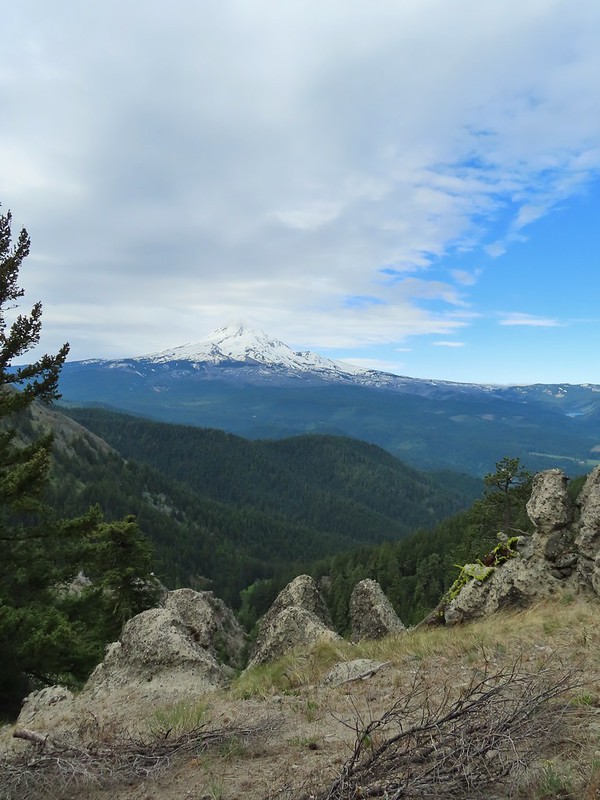

 Lupine
Lupine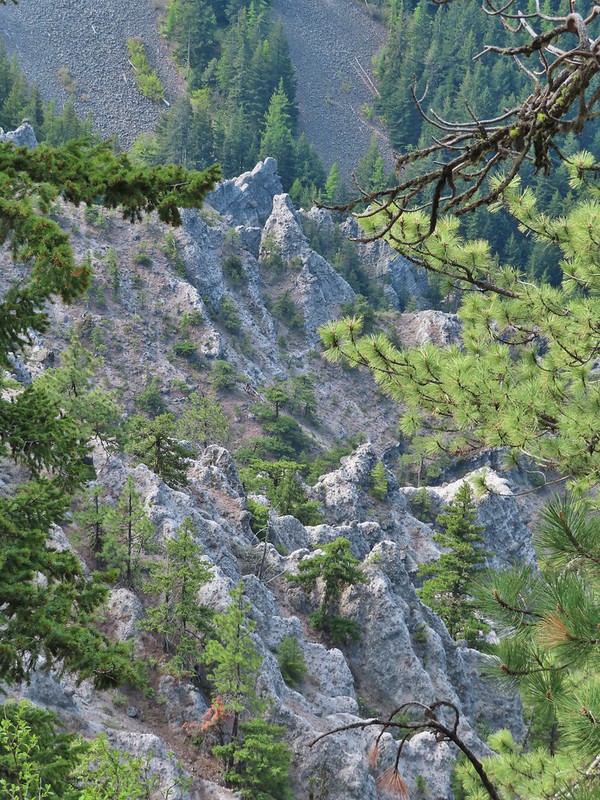


 I frequently have insects hitching rides, so often that we joke about me being an Uber for bugs.
I frequently have insects hitching rides, so often that we joke about me being an Uber for bugs. Rock out cropping in the Rim Rock section of trail.
Rock out cropping in the Rim Rock section of trail. Tailed kittentails
Tailed kittentails Western tanager female
Western tanager female Western tanager male
Western tanager male View from a rocky viewpoint just before crossing from the east side of the ridge back to the top.
View from a rocky viewpoint just before crossing from the east side of the ridge back to the top.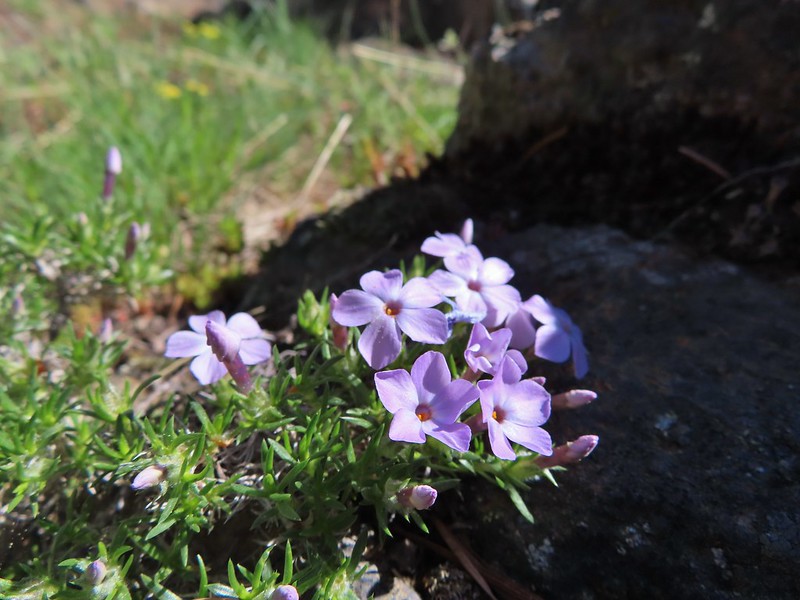 Phlox
Phlox


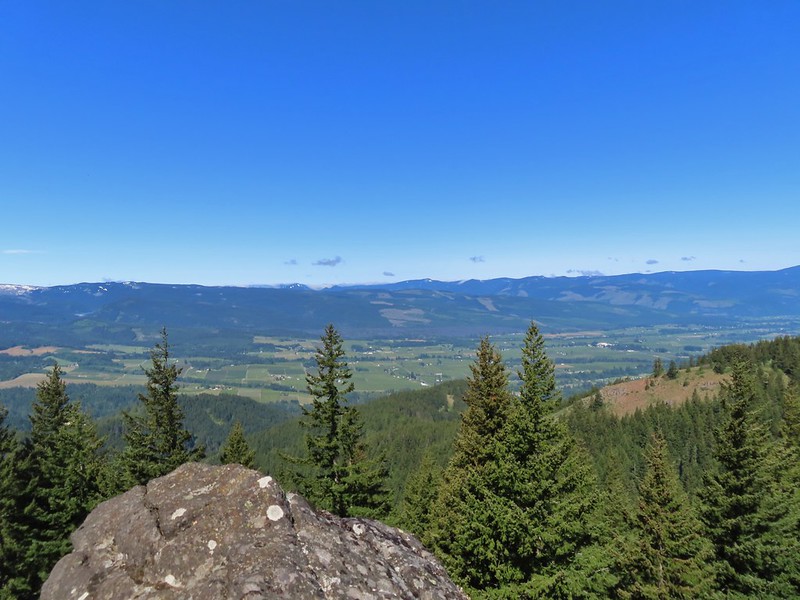 Hood River Valley
Hood River Valley Clouds encroaching on Mt. Adams.
Clouds encroaching on Mt. Adams.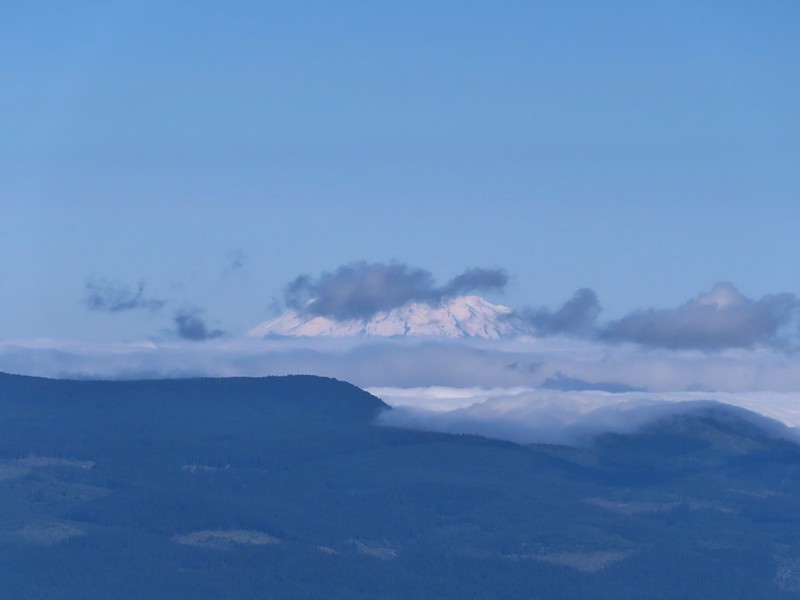 Mt. St. Helens
Mt. St. Helens
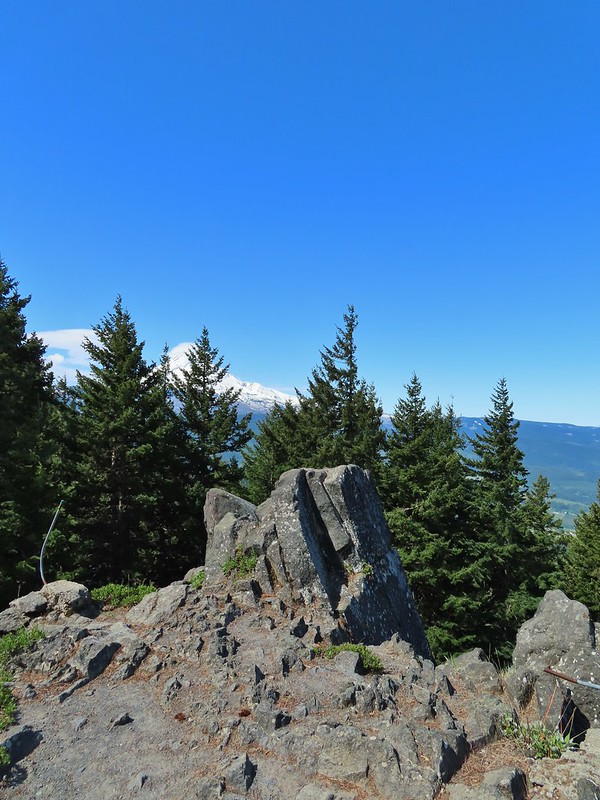 The other viewpoint had a better view.
The other viewpoint had a better view.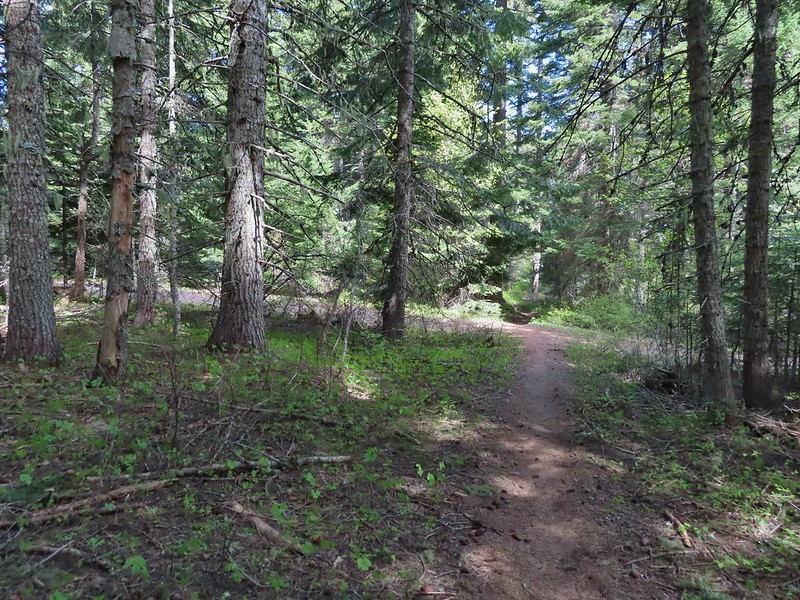 The first roadbed crossing.
The first roadbed crossing.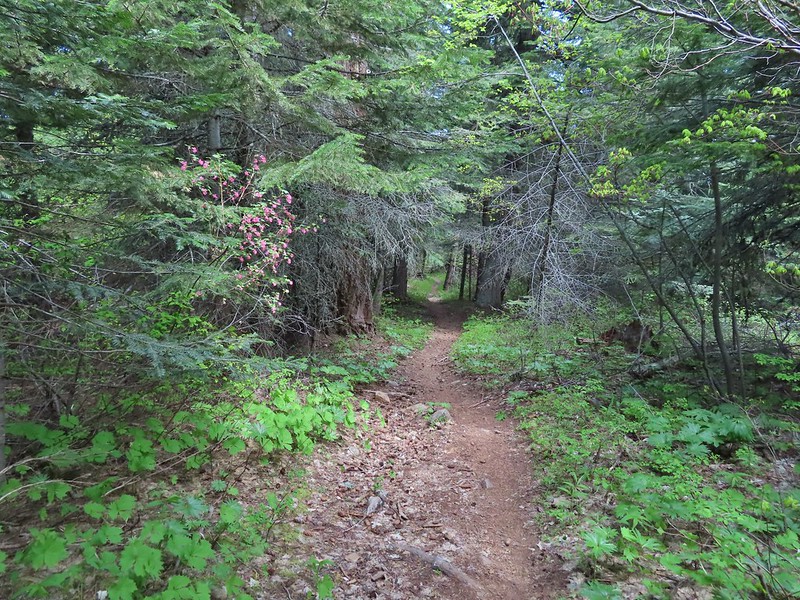
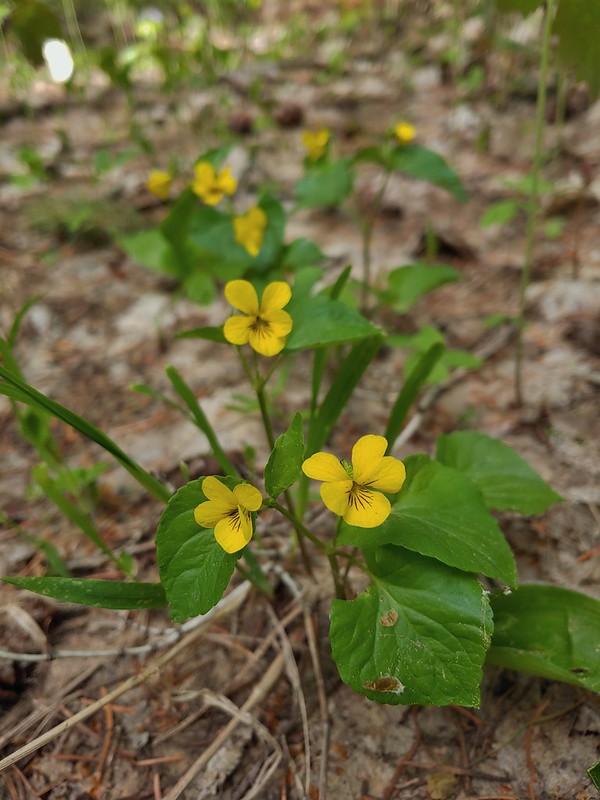 Violets
Violets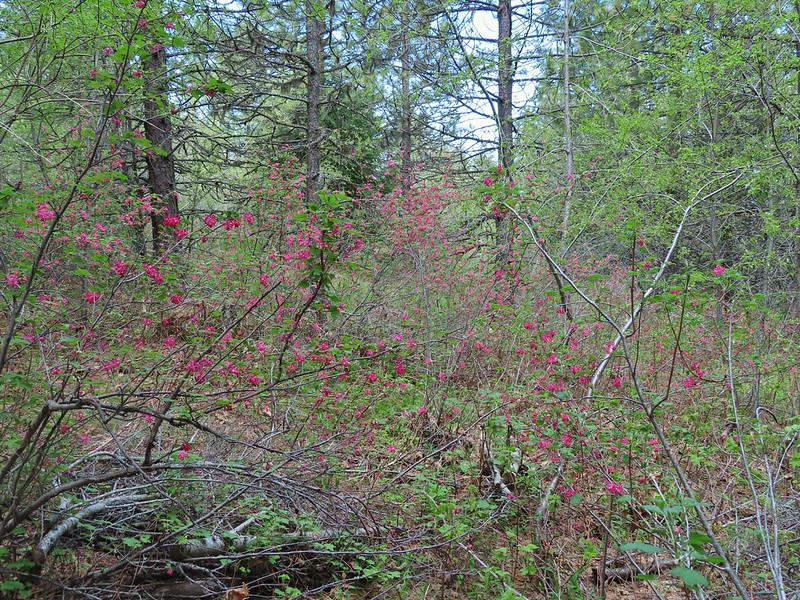
 Trail signs at the second road crossing.
Trail signs at the second road crossing. Coralroot sprouting
Coralroot sprouting
 Balsamroot and paintbrush
Balsamroot and paintbrush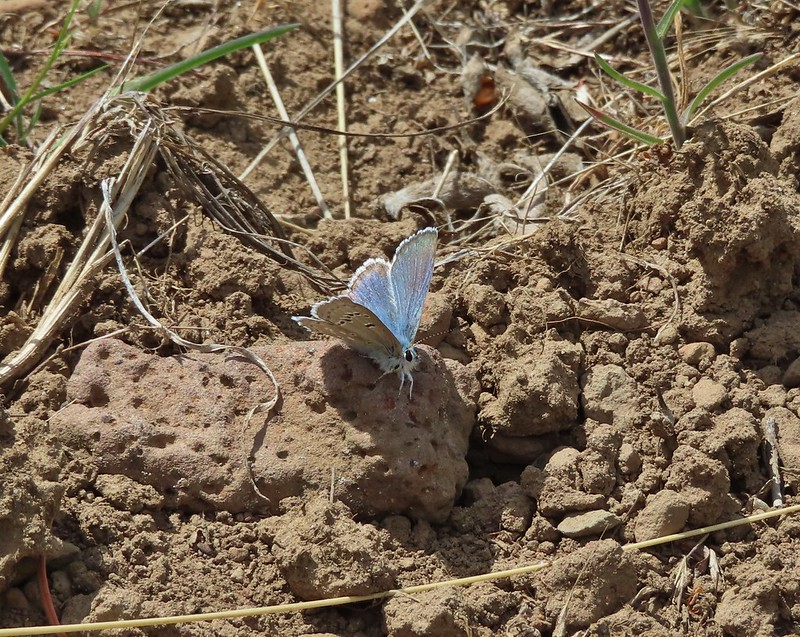

 Desert parsley
Desert parsley Western stoneseed
Western stoneseed Wildflowers on the hillside.
Wildflowers on the hillside.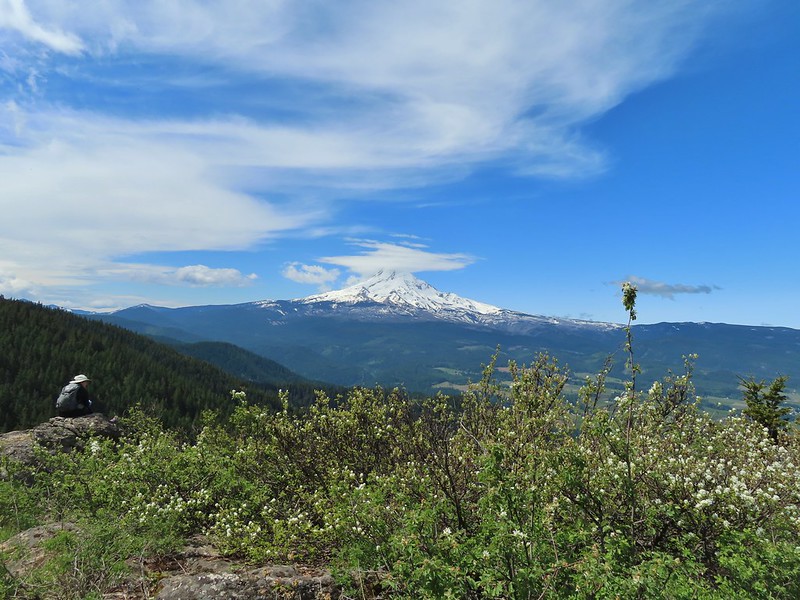
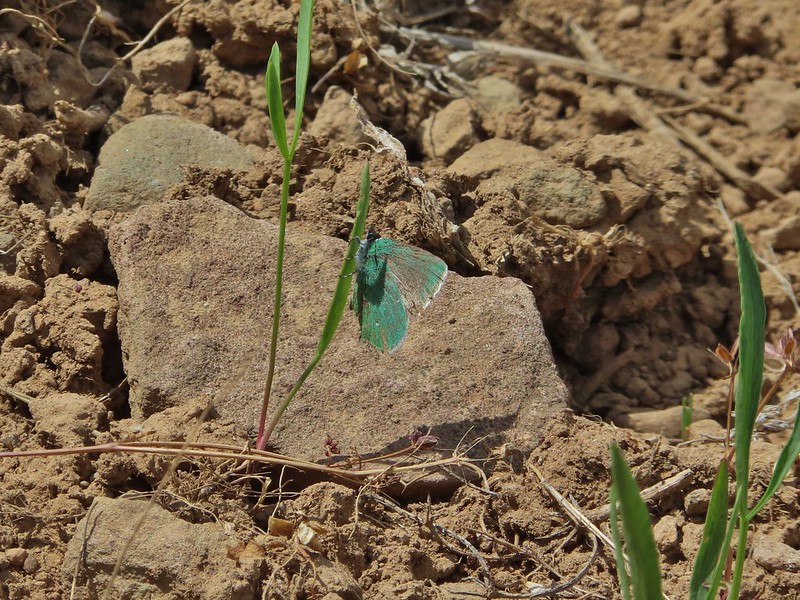
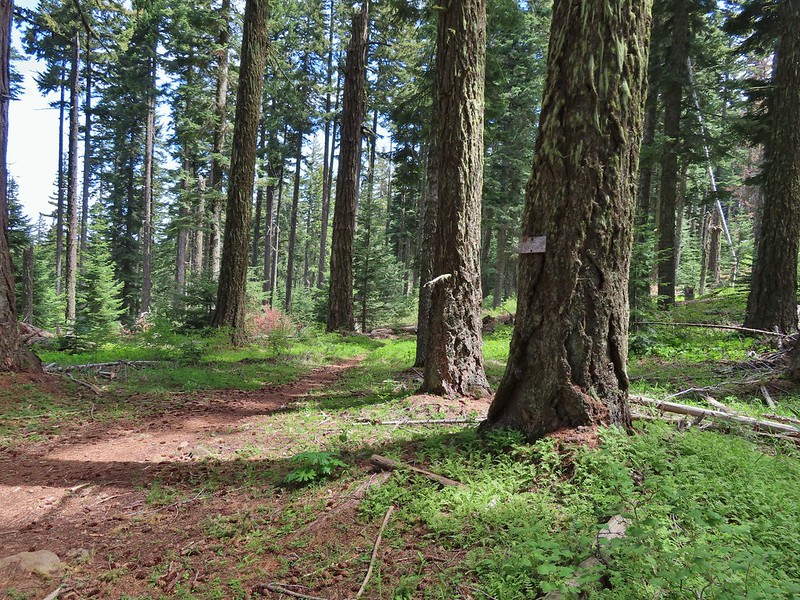 Sign at the junction.
Sign at the junction. Spur trail to Yellowjacket Point.
Spur trail to Yellowjacket Point.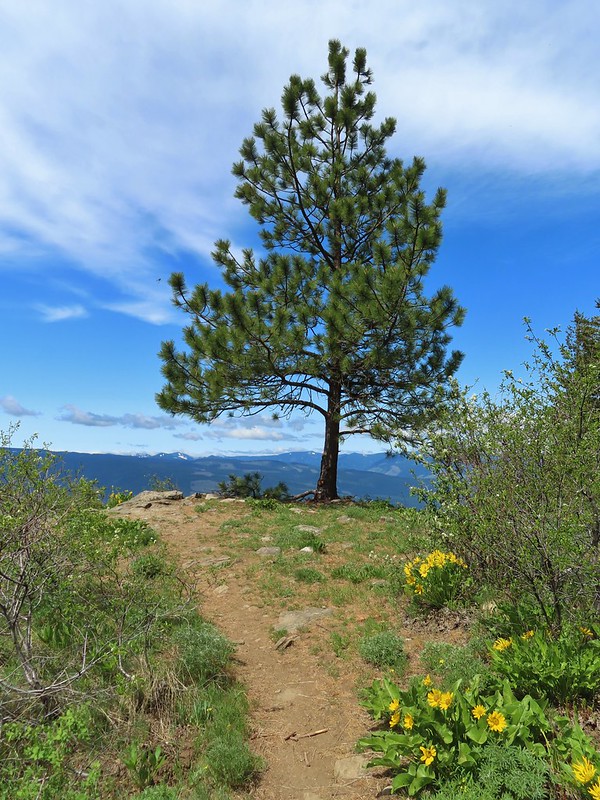
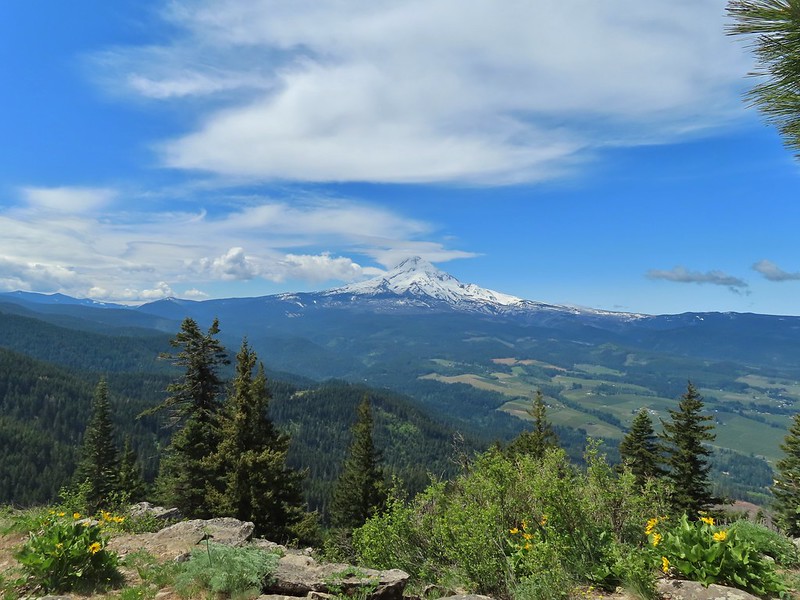
 No yellowjackets, just a robin.
No yellowjackets, just a robin. Things like this gooseberry shrub.
Things like this gooseberry shrub. Chipmunk
Chipmunk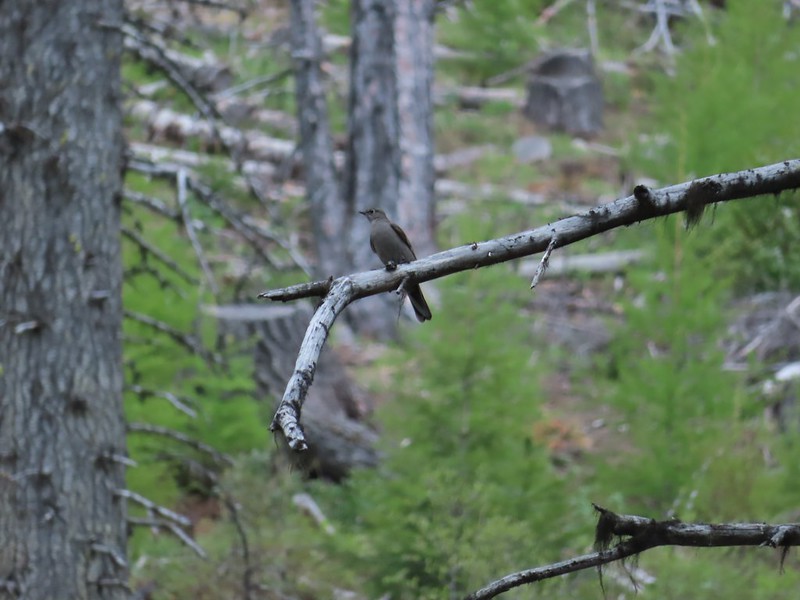 Townsend’s solitare?
Townsend’s solitare?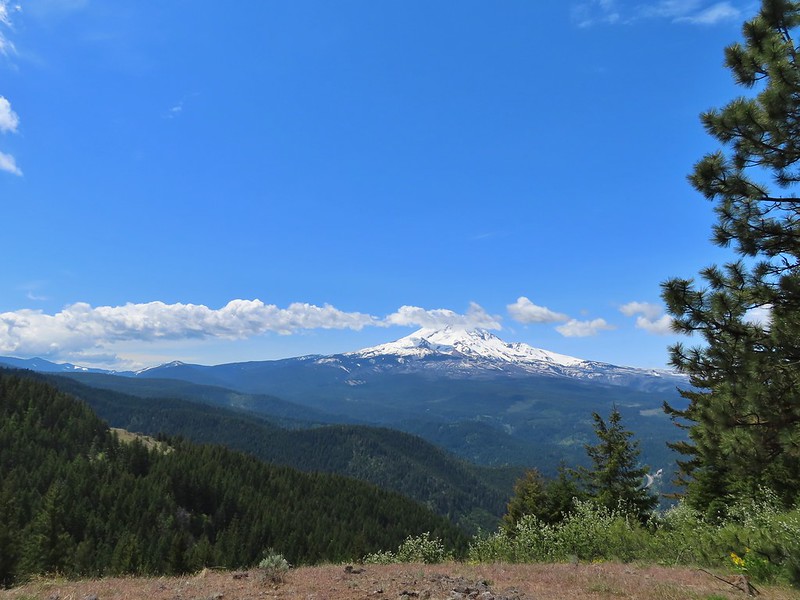 12:40pm
12:40pm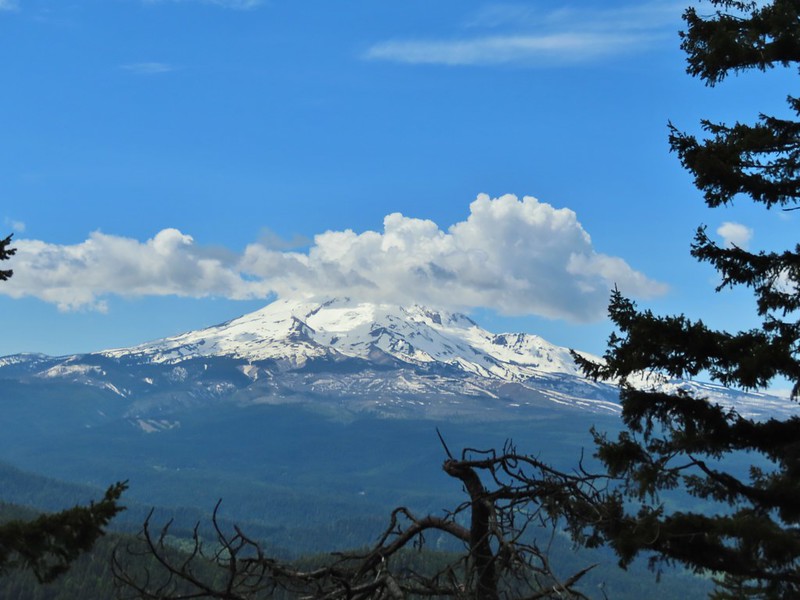 12:50pm
12:50pm
 1:00pm
1:00pm 1:30pm
1:30pm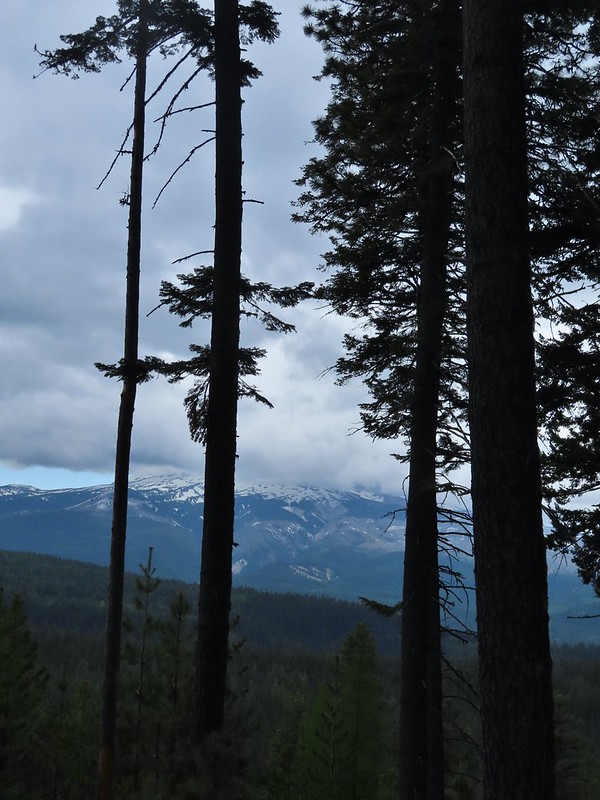 2:04pm
2:04pm Returning to the parking area at 2:11pm
Returning to the parking area at 2:11pm



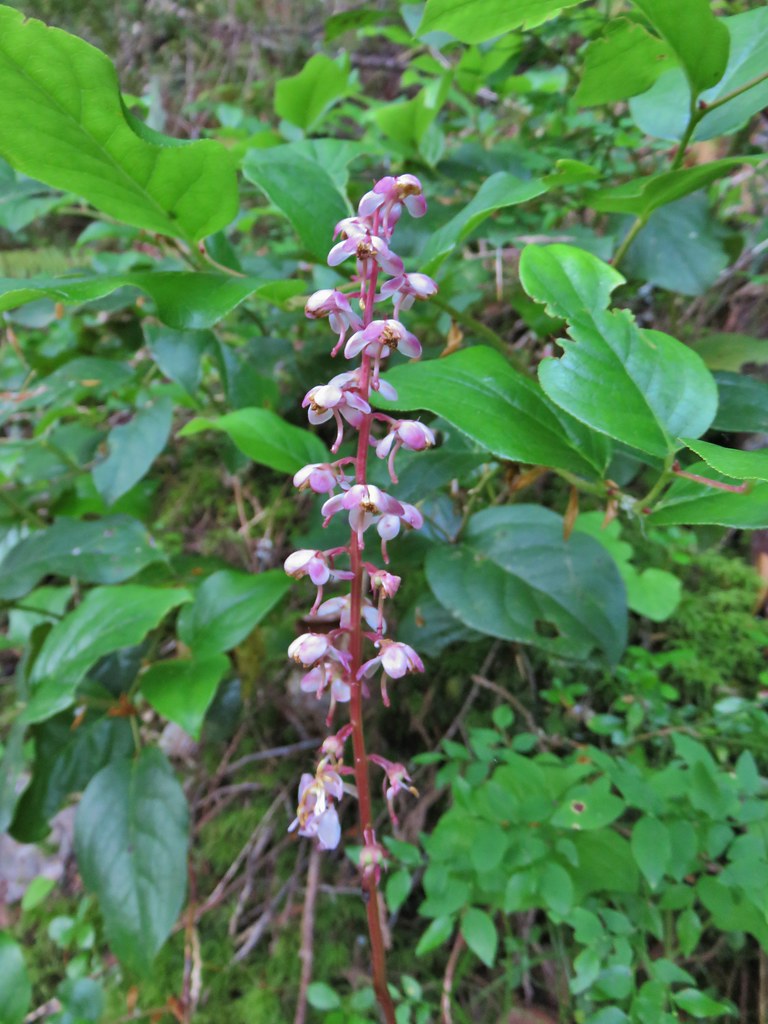 Pink pyrola
Pink pyrola
 Switchback below a rock outcrop.
Switchback below a rock outcrop. Looking down the hillside from the trail.
Looking down the hillside from the trail.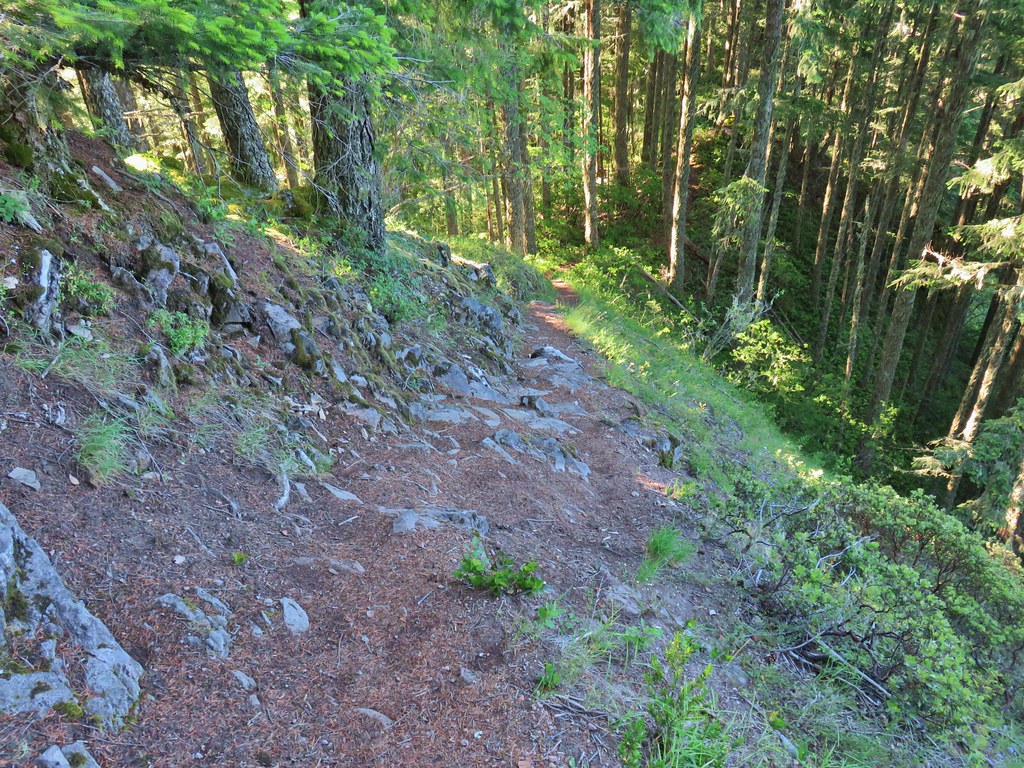 Trail dropping to a saddle.
Trail dropping to a saddle. Looking south across the Salmon River valley. The Bonanza Trail (
Looking south across the Salmon River valley. The Bonanza Trail ( Beardstongue (penstemon)
Beardstongue (penstemon) Washington lily
Washington lily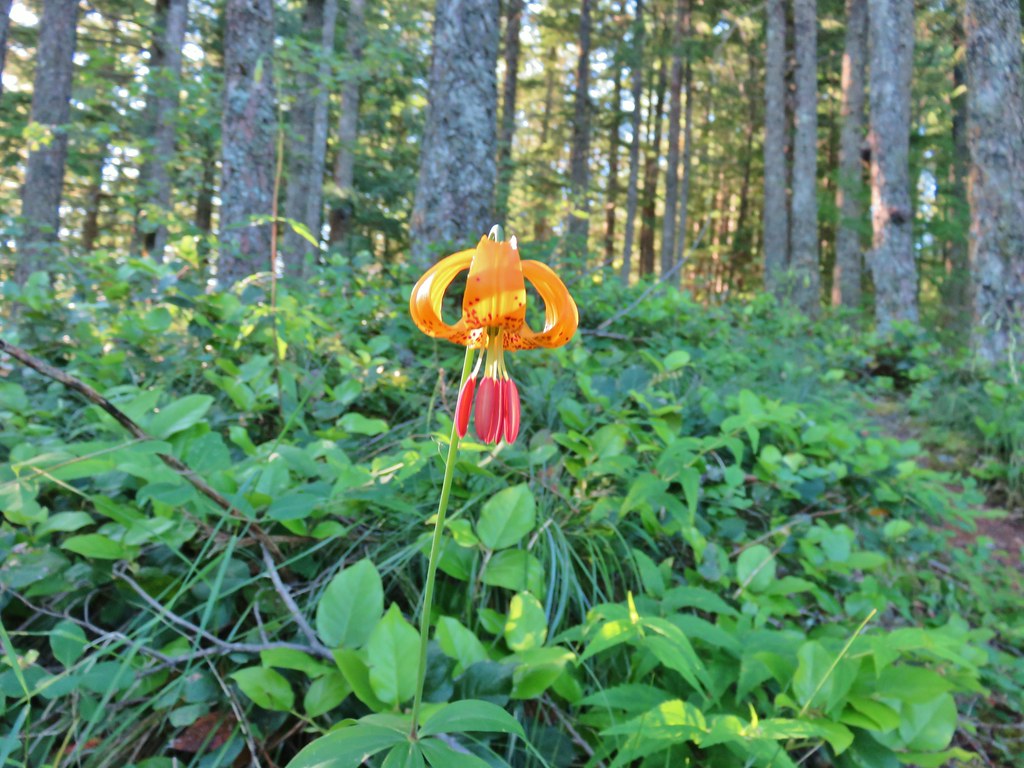 Tiger lily
Tiger lily Penstemon
Penstemon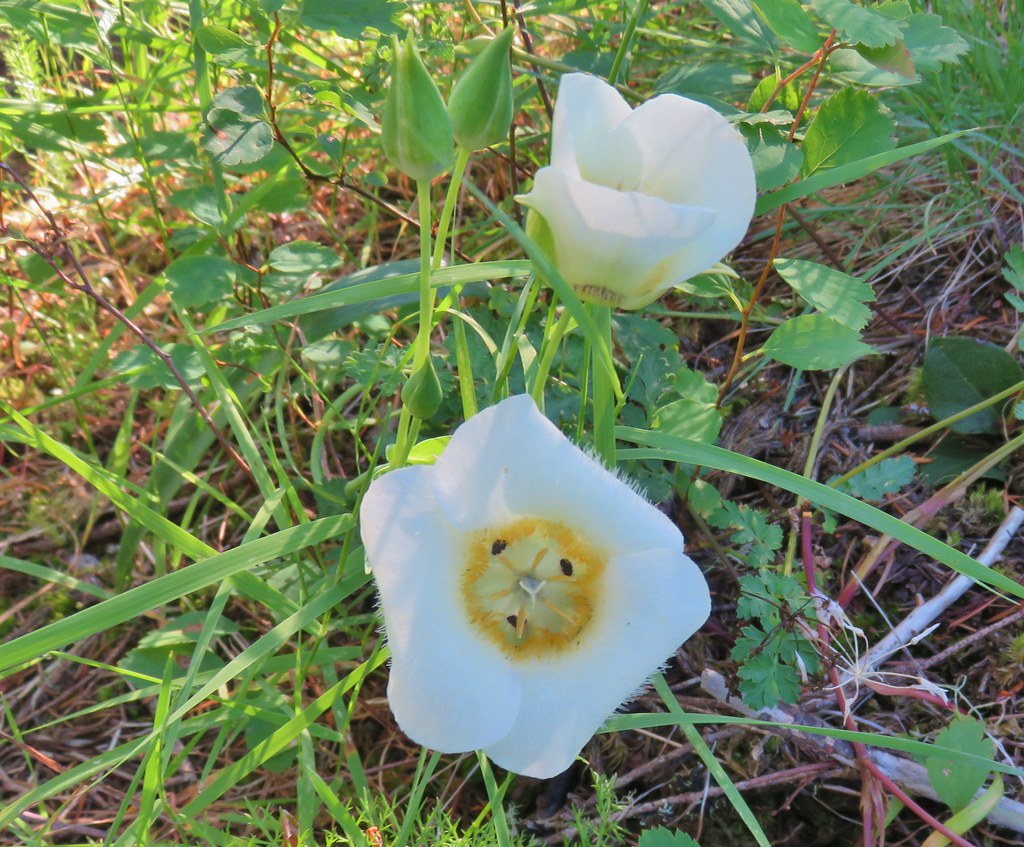 Sub-alpine mariposa lily (cat’s ear lily)
Sub-alpine mariposa lily (cat’s ear lily) Yarrow
Yarrow Starting the steep climb.
Starting the steep climb. Coming up to the cliffs.
Coming up to the cliffs. Cliffs along the trail.
Cliffs along the trail.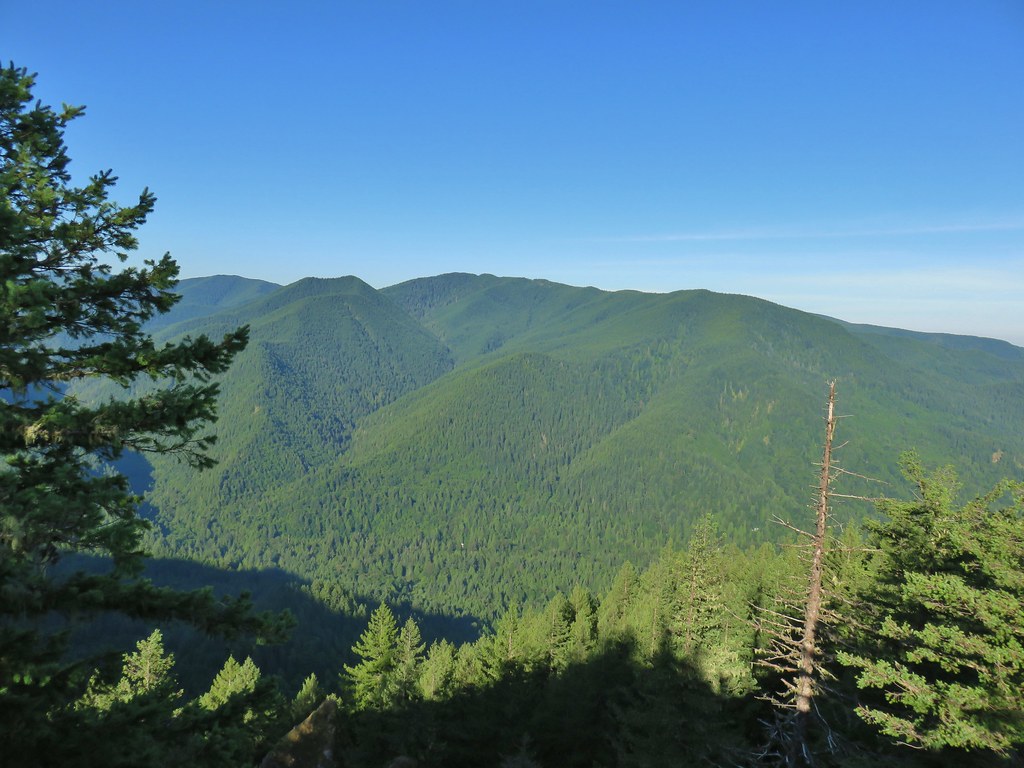 Huckleberry Mountain
Huckleberry Mountain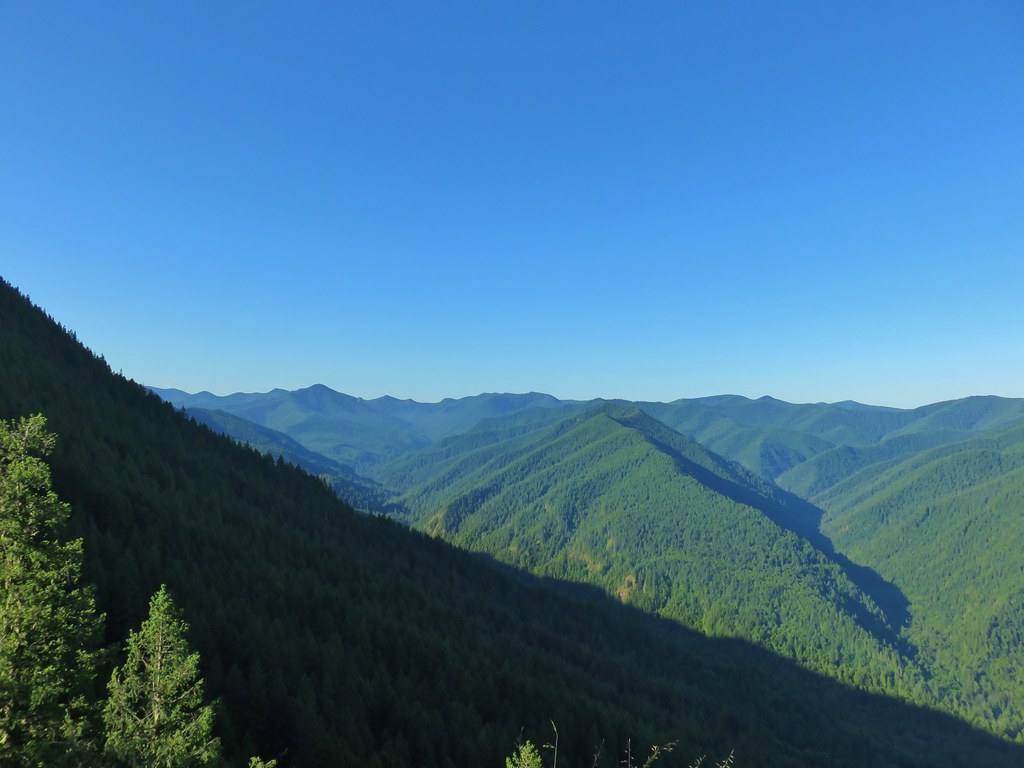 Salmon Butte (
Salmon Butte (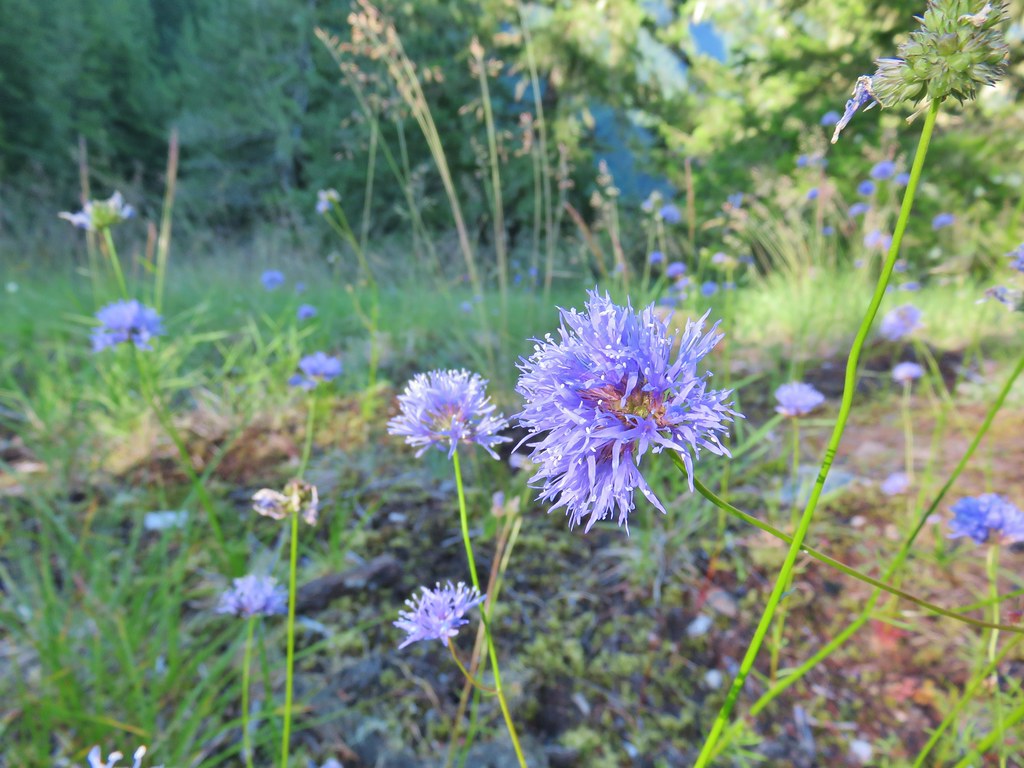 Blue-head gilia
Blue-head gilia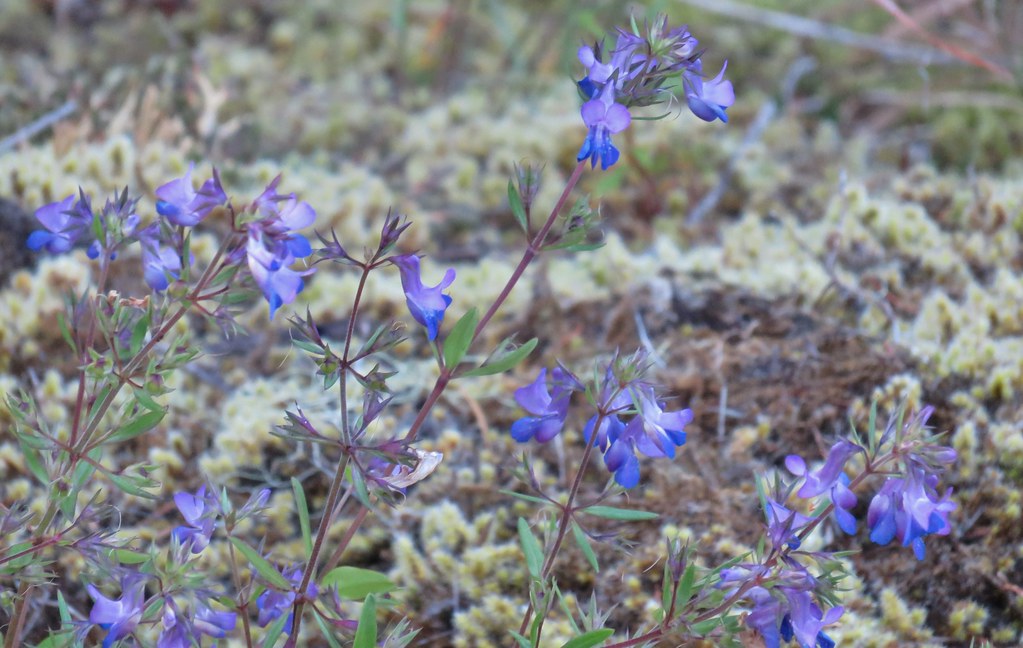 Blue-eyed Mary
Blue-eyed Mary Oregon sunshine, blue-head gilia, penstemon and yarrow.
Oregon sunshine, blue-head gilia, penstemon and yarrow. Trail dropping toward the forest.
Trail dropping toward the forest.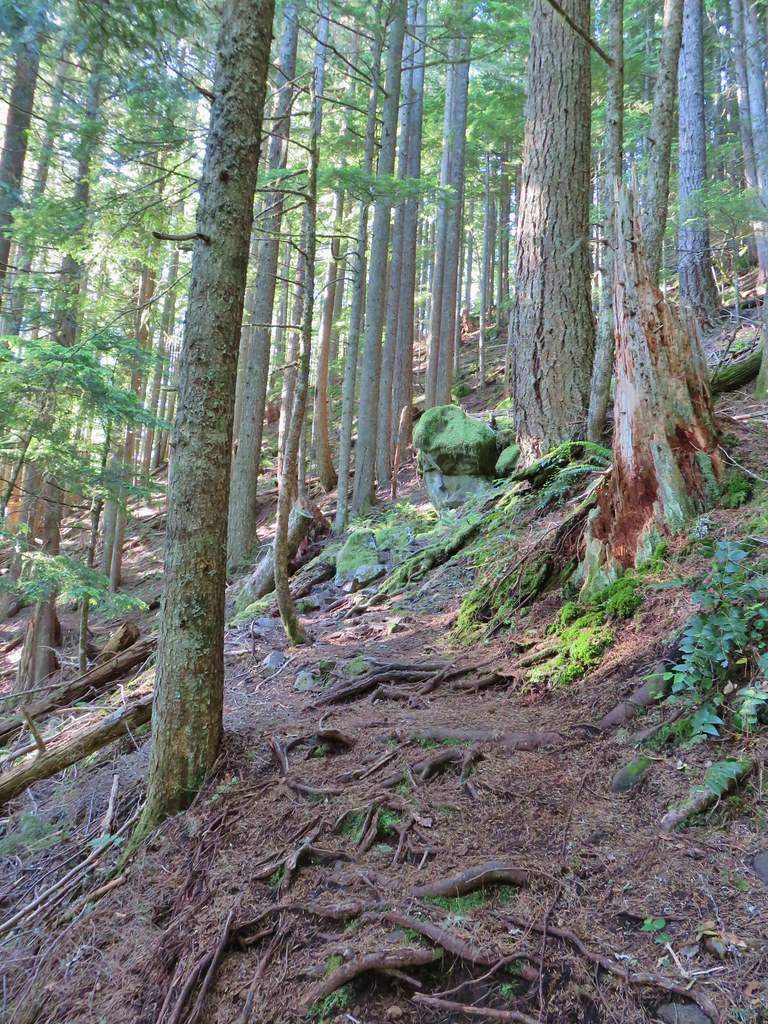 Trail starting to climb again.
Trail starting to climb again.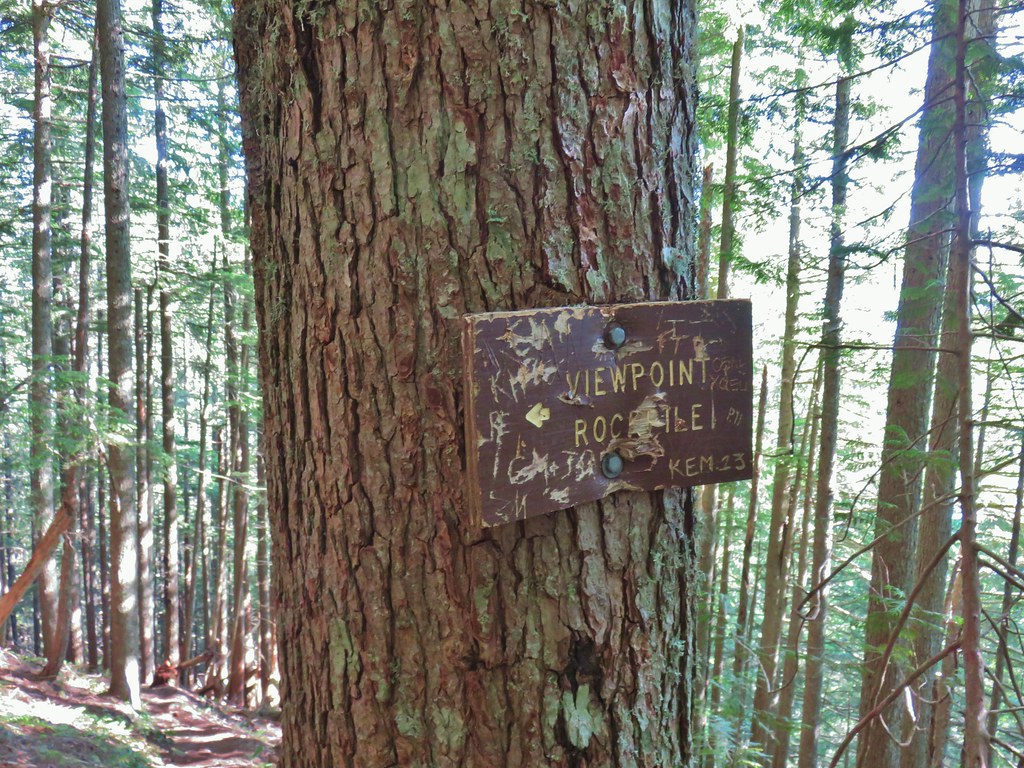 Sign for the viewpoint.
Sign for the viewpoint.
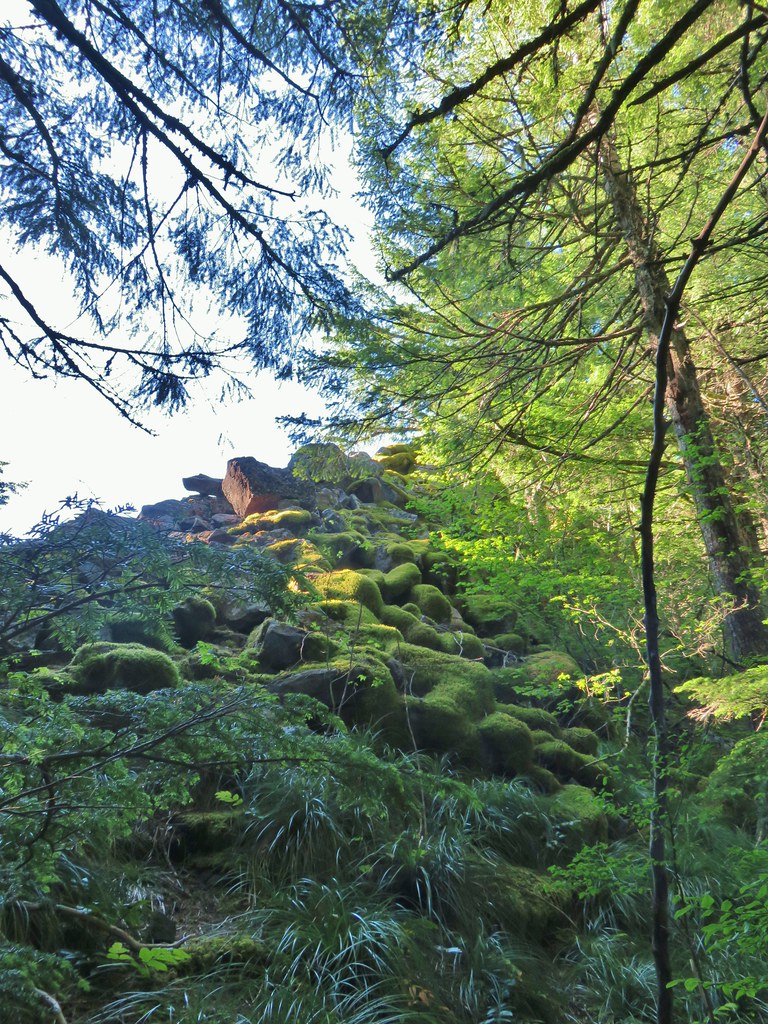
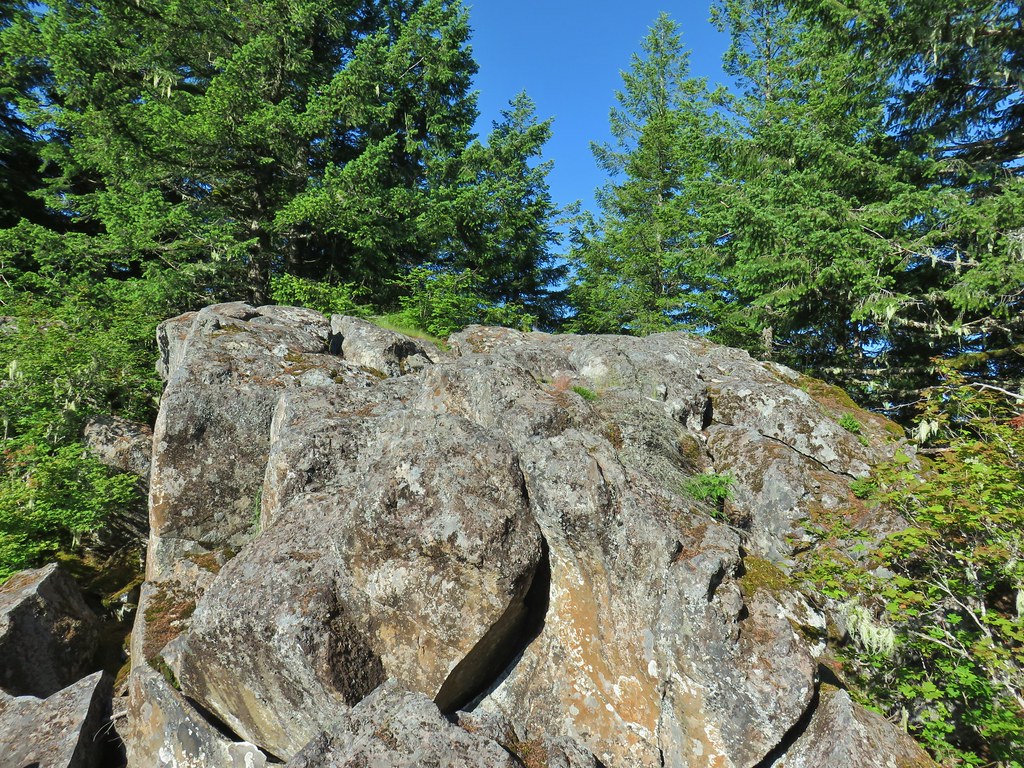 The top of the rocks.
The top of the rocks. Washed out view of Mt. Hood
Washed out view of Mt. Hood

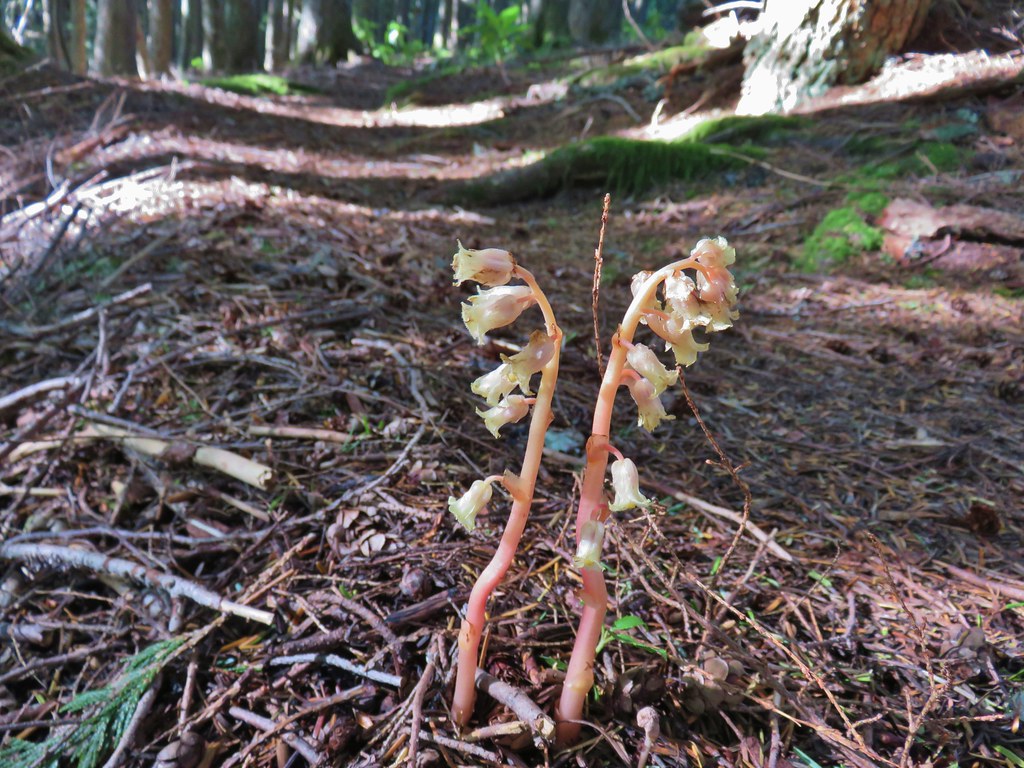 Pinesap
Pinesap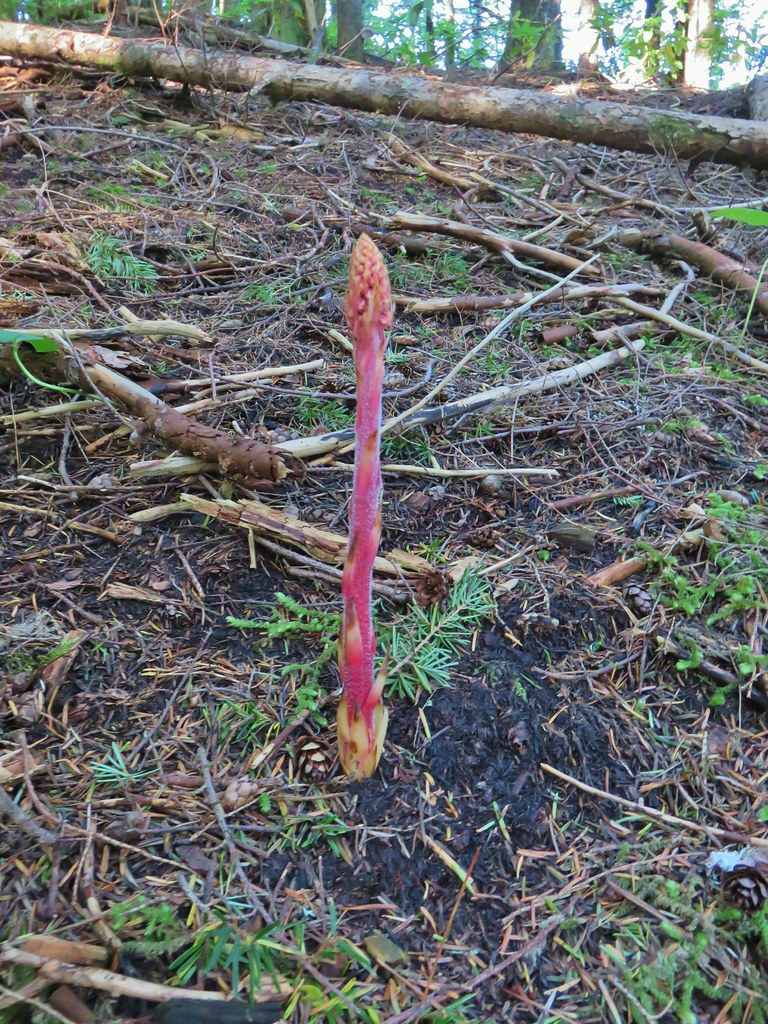 Pinedrop
Pinedrop Pacific coralroot
Pacific coralroot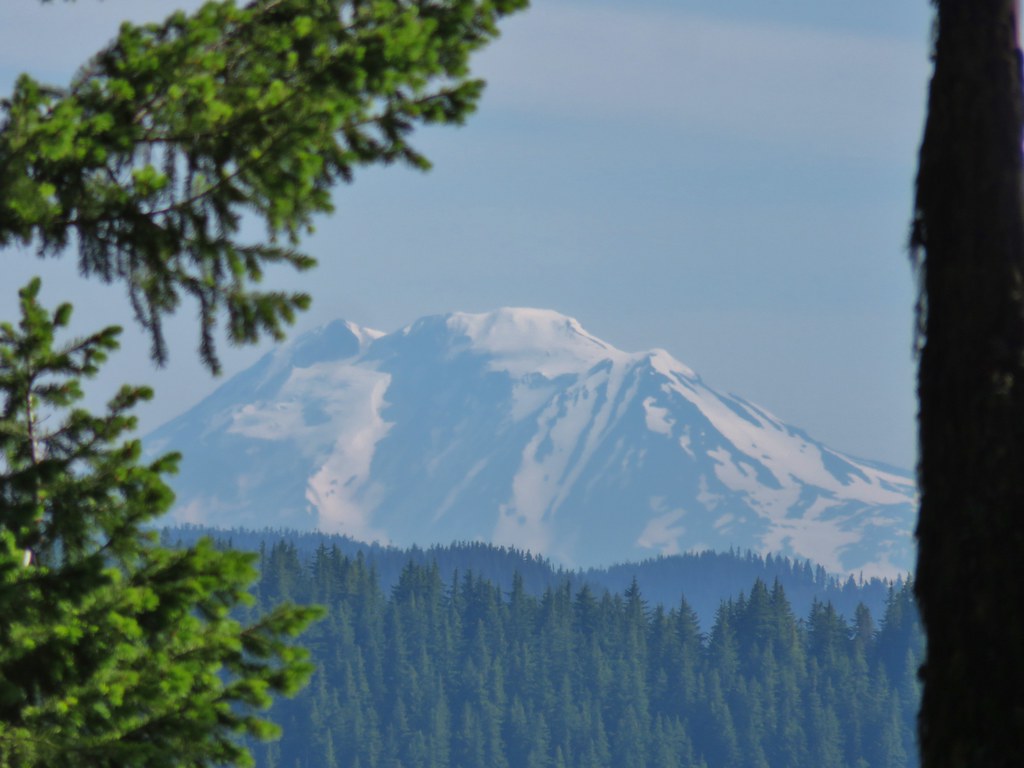


 Passing a rock outcrop on narrower tread.
Passing a rock outcrop on narrower tread.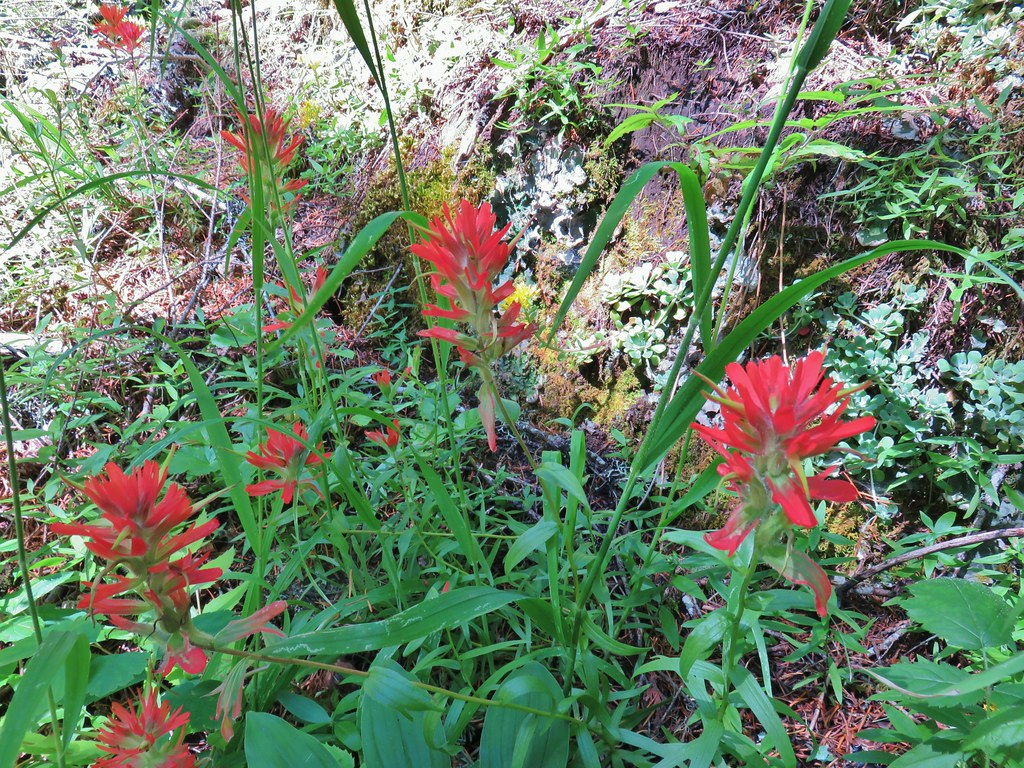 Paintbrush
Paintbrush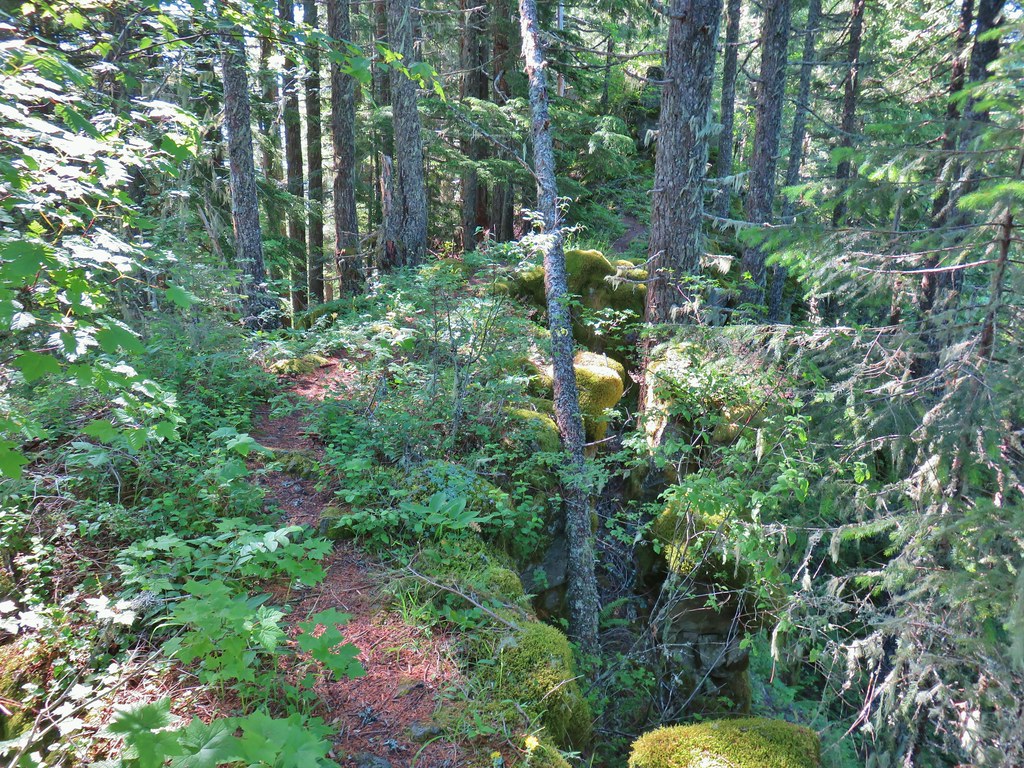 Rocky spine
Rocky spine Columbine
Columbine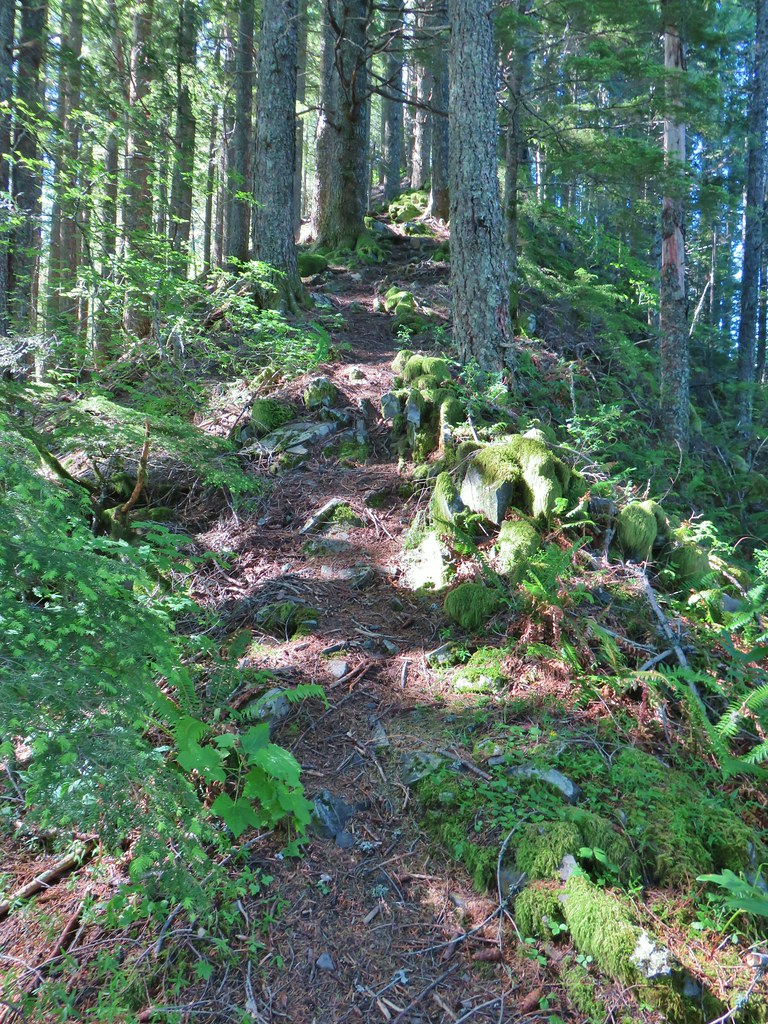 Climbing up the Hunchback Trail.
Climbing up the Hunchback Trail. Heather coming up the trail.
Heather coming up the trail.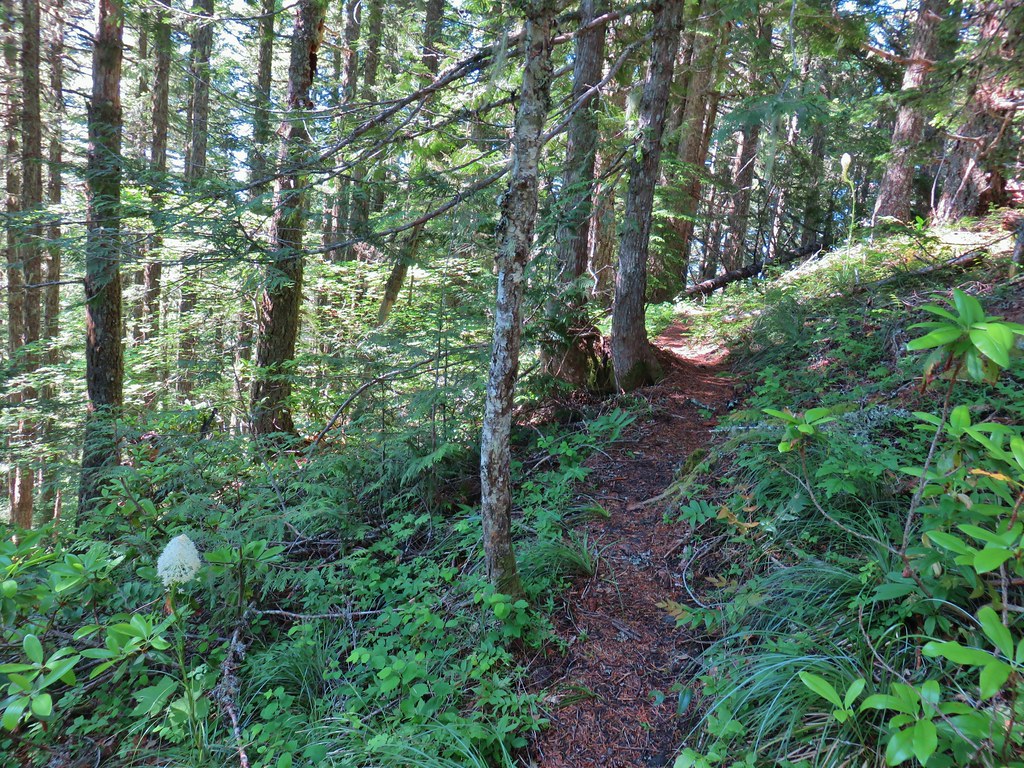 Beargrass near the 4000′ elevation.
Beargrass near the 4000′ elevation.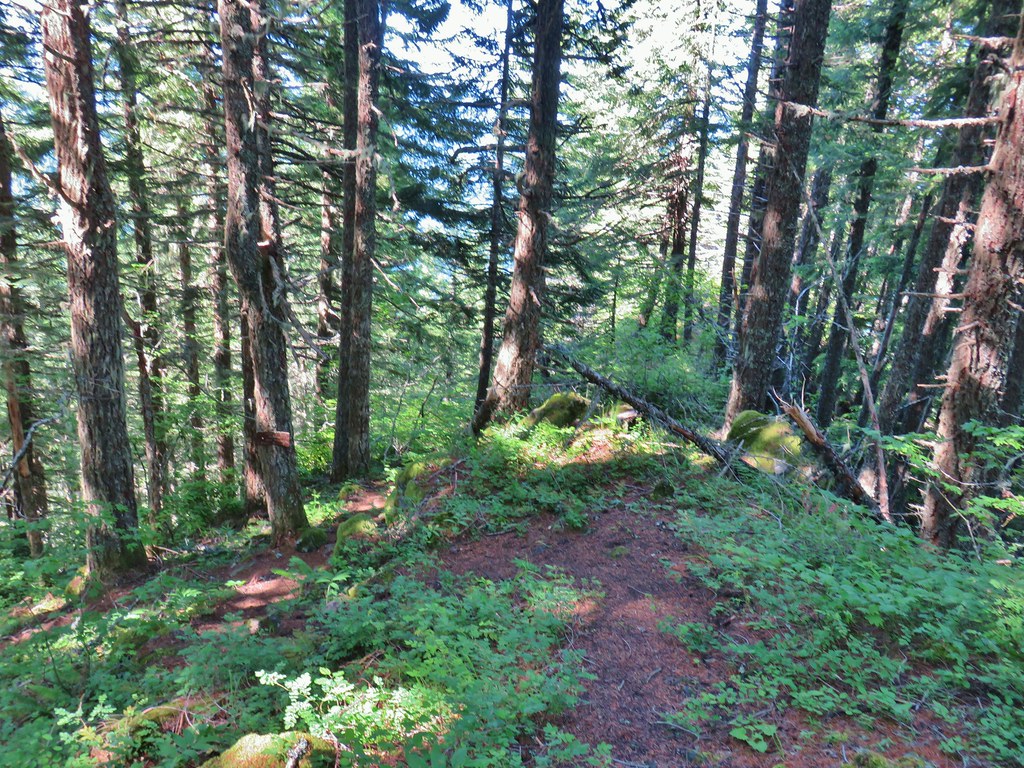 Heading down to the viewpoint sign.
Heading down to the viewpoint sign.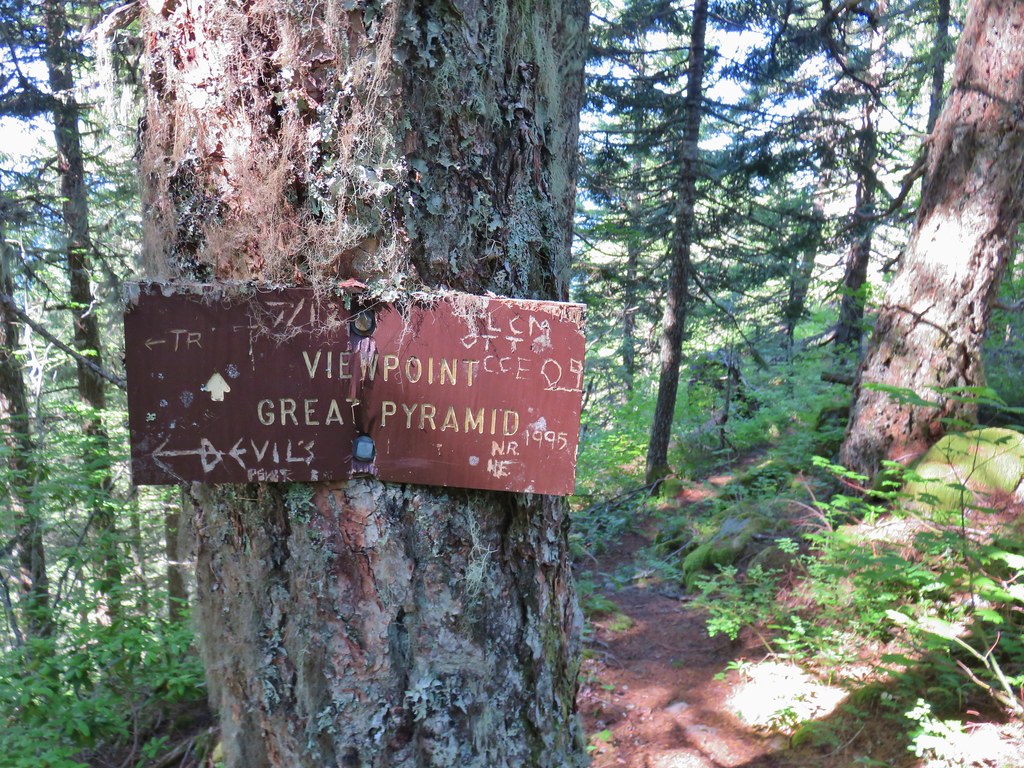 Side trail to the Great Pyramid.
Side trail to the Great Pyramid.

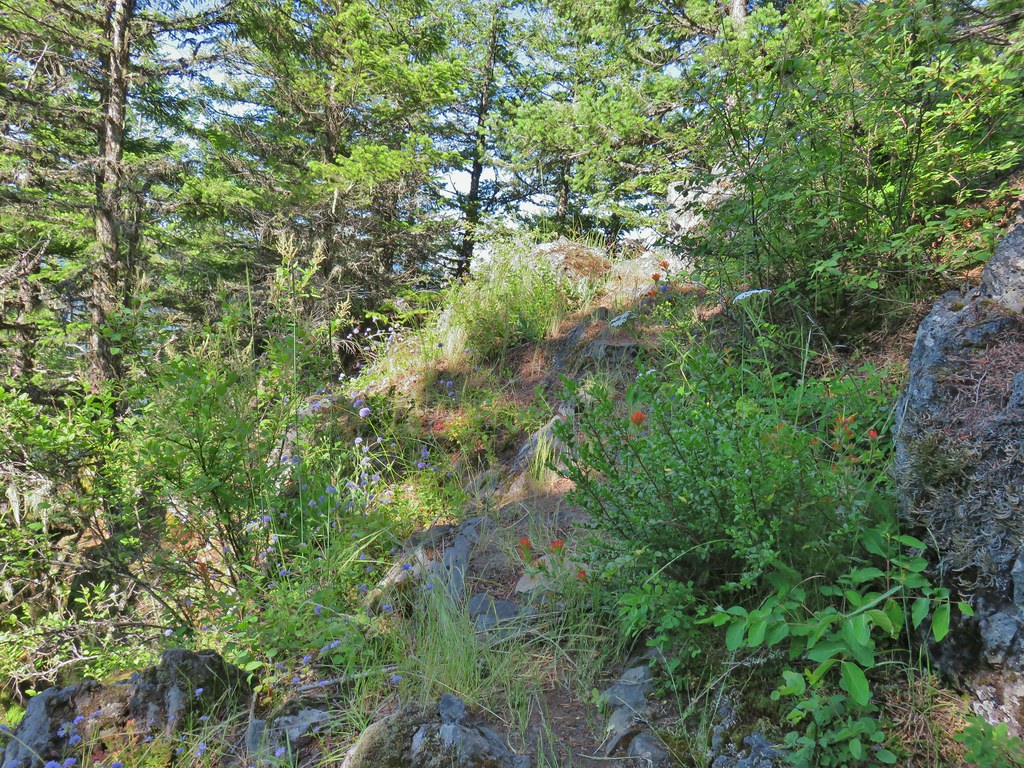
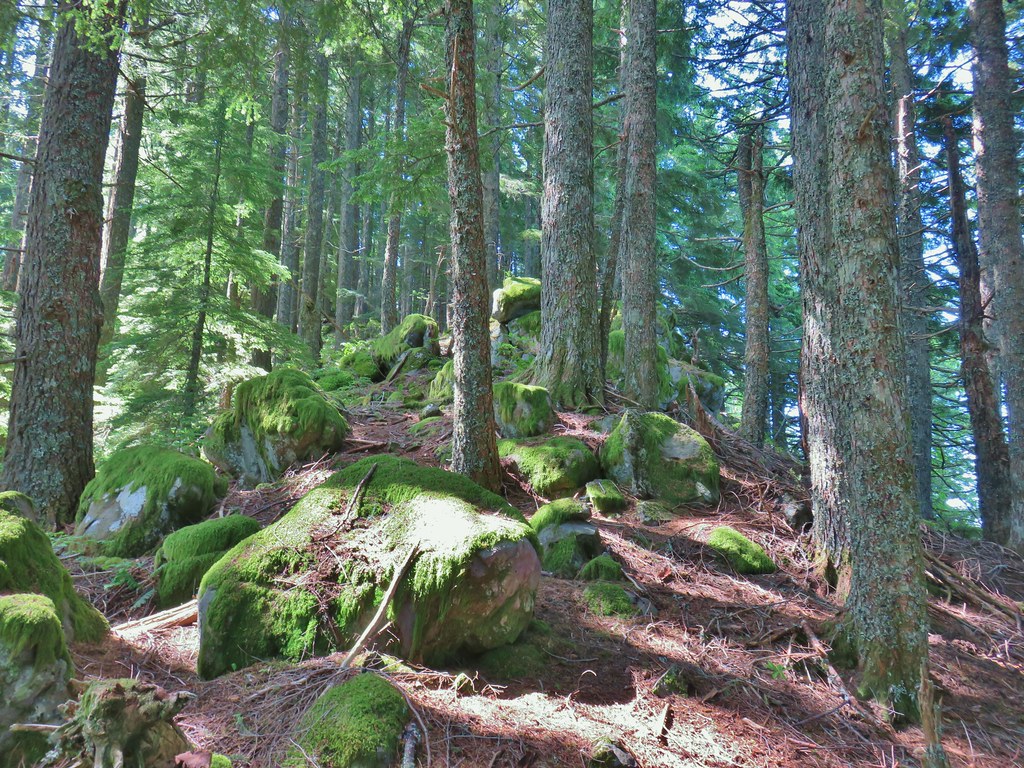
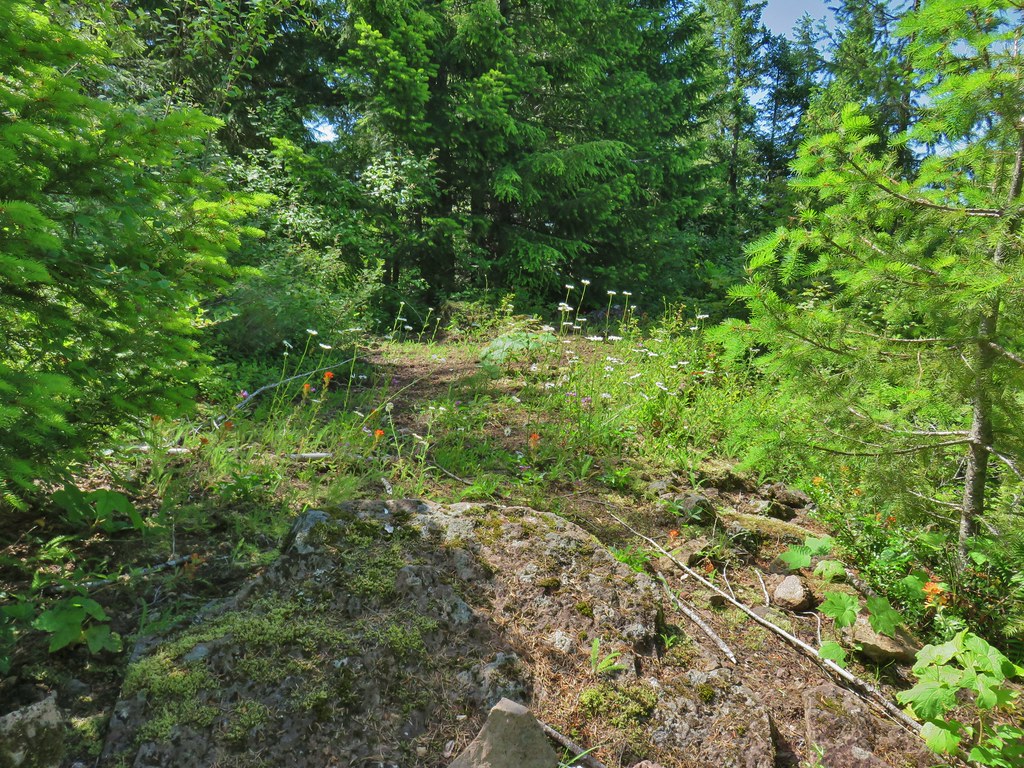

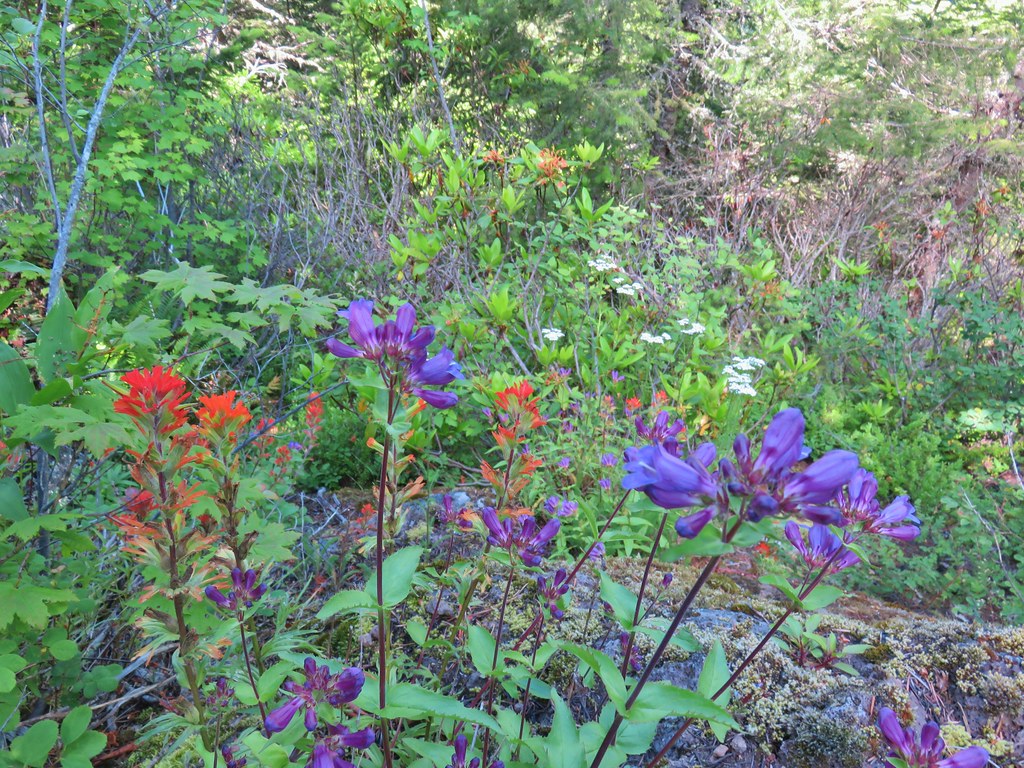
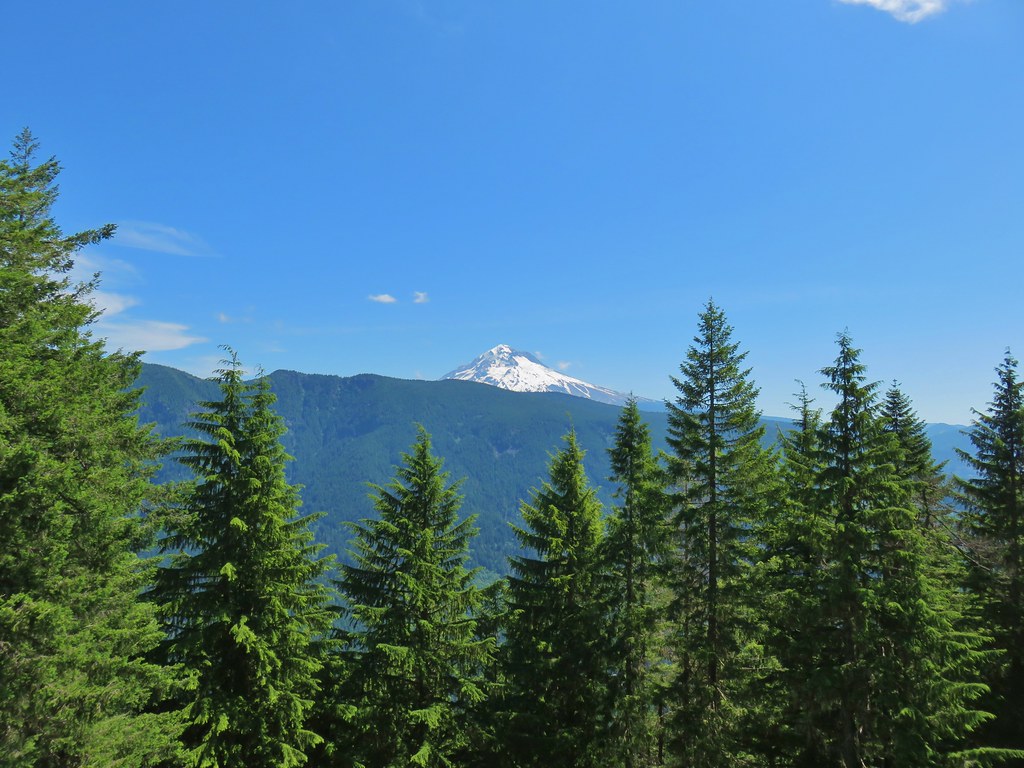 The cliffs of West Zigzag Mountain to the left of Mt. Hood where we’d been the week before (
The cliffs of West Zigzag Mountain to the left of Mt. Hood where we’d been the week before (
 We weren’t entirely alone as Heather was visited by a butterfly.
We weren’t entirely alone as Heather was visited by a butterfly.
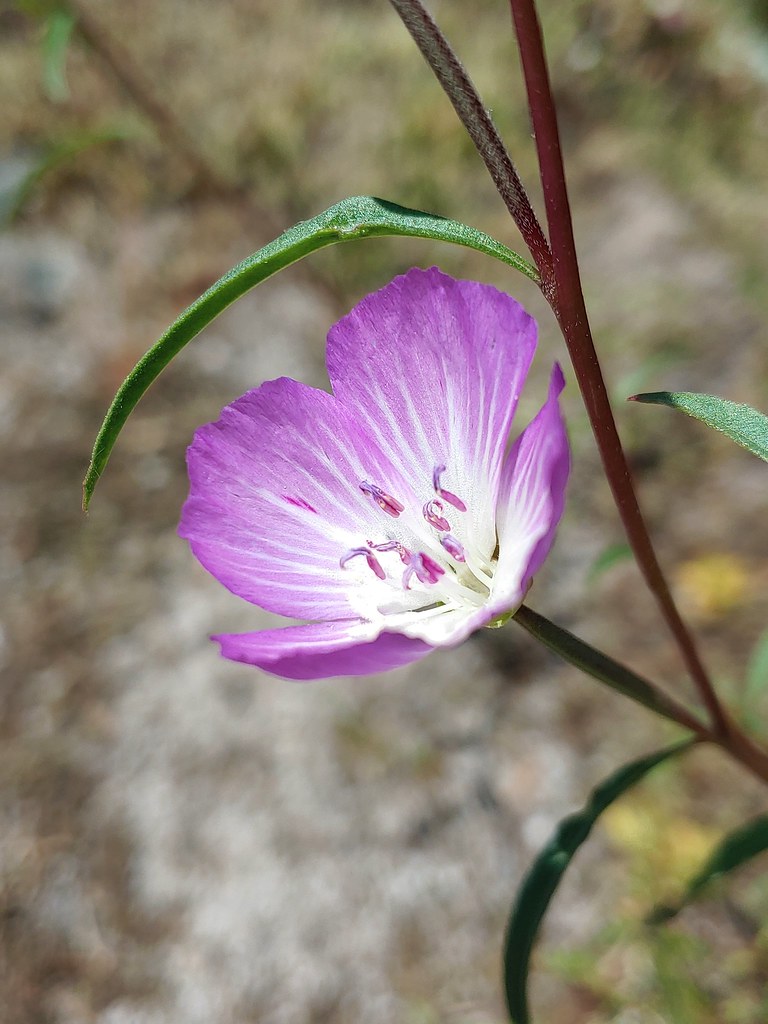
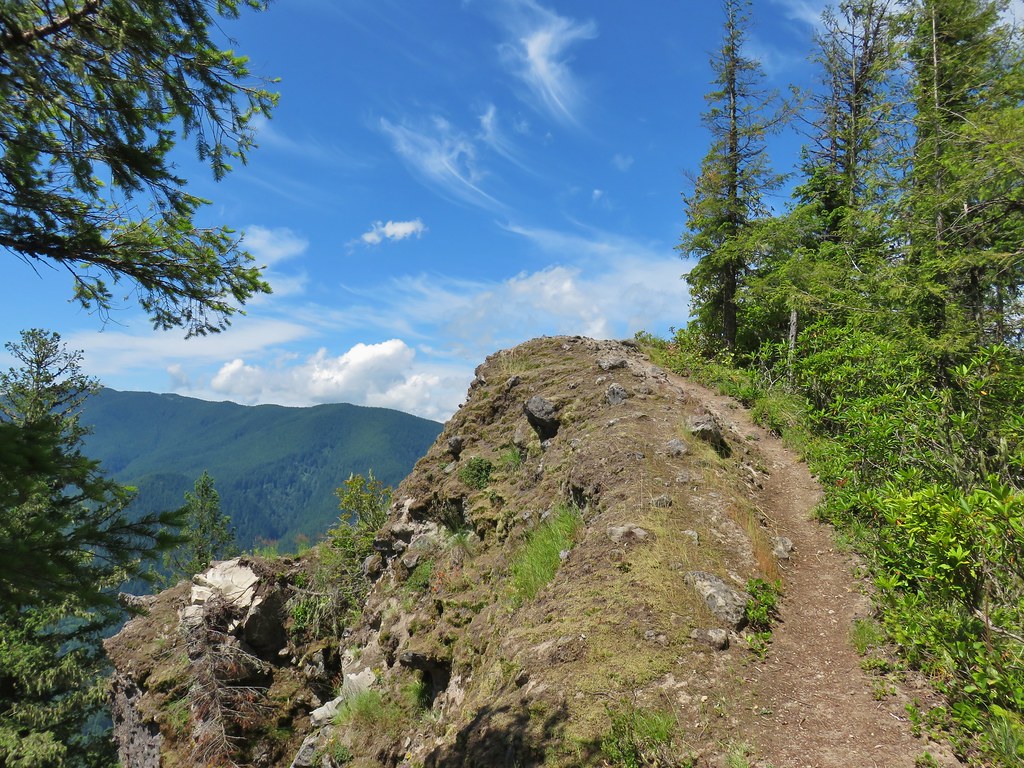
 Looking down into the Salmon River valley
Looking down into the Salmon River valley Looking west toward Highway 26
Looking west toward Highway 26 Blue-head gilia
Blue-head gilia Penstemon
Penstemon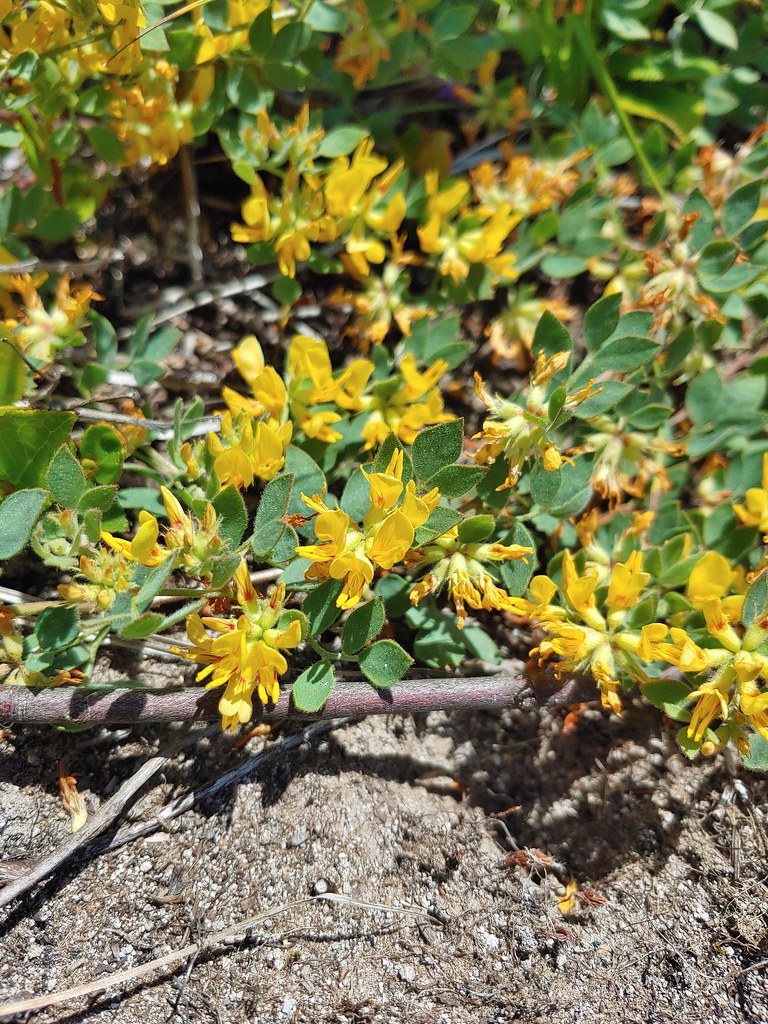
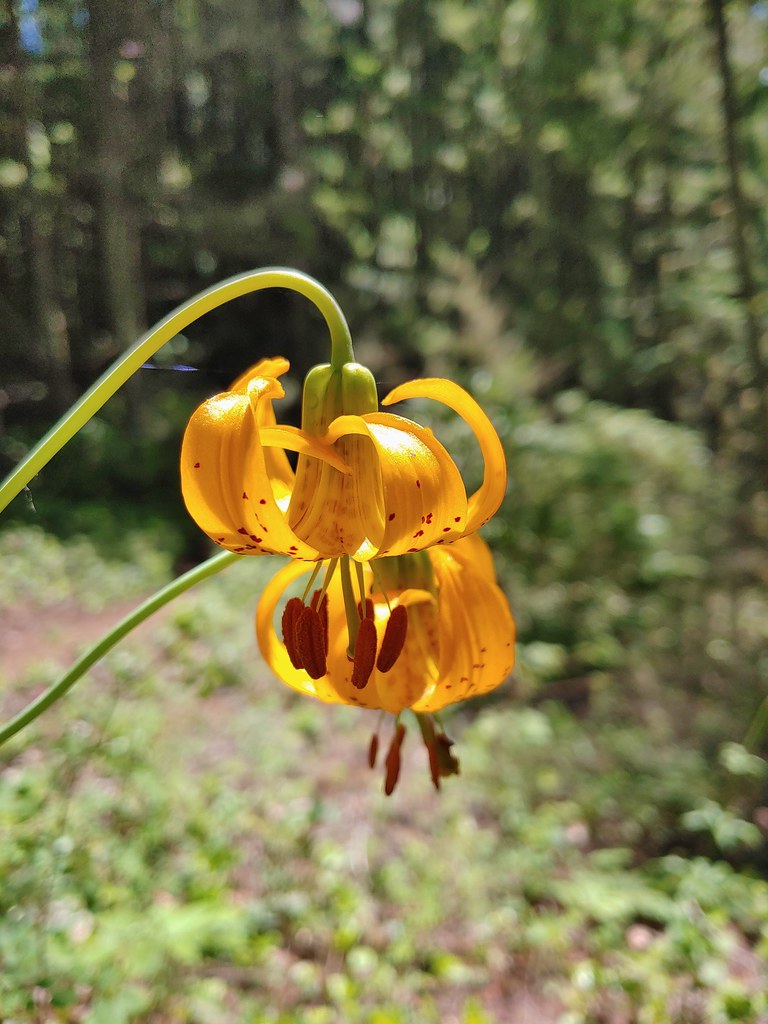 Tiger lilies
Tiger lilies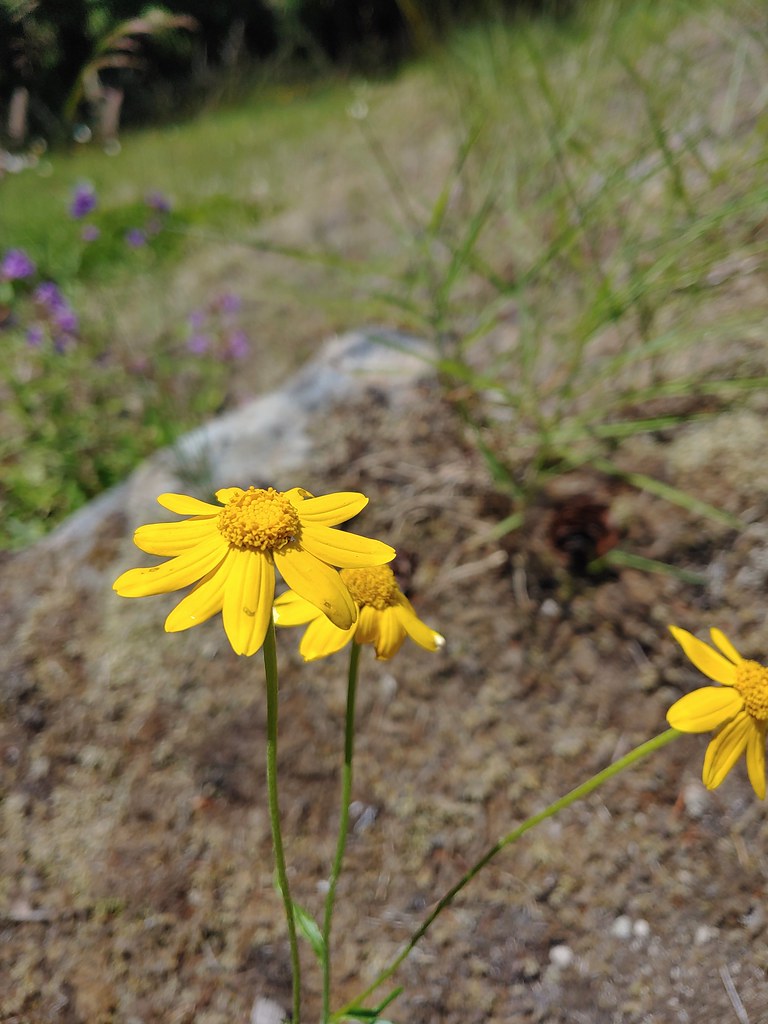 Oregon sunshine
Oregon sunshine Cat’s ear lilies
Cat’s ear lilies
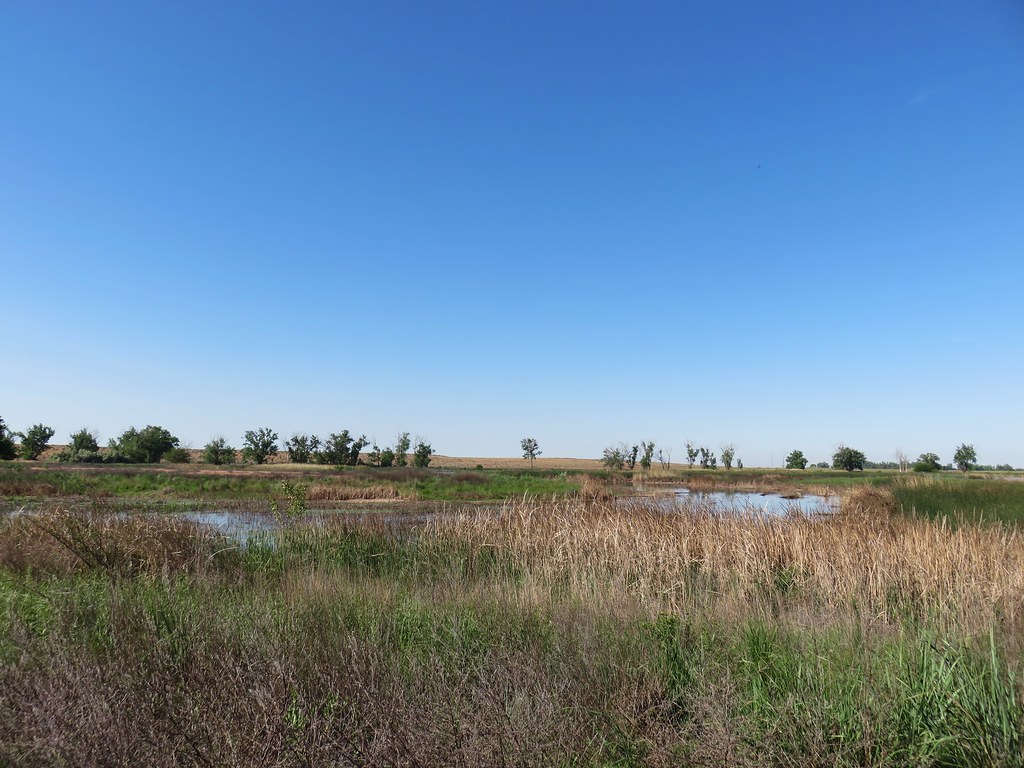 MCormack Slough in the Umatilla Wildlife Refuge.
MCormack Slough in the Umatilla Wildlife Refuge. Looking towards Hells Canyon from Freezout Saddle.
Looking towards Hells Canyon from Freezout Saddle. Wenaha River Canyon
Wenaha River Canyon



 Road walk at Henry Haag Lake
Road walk at Henry Haag Lake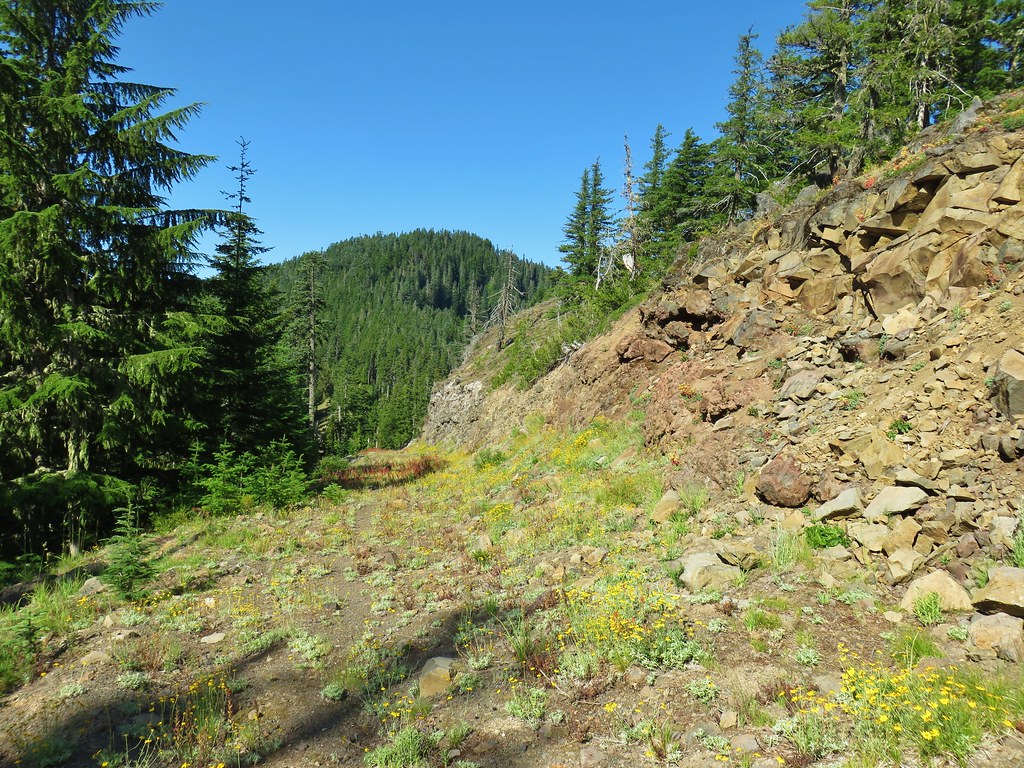 Decommissioned road to Baty Butte.
Decommissioned road to Baty Butte.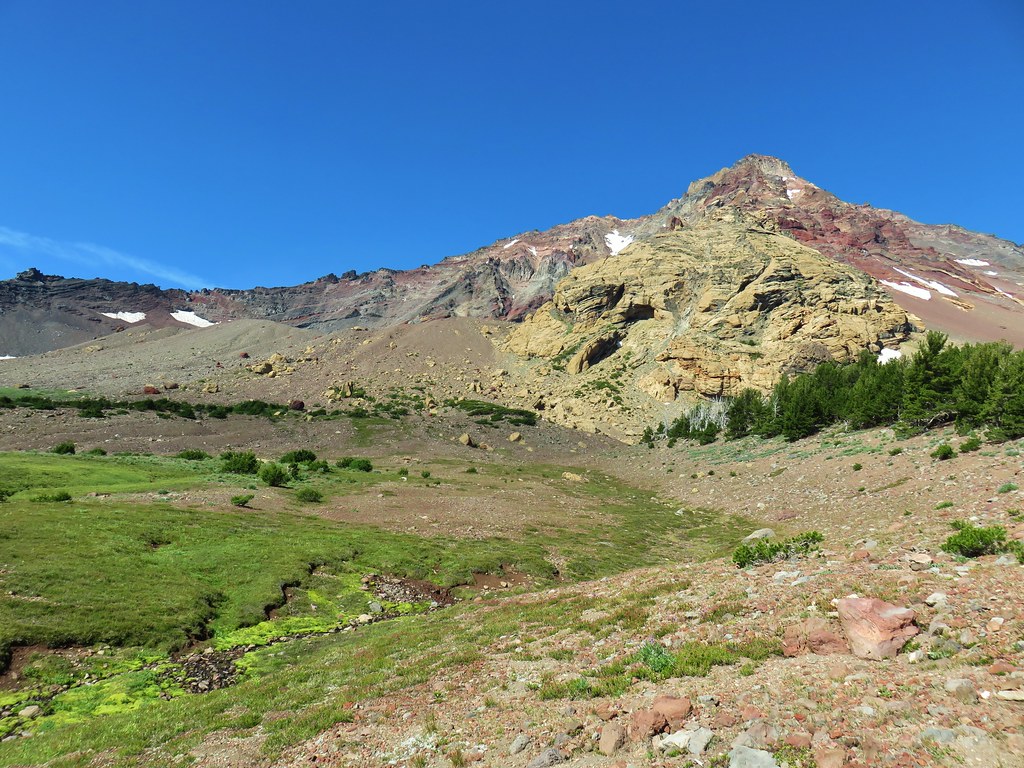 Cross country to Thayer Glacial Lake.
Cross country to Thayer Glacial Lake. Snow falling on our Freezout Saddle hike.
Snow falling on our Freezout Saddle hike.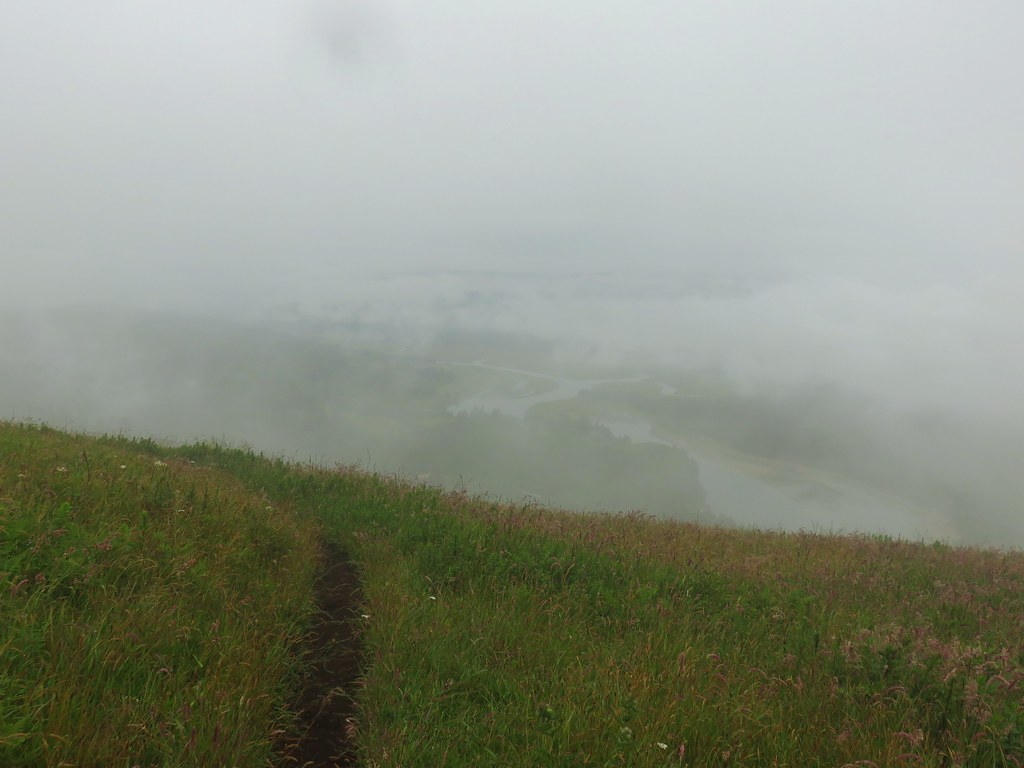 Rain shower approaching at Cascade Head.
Rain shower approaching at Cascade Head. Taking cover under a tree in the Mollala River Recreation Area as a rain shower passes overhead.
Taking cover under a tree in the Mollala River Recreation Area as a rain shower passes overhead. Rainbow framing the Wallowa Mountains from the Feezout Saddle Trail.
Rainbow framing the Wallowa Mountains from the Feezout Saddle Trail. View from Cascade Head after the shower.
View from Cascade Head after the shower.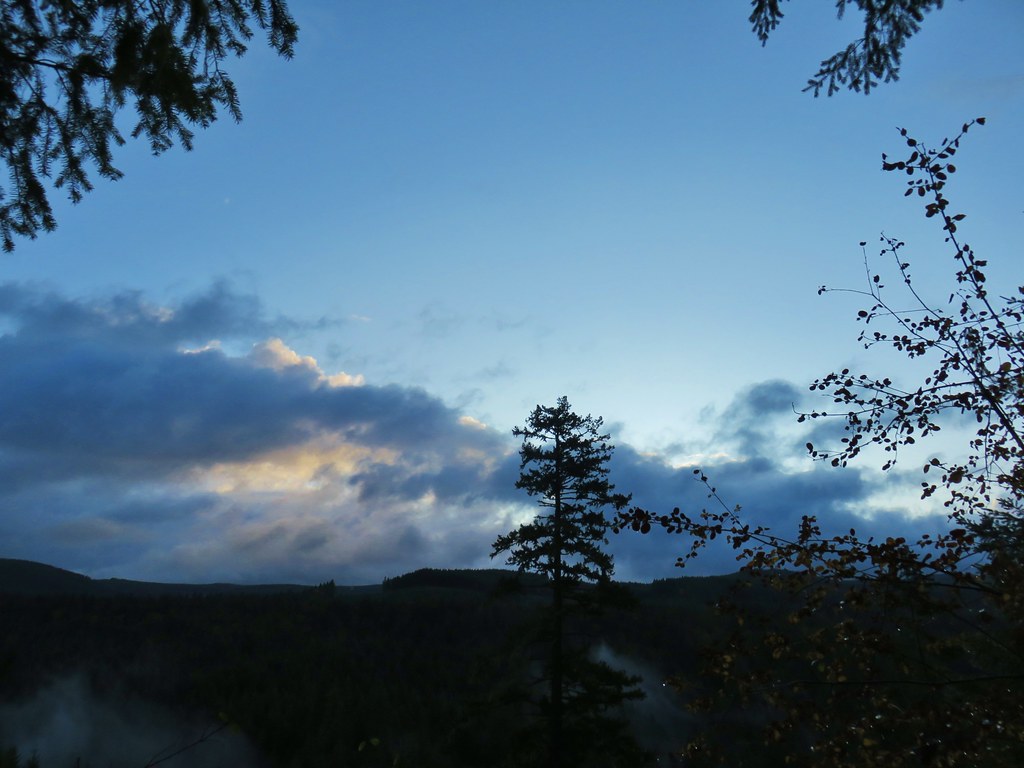 View from the morning across the Mollala River Canyon.
View from the morning across the Mollala River Canyon.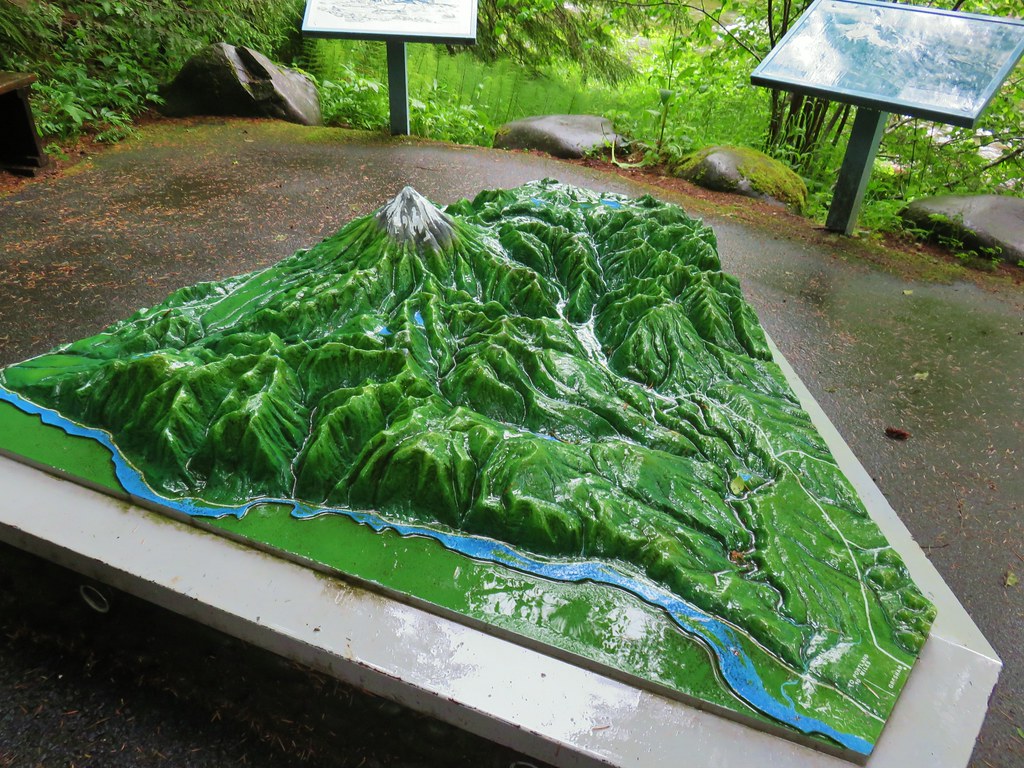 Neat 3D display at Wildwood Recreation Area.
Neat 3D display at Wildwood Recreation Area. View atop Huckleberry Mountain.
View atop Huckleberry Mountain.

 Gales Creek – Coast Range
Gales Creek – Coast Range Dry Creek Falls – Columbia River Gorge, OR
Dry Creek Falls – Columbia River Gorge, OR Camassia Natural Area – West Linn
Camassia Natural Area – West Linn Two Chiefs and Table Mountain – Columbia River Gorge, WA
Two Chiefs and Table Mountain – Columbia River Gorge, WA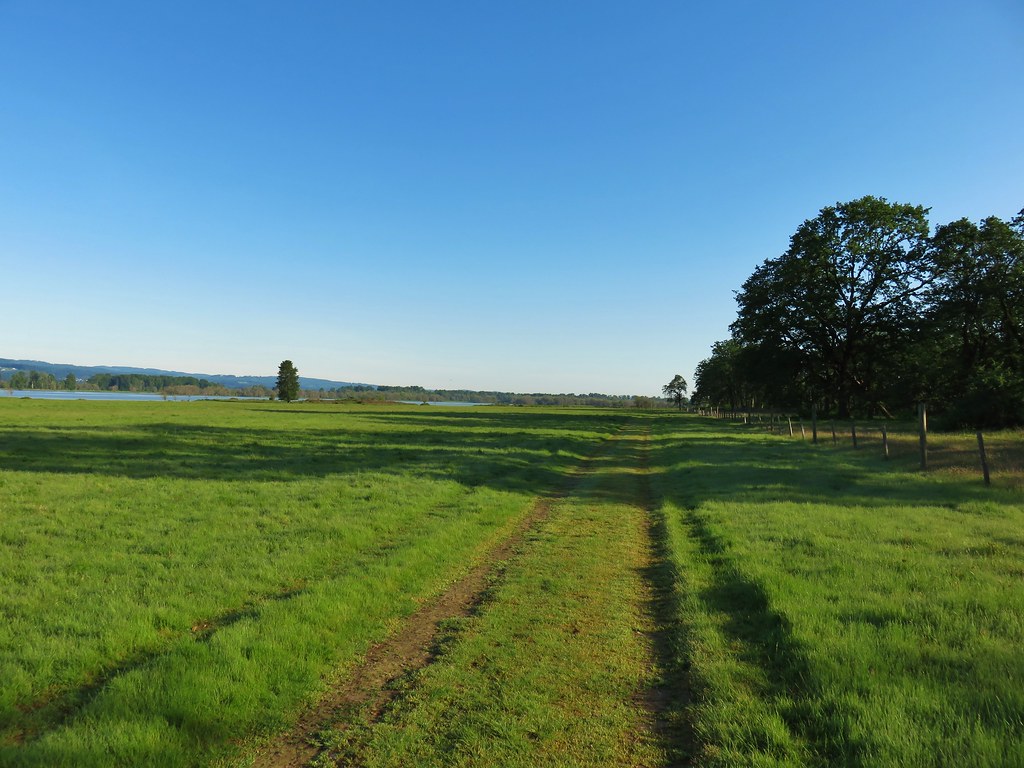 Oak Island – Columbia River
Oak Island – Columbia River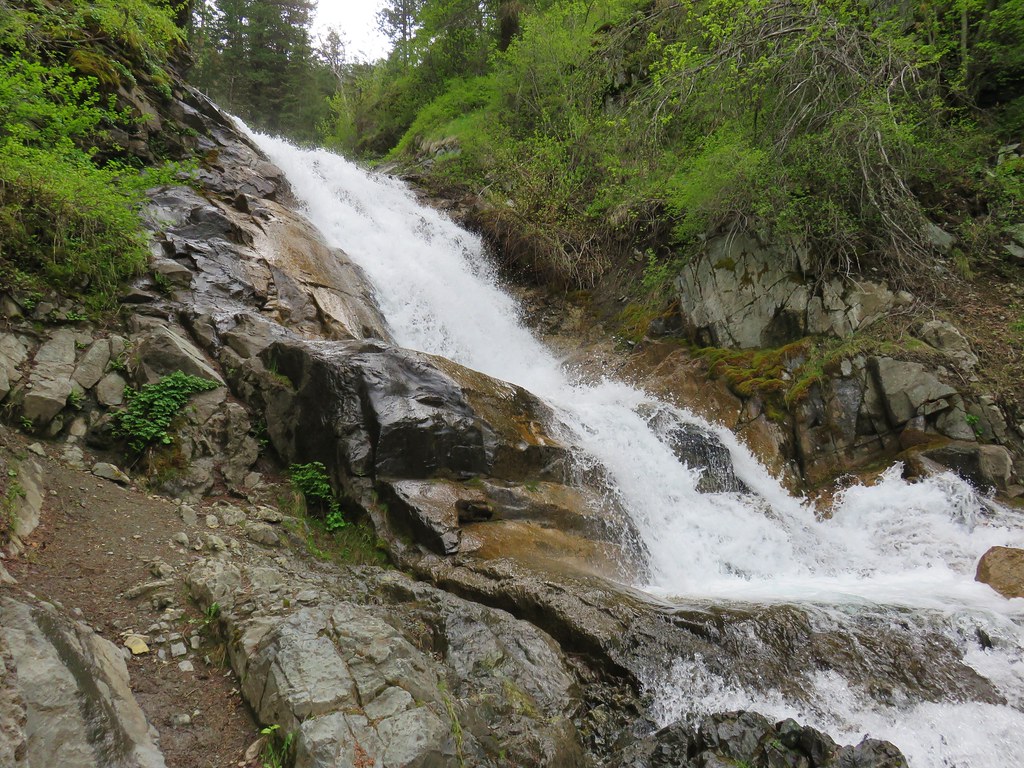 B.C. Creek Falls – Wallowa Mountains
B.C. Creek Falls – Wallowa Mountains Wallowa Mountains
Wallowa Mountains Harsin Butte – Zumwalt Prairie
Harsin Butte – Zumwalt Prairie Sardine Mountain – Willamette National Forest
Sardine Mountain – Willamette National Forest Gorton Creek Falls – Columbia River Gorge, OR
Gorton Creek Falls – Columbia River Gorge, OR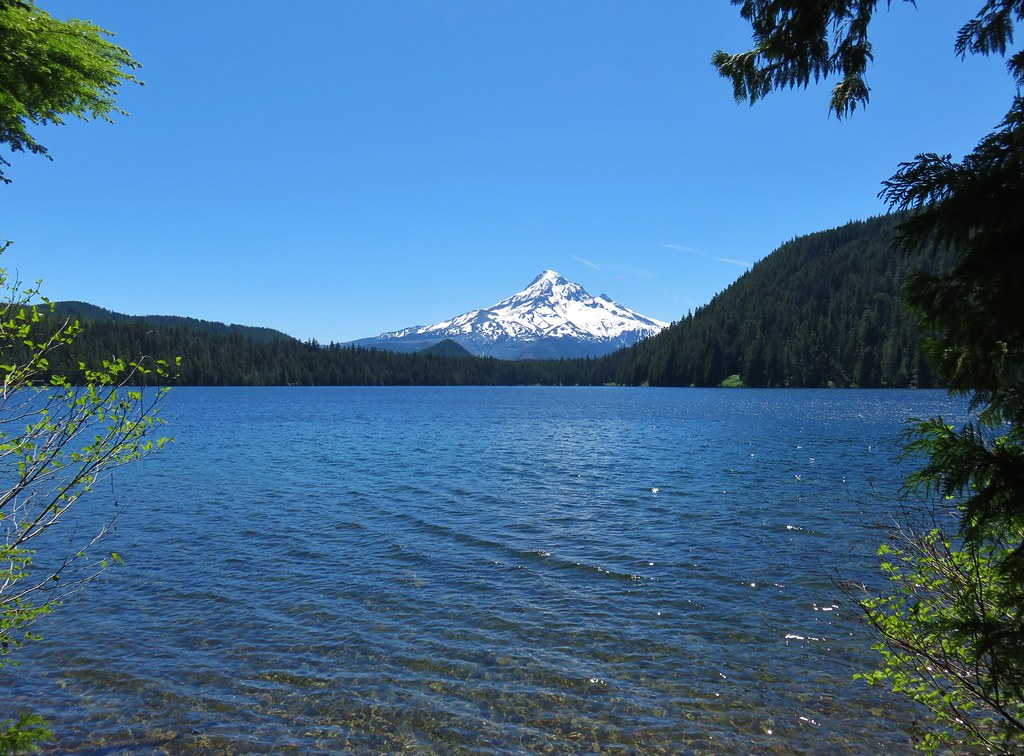 Mt. Hood from Lost Lake
Mt. Hood from Lost Lake Mt. Hood from Vista Ridge
Mt. Hood from Vista Ridge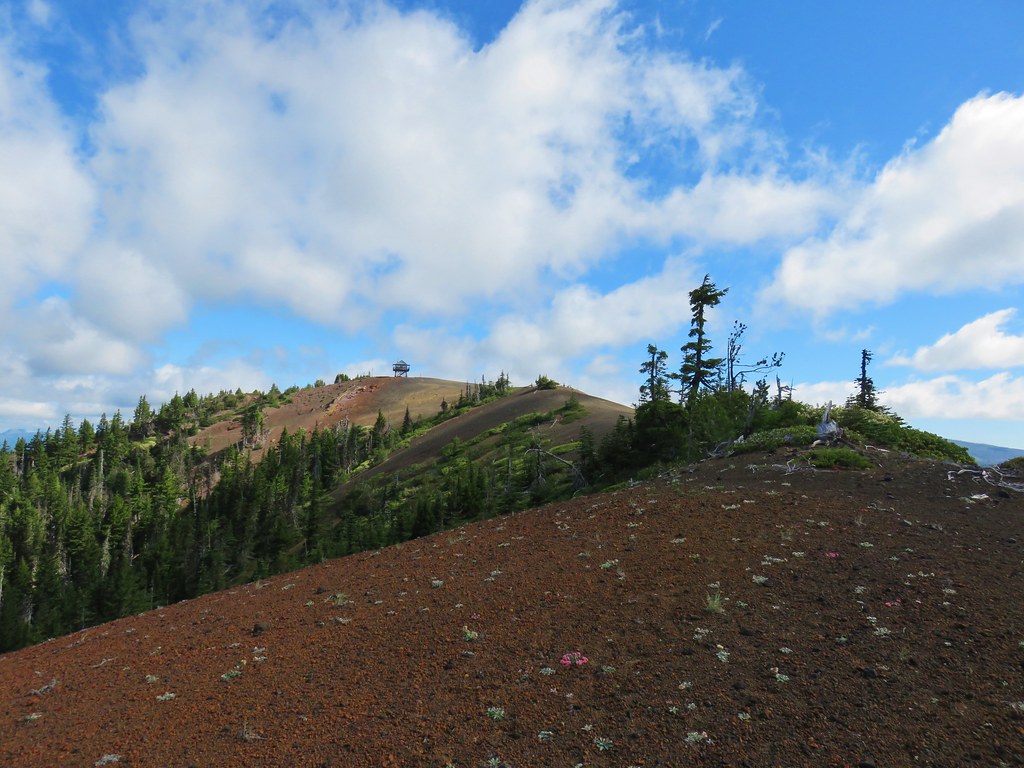 Sand Mountain Lookout – Willamette National Forest
Sand Mountain Lookout – Willamette National Forest Cape Kiwanda and Haystack Rock from Sitka Sedge Beach
Cape Kiwanda and Haystack Rock from Sitka Sedge Beach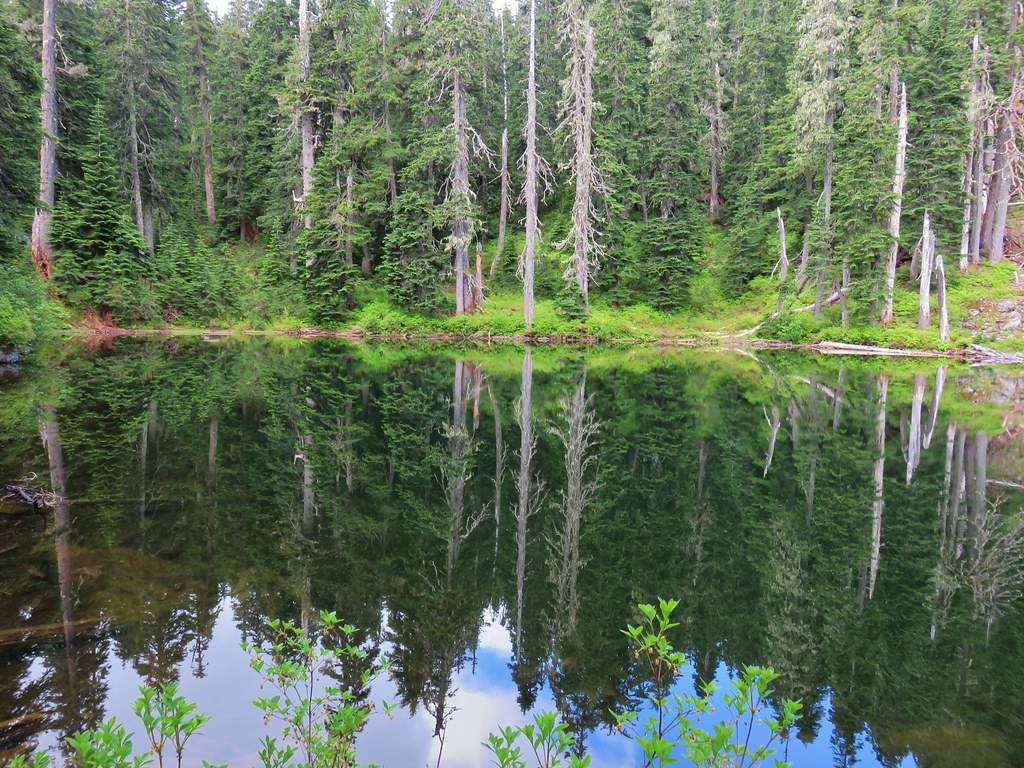 High Lake – Mt. Hood National Forest
High Lake – Mt. Hood National Forest Tidbits Mountain – Willamette National Forest
Tidbits Mountain – Willamette National Forest Bunchgrass Meadow – Willamette National Forest
Bunchgrass Meadow – Willamette National Forest Breitenbush Cascades – Willamette National Forest
Breitenbush Cascades – Willamette National Forest Mt. St. Helens from Cinnamon Ridge – Mt. St. Helens National Volcanic Monument
Mt. St. Helens from Cinnamon Ridge – Mt. St. Helens National Volcanic Monument Mt. Jefferson from Bear Point – Mt. Jefferson Wilderness
Mt. Jefferson from Bear Point – Mt. Jefferson Wilderness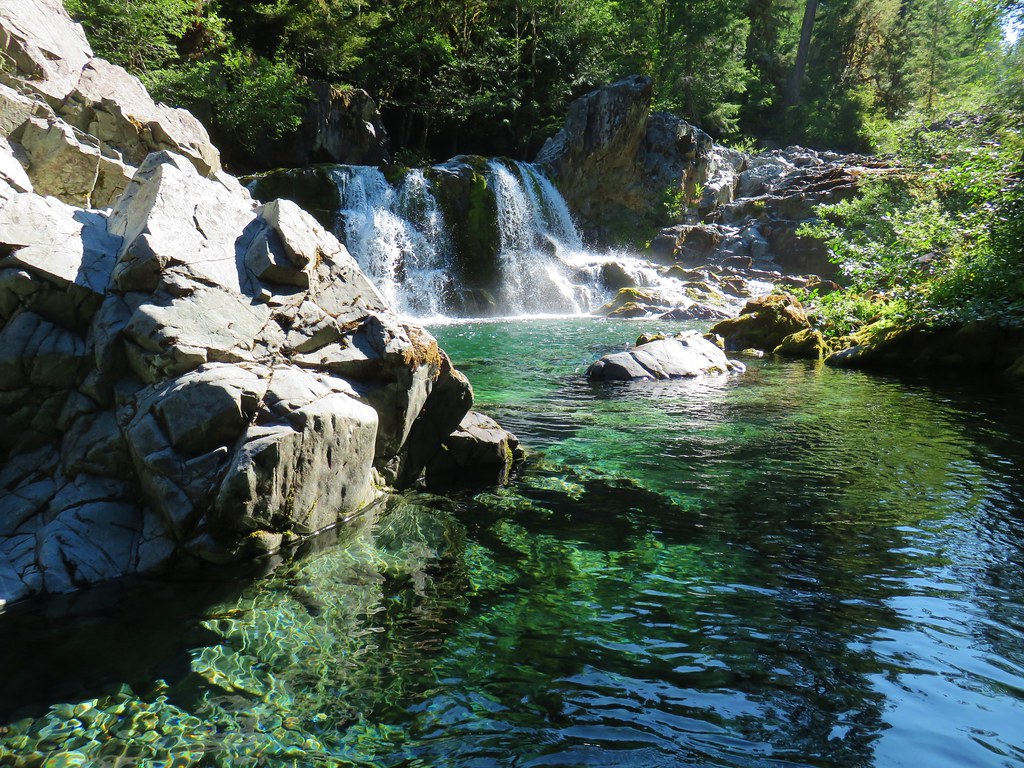 Sawmill Falls – Little North Fork Santiam River
Sawmill Falls – Little North Fork Santiam River Three Fingered Jack, The Three Sisters, and Mt. Washington
Three Fingered Jack, The Three Sisters, and Mt. Washington Scramble route to Baty Butte – Mt. Hood National Forest
Scramble route to Baty Butte – Mt. Hood National Forest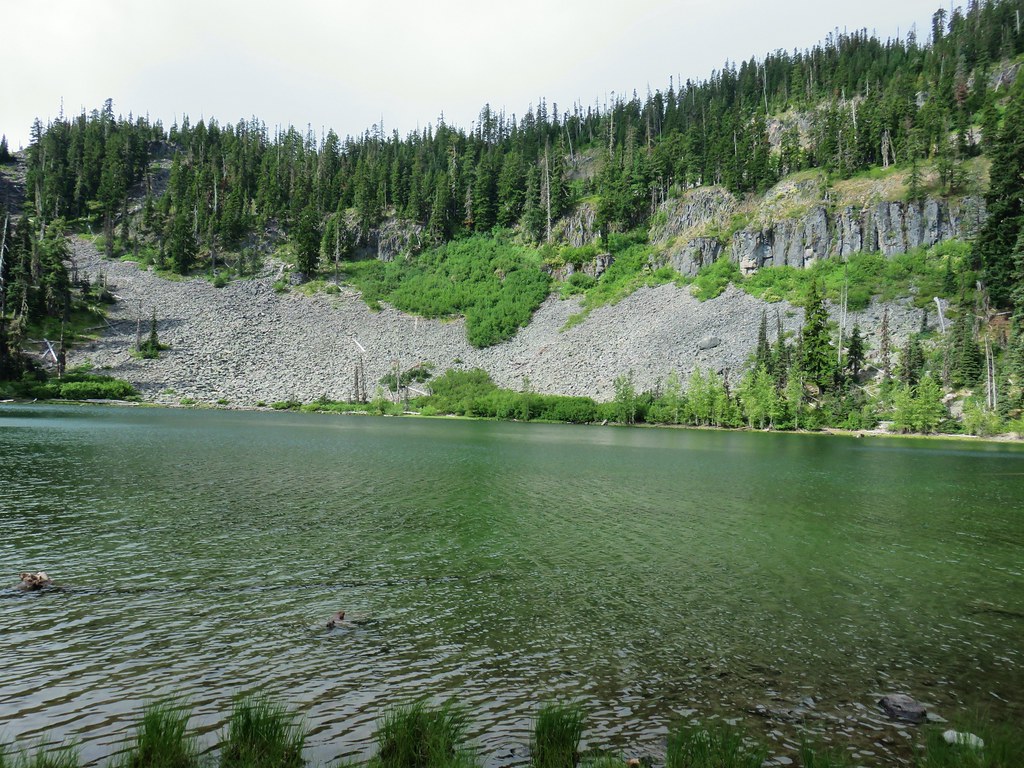 Boulder Lake – Mt. Hood National Forest
Boulder Lake – Mt. Hood National Forest Drift Creek – Drift Creek Wilderness
Drift Creek – Drift Creek Wilderness North Sister and Thayer Glacial Lake – Three Sisters Wilderness
North Sister and Thayer Glacial Lake – Three Sisters Wilderness North Sister, Middle Sister, and The Husband from Four-In-One Cone – Three Sisters Wilderness
North Sister, Middle Sister, and The Husband from Four-In-One Cone – Three Sisters Wilderness Mt. Hood from Tumala Mountain – Mt. Hood National Forest
Mt. Hood from Tumala Mountain – Mt. Hood National Forest Bull of the Woods Lookout – Bull of the Woods Wilderness
Bull of the Woods Lookout – Bull of the Woods Wilderness Mt. Hood from Elk Cove – Mt. Hood Wilderness
Mt. Hood from Elk Cove – Mt. Hood Wilderness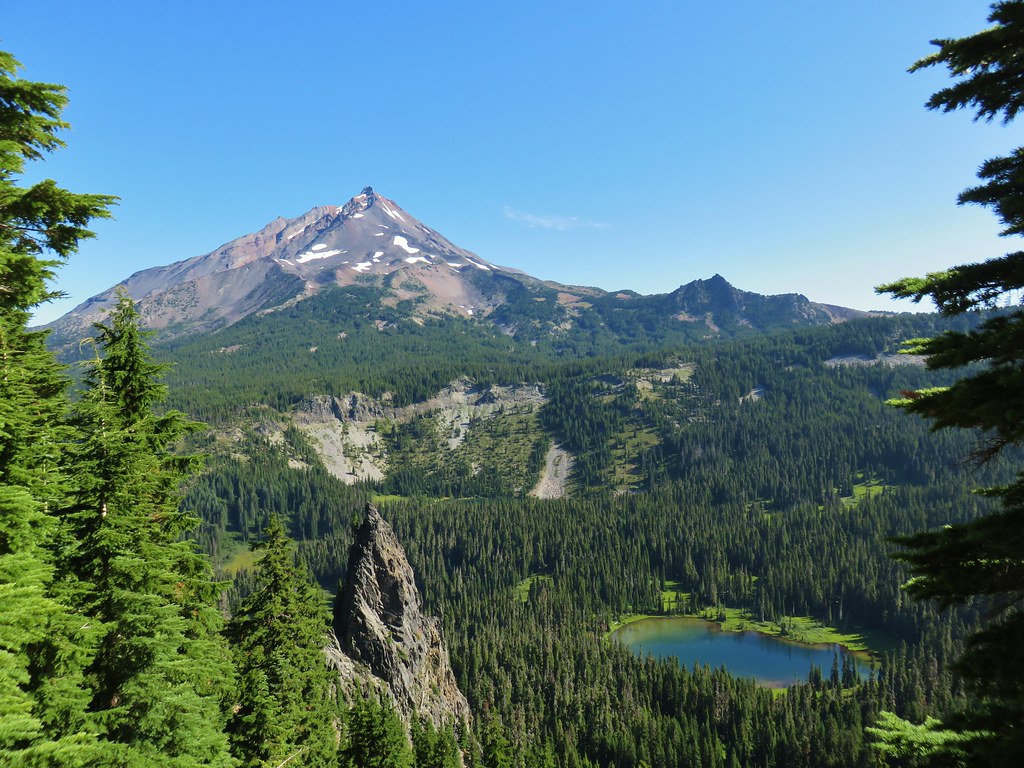 Mt. Jefferson and Hunts Cove – Mt. Jefferson Wilderness
Mt. Jefferson and Hunts Cove – Mt. Jefferson Wilderness View from Olallie Butte – Warm Springs Indian Reservation
View from Olallie Butte – Warm Springs Indian Reservation Lillian Falls – Waldo Lake Wilderness
Lillian Falls – Waldo Lake Wilderness Olallie Mountain Lookout – Three Sisters Wilderness
Olallie Mountain Lookout – Three Sisters Wilderness King Tut – Crabtree Valley
King Tut – Crabtree Valley Mt. Jefferson from Ruddy Hill – Mt. Hood National Forest
Mt. Jefferson from Ruddy Hill – Mt. Hood National Forest Henry Haag Lake – Scoggins Valley
Henry Haag Lake – Scoggins Valley Waldo Lake and the Cascade Mountains from The Twins – Deschutes National Forest
Waldo Lake and the Cascade Mountains from The Twins – Deschutes National Forest Bobby Lake – Deschutes National Forest
Bobby Lake – Deschutes National Forest Indian Henry’s Hunting Ground – Mt. Rainier National Park
Indian Henry’s Hunting Ground – Mt. Rainier National Park Fog over the valley from Mt. Pisgah – Eugene, OR
Fog over the valley from Mt. Pisgah – Eugene, OR Twin Peaks and Gifford Lake – Olallie Lake Scenic Area
Twin Peaks and Gifford Lake – Olallie Lake Scenic Area Mt. Adams from Lookout Mountain – Badger Creek Wilderness Area
Mt. Adams from Lookout Mountain – Badger Creek Wilderness Area Mollala River Recreation Area
Mollala River Recreation Area View toward Washington from the Pacific Crest Trail near Indian Mountain – Mt. Hood National Forest
View toward Washington from the Pacific Crest Trail near Indian Mountain – Mt. Hood National Forest Clackamas River – Mt. Hood National Forest
Clackamas River – Mt. Hood National Forest Forest Park – Portland, OR
Forest Park – Portland, OR Tilikum Crossing – Portland, OR
Tilikum Crossing – Portland, OR





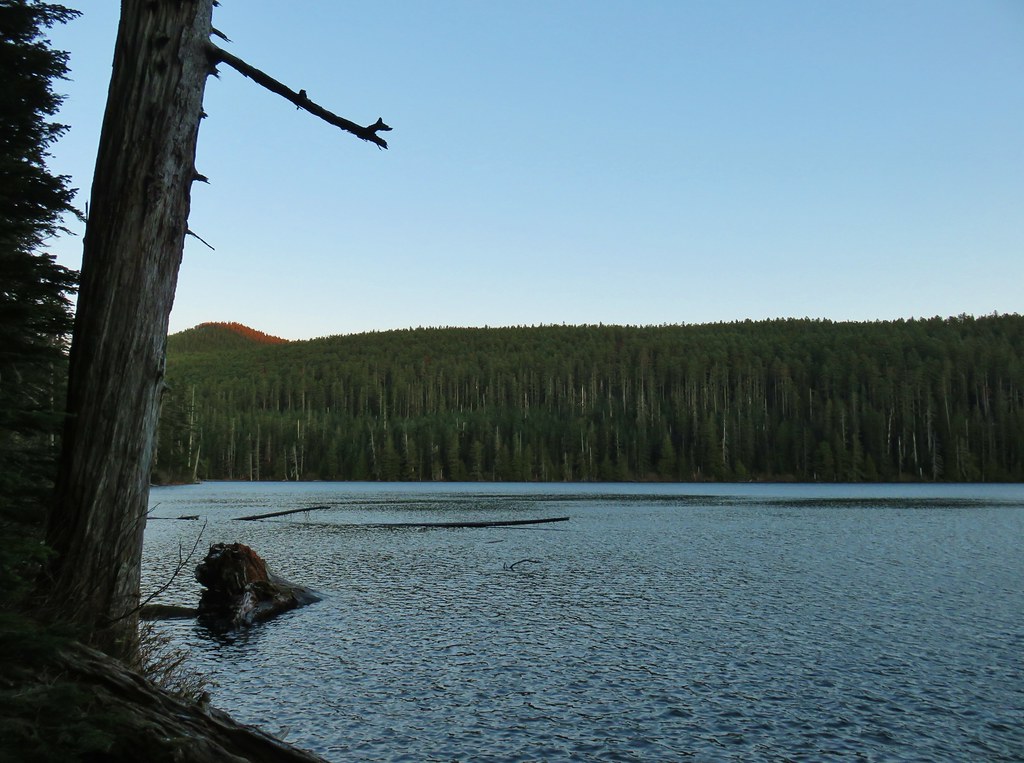 Chindrie Mountain from across Wahtum Lake.
Chindrie Mountain from across Wahtum Lake.



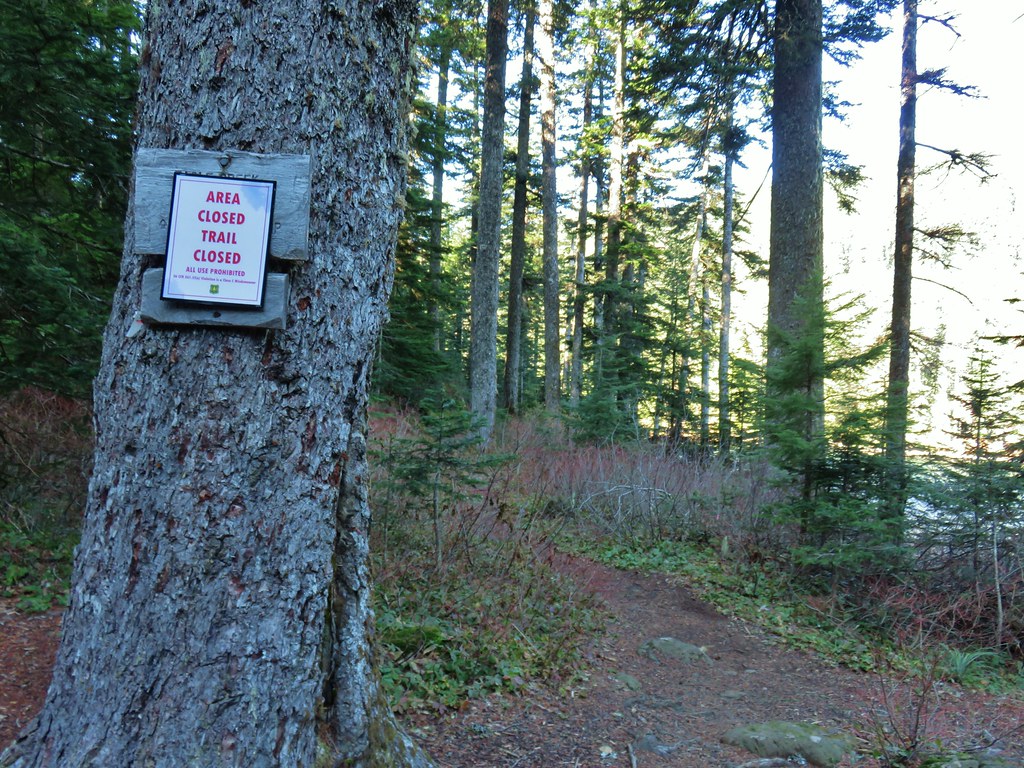
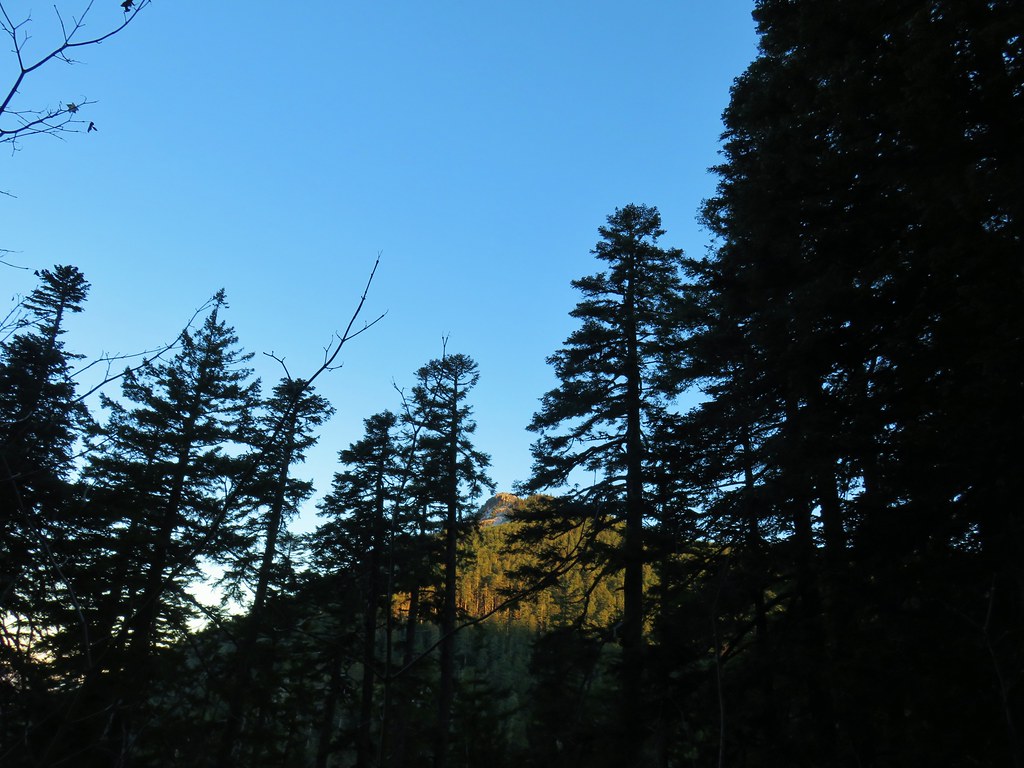 Chindrie Mountain
Chindrie Mountain Tanner Butte
Tanner Butte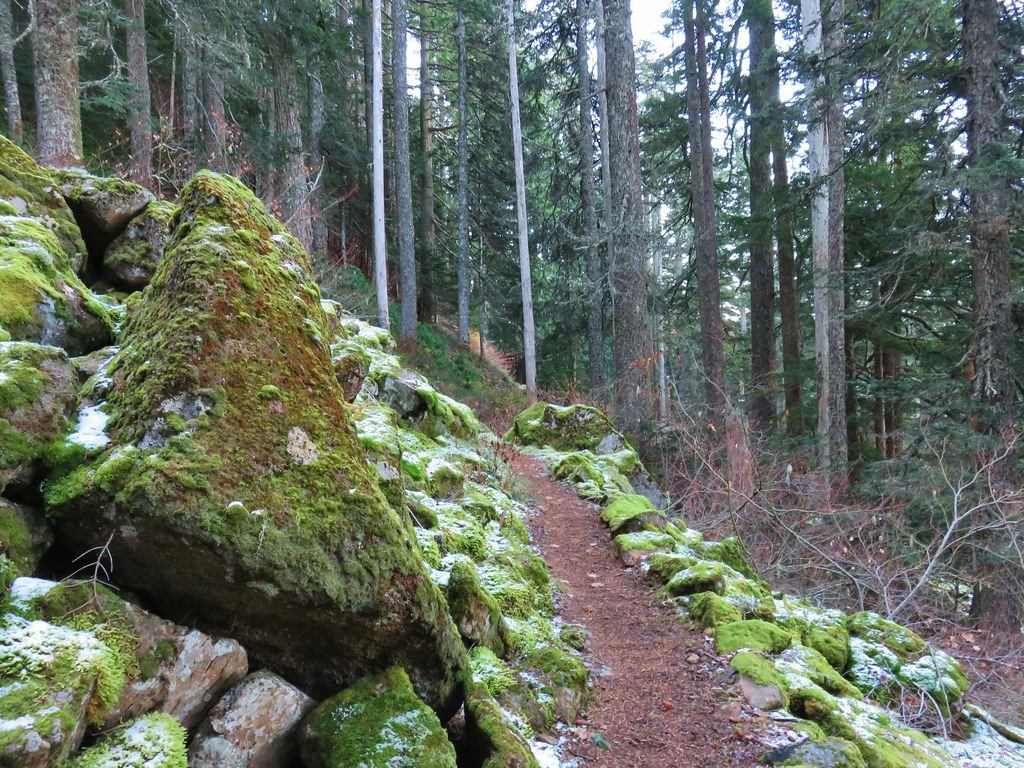
 Table Mountain
Table Mountain
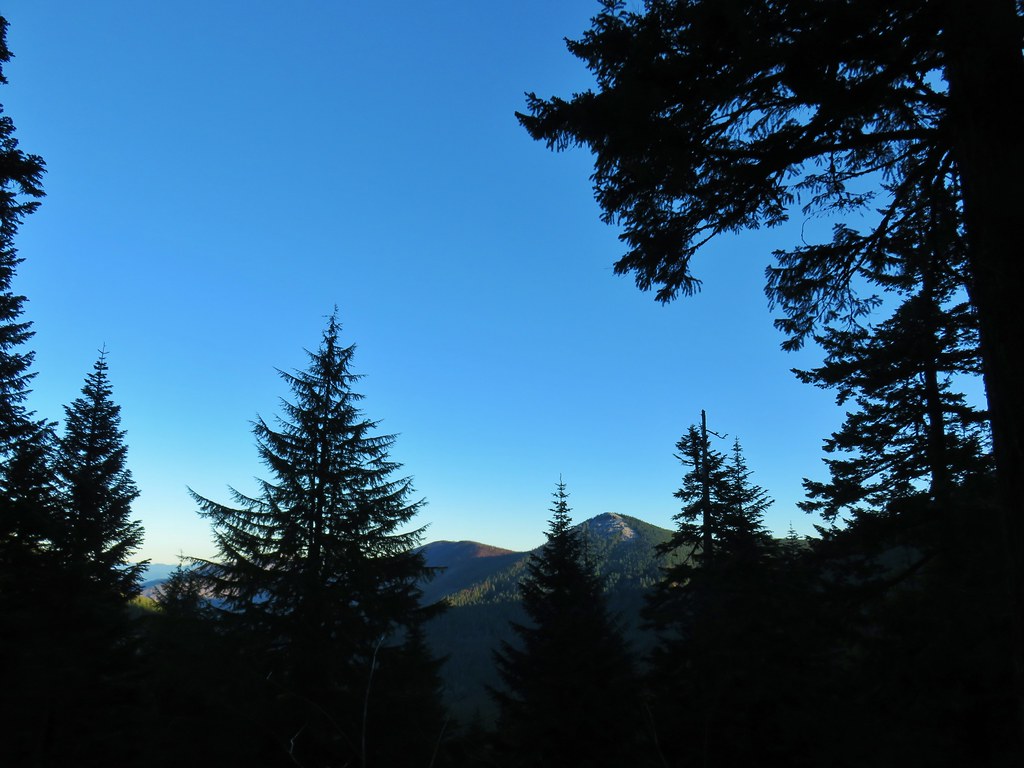 Chindrie Mountain again.
Chindrie Mountain again. Indian Mountain
Indian Mountain Mt. Hood
Mt. Hood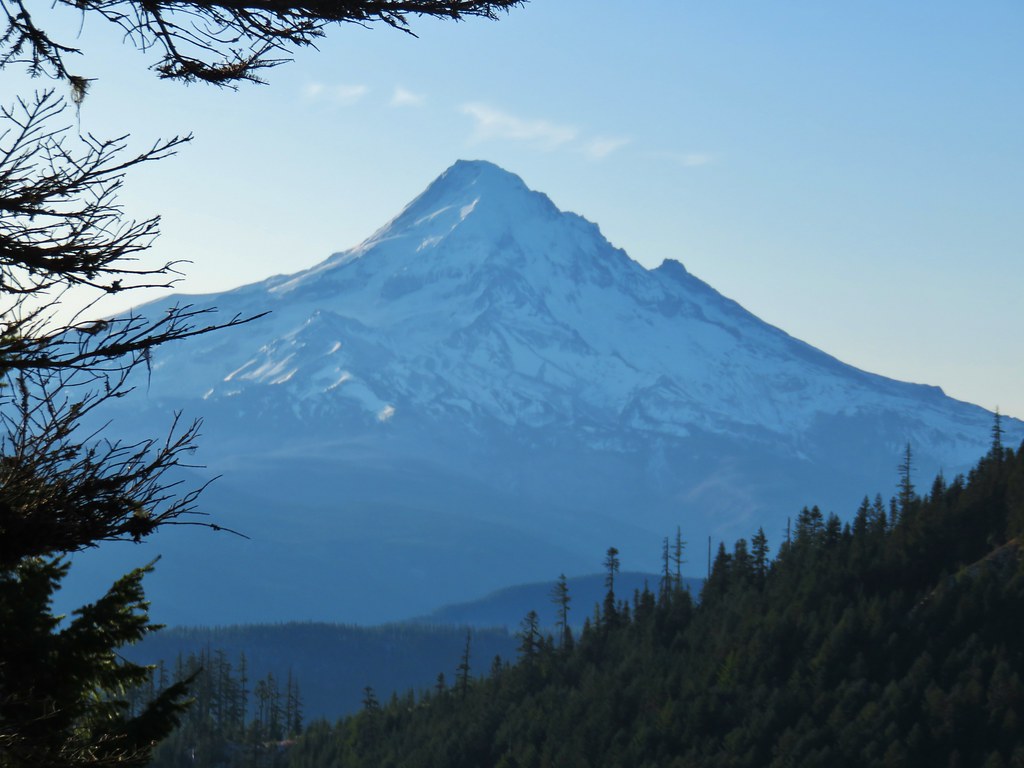


 Crossing FR 660 near Indian Springs
Crossing FR 660 near Indian Springs Trail sign at the junction with the currently closed Indian Springs Trail.
Trail sign at the junction with the currently closed Indian Springs Trail.







 Table Mountain and Greenleaf Peak with Mt. St. Helens in the background.
Table Mountain and Greenleaf Peak with Mt. St. Helens in the background. Mt. St. Helens
Mt. St. Helens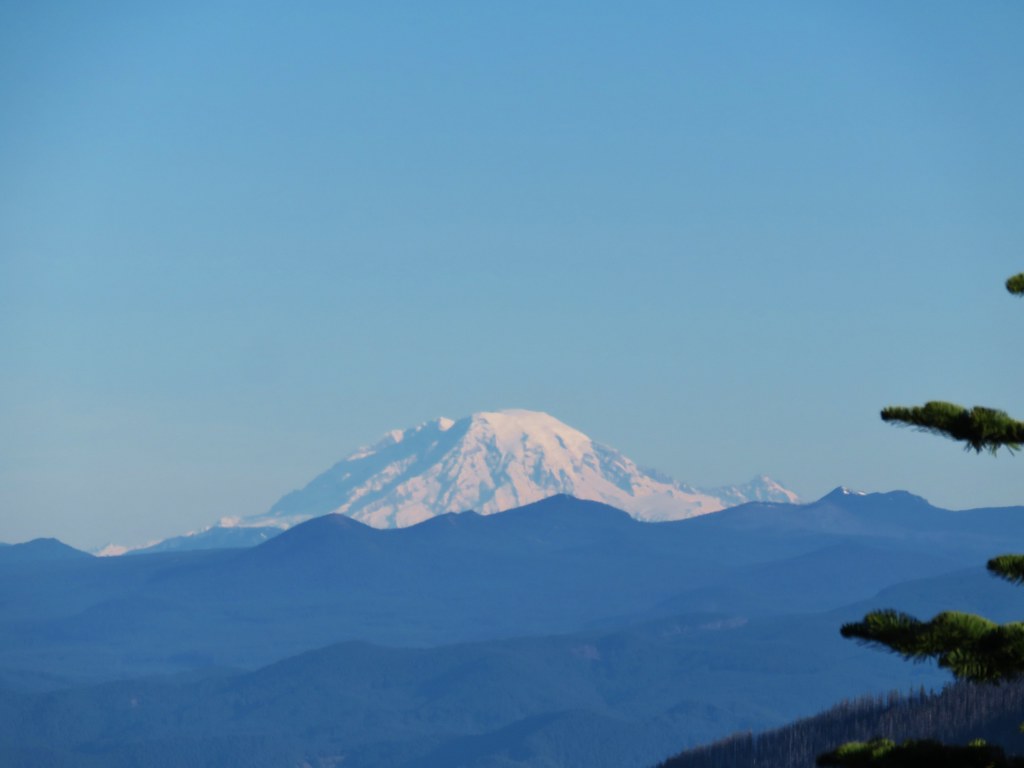 Mt. Rainier
Mt. Rainier Goat Rocks
Goat Rocks Mt. Adams and Chindrie Mountain
Mt. Adams and Chindrie Mountain



 Mt. Hood and Mt. Jefferson
Mt. Hood and Mt. Jefferson Mt. Jefferson
Mt. Jefferson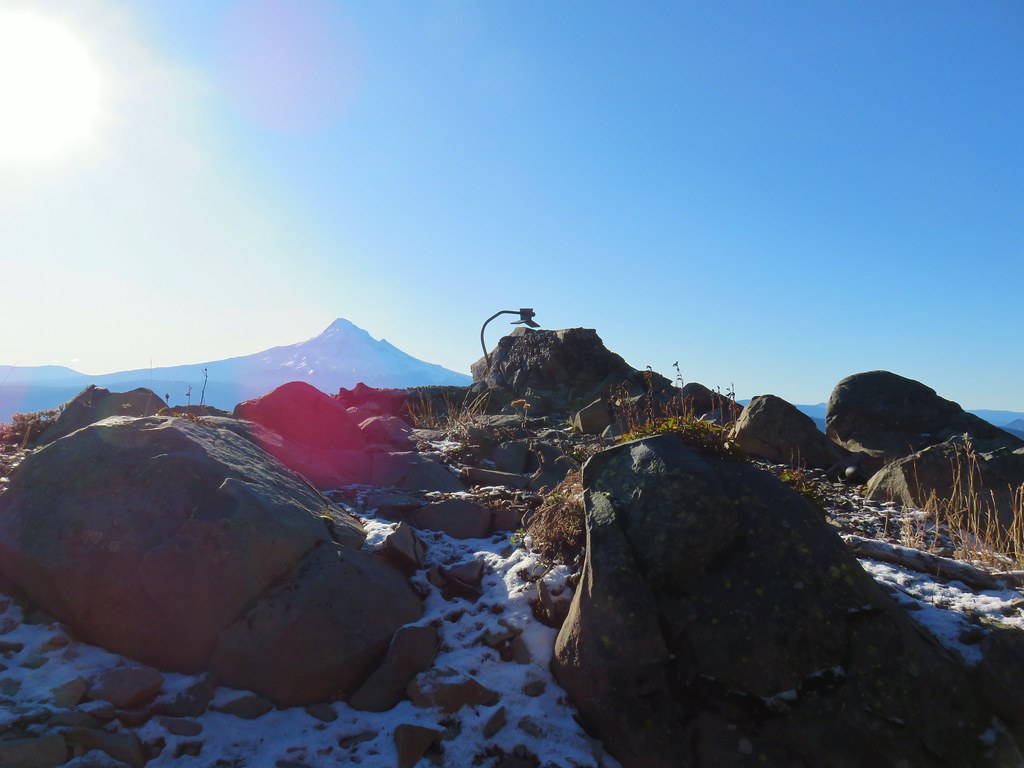 Mt. Hood from the former lookout site.
Mt. Hood from the former lookout site.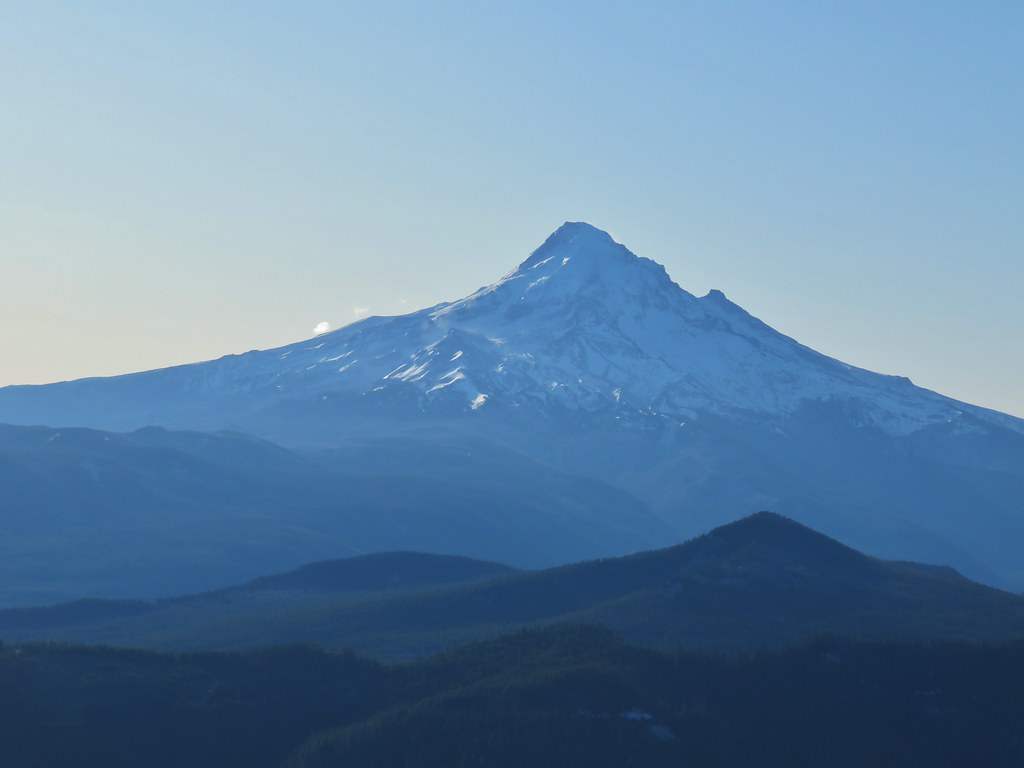 Mt. Hood with Lost Lake Butte (
Mt. Hood with Lost Lake Butte ( Snow on the north side, green on the south.
Snow on the north side, green on the south. Mt. St. Helens with some snow on the trees in the foreground.
Mt. St. Helens with some snow on the trees in the foreground. Crystals on a bush.
Crystals on a bush.

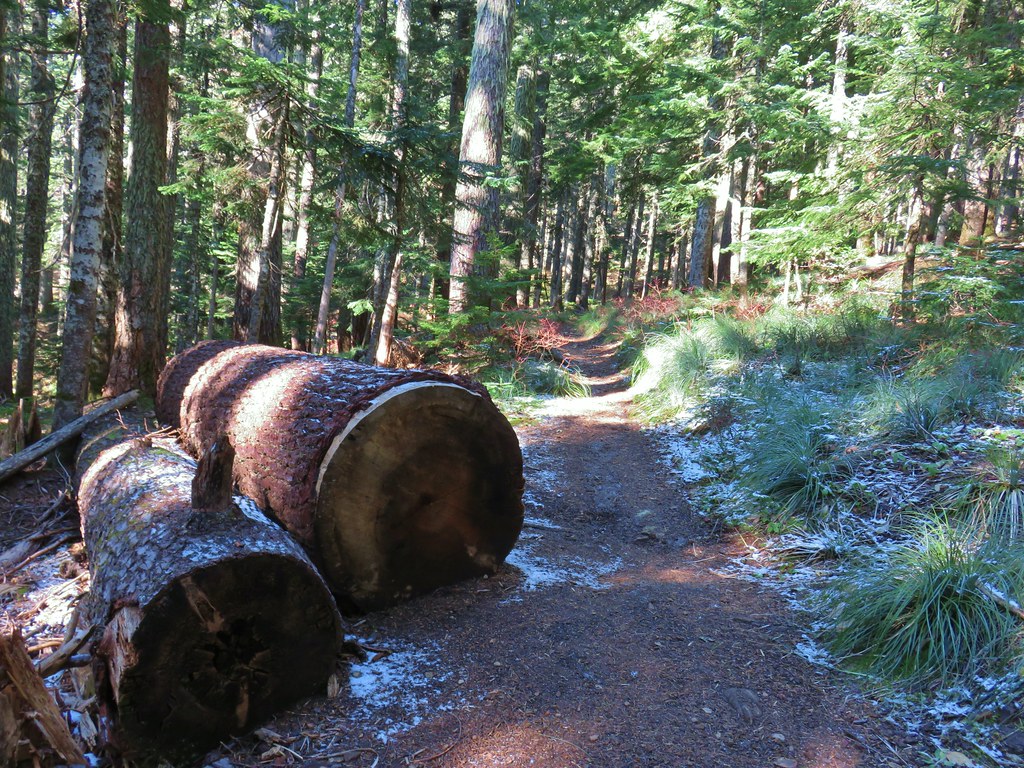
 Stream crossing
Stream crossing Herman Creek Trail junction.
Herman Creek Trail junction.


 Looking at the summit from the trail.
Looking at the summit from the trail.
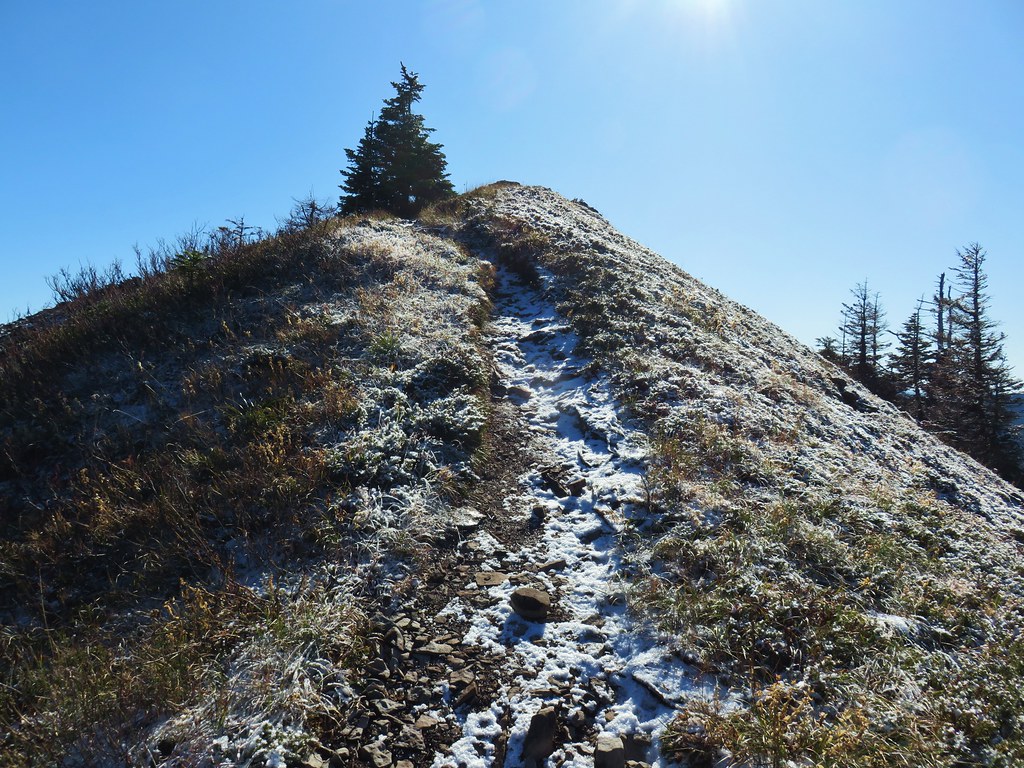
 Mt. Hood
Mt. Hood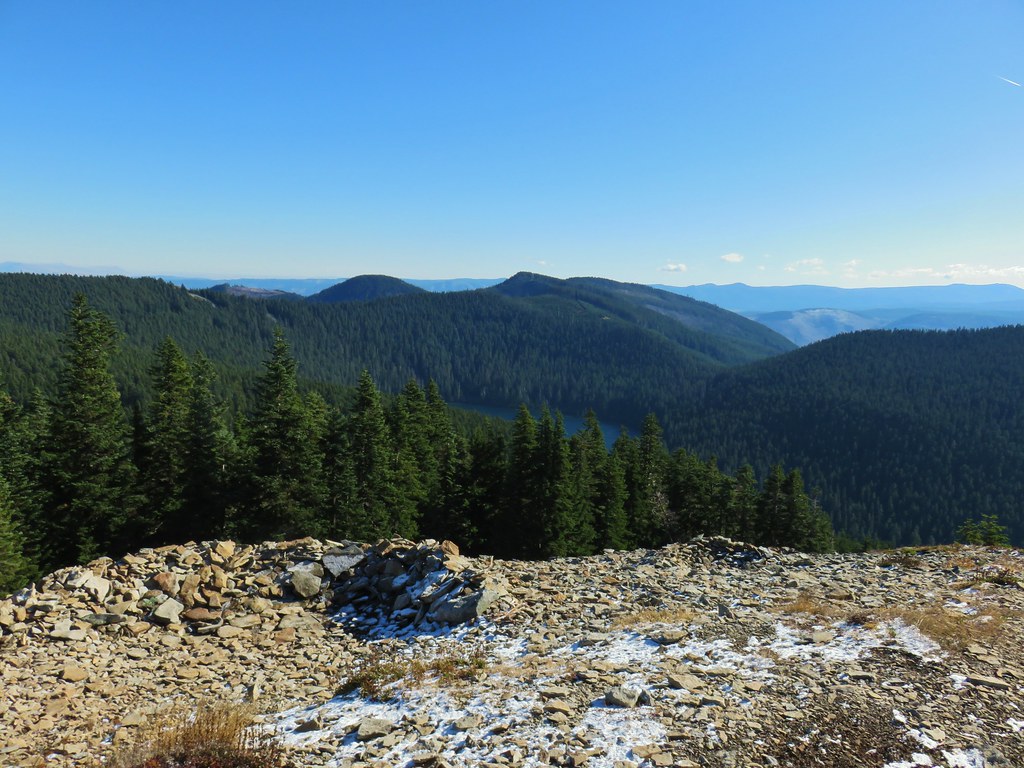




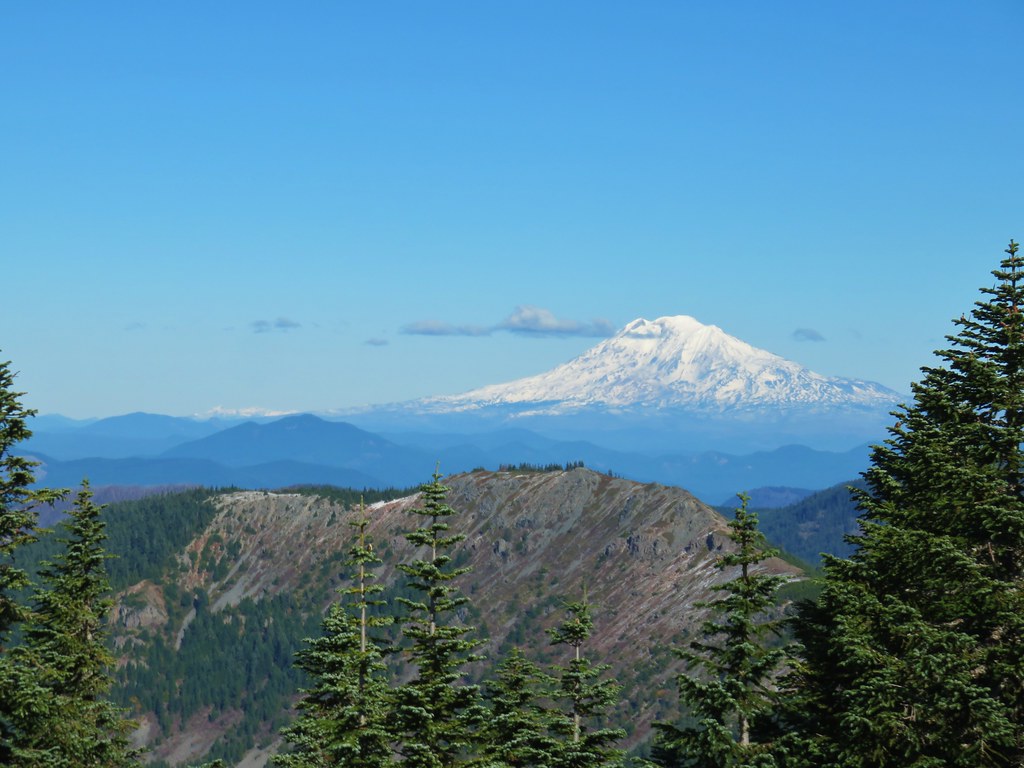



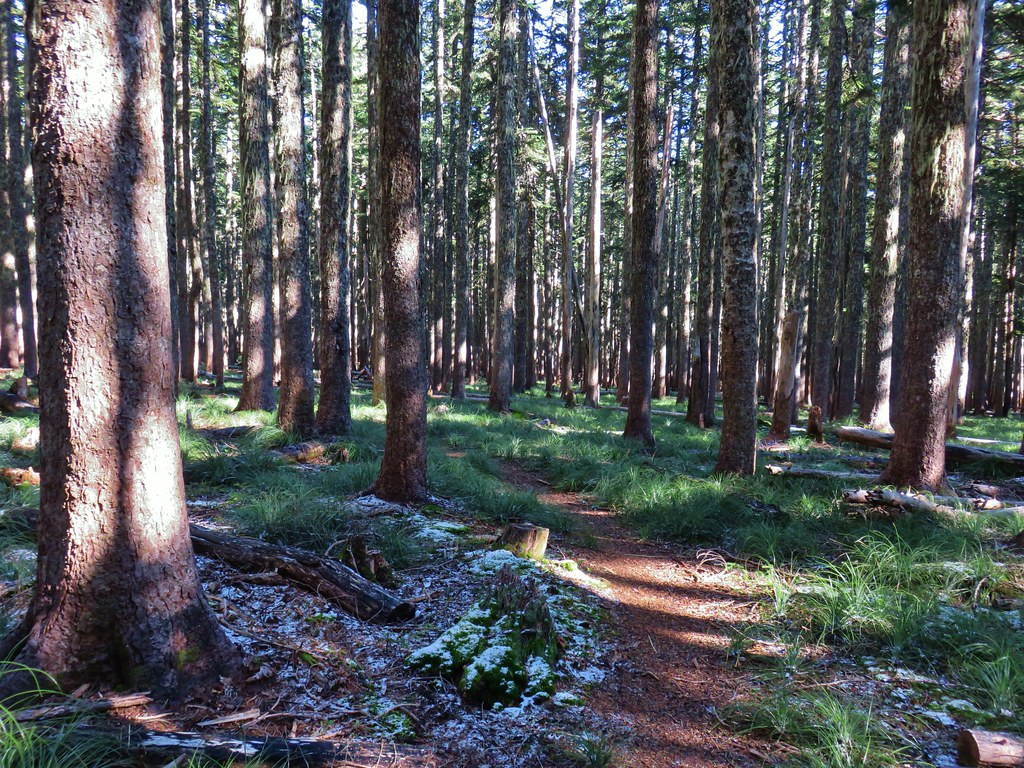 Lots of beargrass clumps.
Lots of beargrass clumps.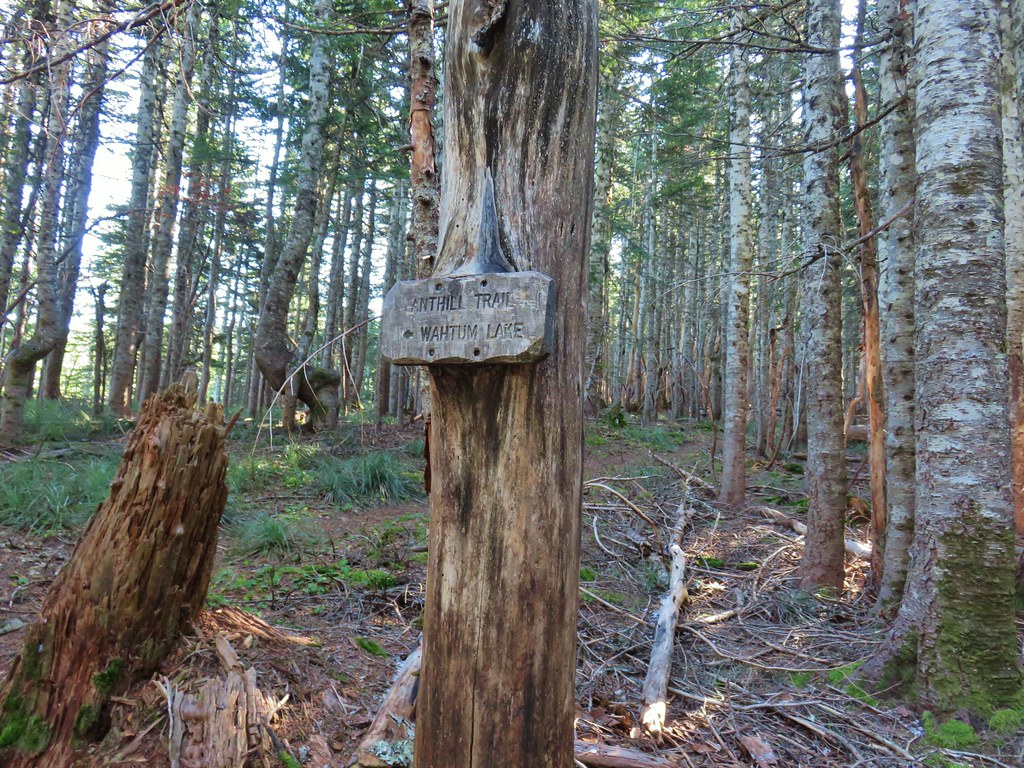
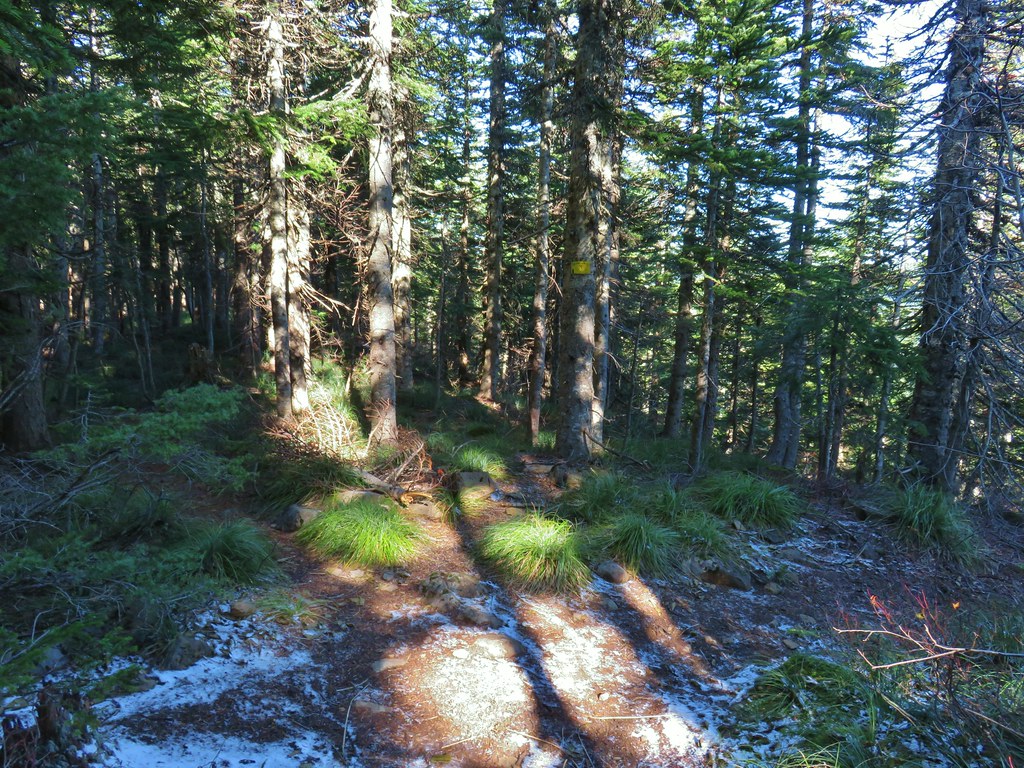 Trail to Tomlike on the left.
Trail to Tomlike on the left.


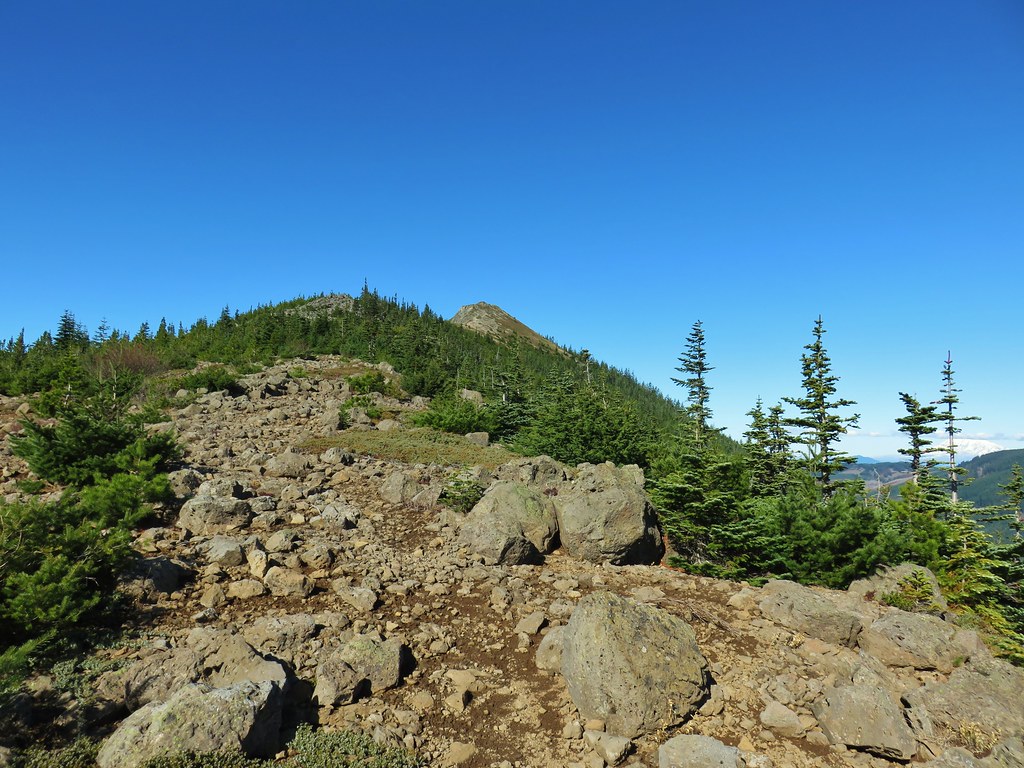
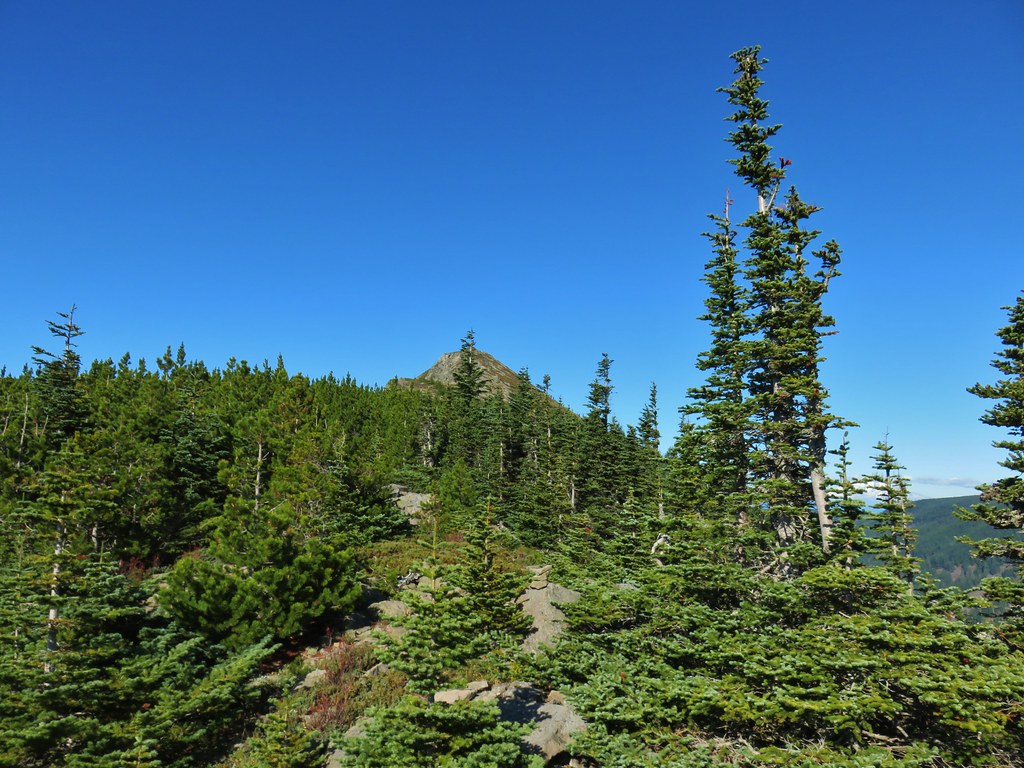 There’s at least one cairn here.
There’s at least one cairn here.
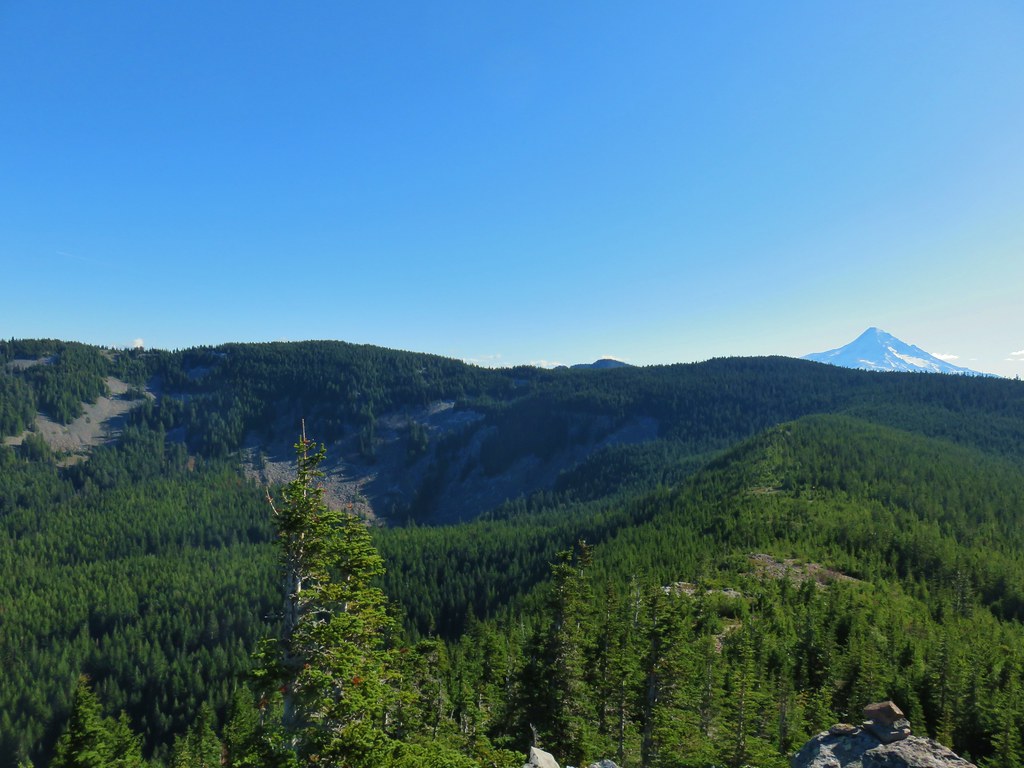


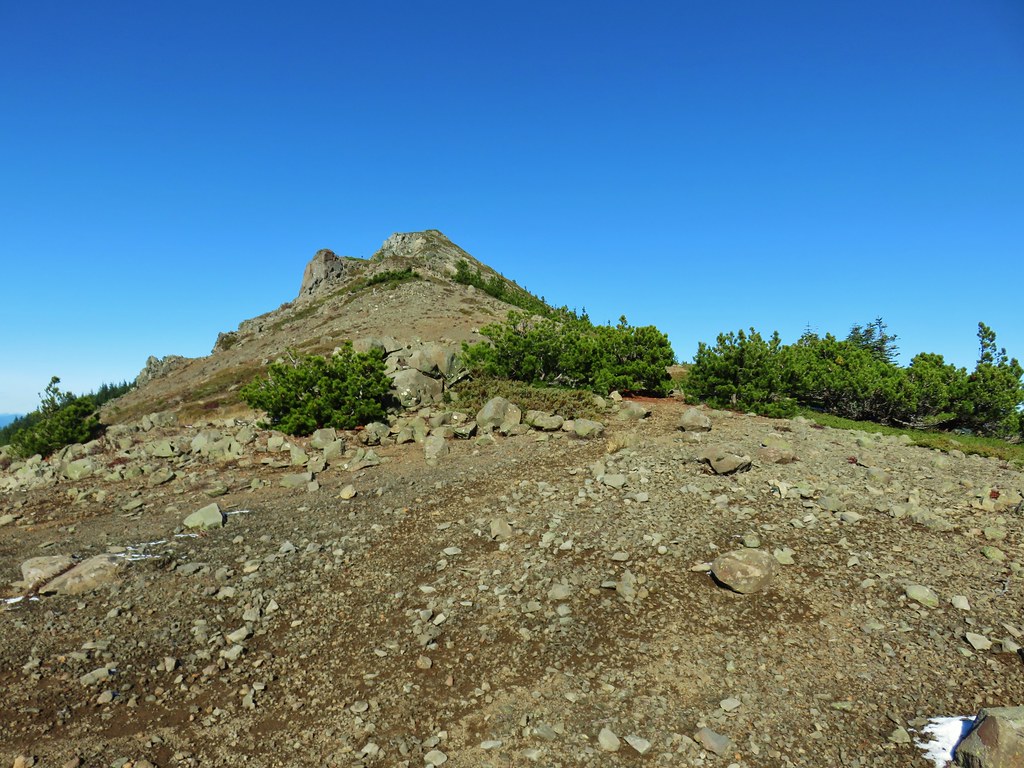
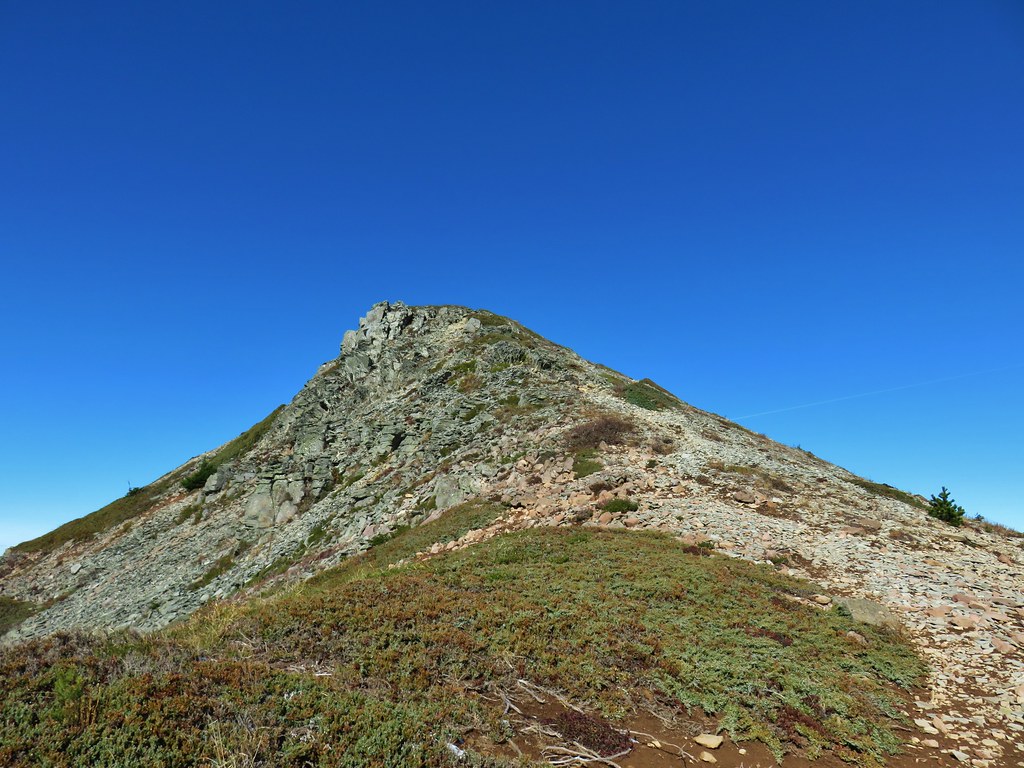
 Mt. Adams to the right.
Mt. Adams to the right.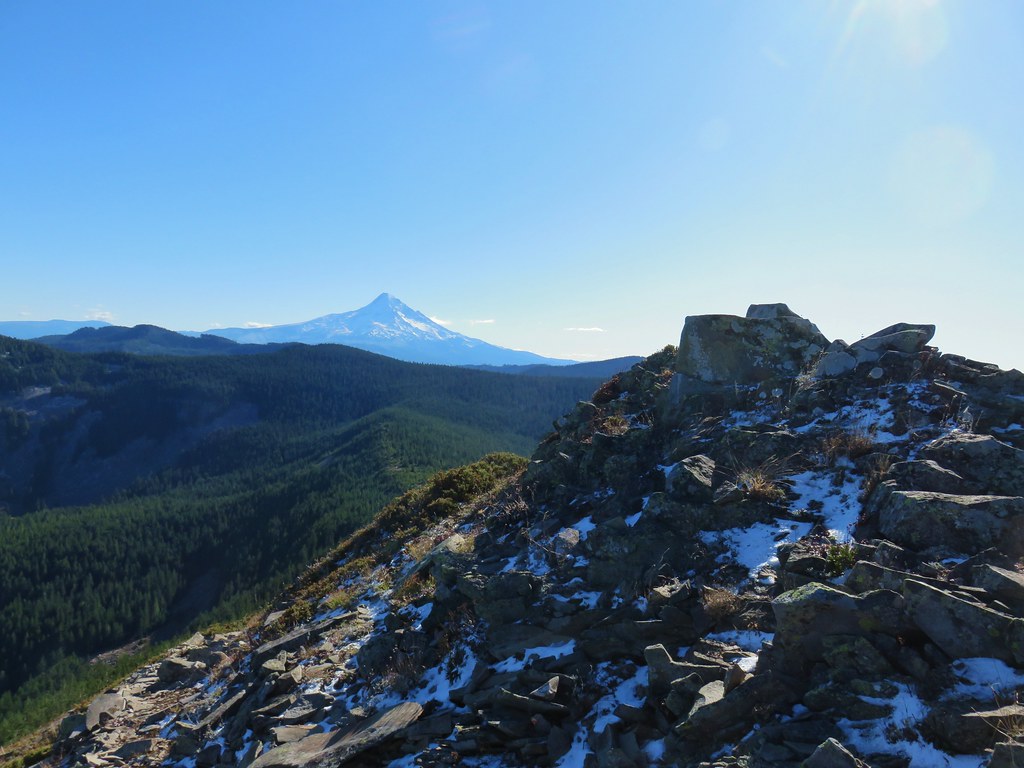
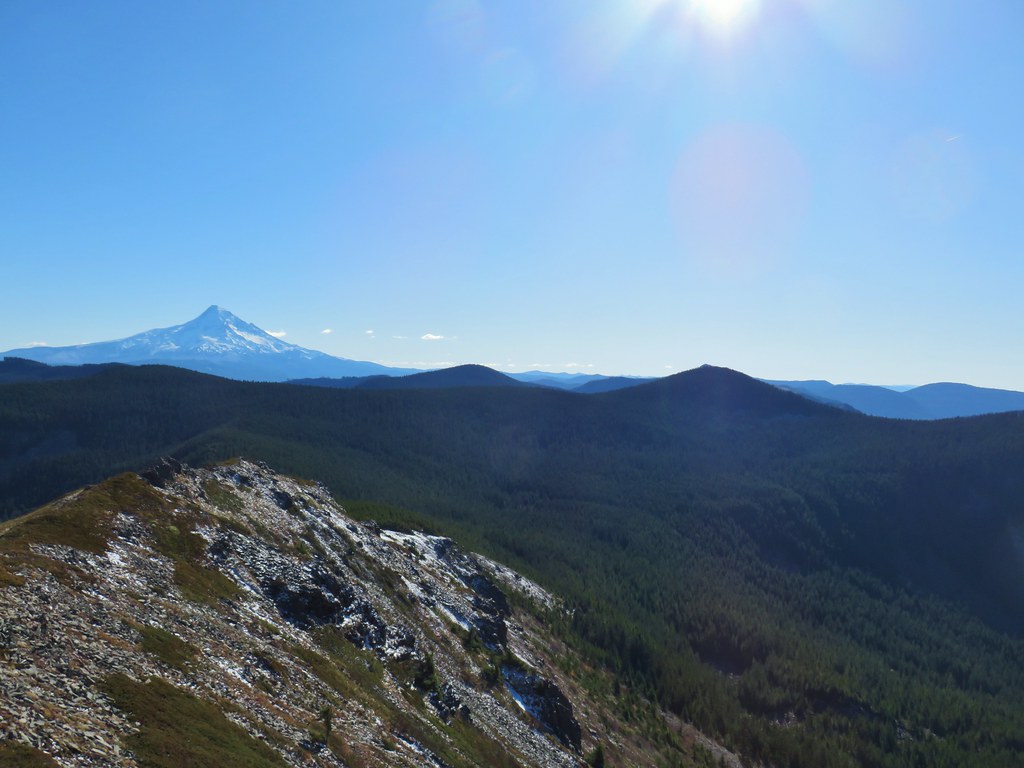 Mt. Hood with Indian Mountain rising up behind Chindrie Mountain to the right.
Mt. Hood with Indian Mountain rising up behind Chindrie Mountain to the right.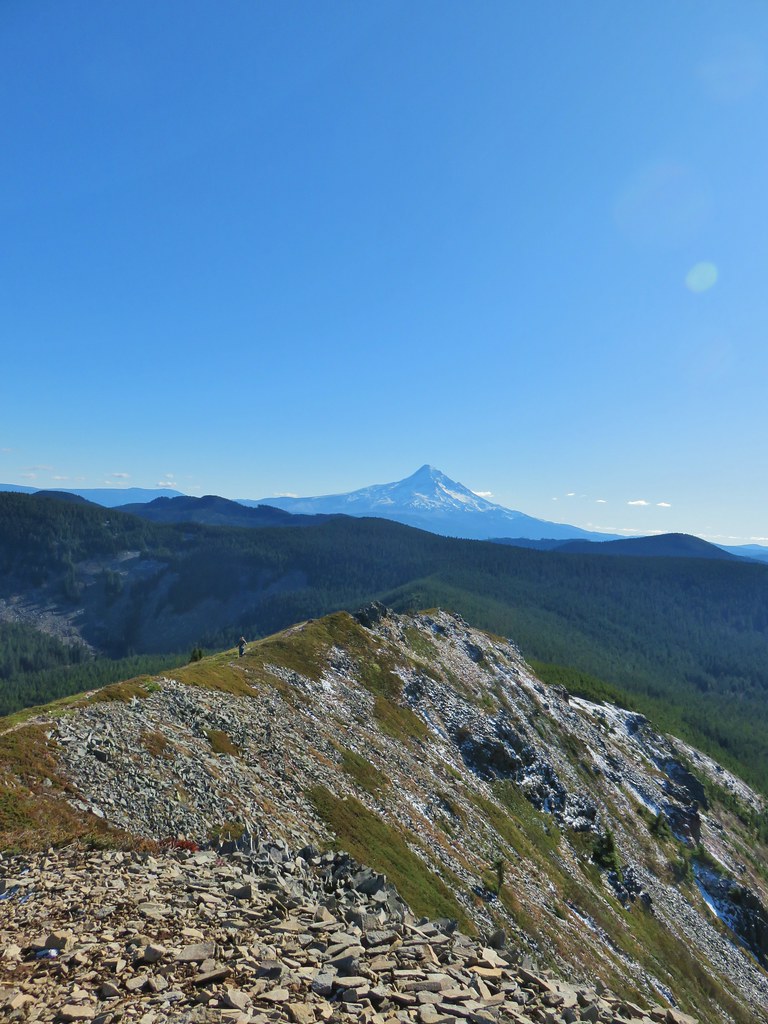 Heather crossing the ridge below the summit.
Heather crossing the ridge below the summit.

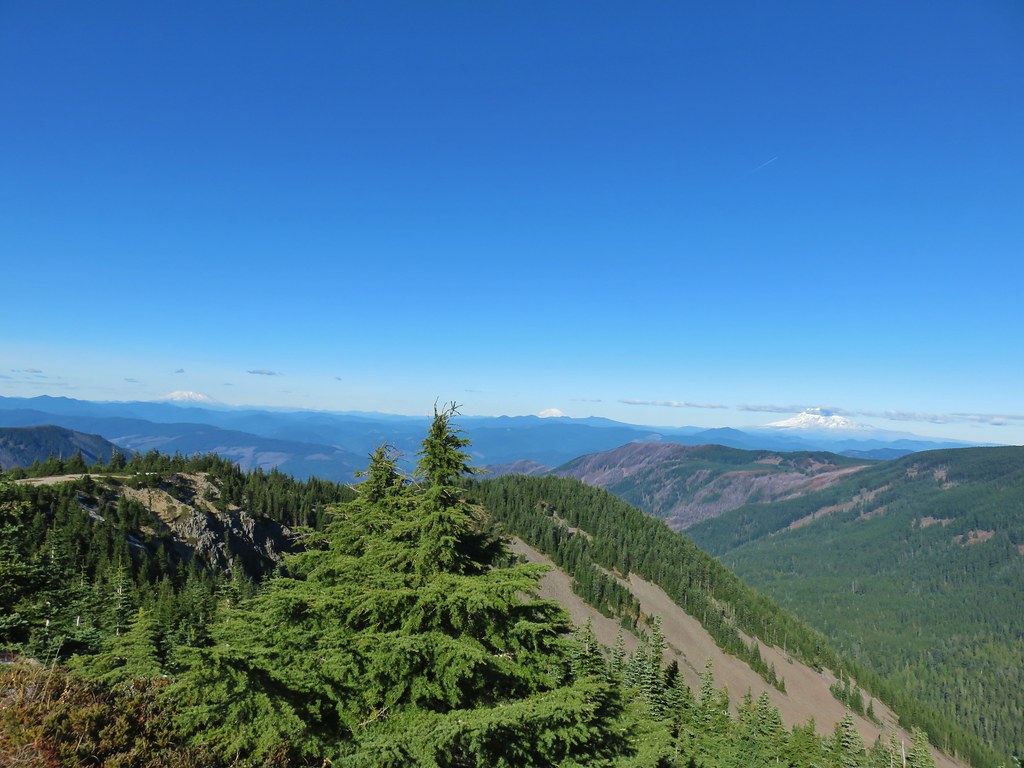 Mt. St. Helens, Mt. Rainier, Goat Rocks and Mt. Adams from left to right.
Mt. St. Helens, Mt. Rainier, Goat Rocks and Mt. Adams from left to right.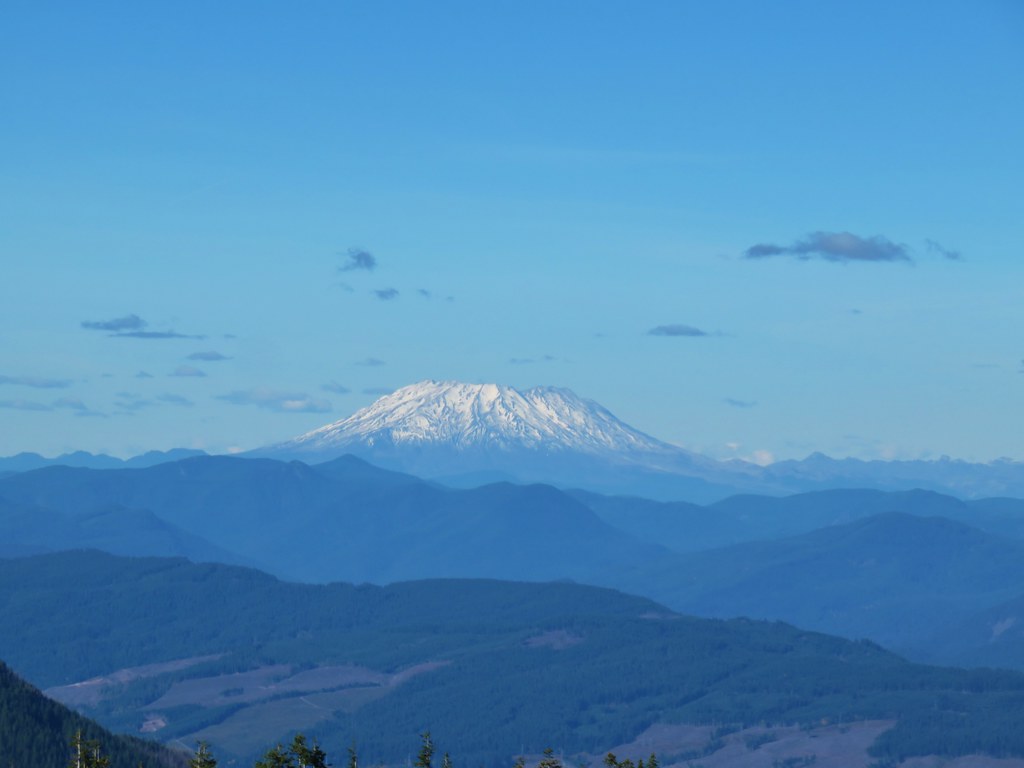 Mt. St. Helens
Mt. St. Helens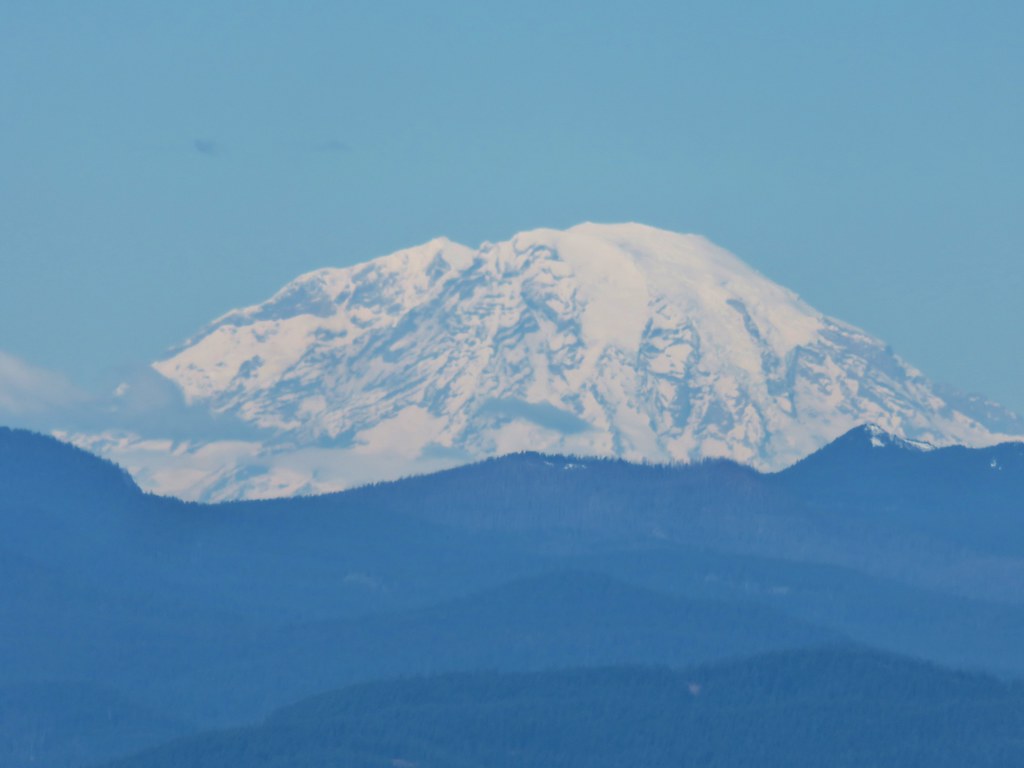 Mt. Rainier
Mt. Rainier Goat Rocks
Goat Rocks Mt. Adams
Mt. Adams Anthill Trail on the left.
Anthill Trail on the left.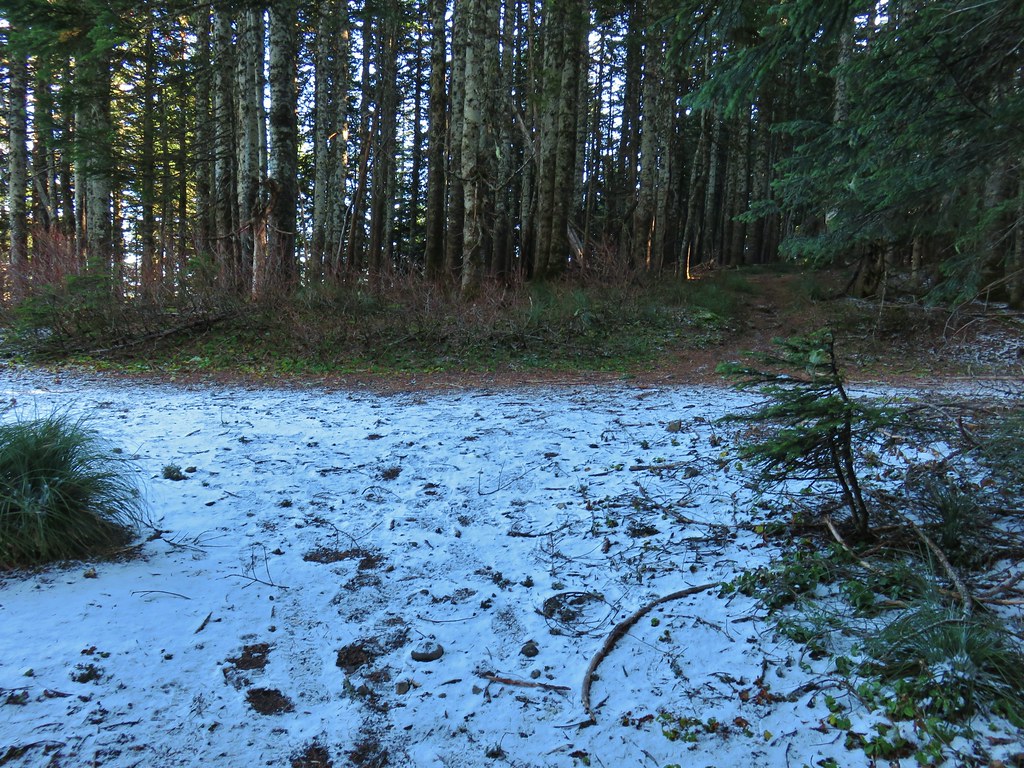



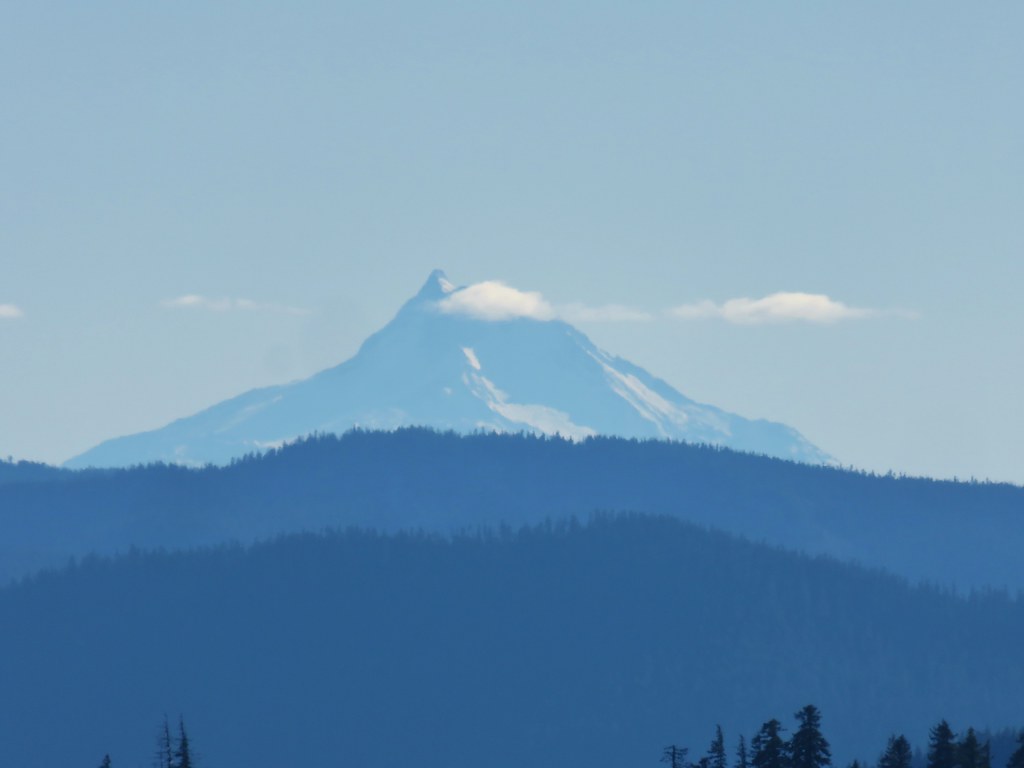 Mt. Jefferson
Mt. Jefferson Wahtum Lake and Chindrie Mountain
Wahtum Lake and Chindrie Mountain

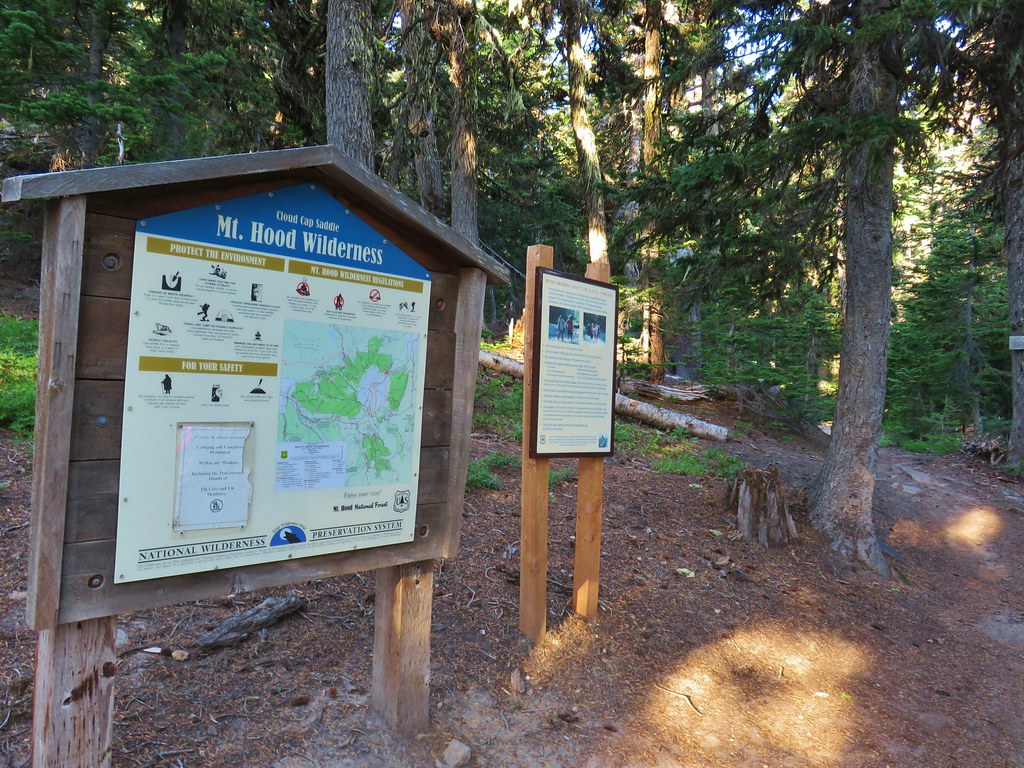


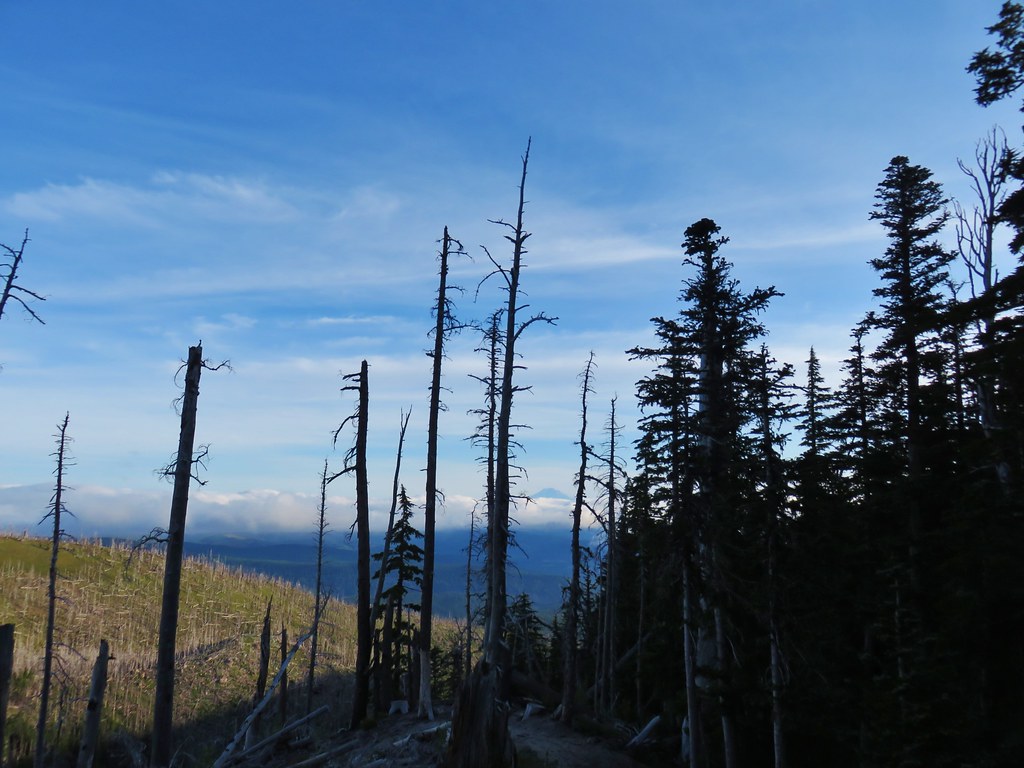 Mt. Adams ahead above the clouds.
Mt. Adams ahead above the clouds. Mt. Hood
Mt. Hood
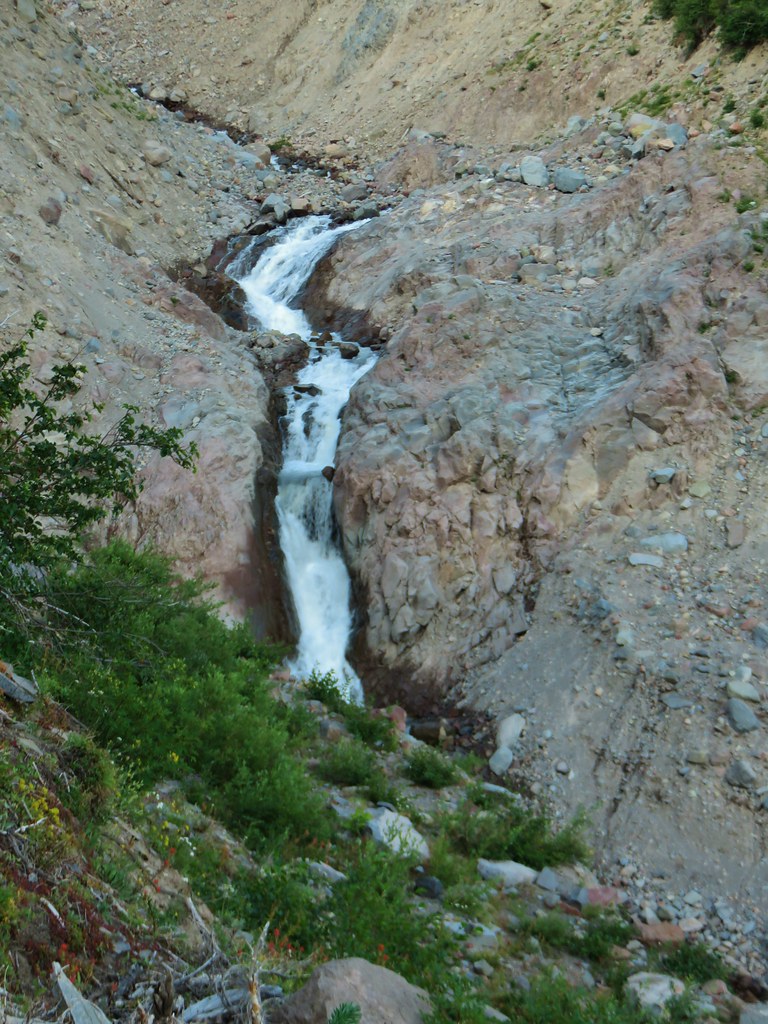




 We entered the Mt. Hood Wilderness on the way up.
We entered the Mt. Hood Wilderness on the way up.

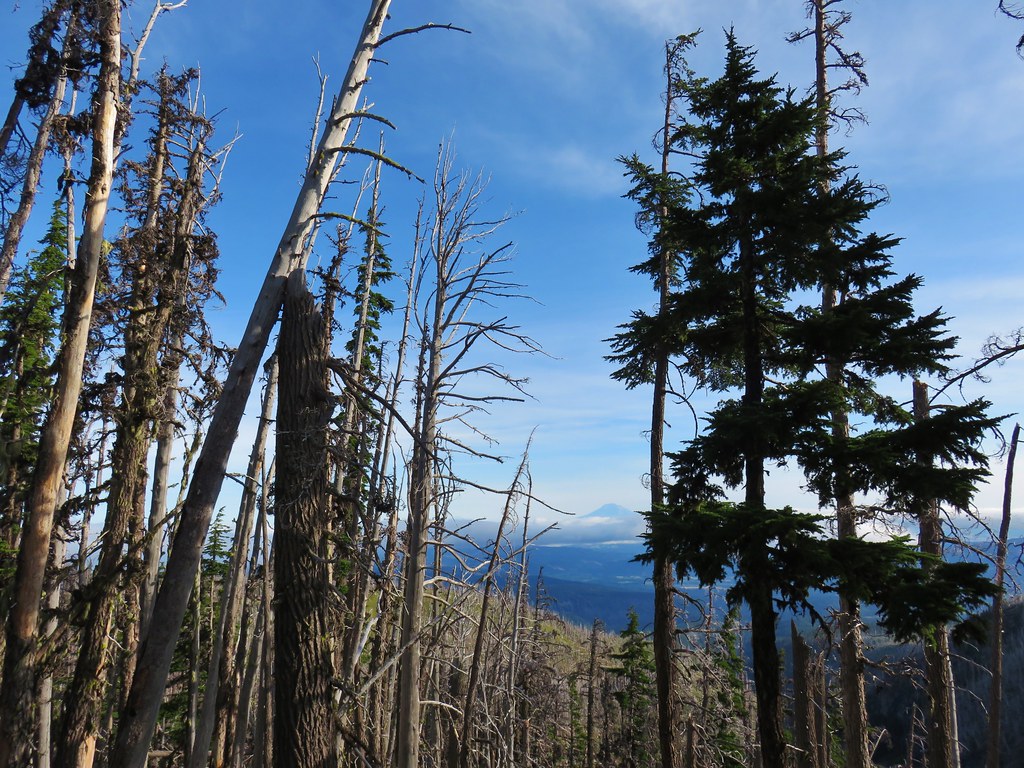 Mt. Adams
Mt. Adams Mt. Rainier peaking over the clouds to the left of Mt. Adams.
Mt. Rainier peaking over the clouds to the left of Mt. Adams. Mt. Hood
Mt. Hood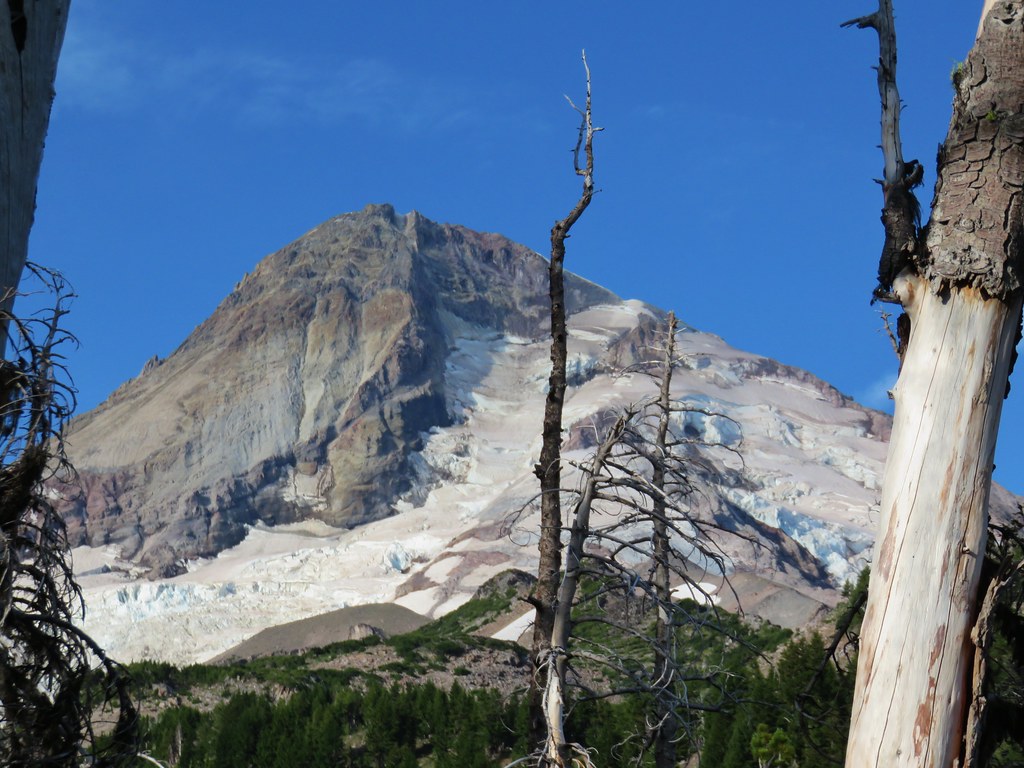
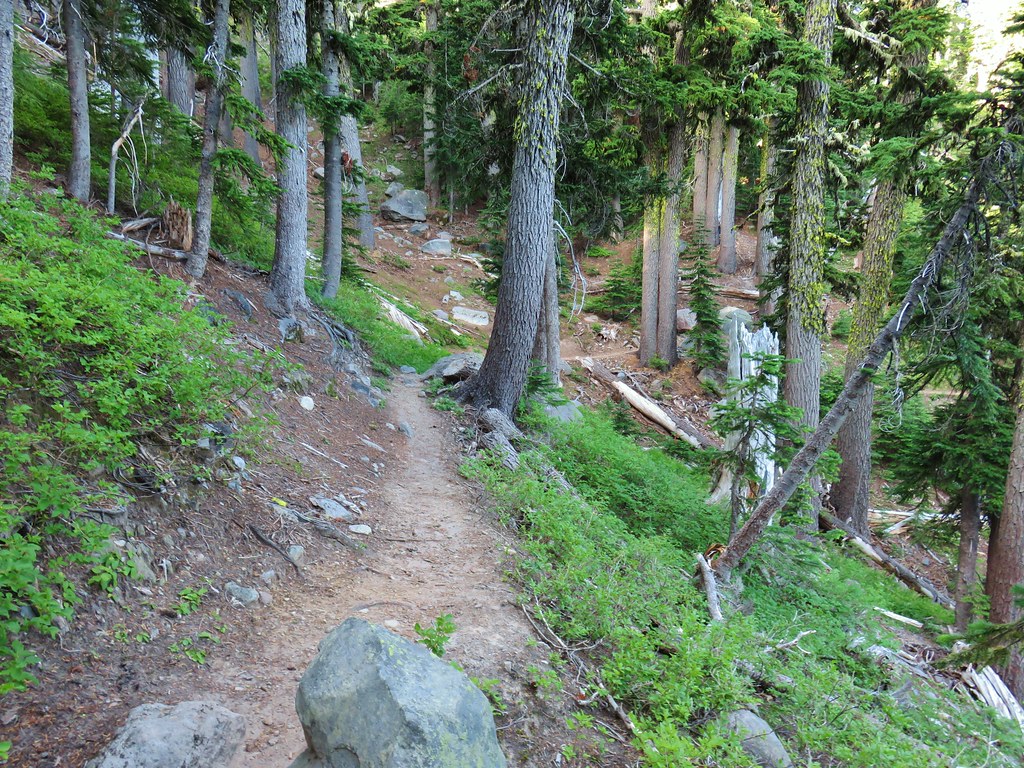
 Penstemon
Penstemon
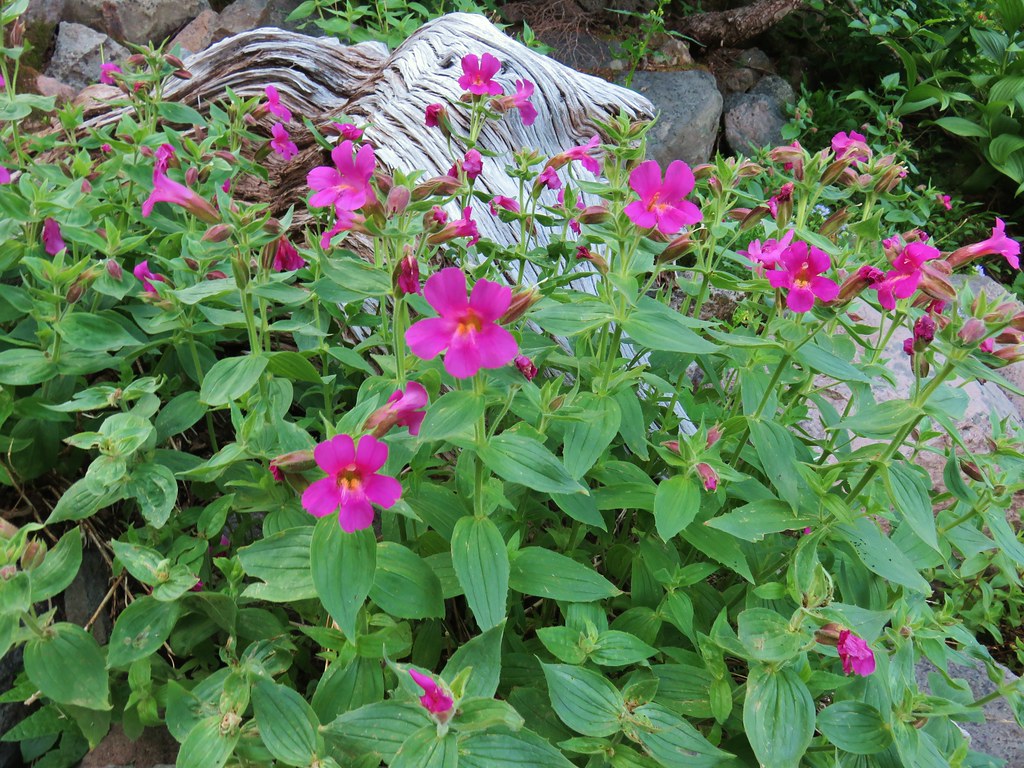 Monkeyflower
Monkeyflower
 Jacob’s ladder
Jacob’s ladder Western Pasque flower
Western Pasque flower
 Paintbrush
Paintbrush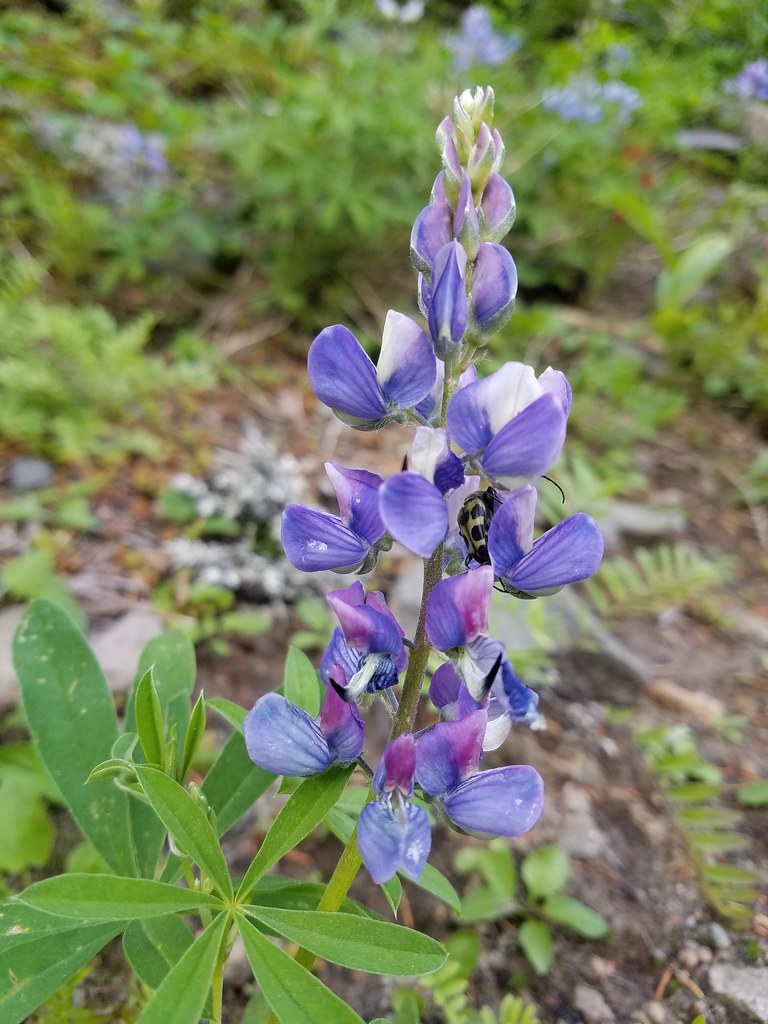 Lupine with a beetle.
Lupine with a beetle.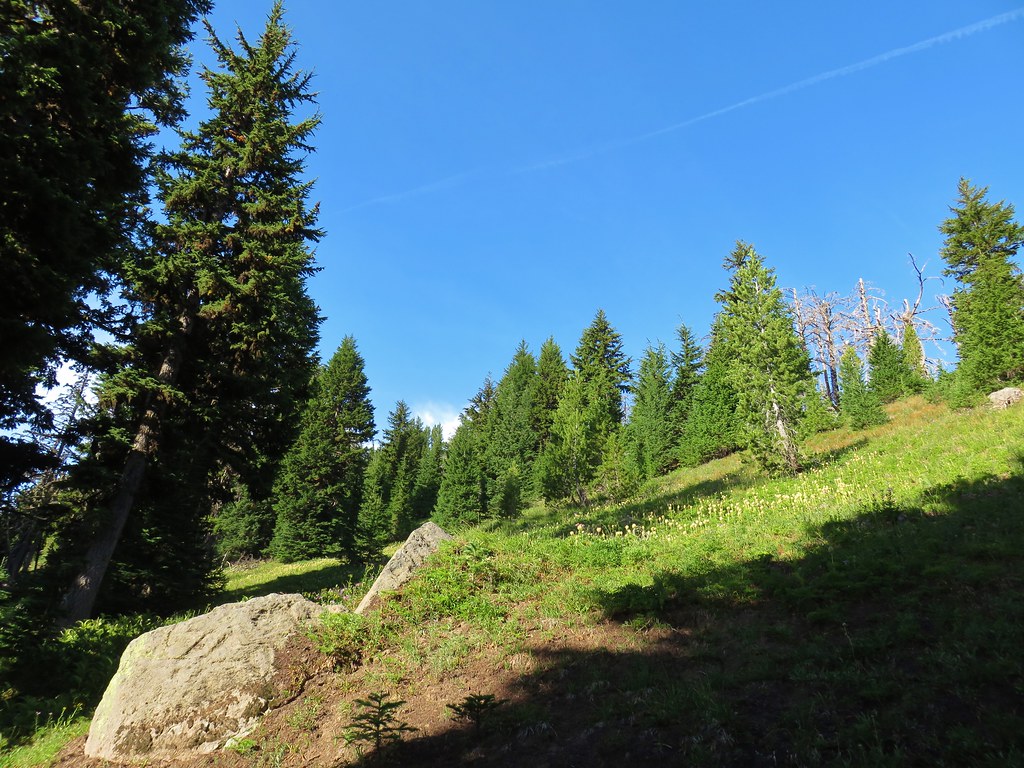


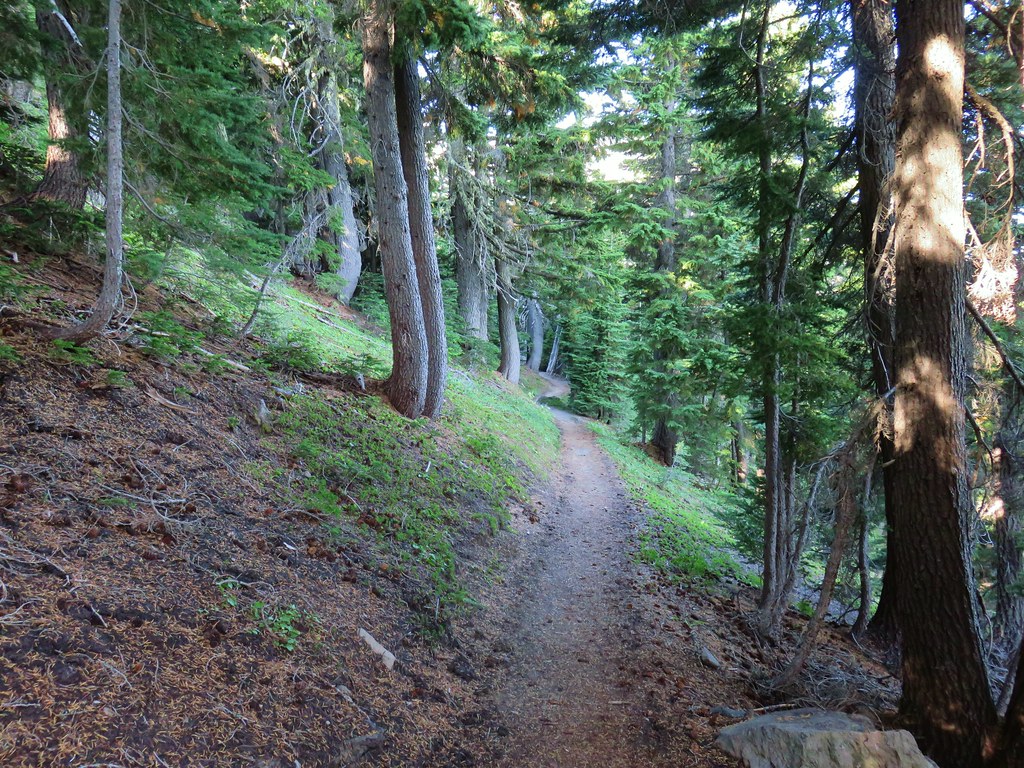



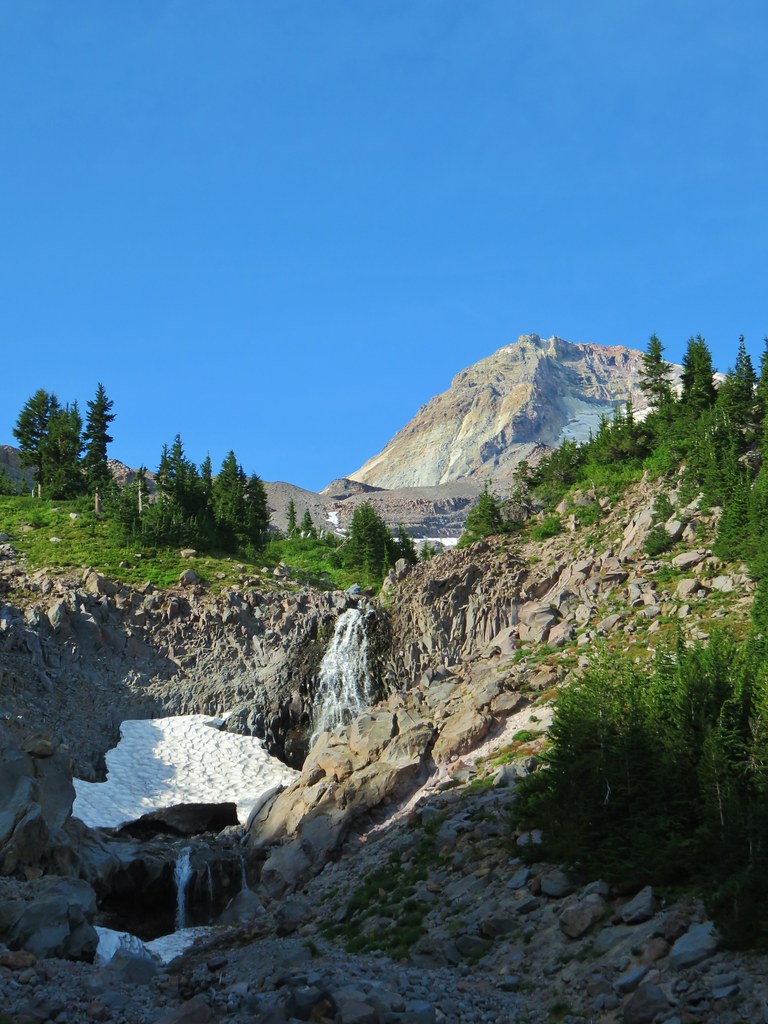


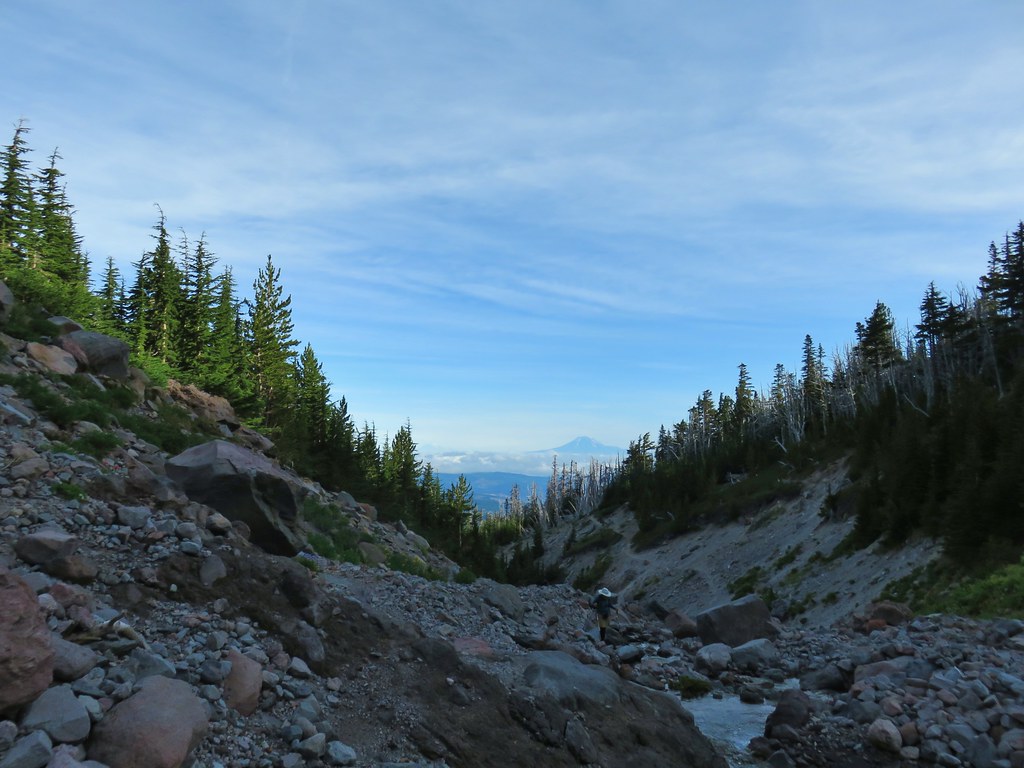 Mt. Adams from Compass Creek.
Mt. Adams from Compass Creek. Wildflowers along Compass Creek.
Wildflowers along Compass Creek. Monkeyflower and paintbrush
Monkeyflower and paintbrush Hummingbird near Compass Creek.
Hummingbird near Compass Creek.




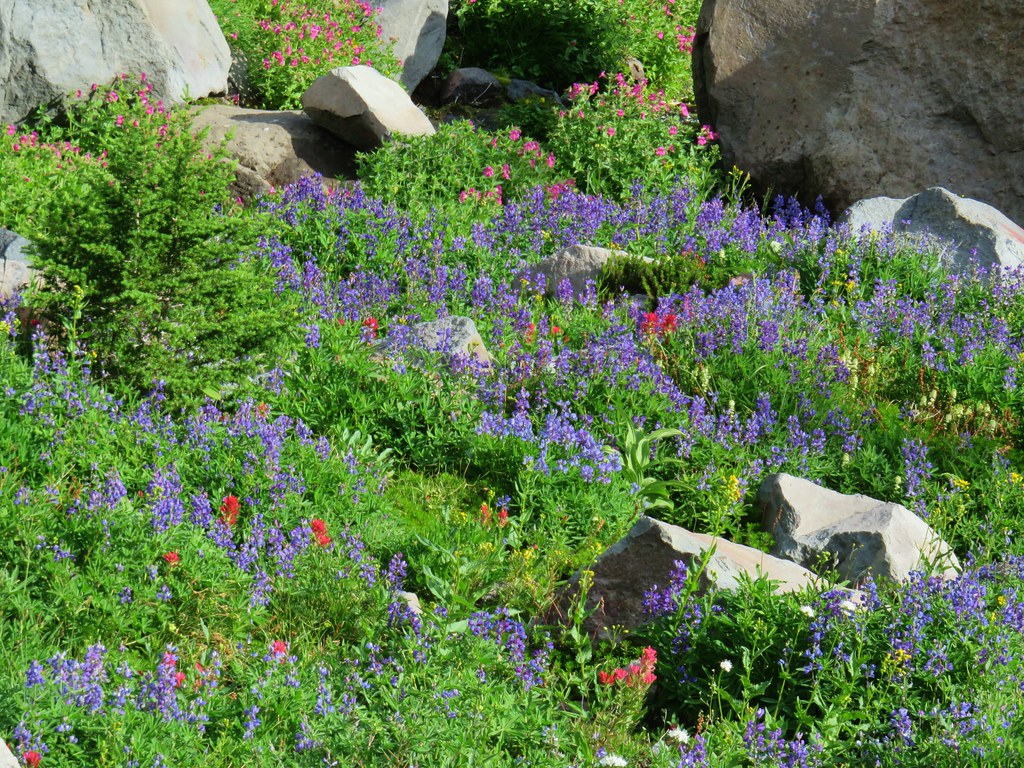 Lupine, paintbrush and monkeyflower.
Lupine, paintbrush and monkeyflower.
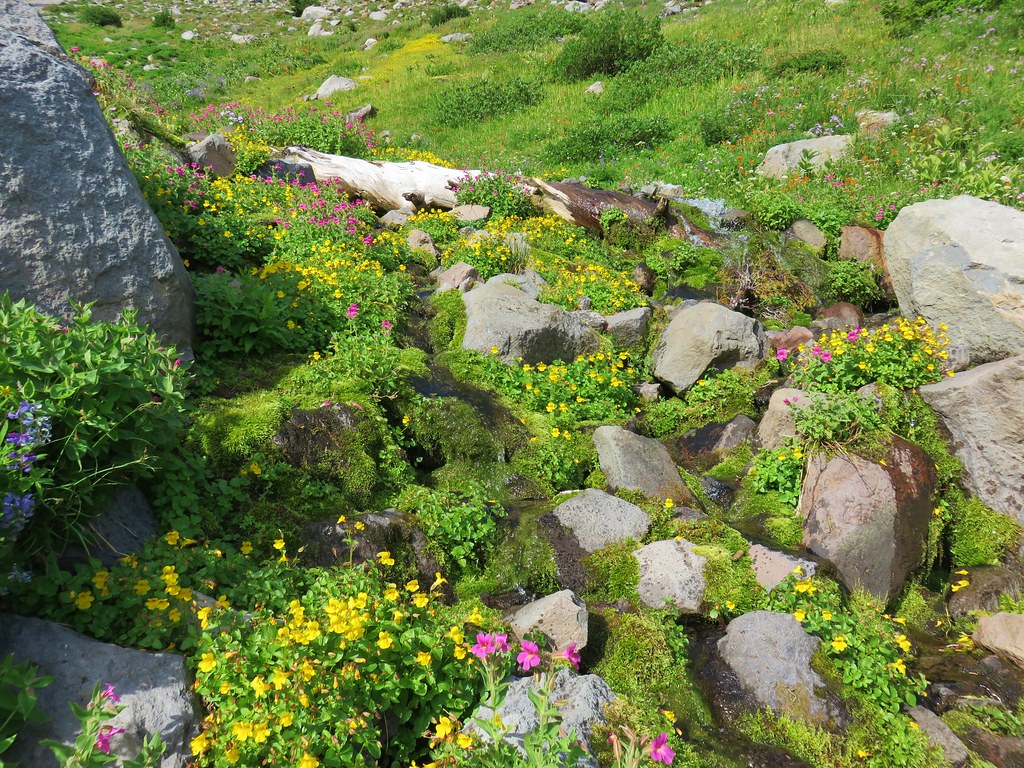

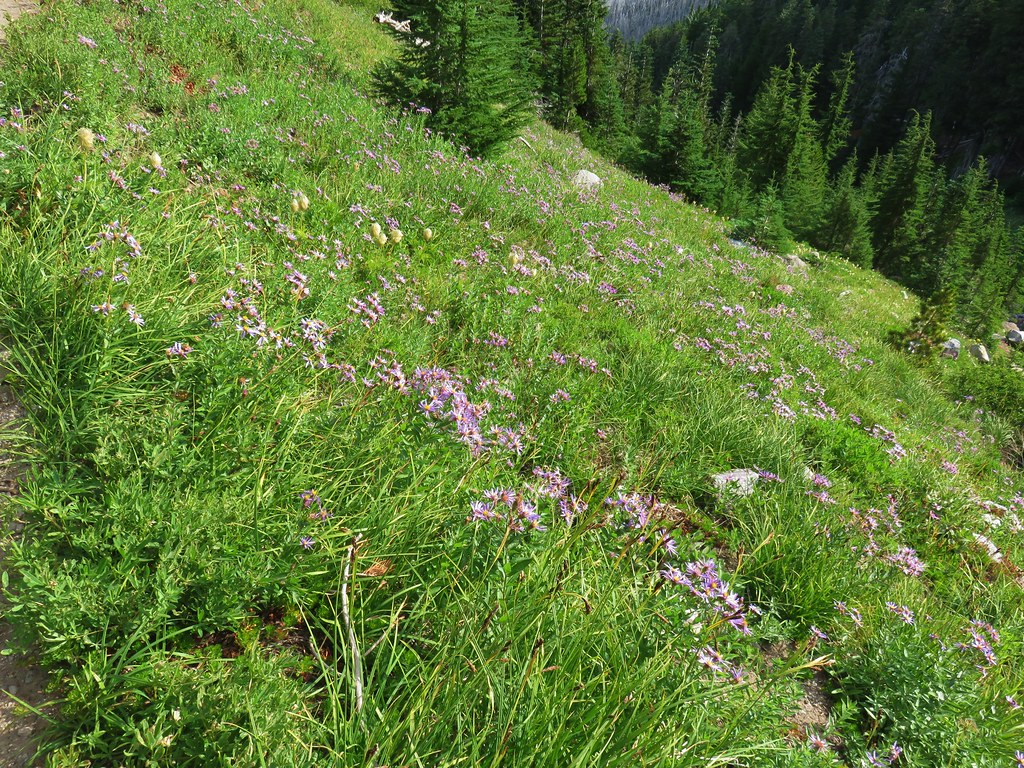
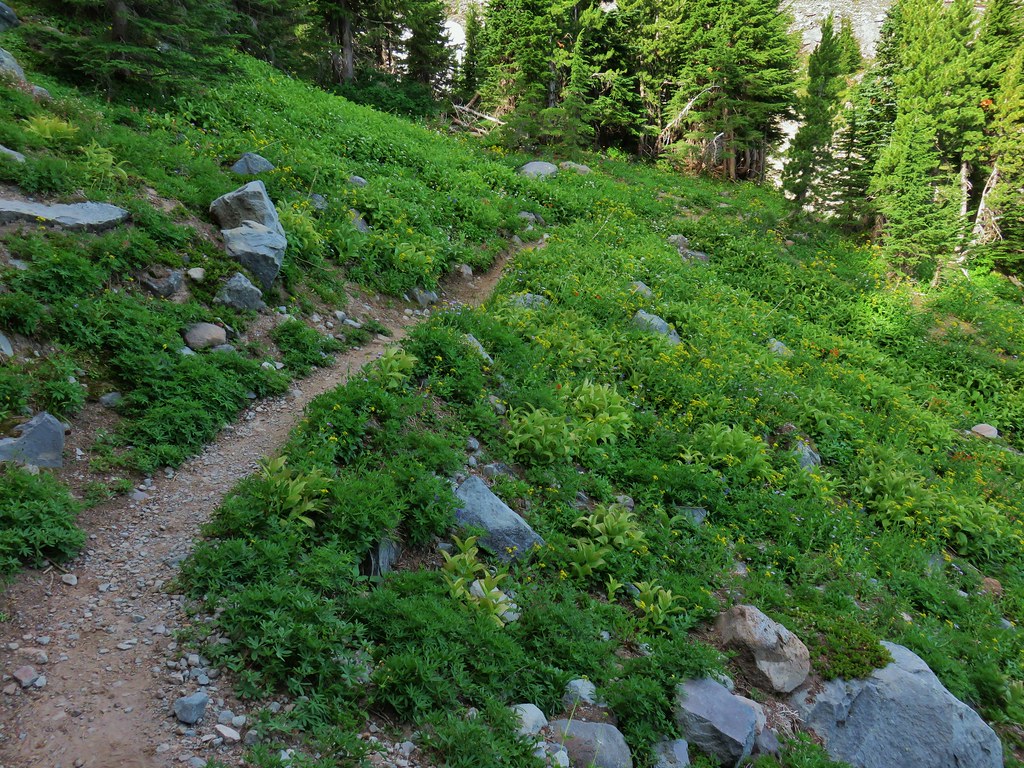

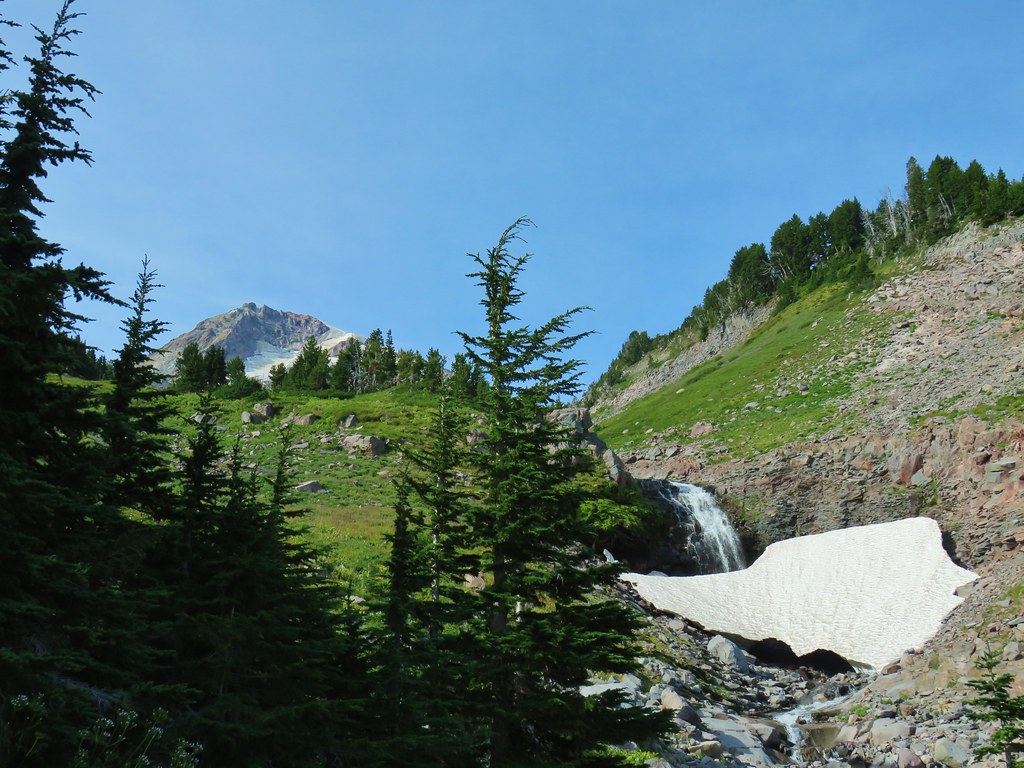
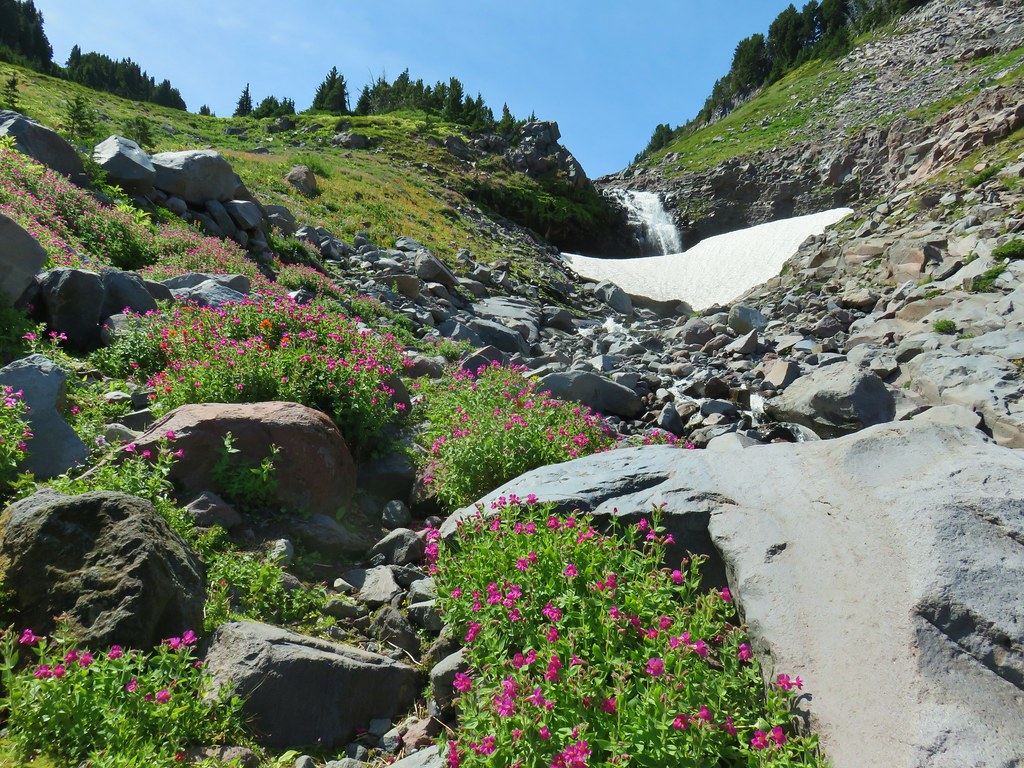


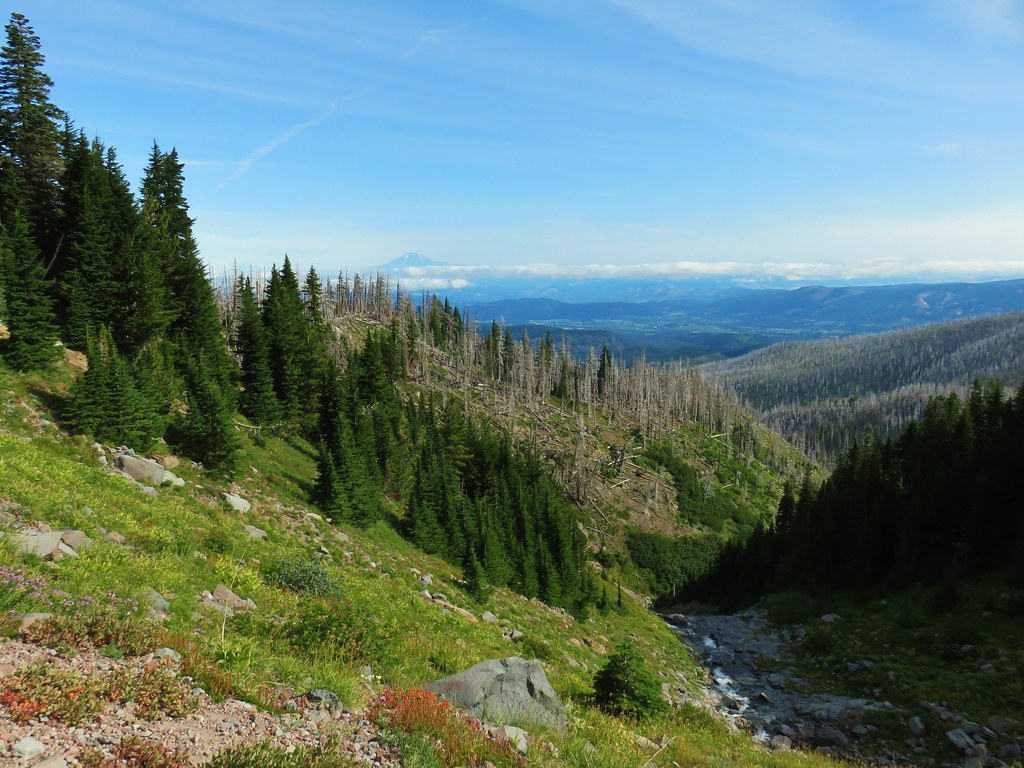 Mt. Adams (again) from Compass Creek.
Mt. Adams (again) from Compass Creek.
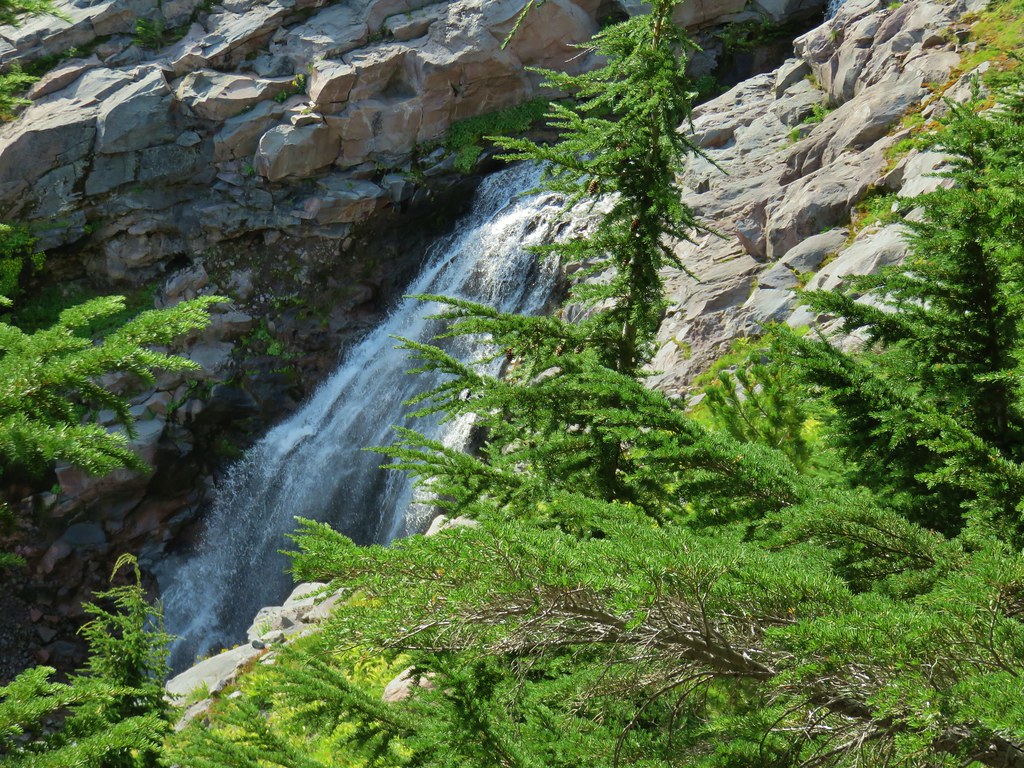 Waterfall on Compass Creek below the Timberline Trail.
Waterfall on Compass Creek below the Timberline Trail.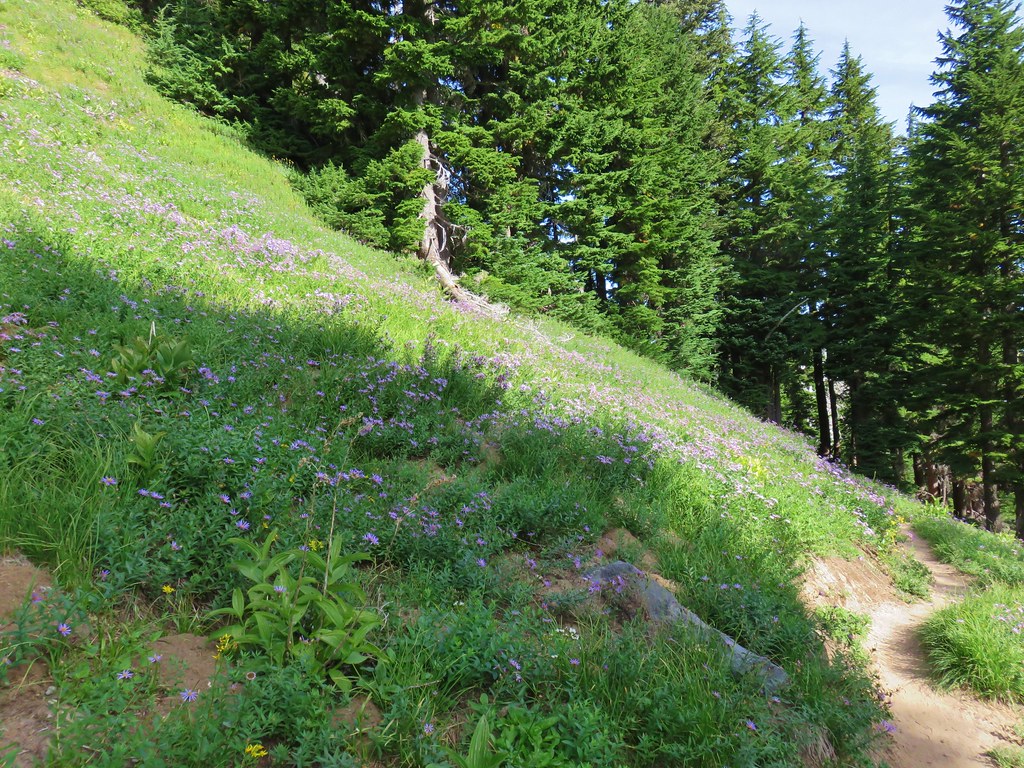


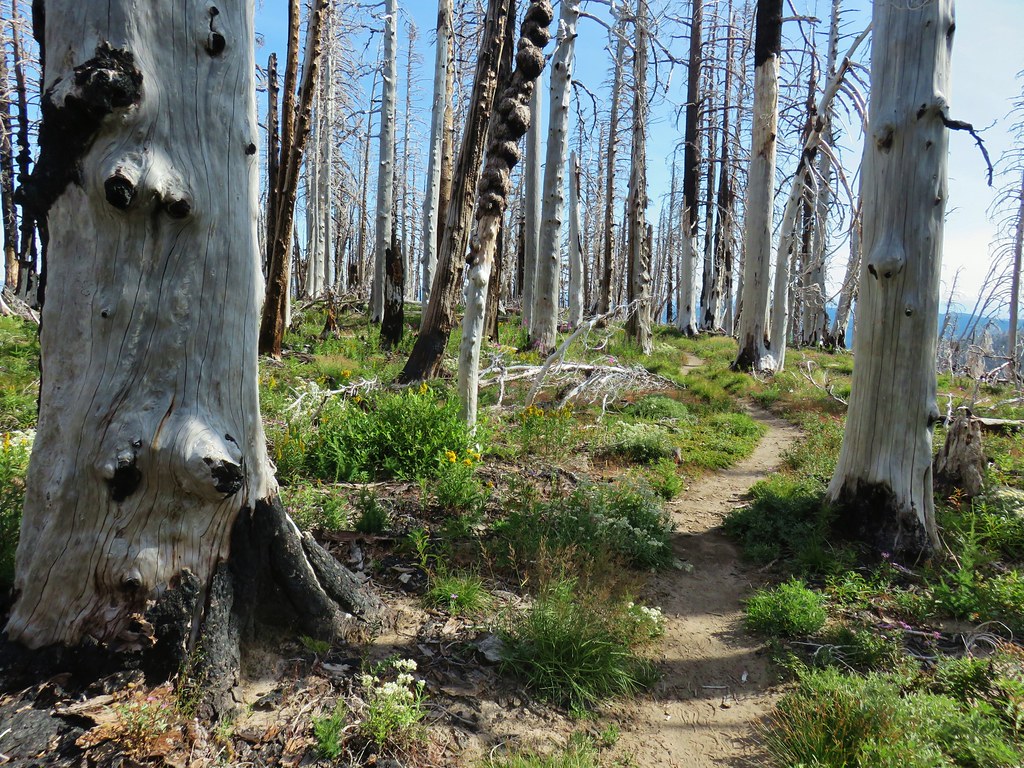











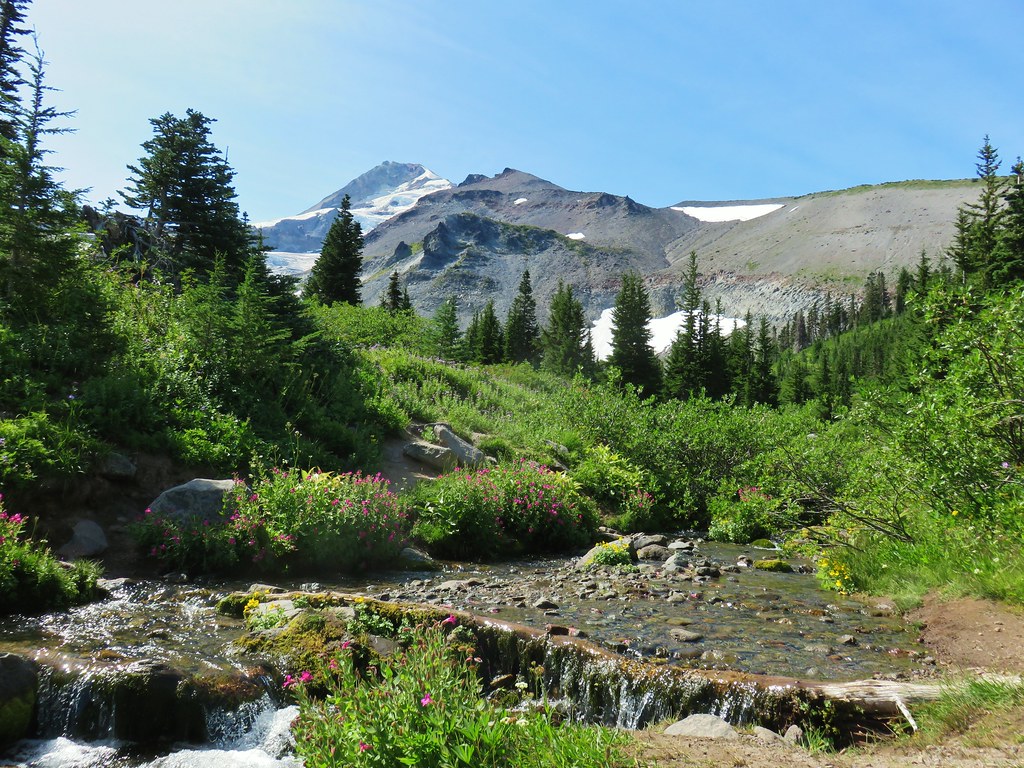

 Coe Glacier
Coe Glacier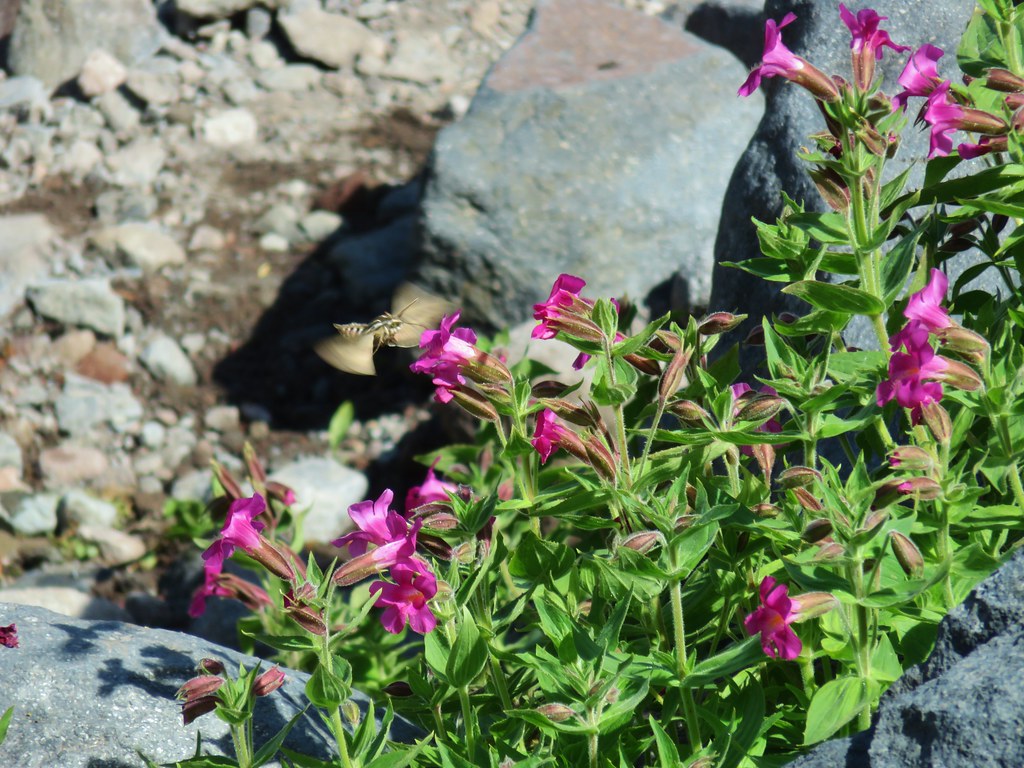

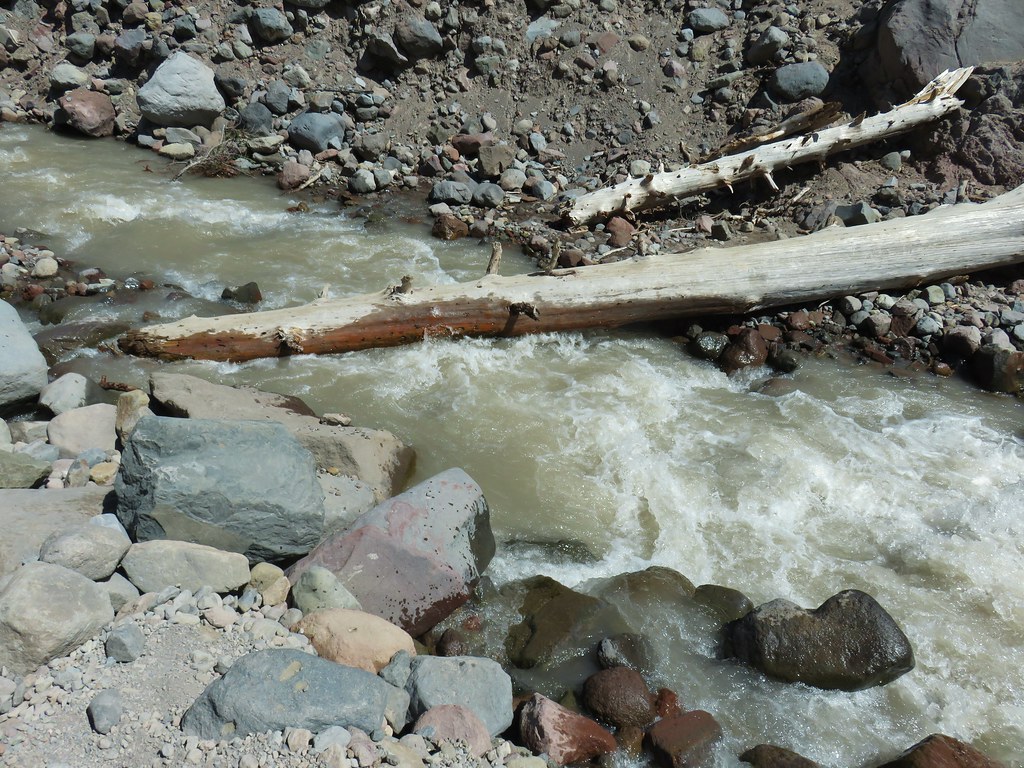


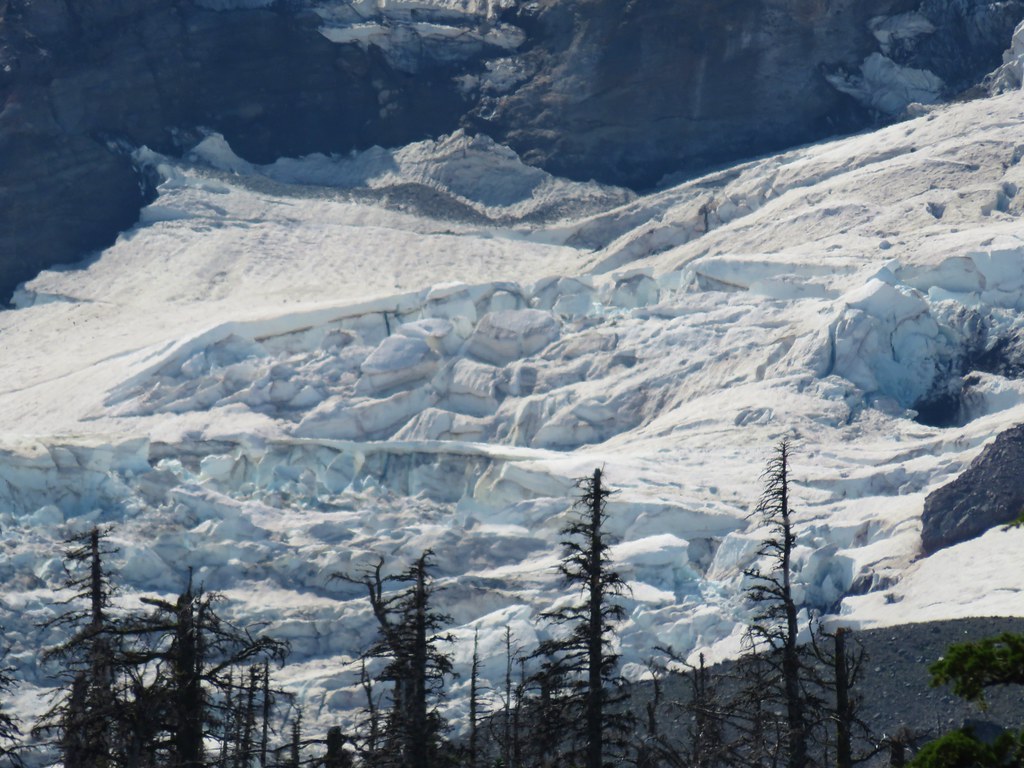
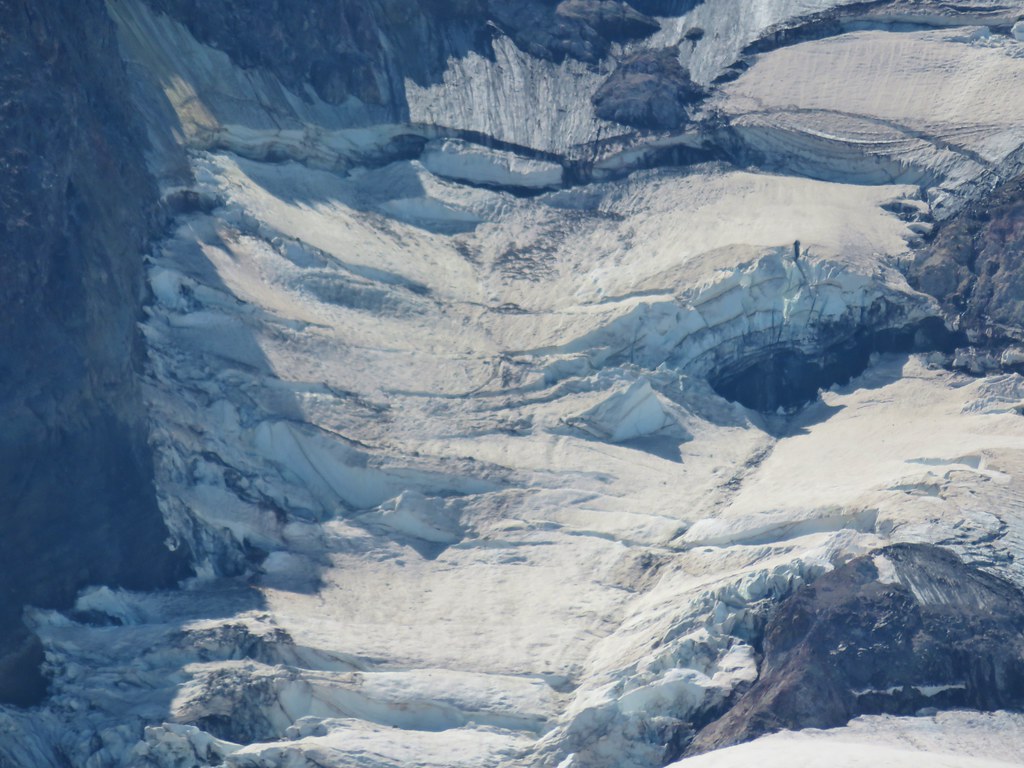

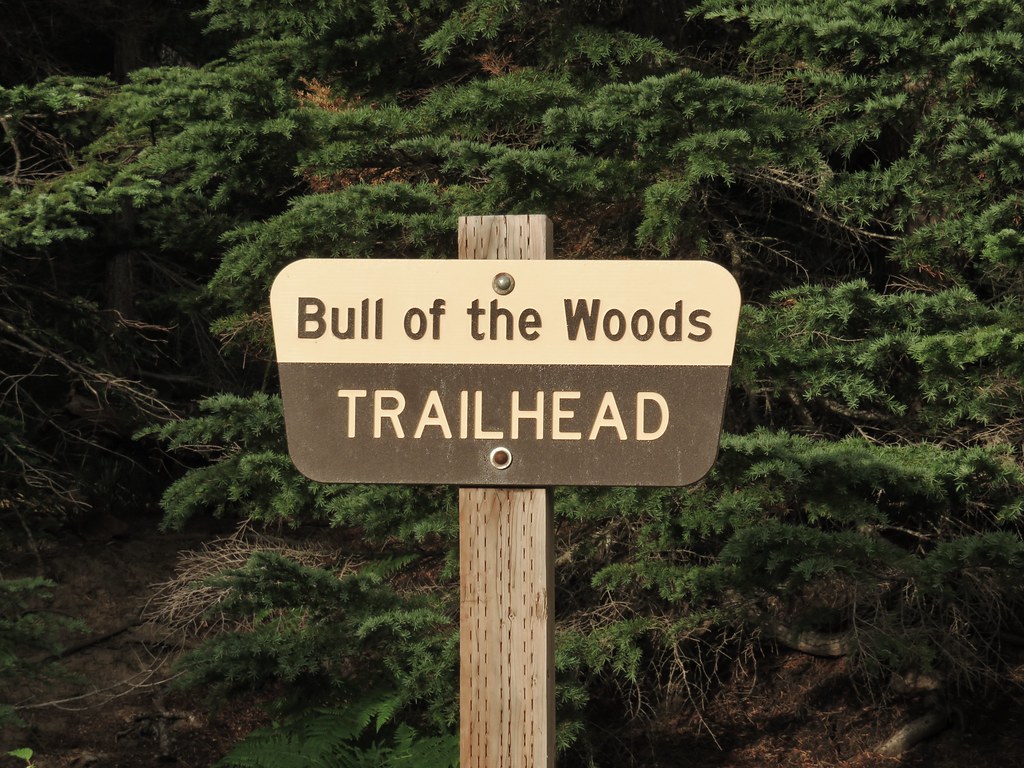

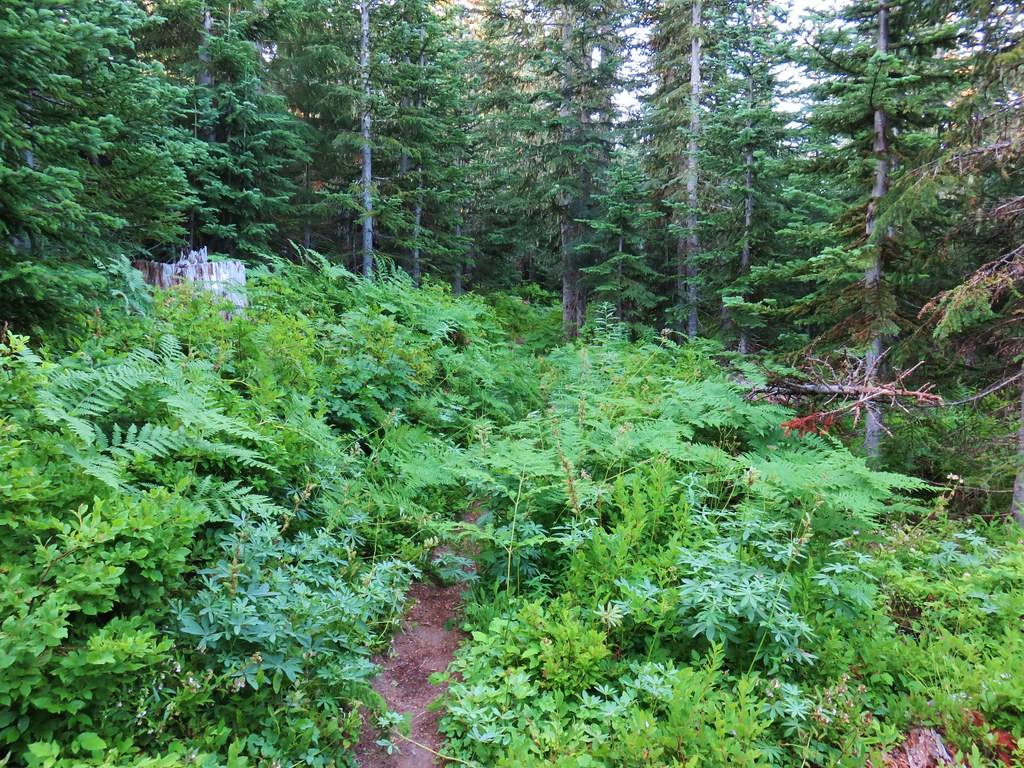
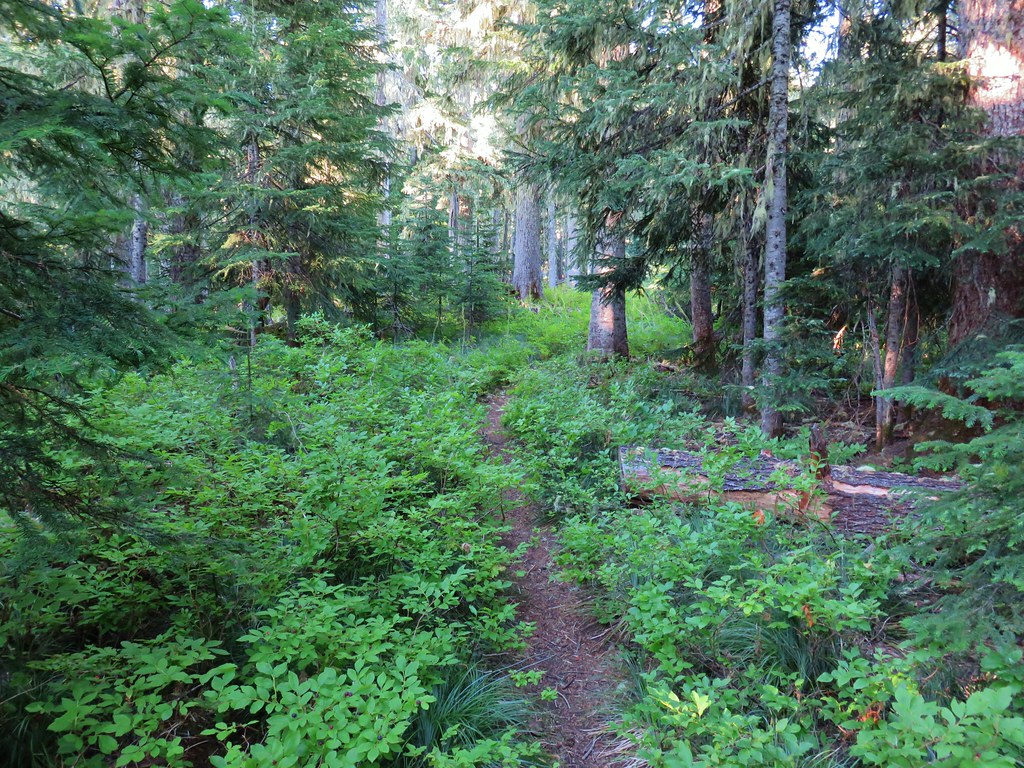








 Mt. Hood
Mt. Hood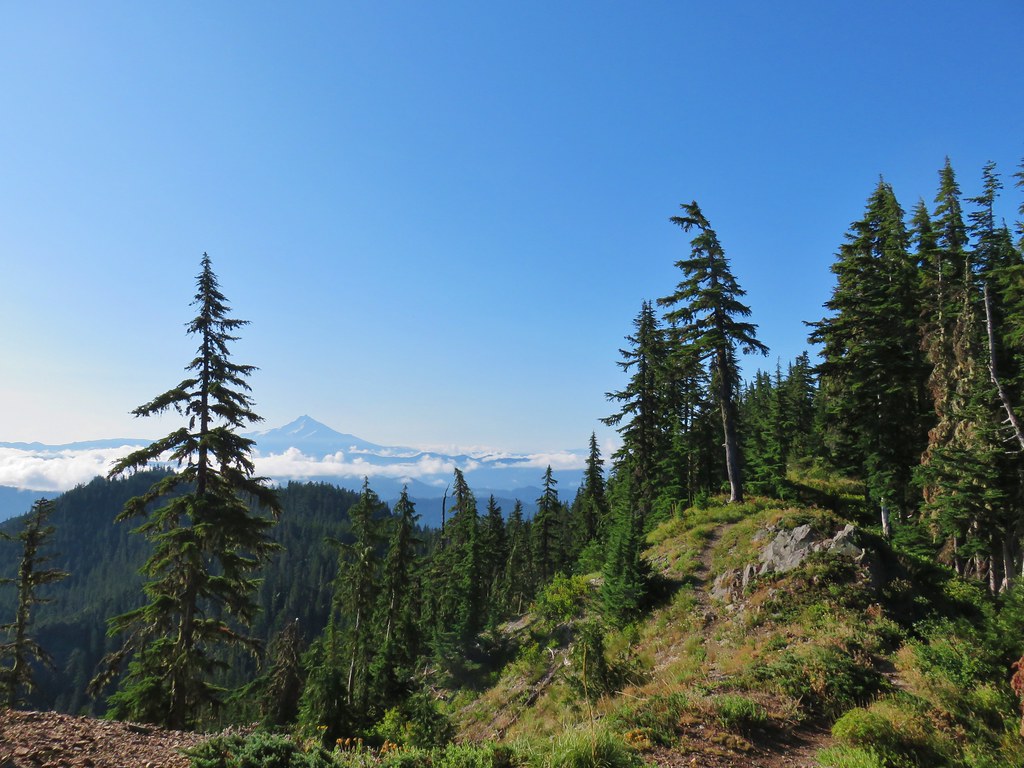 Mt. Jefferson
Mt. Jefferson
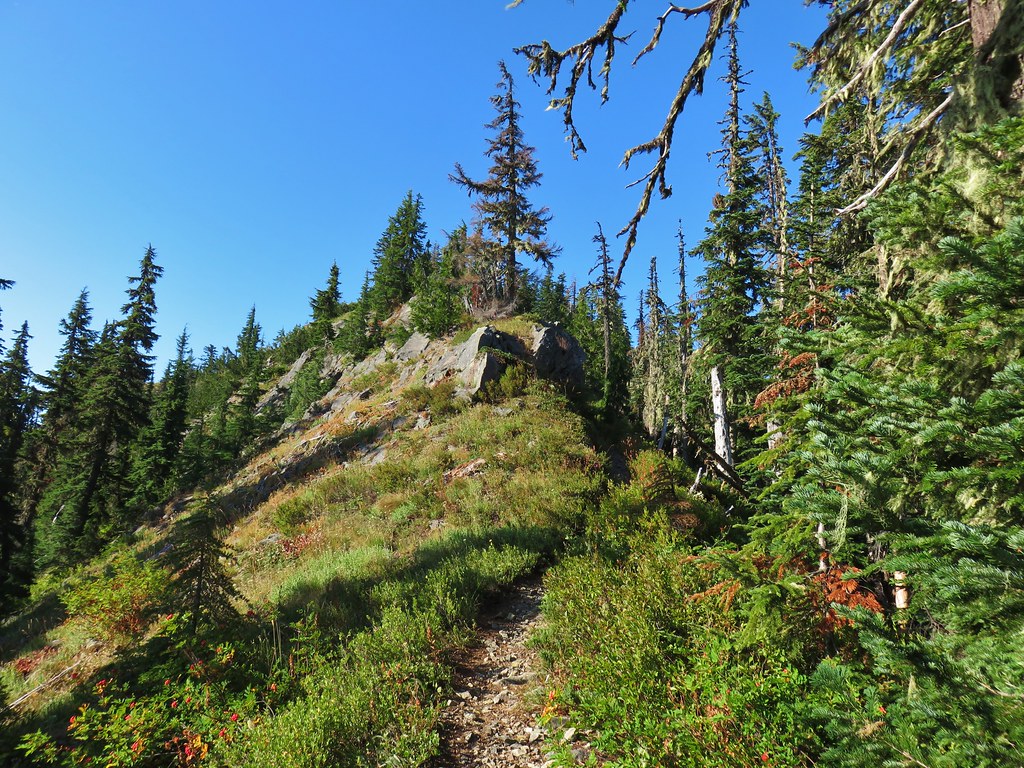
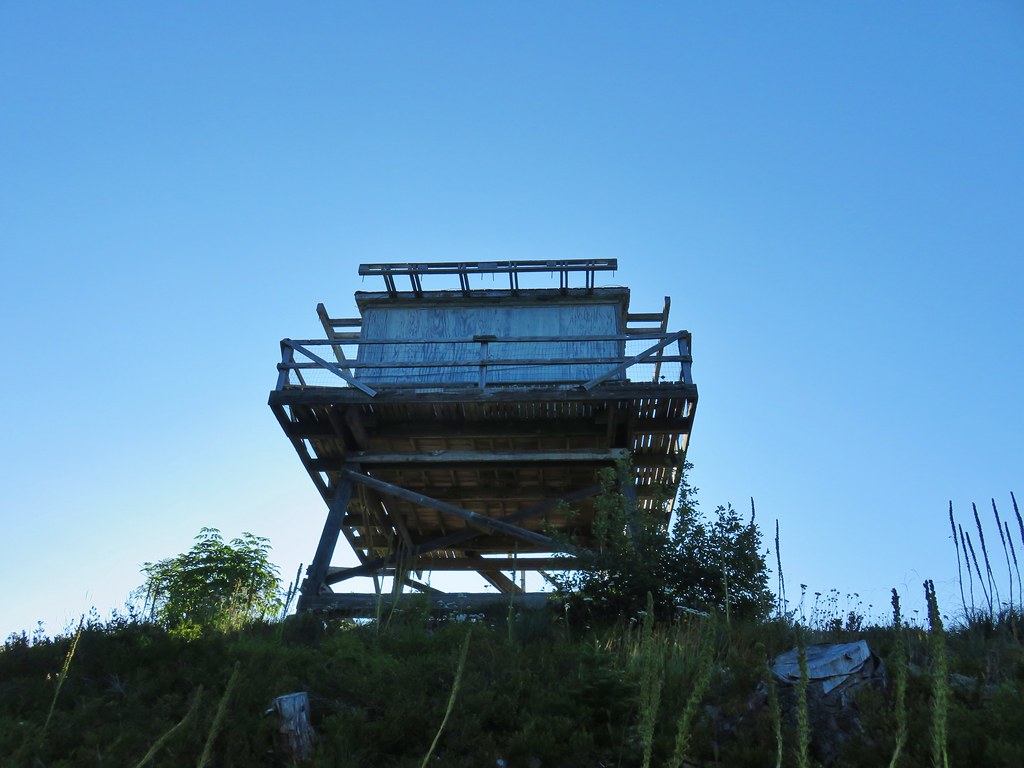
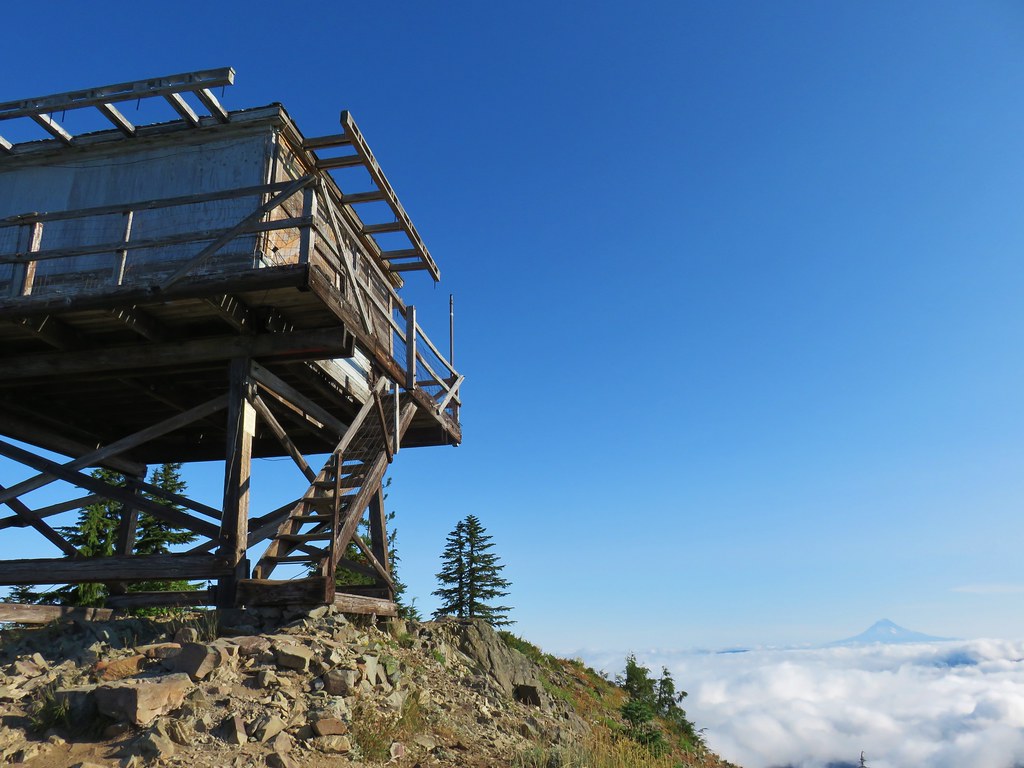


 Three Fingered Jack
Three Fingered Jack Mt. Washington and the Three Sisters
Mt. Washington and the Three Sisters

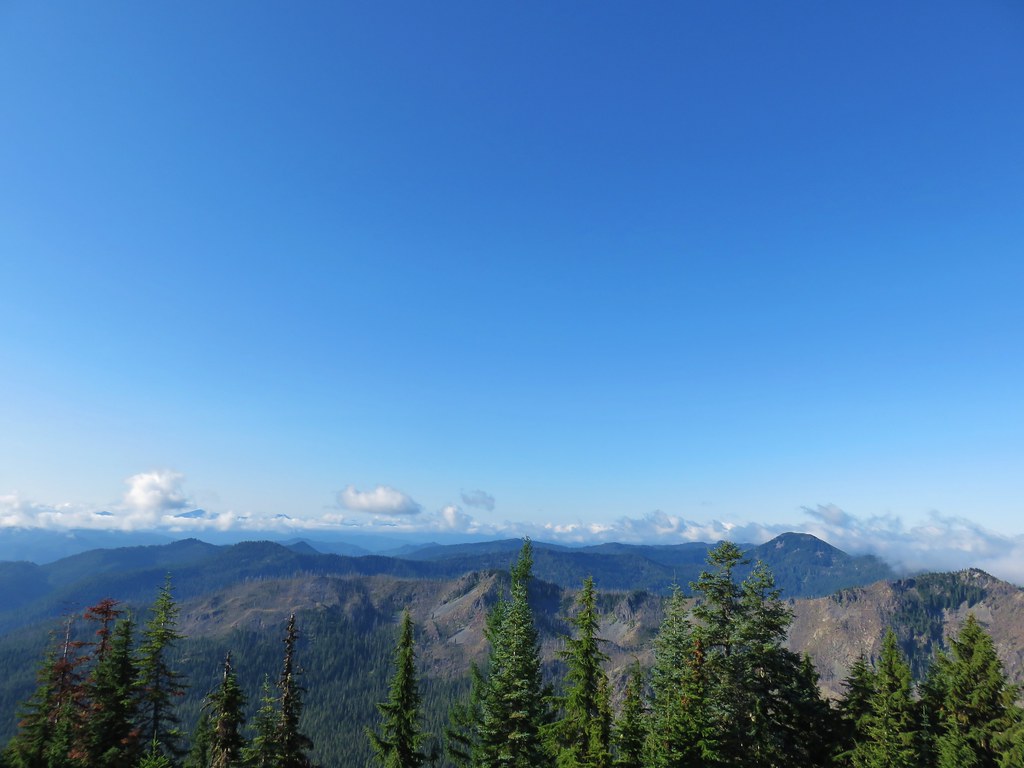

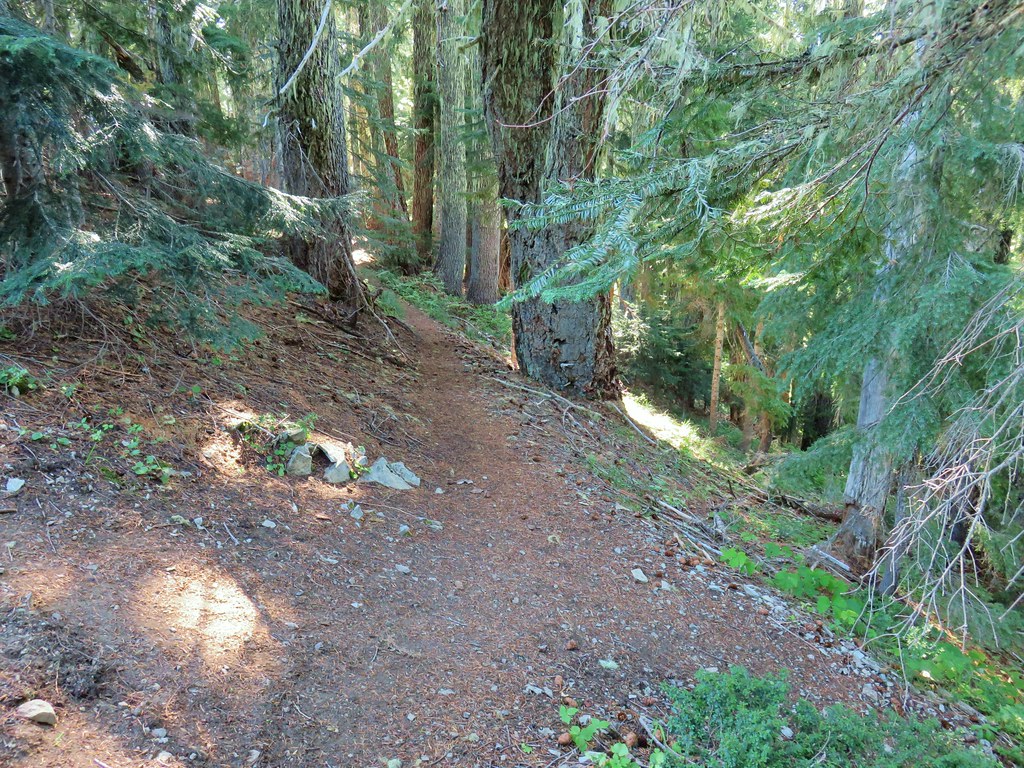 Bull of the Woods Trail ending at the Mother Lode Trail.
Bull of the Woods Trail ending at the Mother Lode Trail.







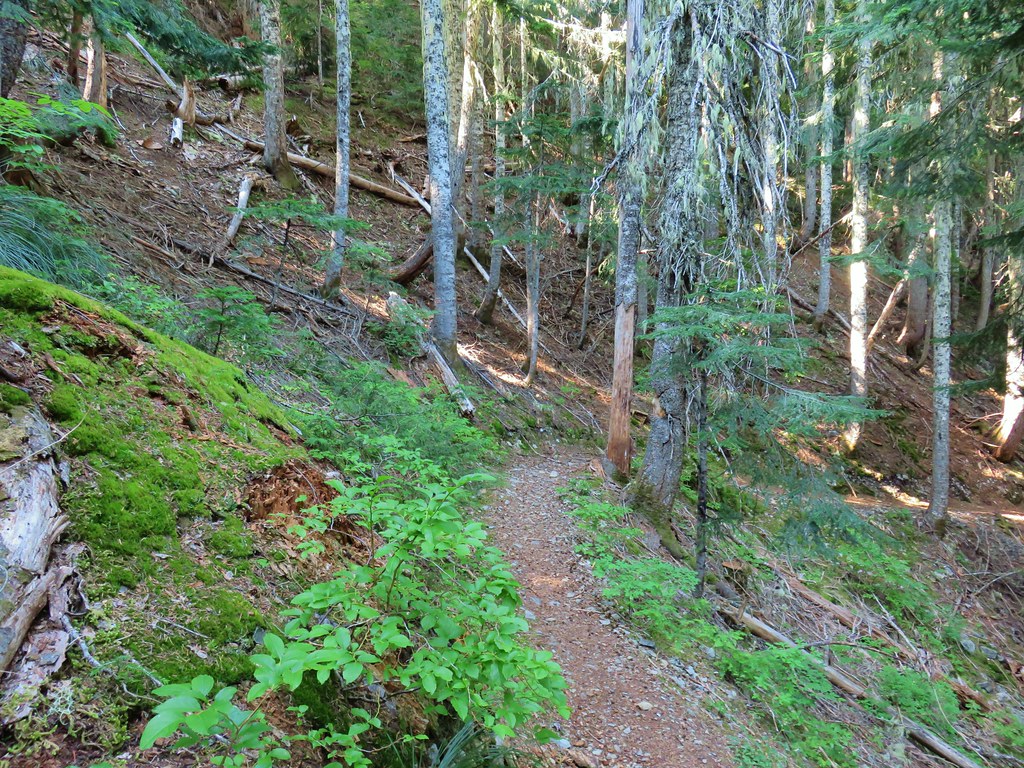
 First look at Pansy Lake.
First look at Pansy Lake.